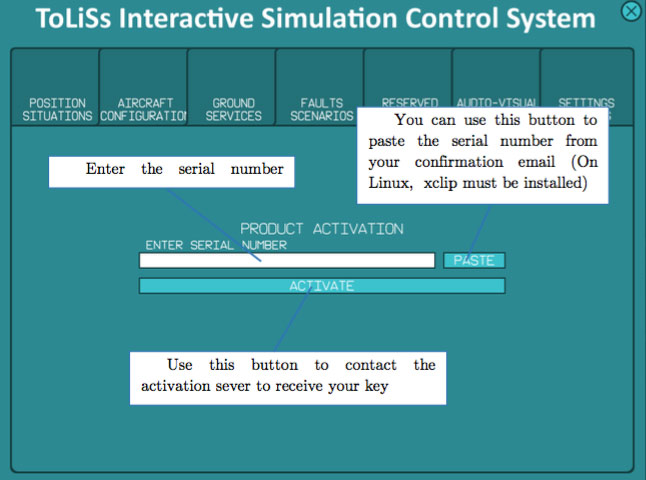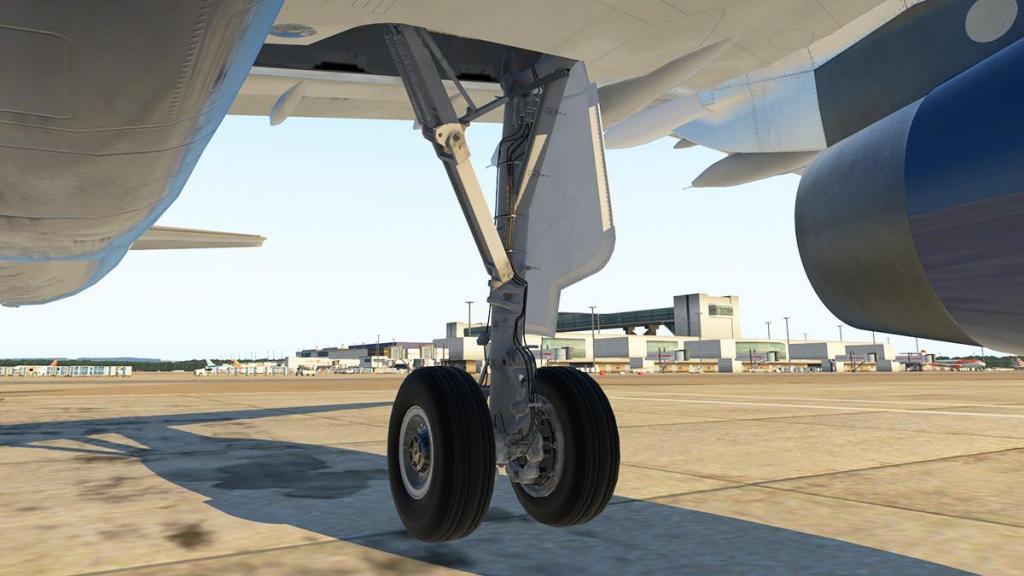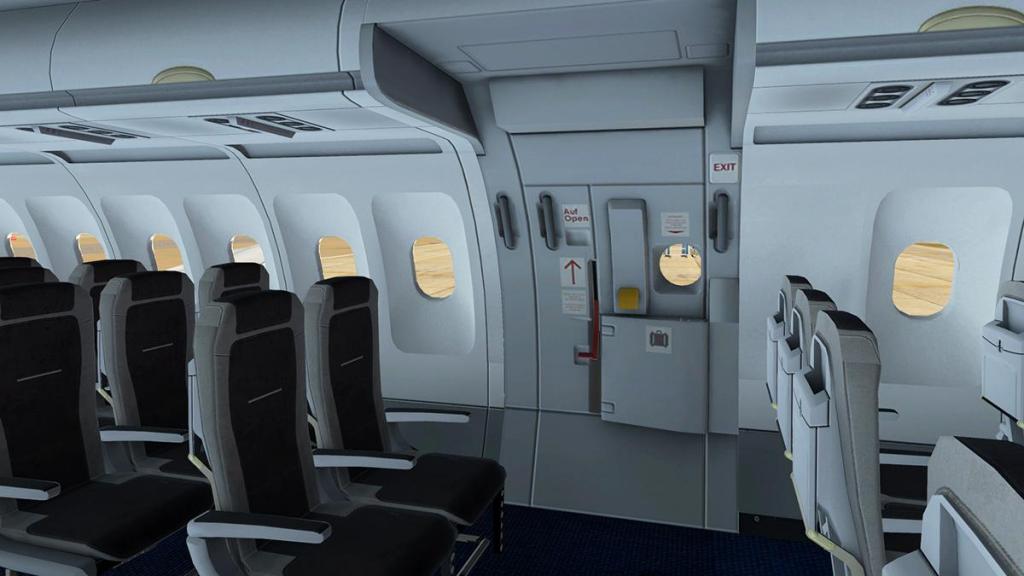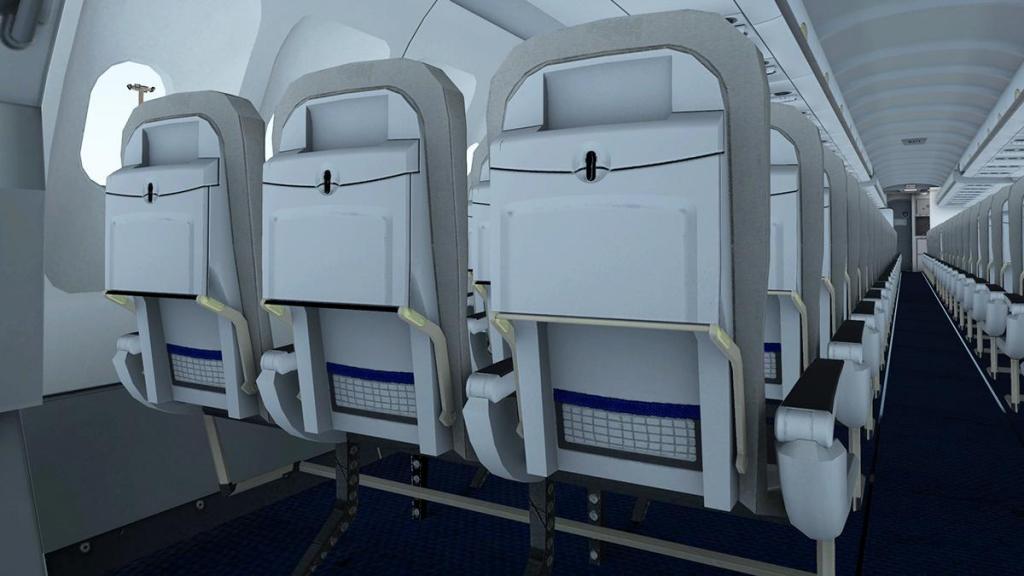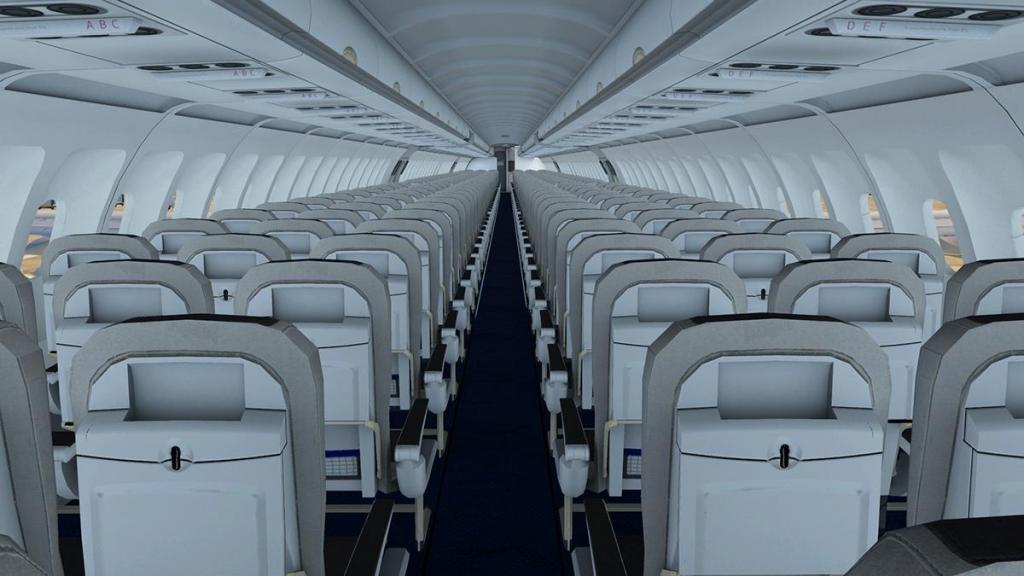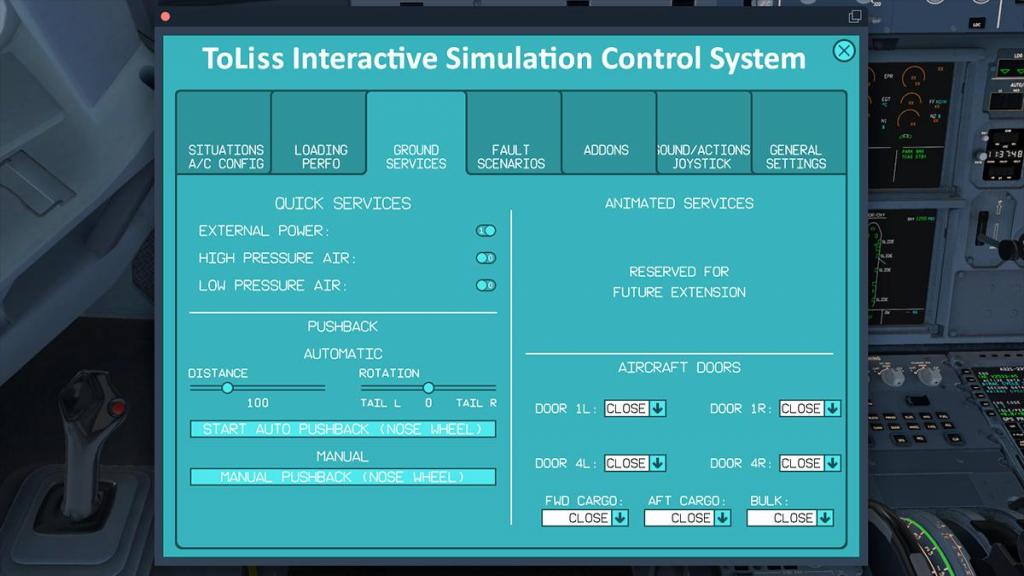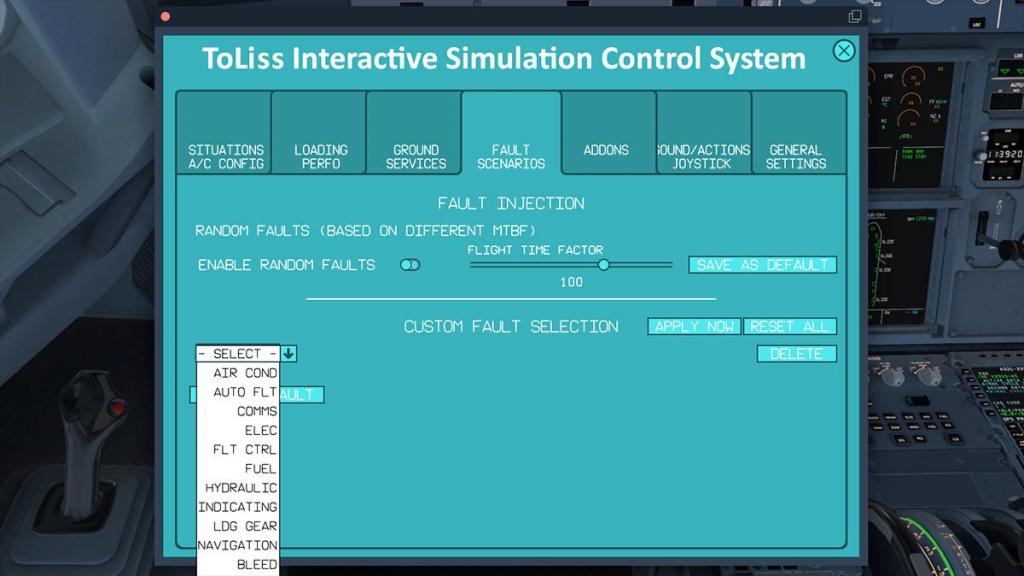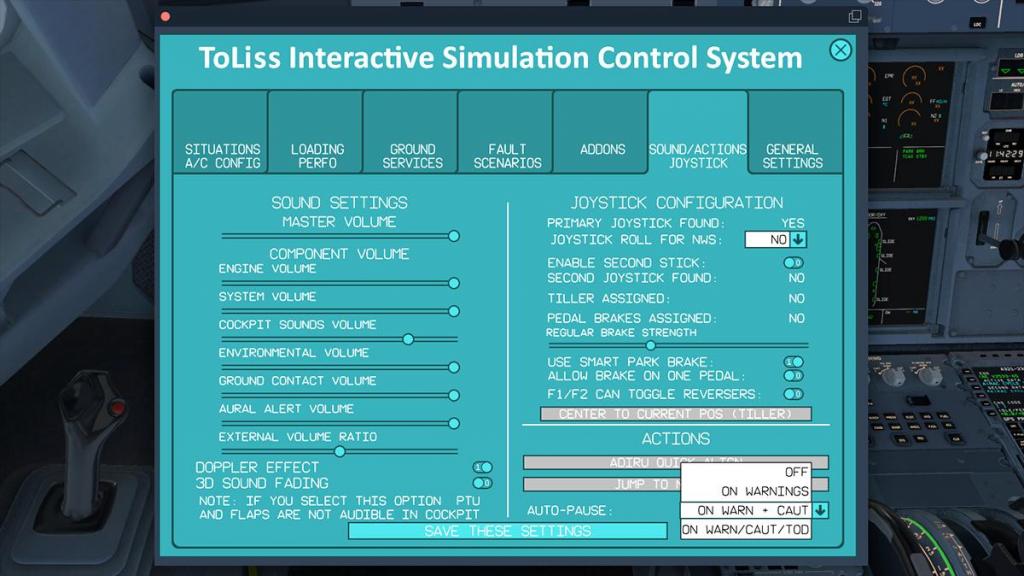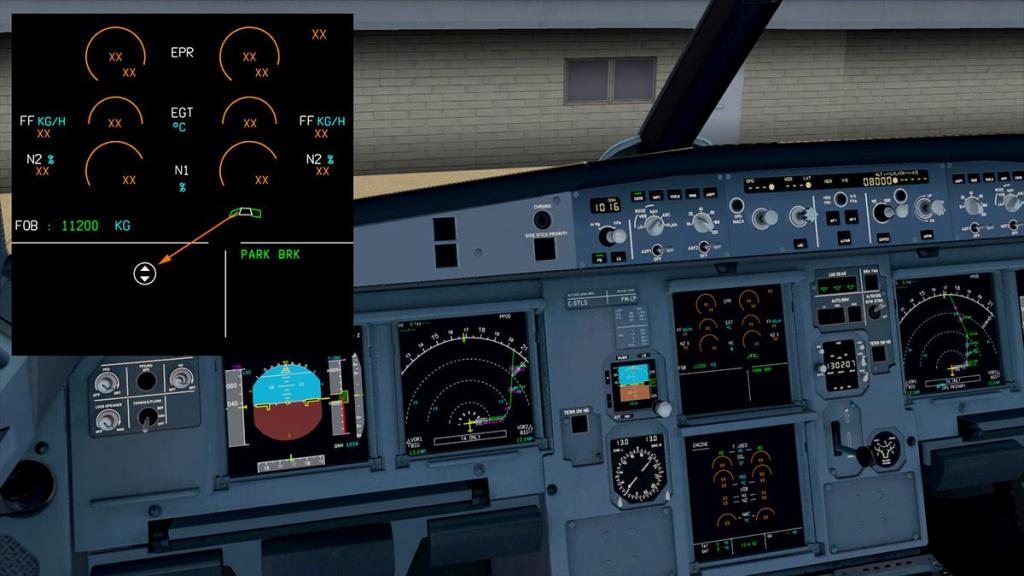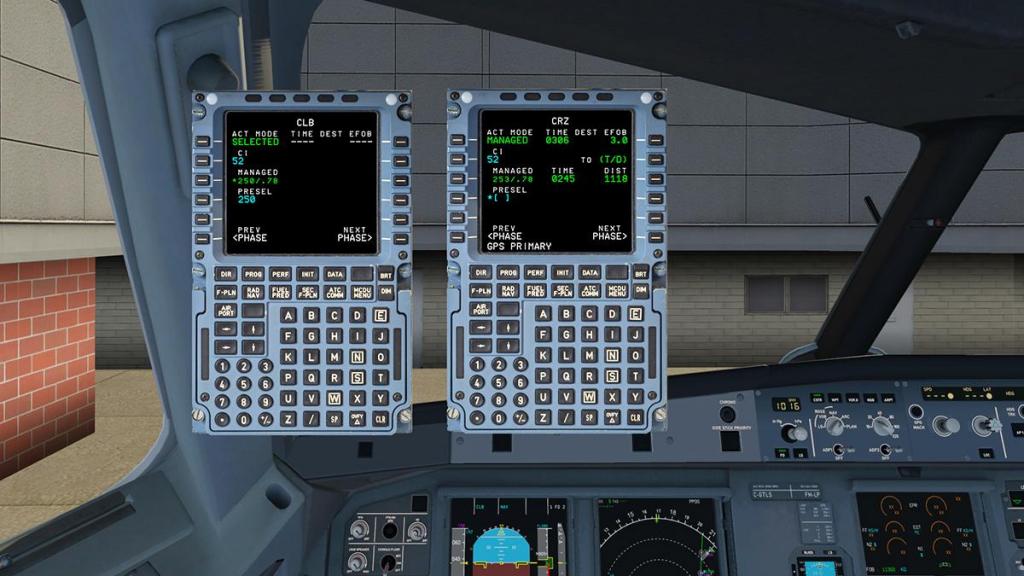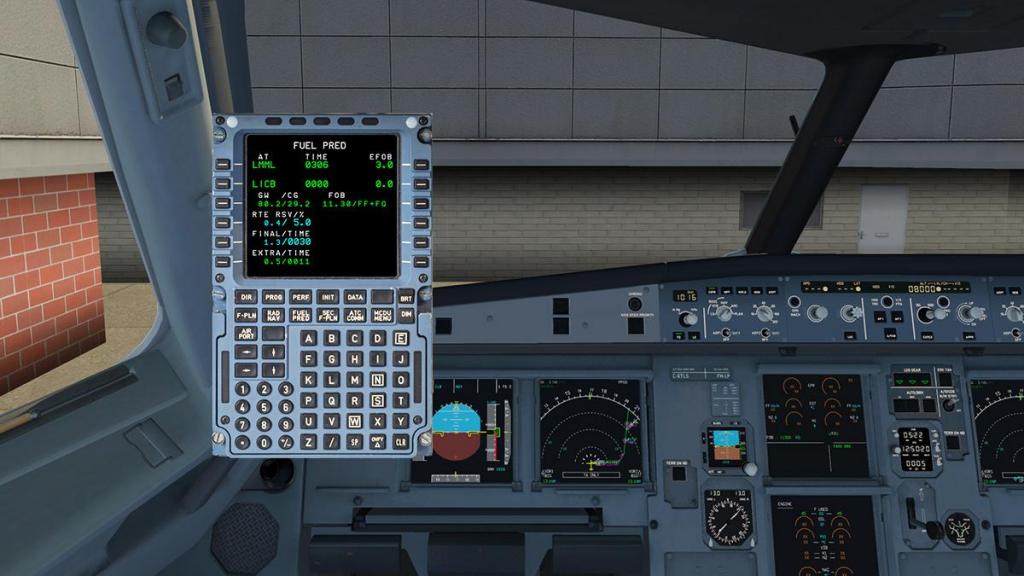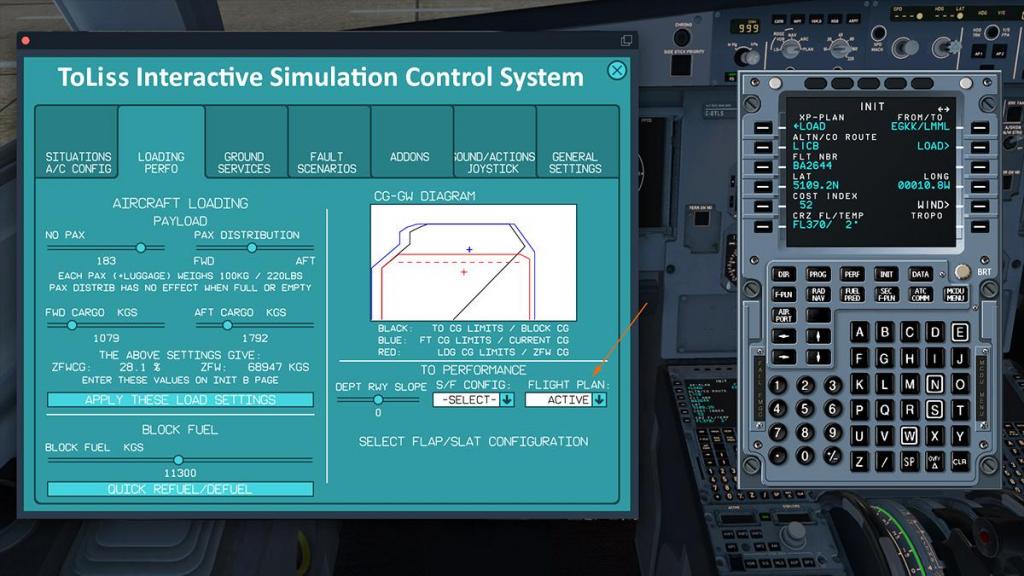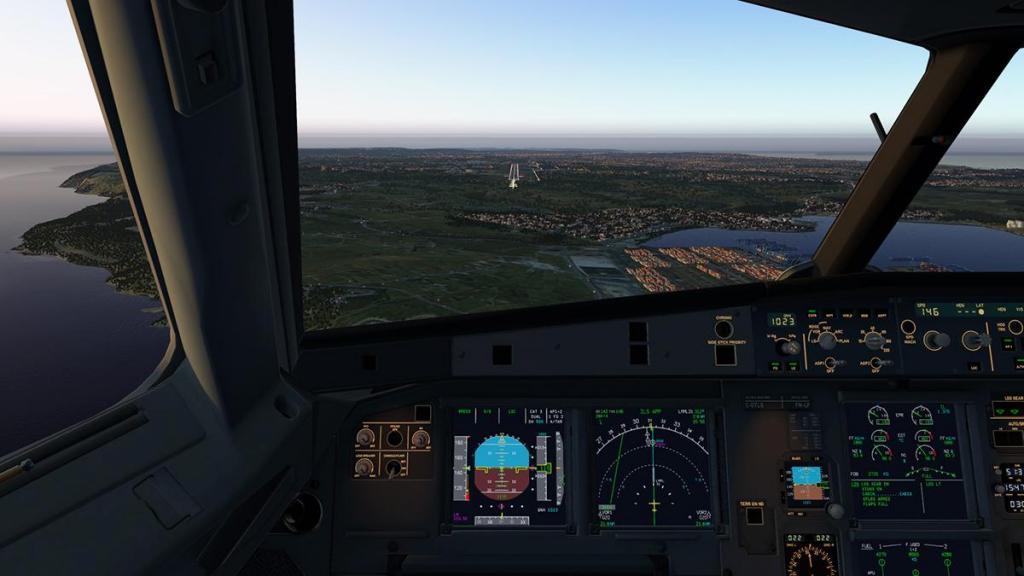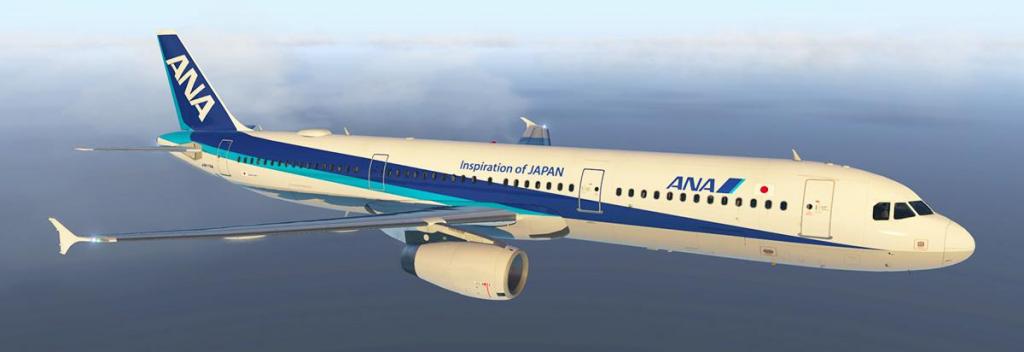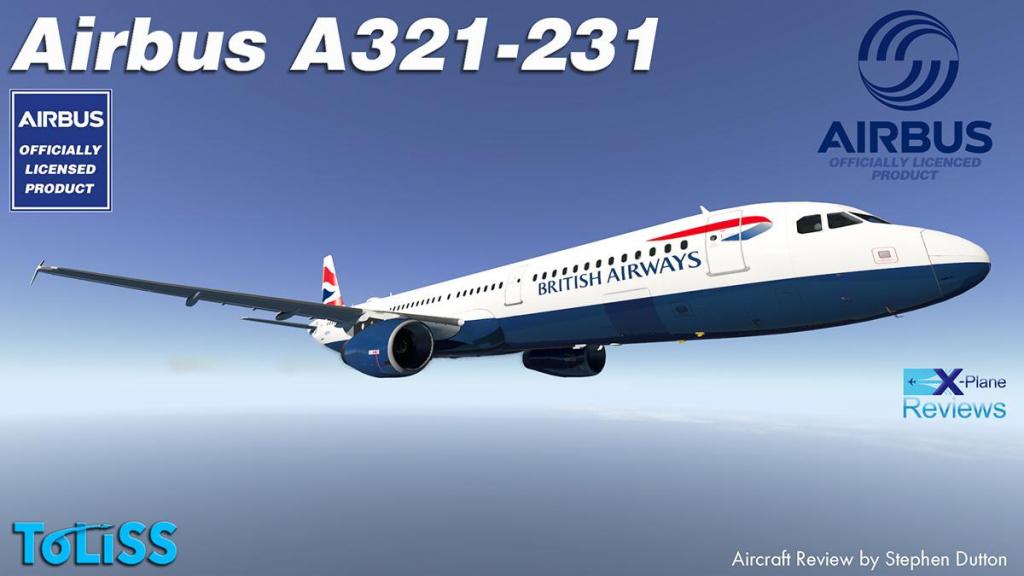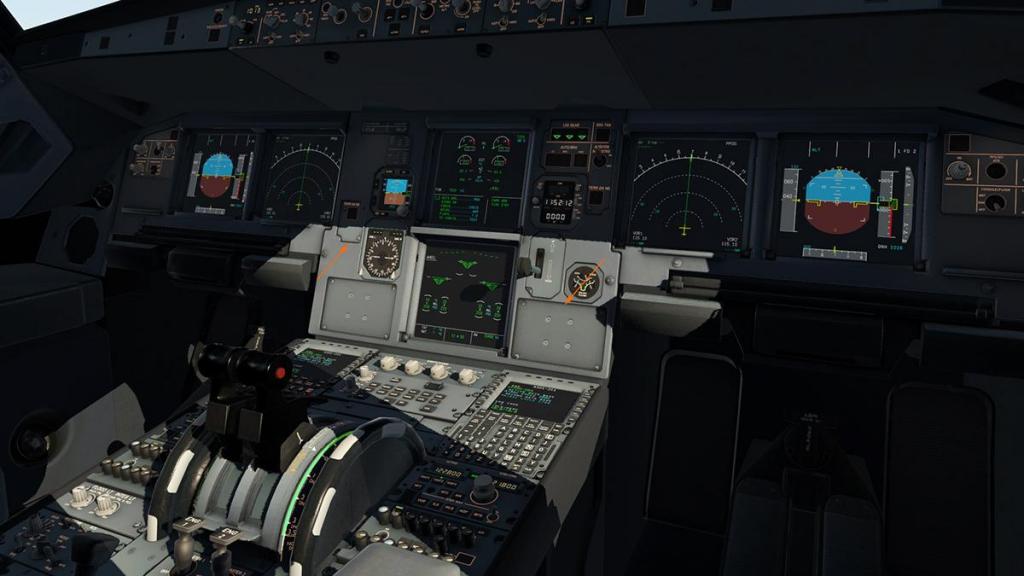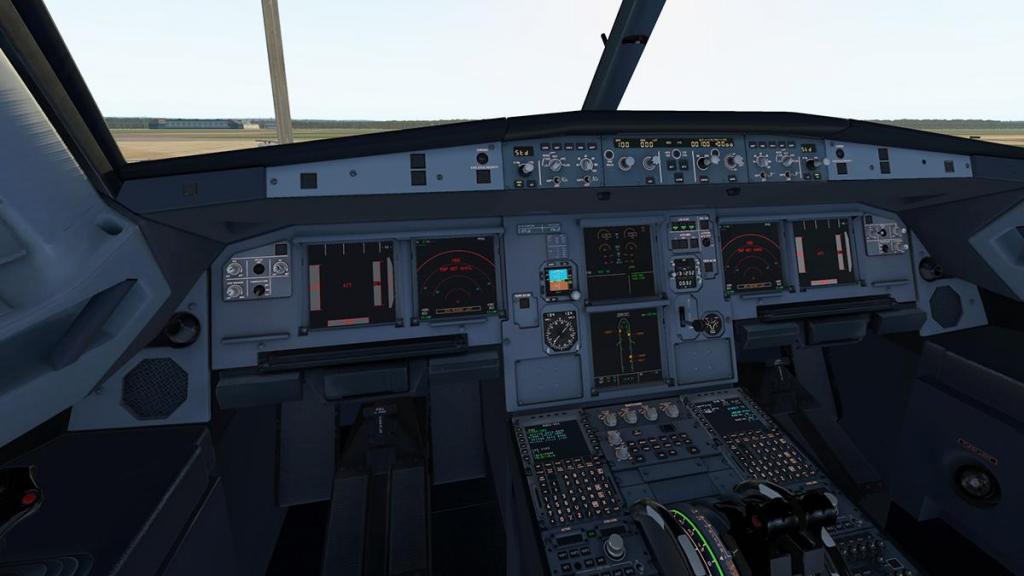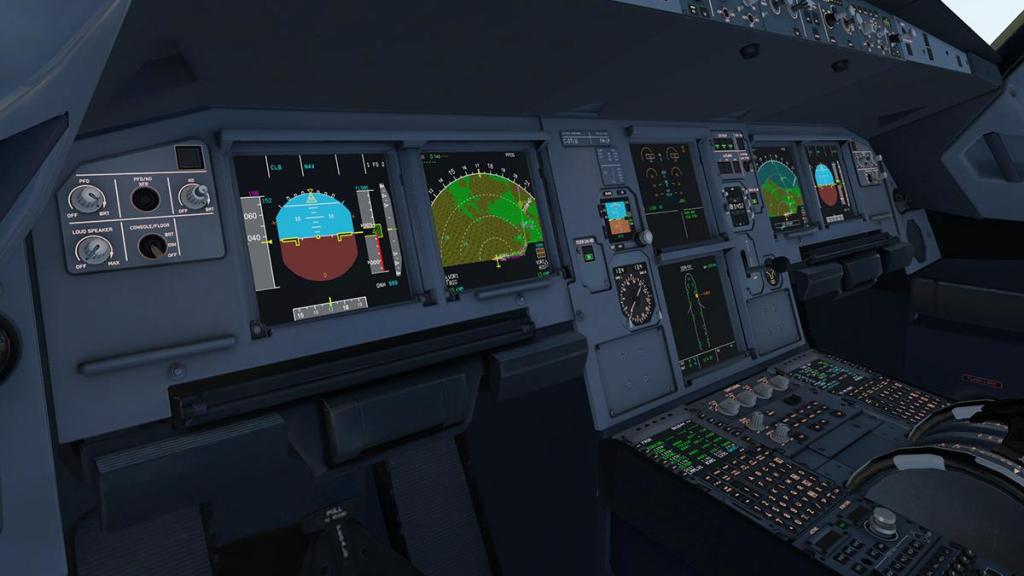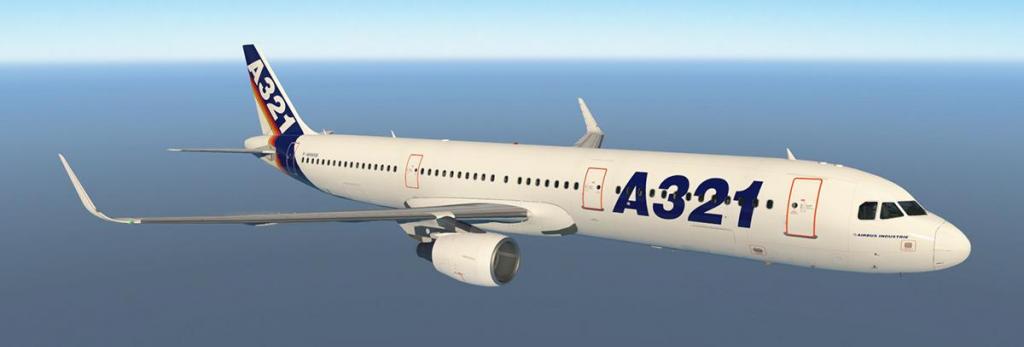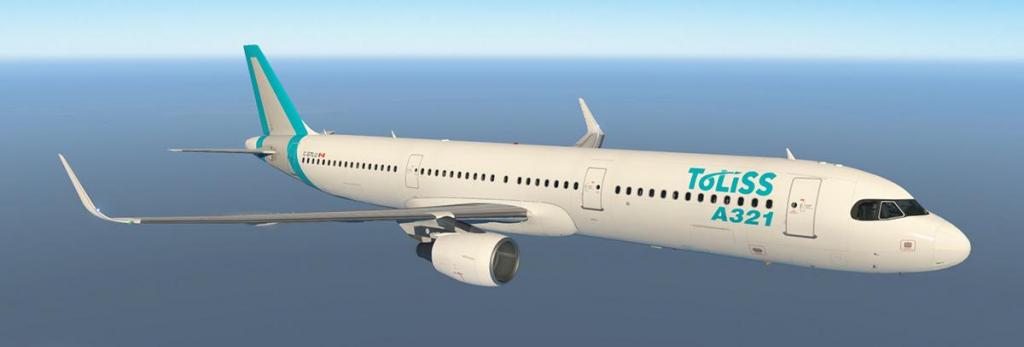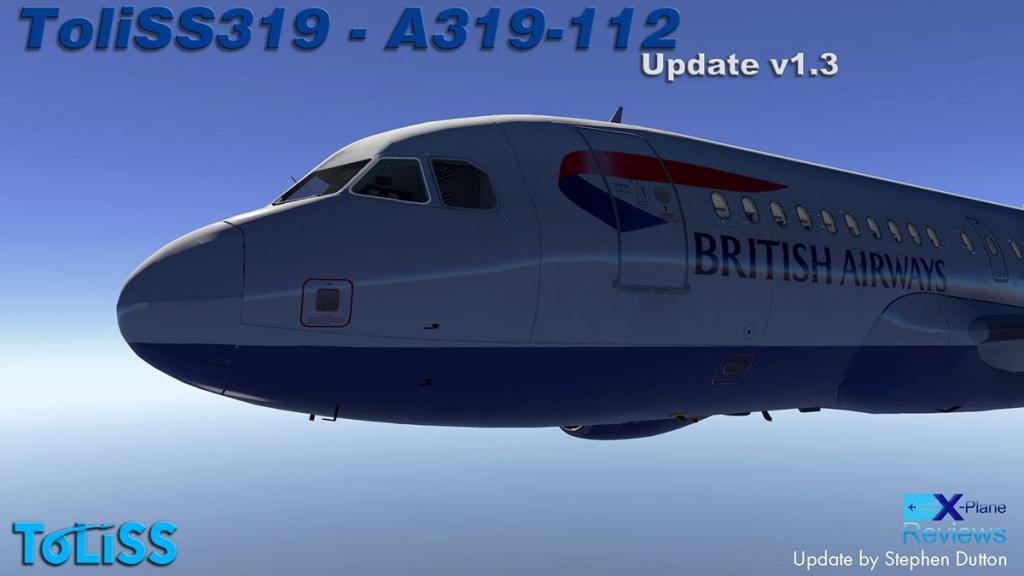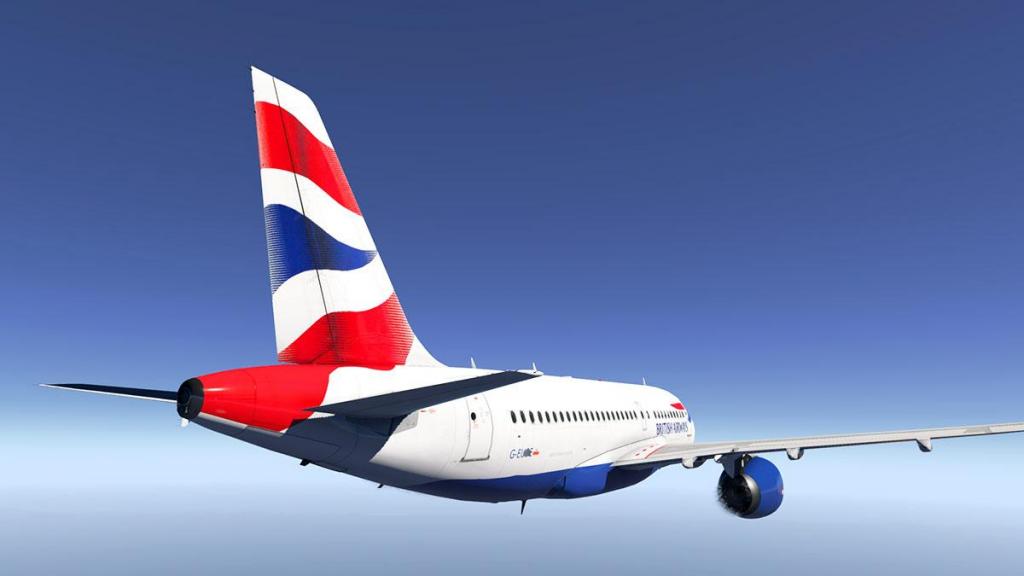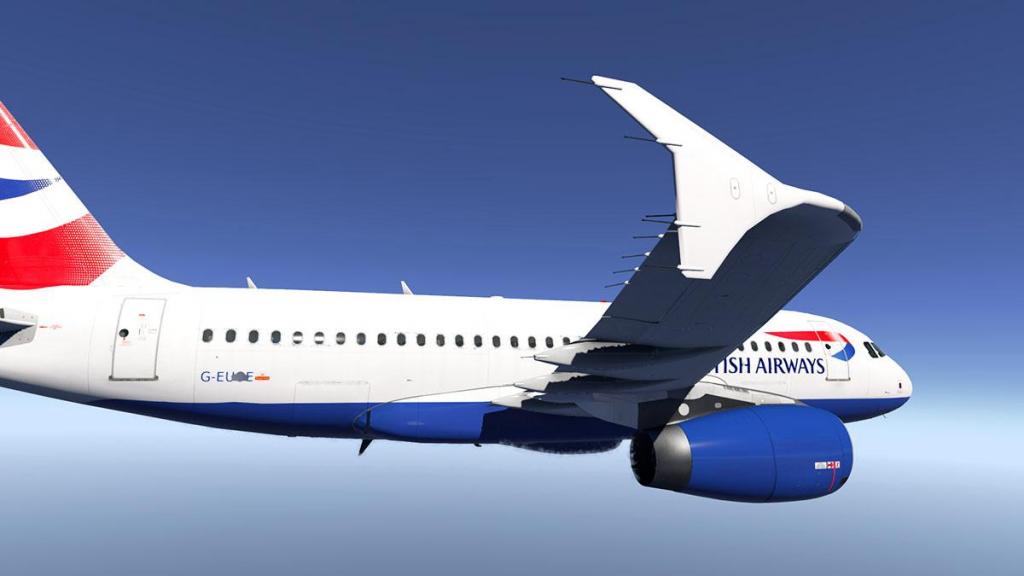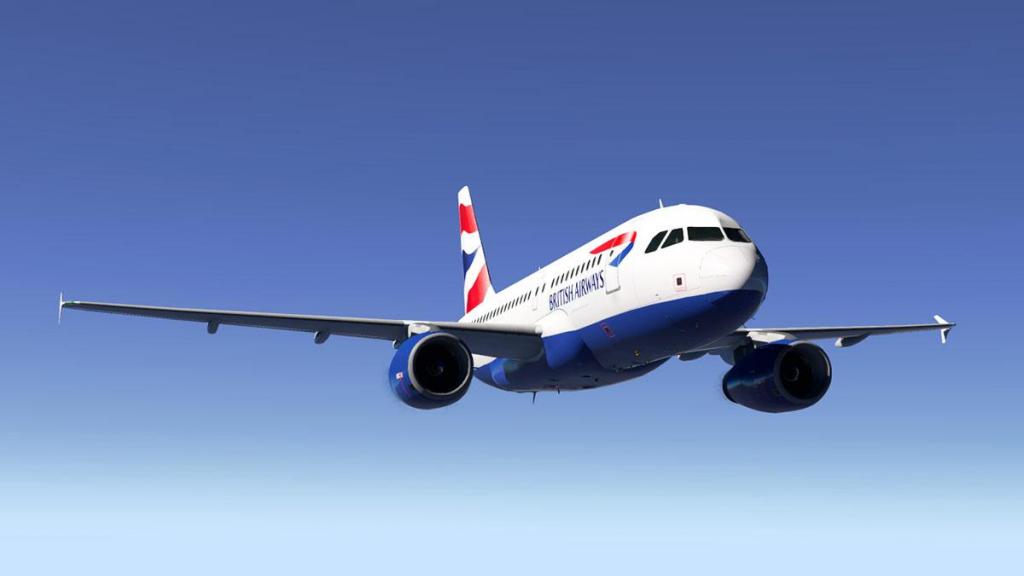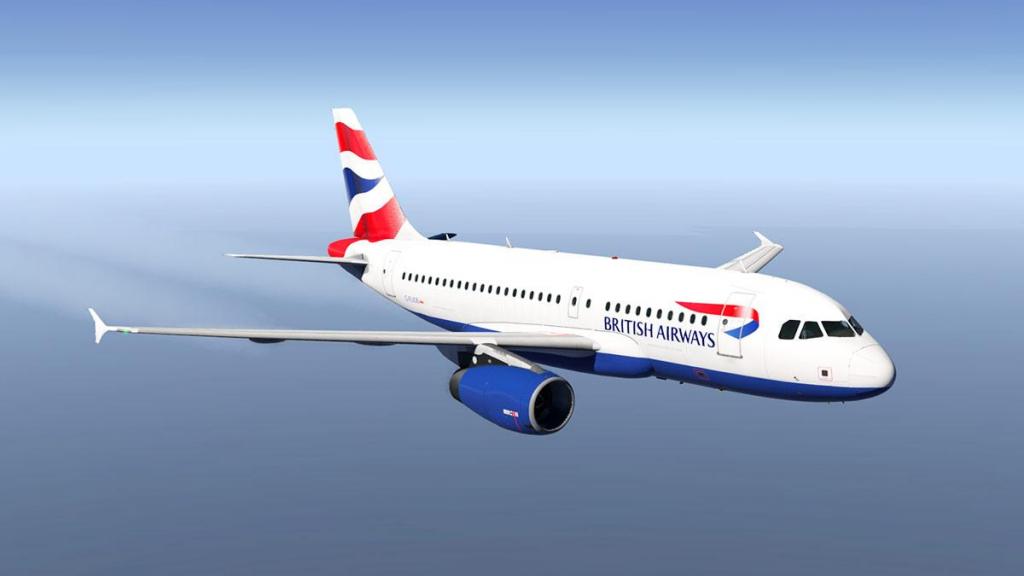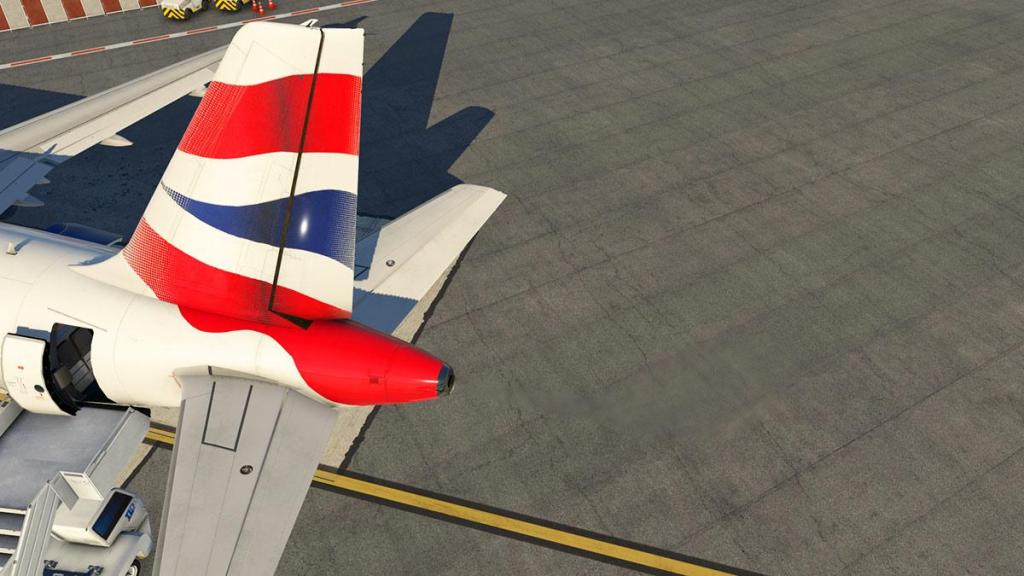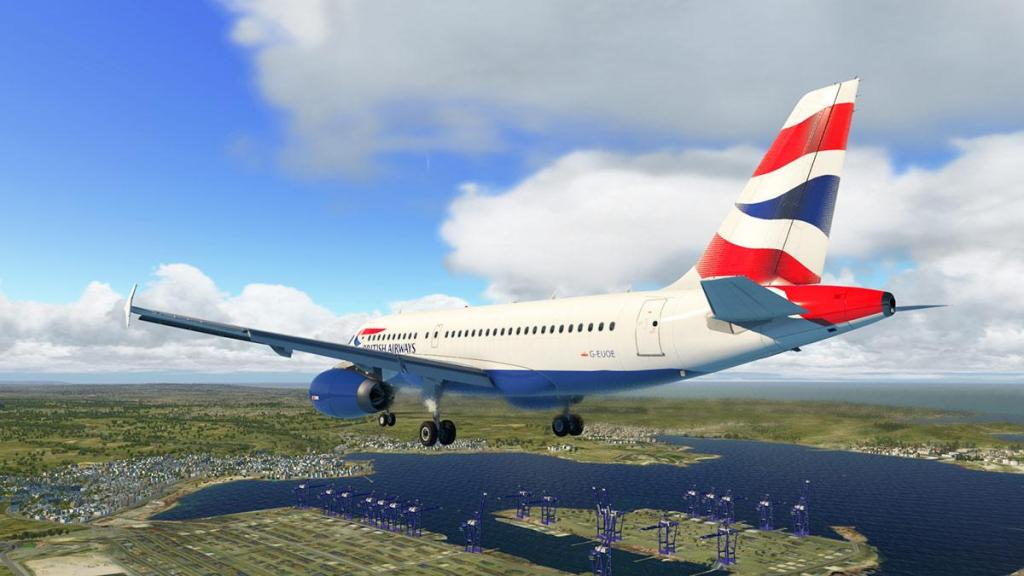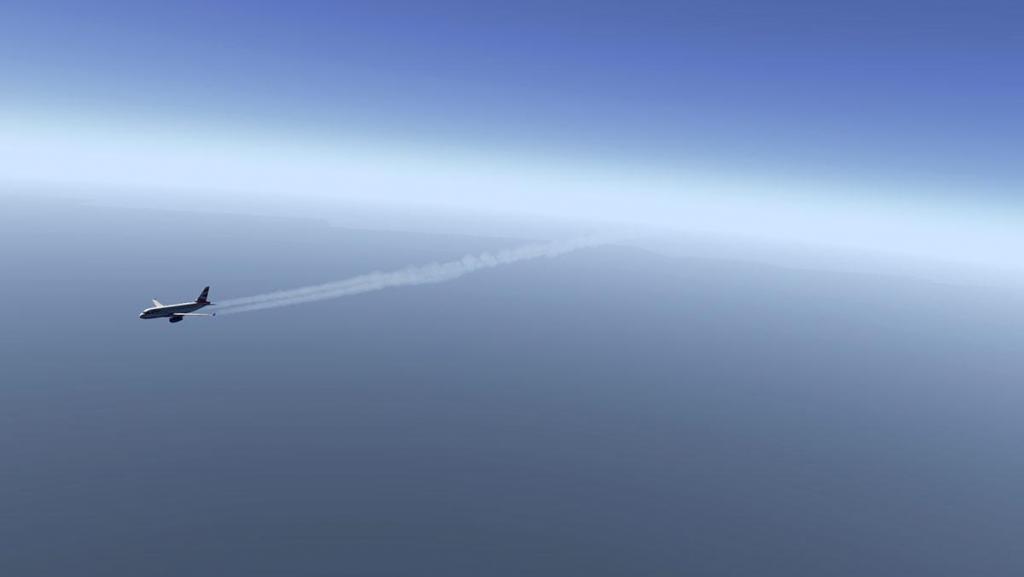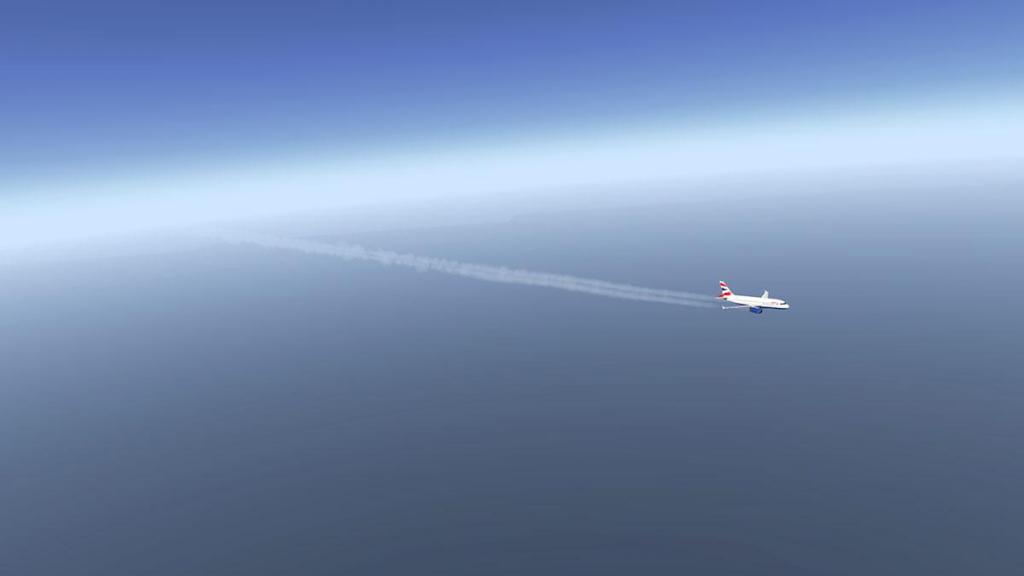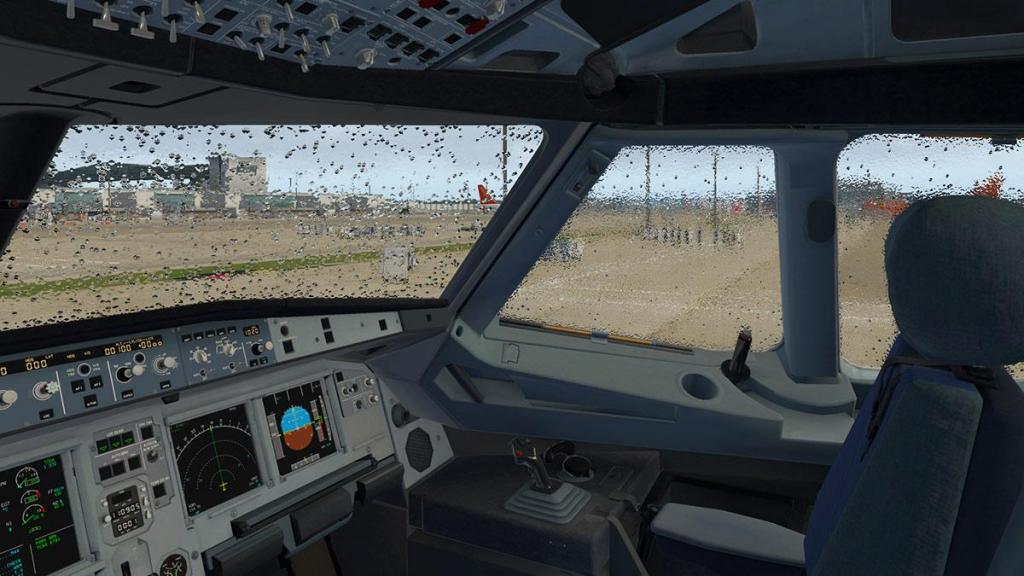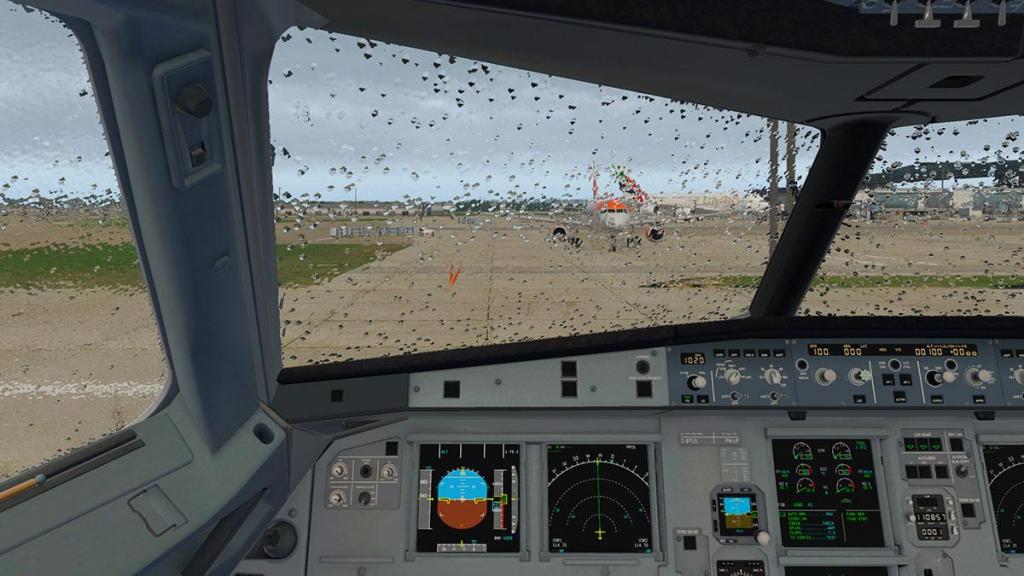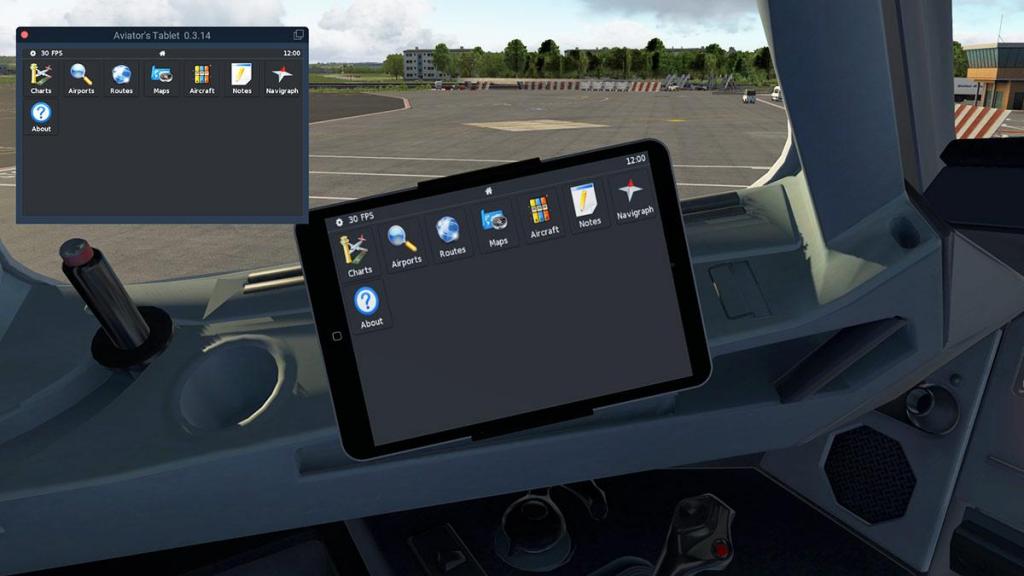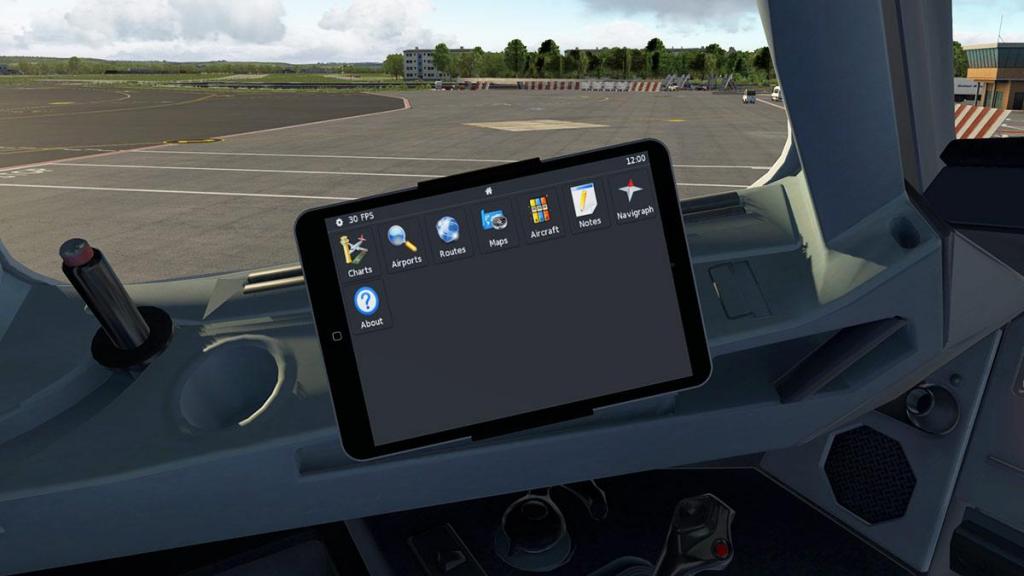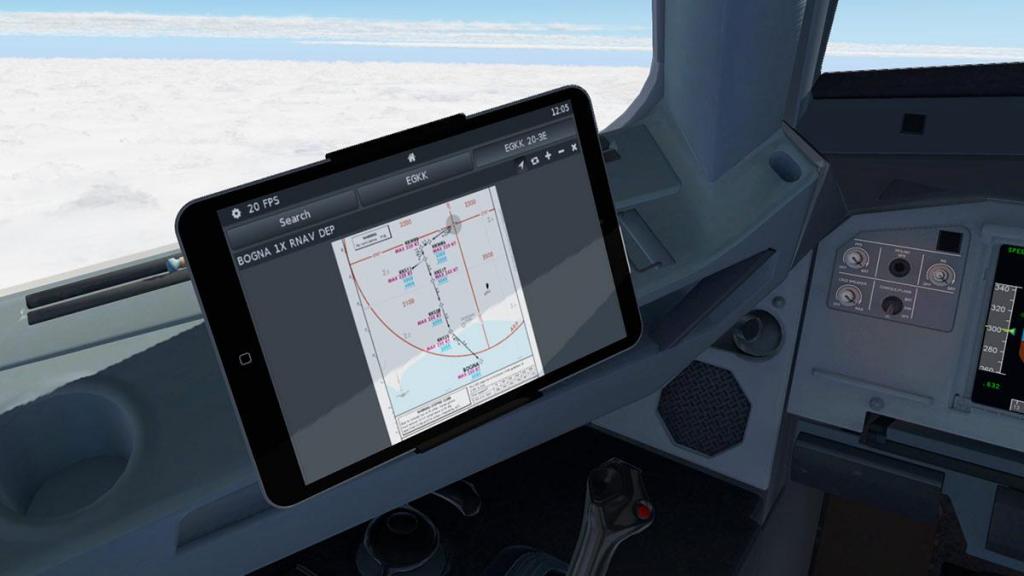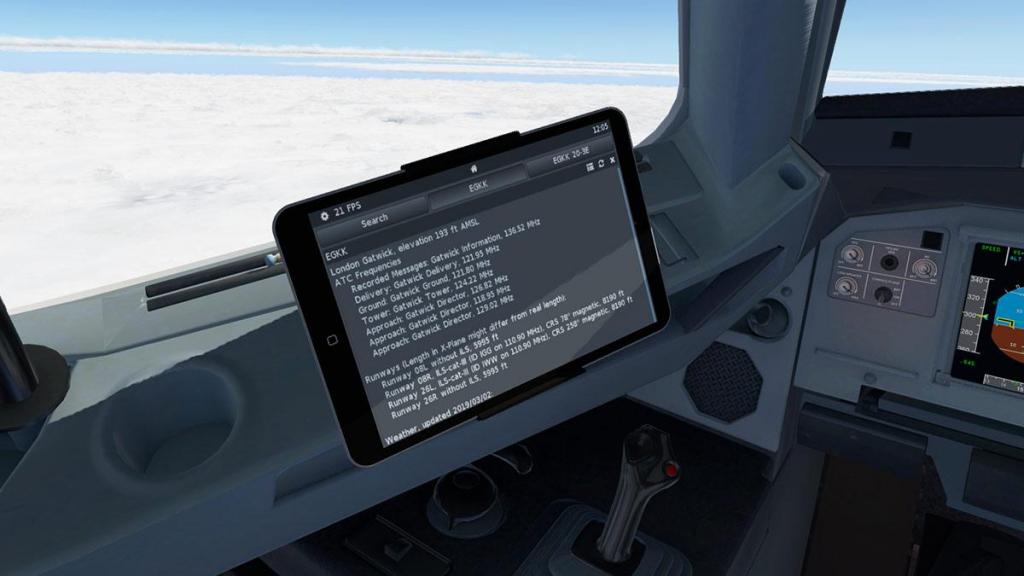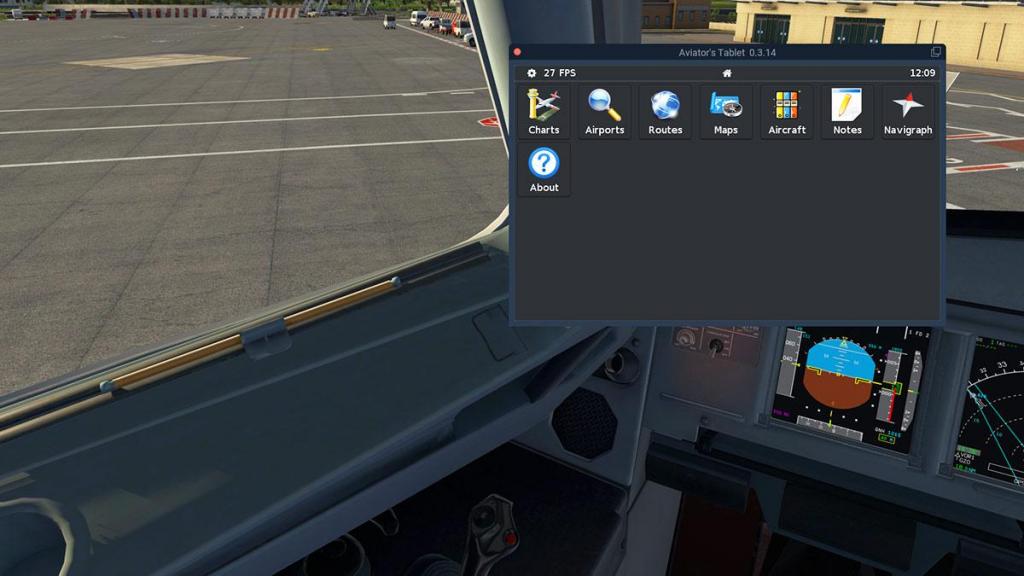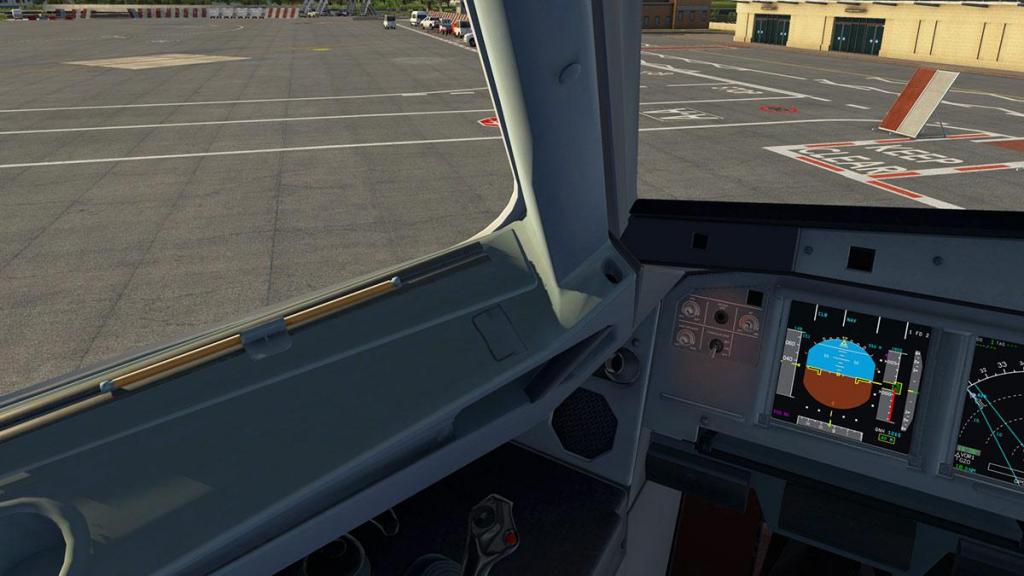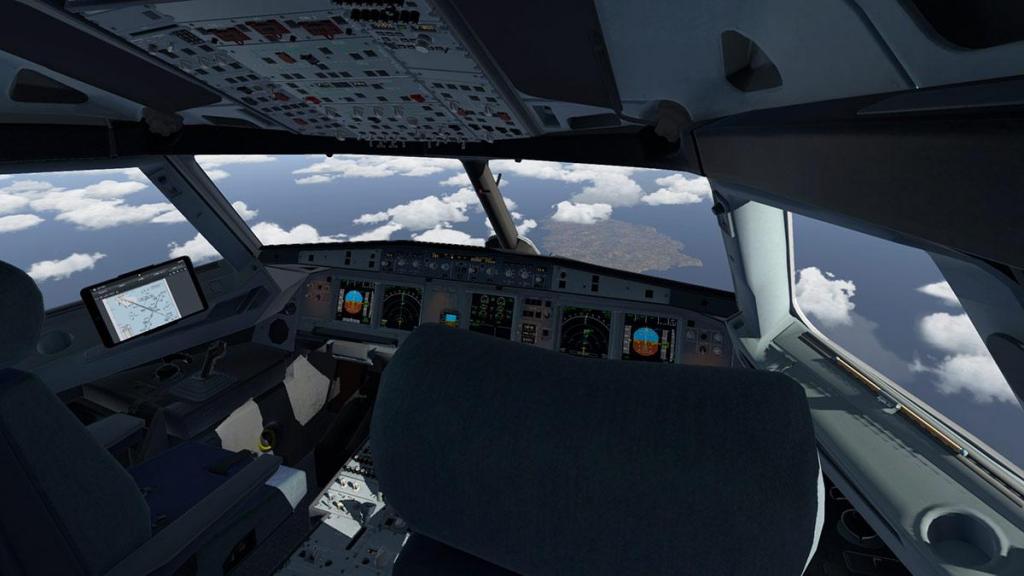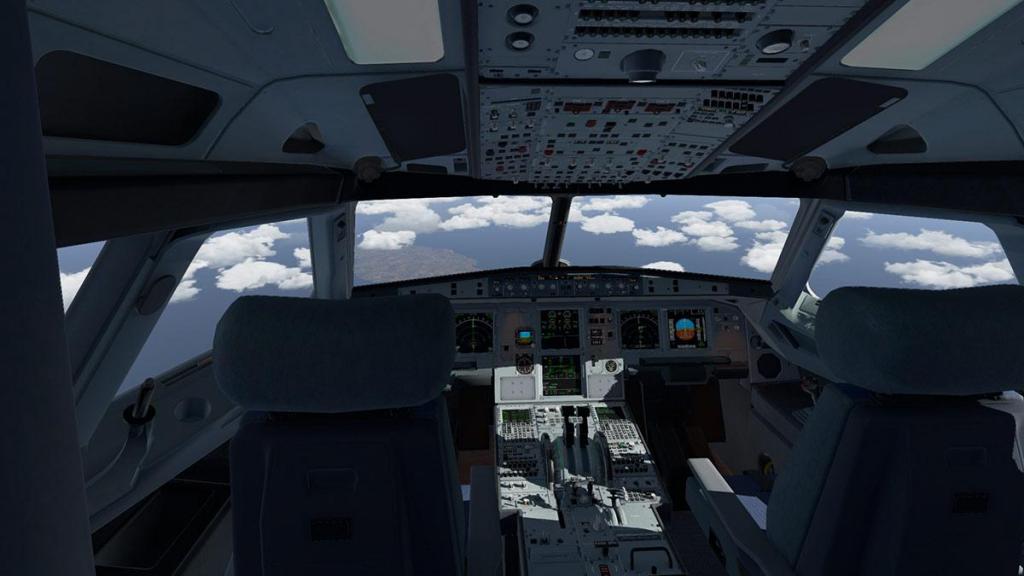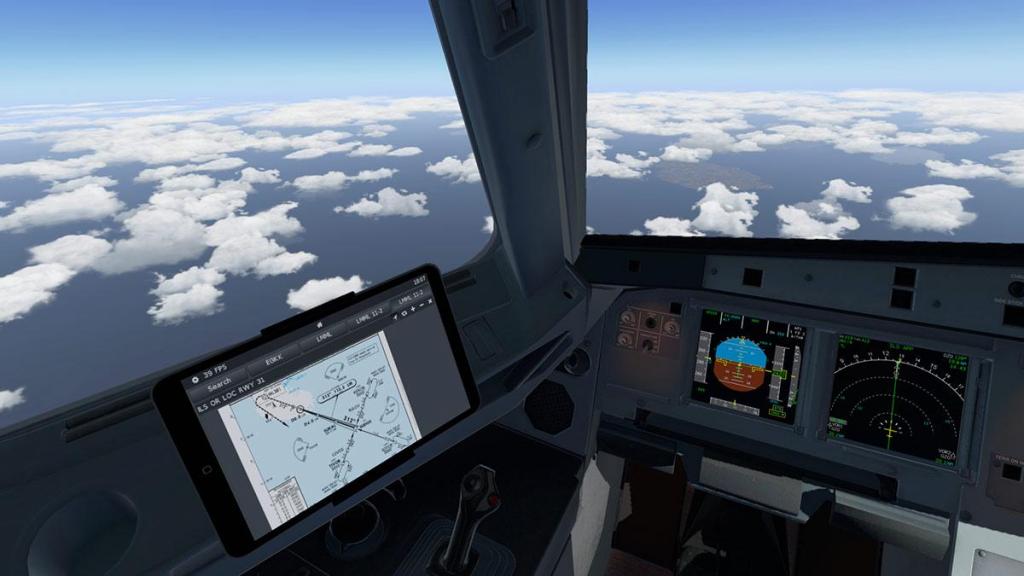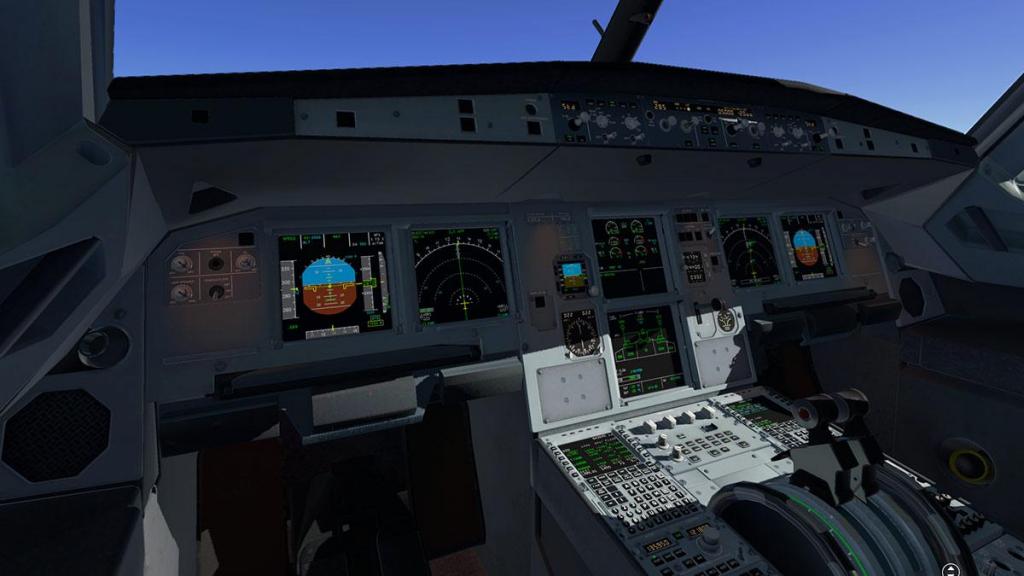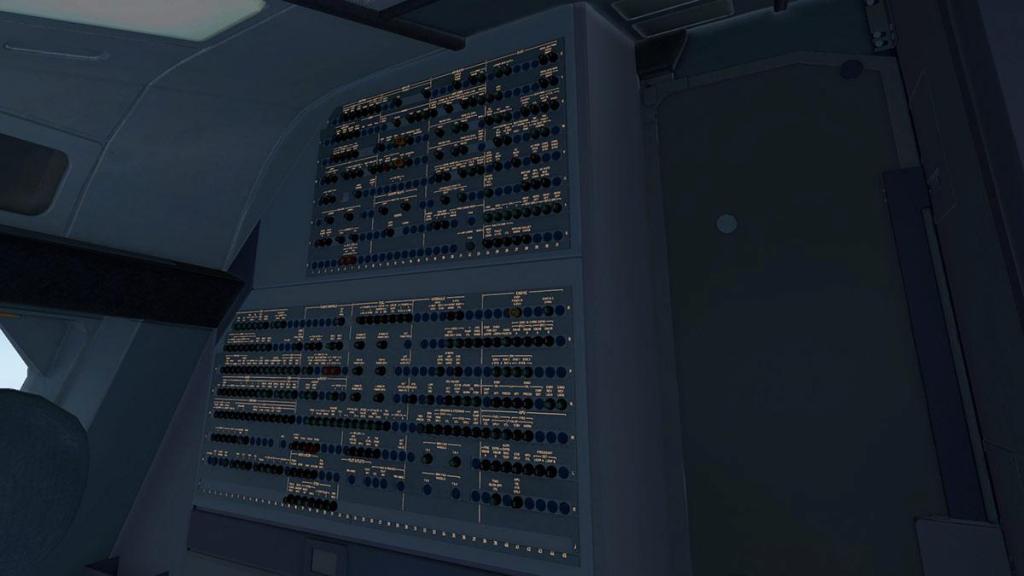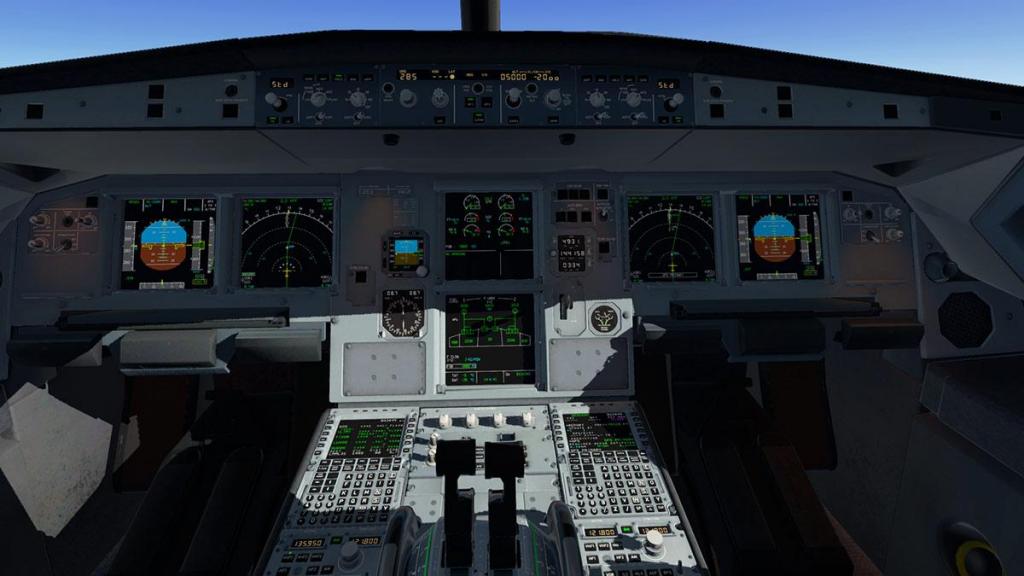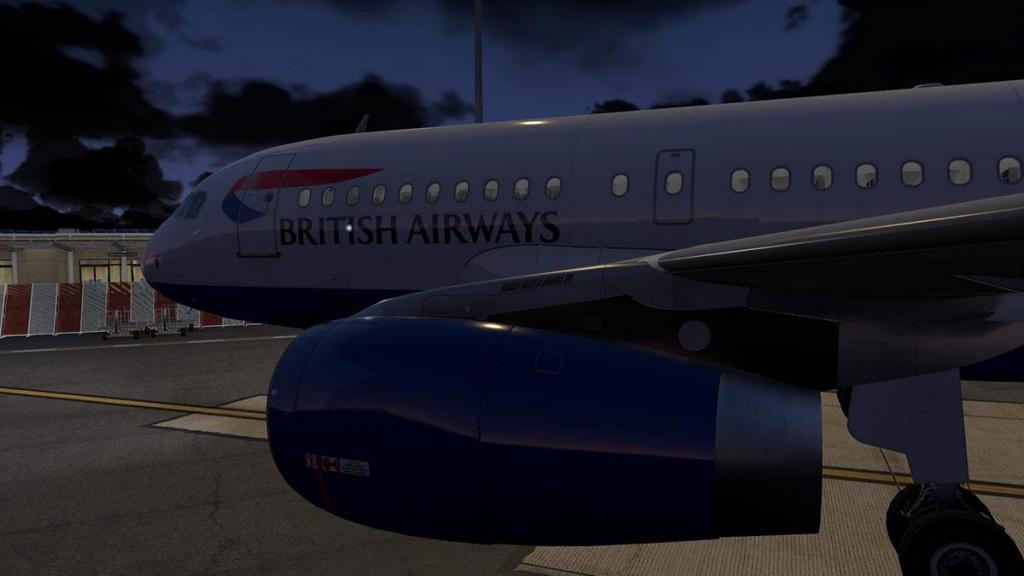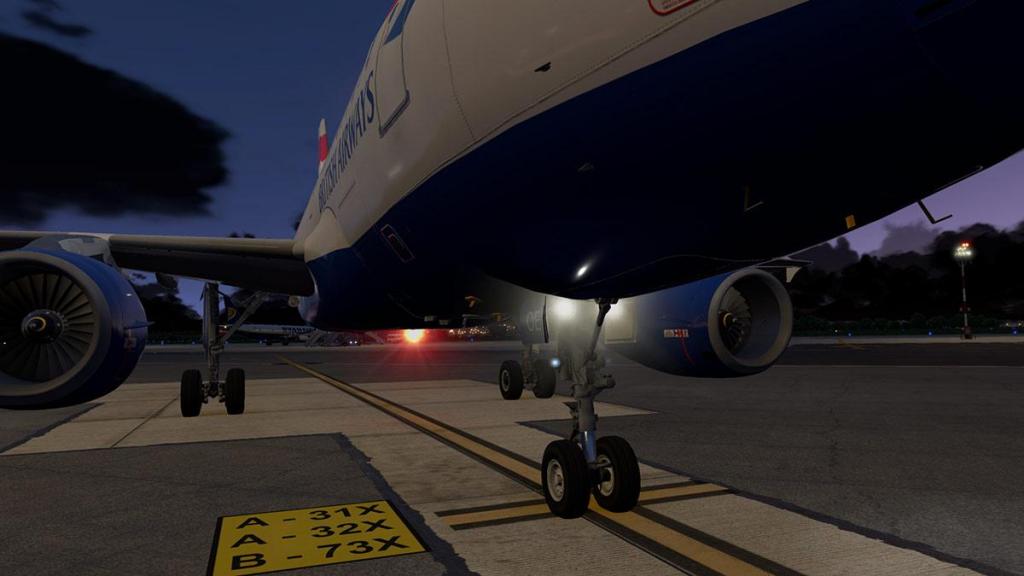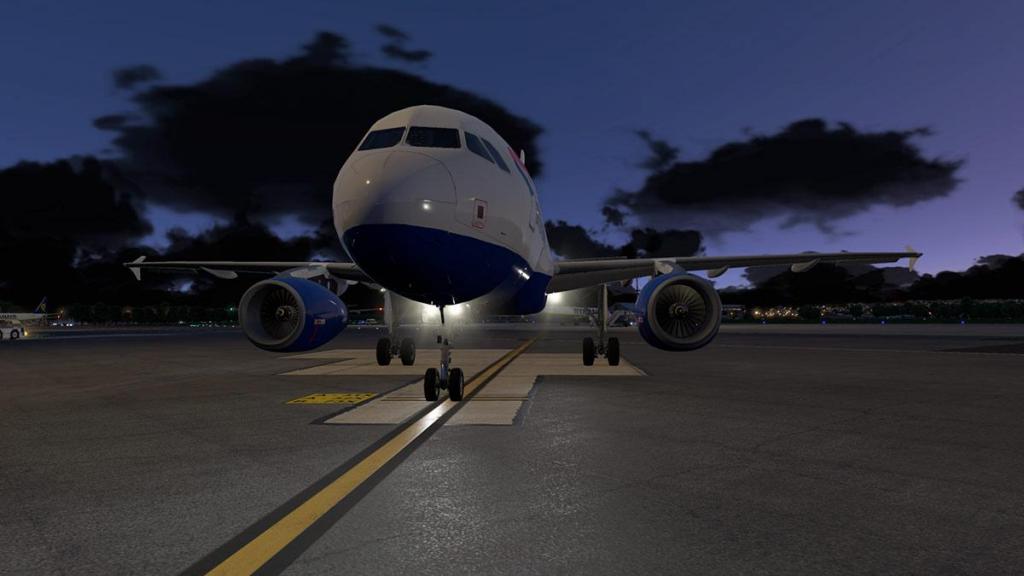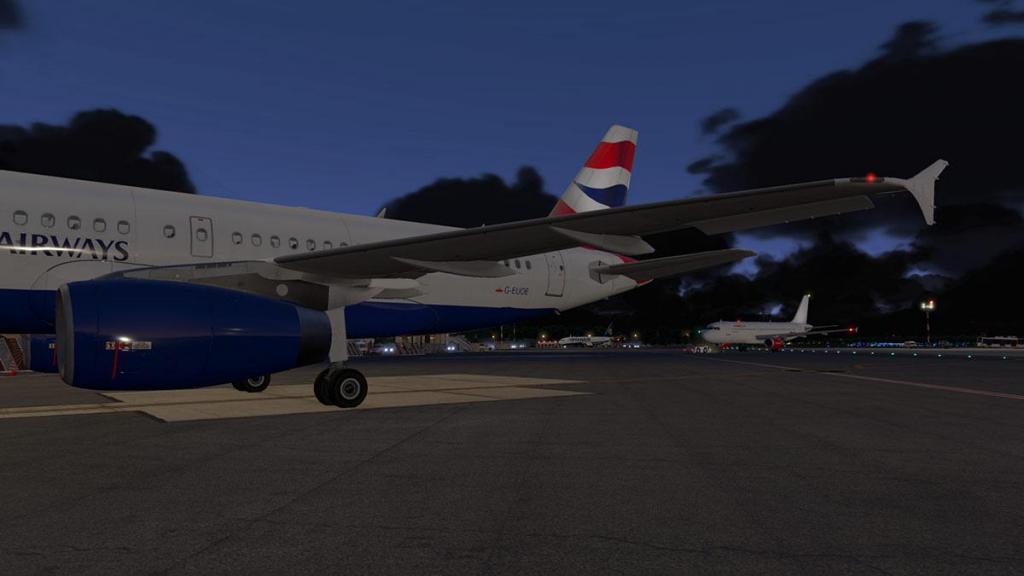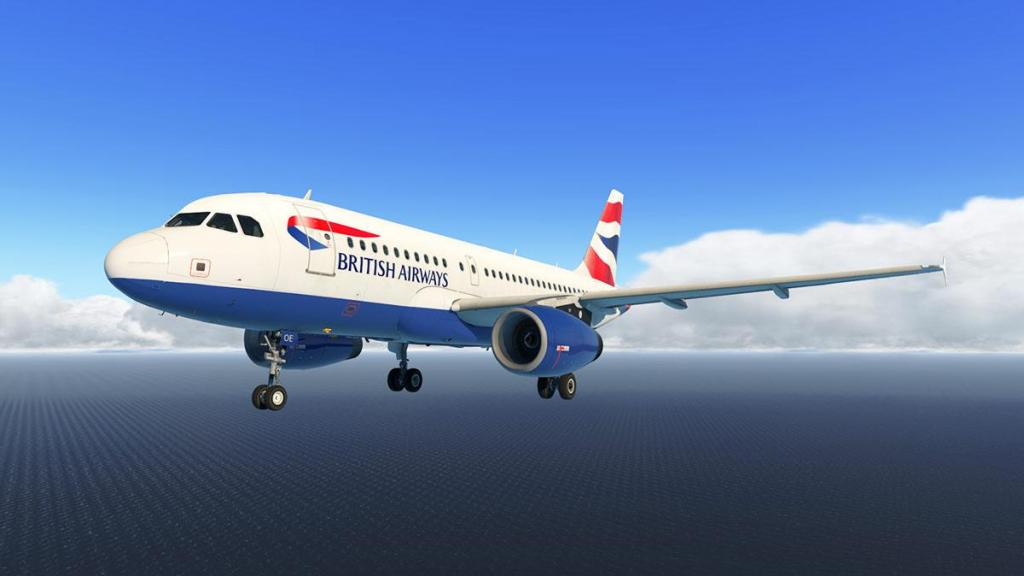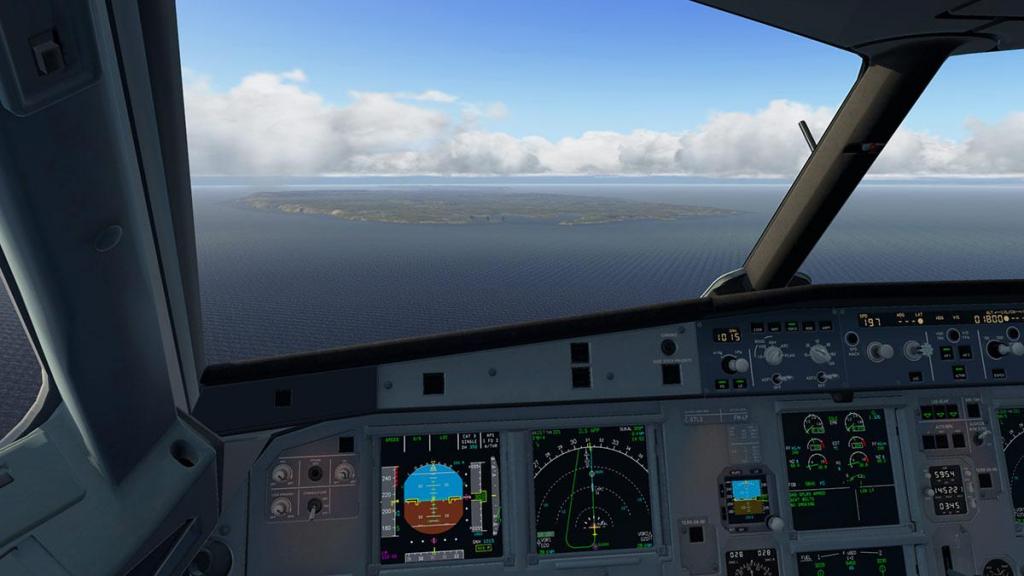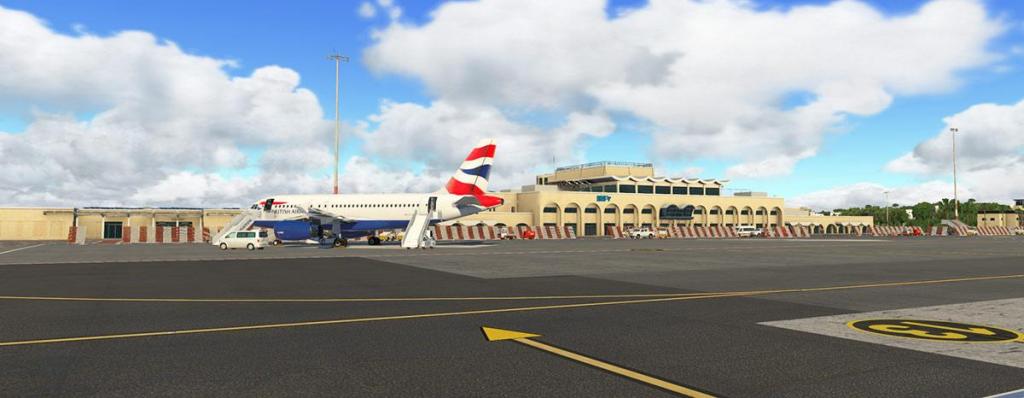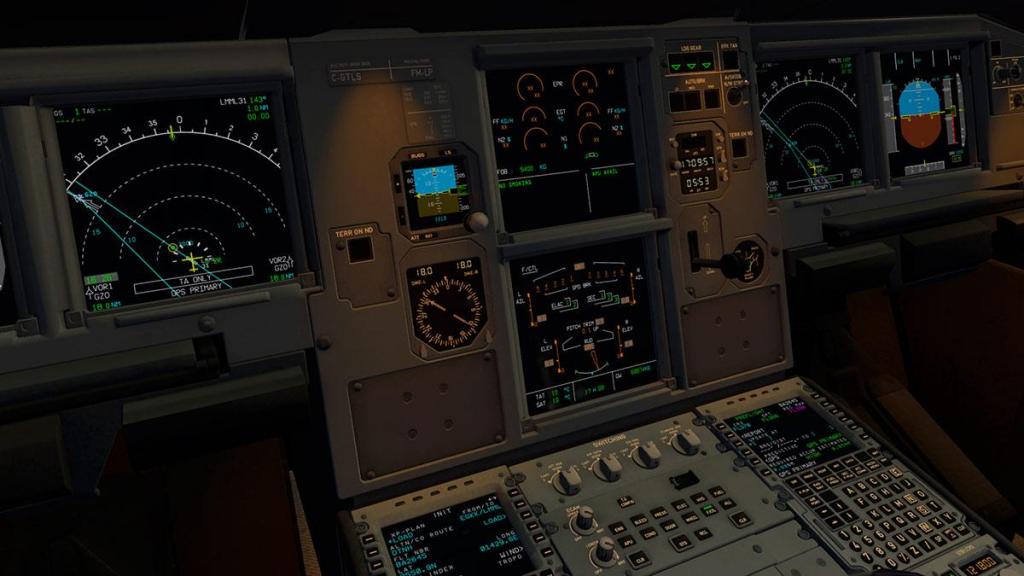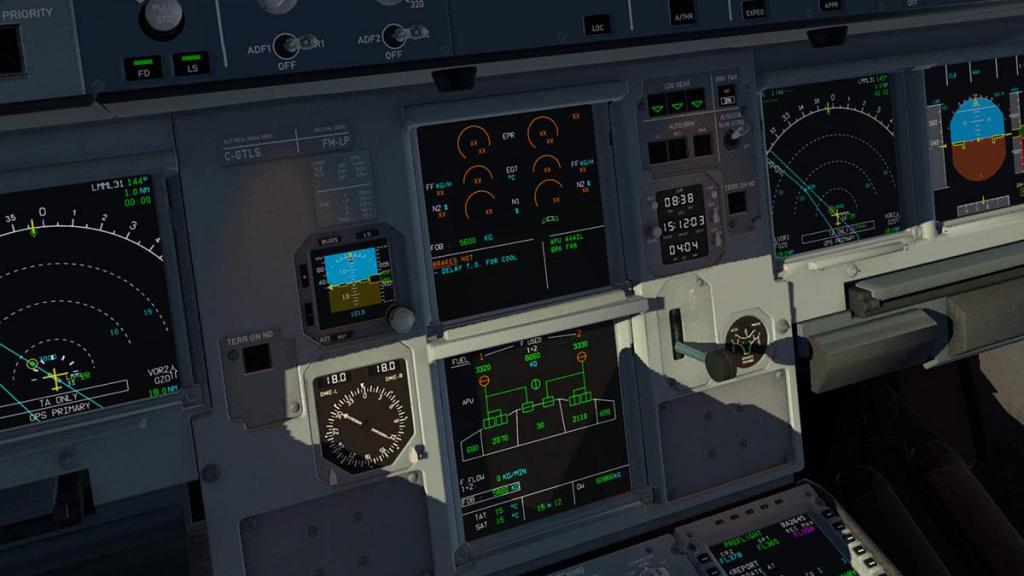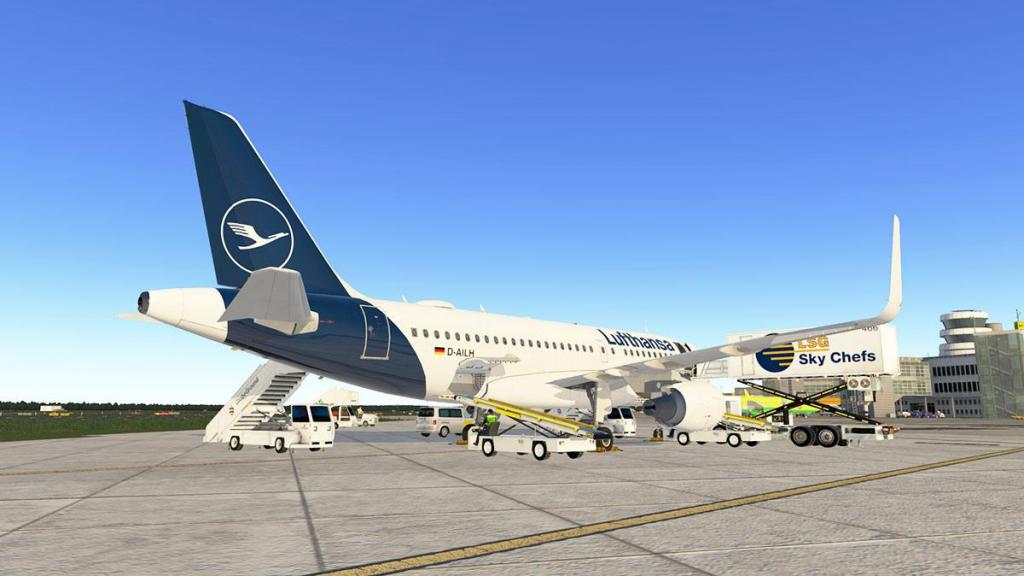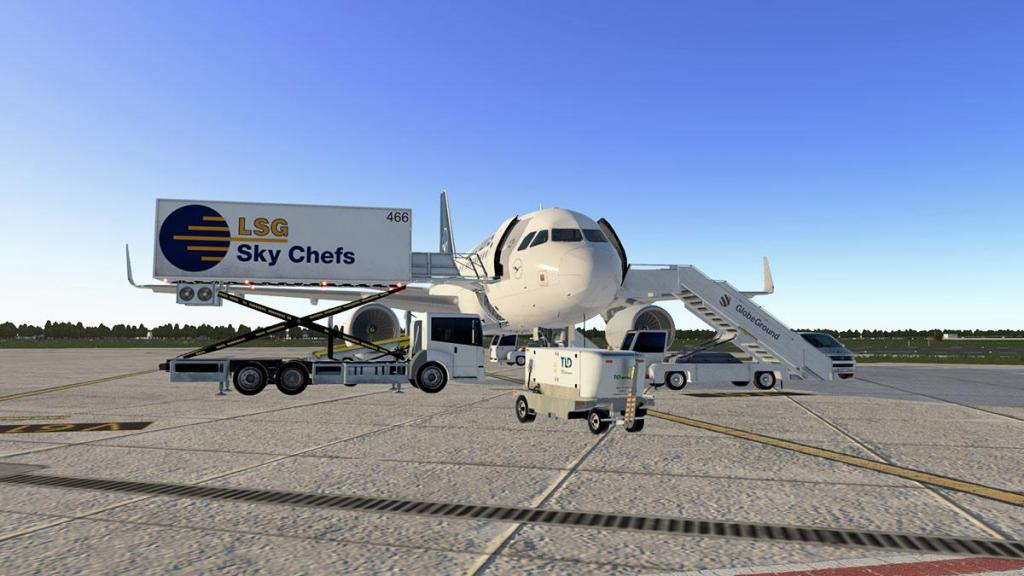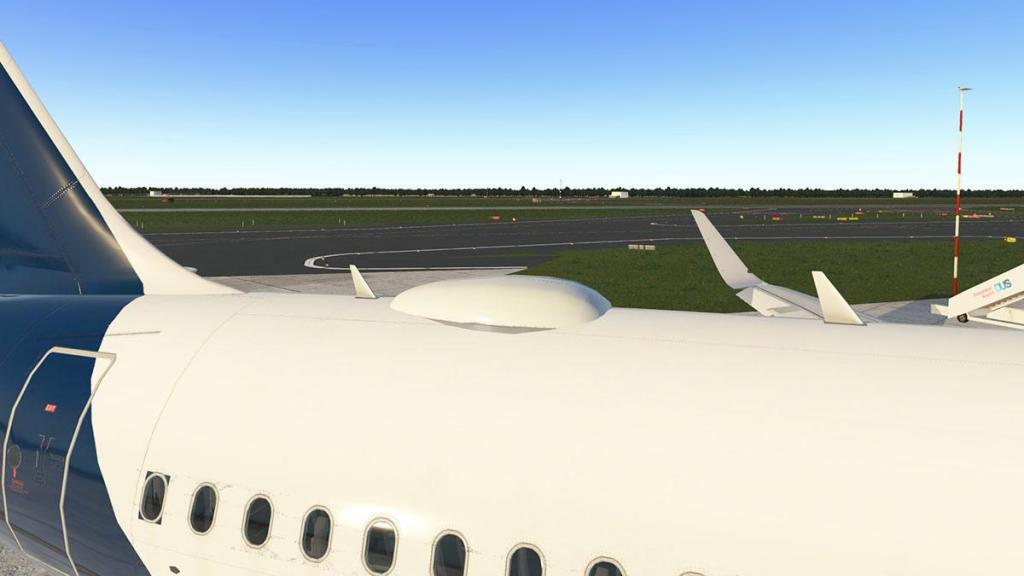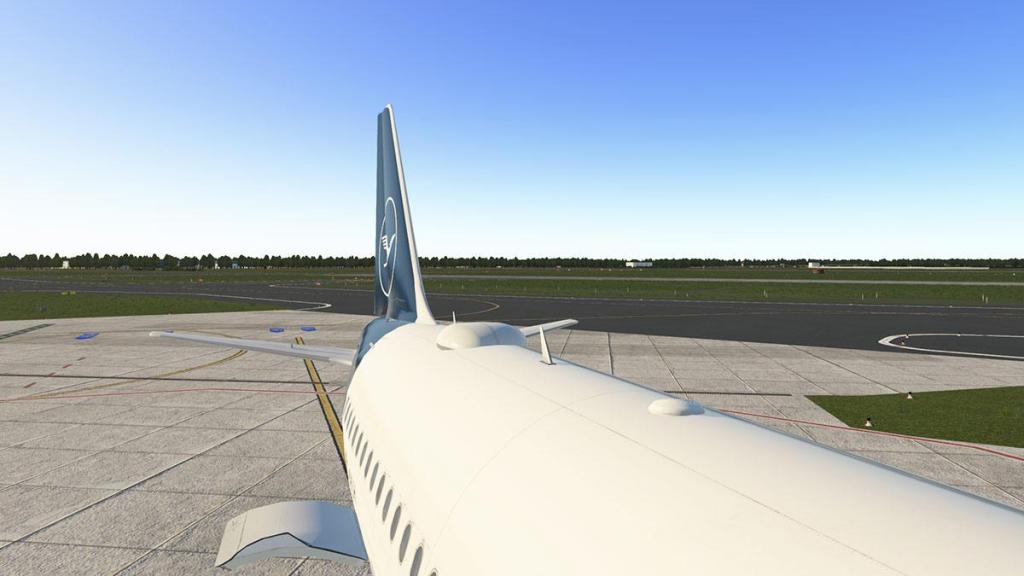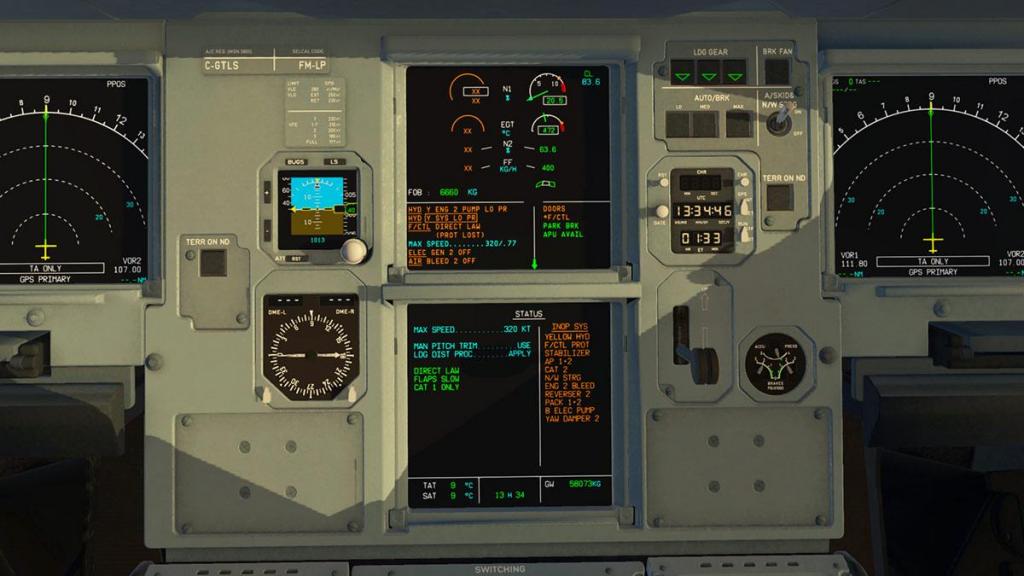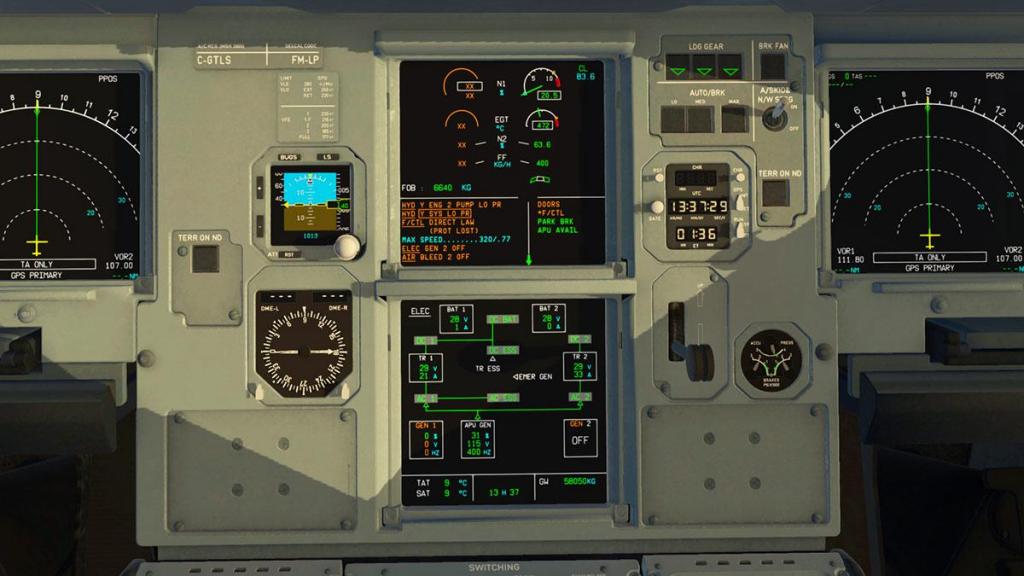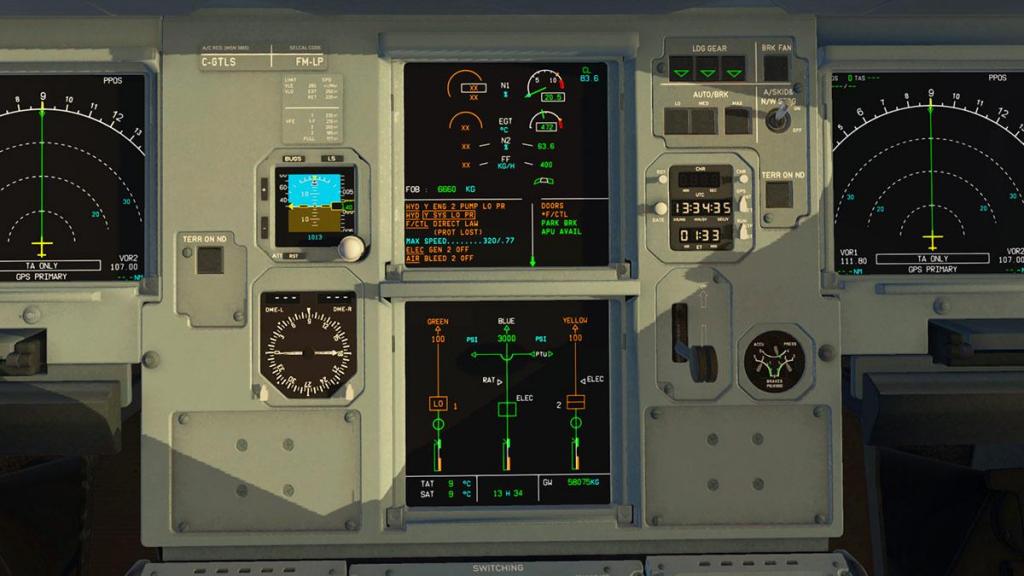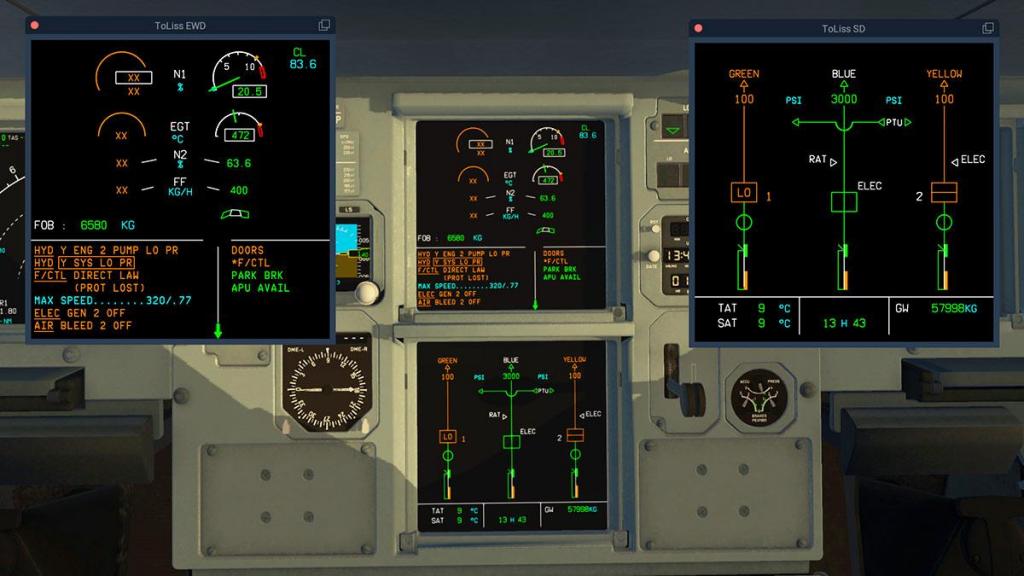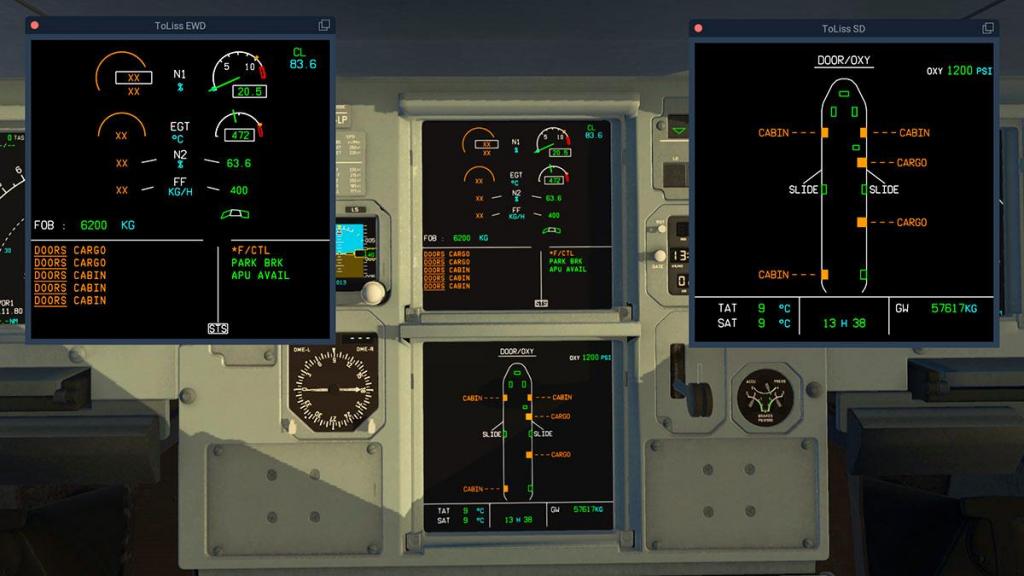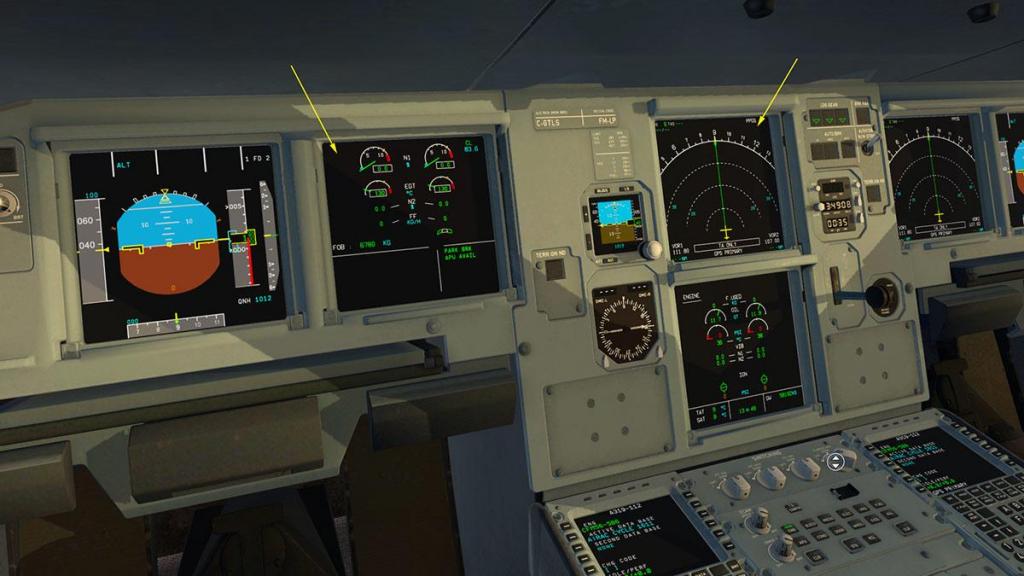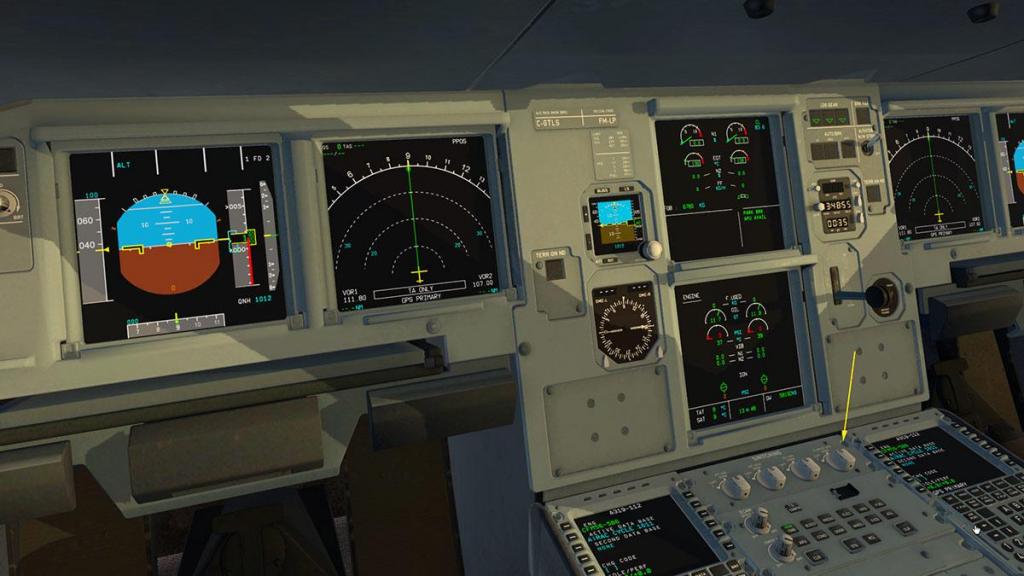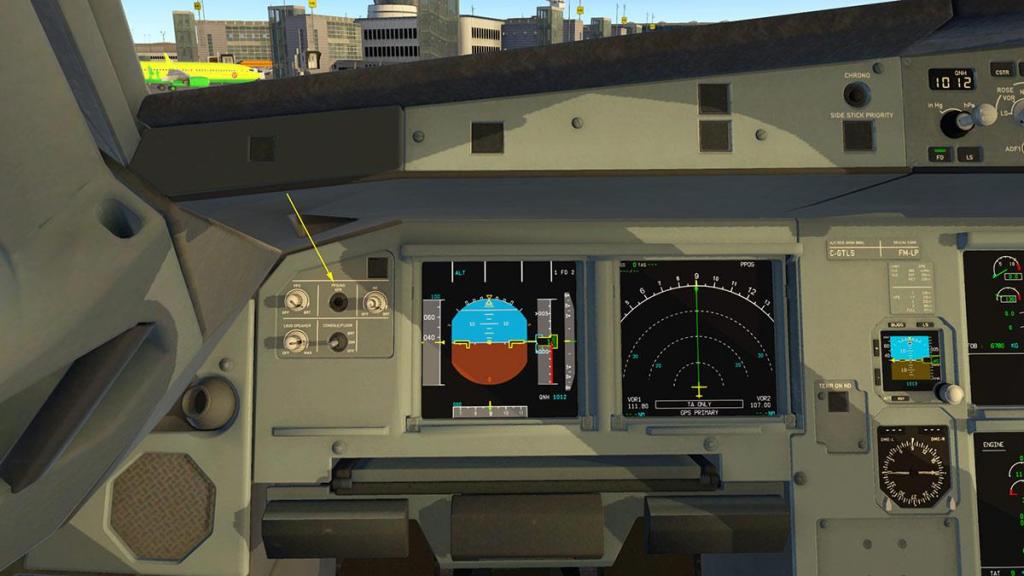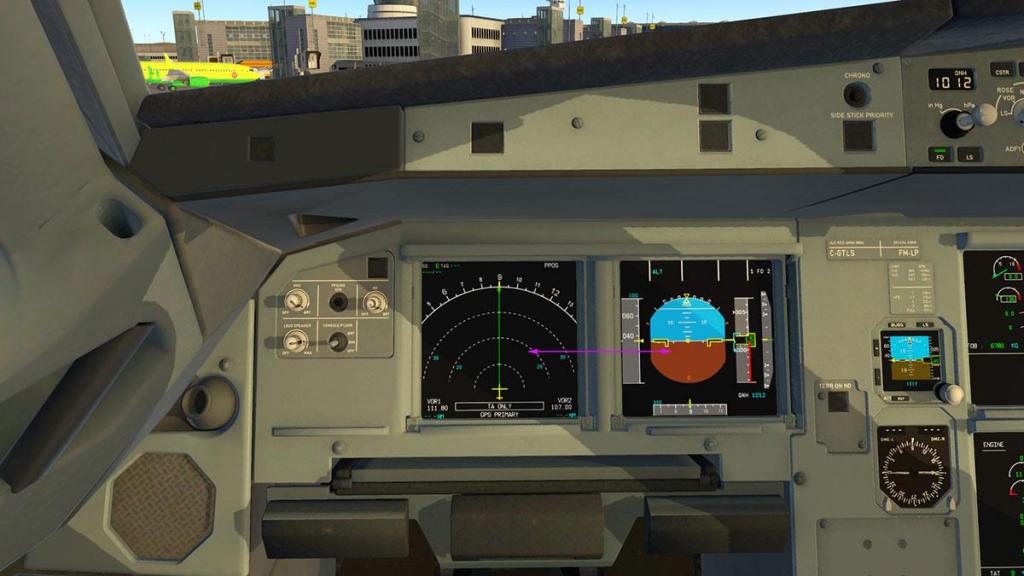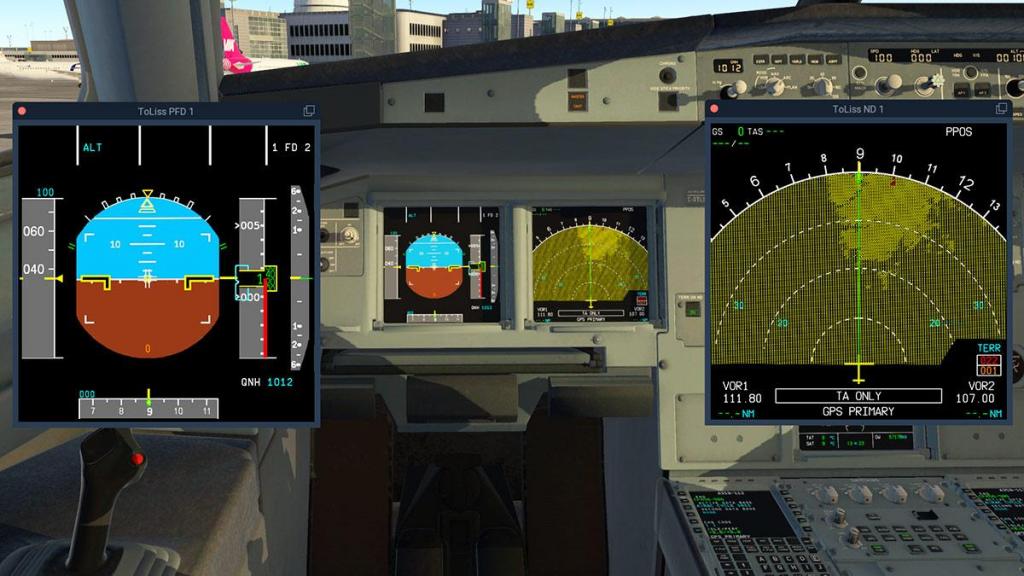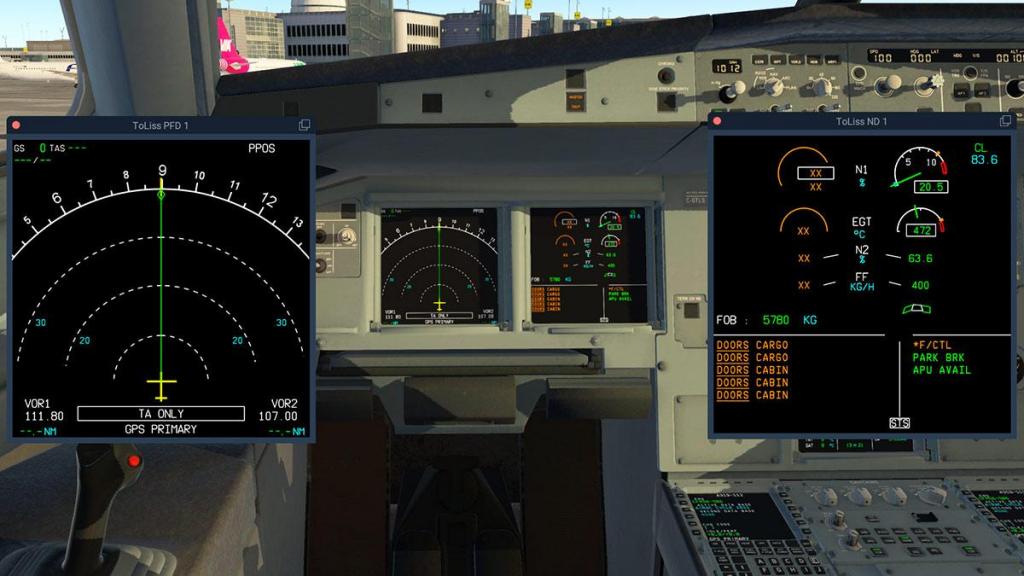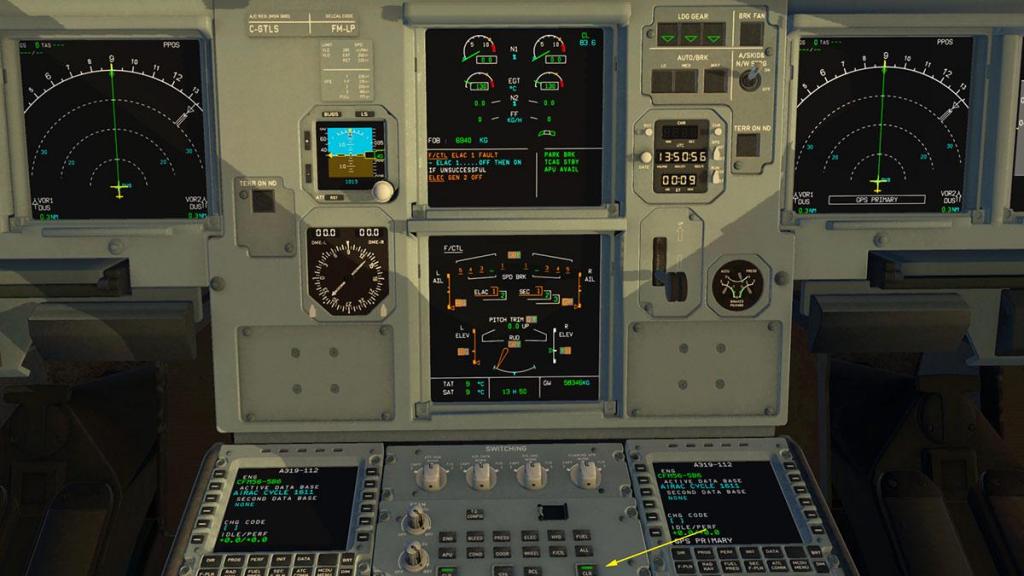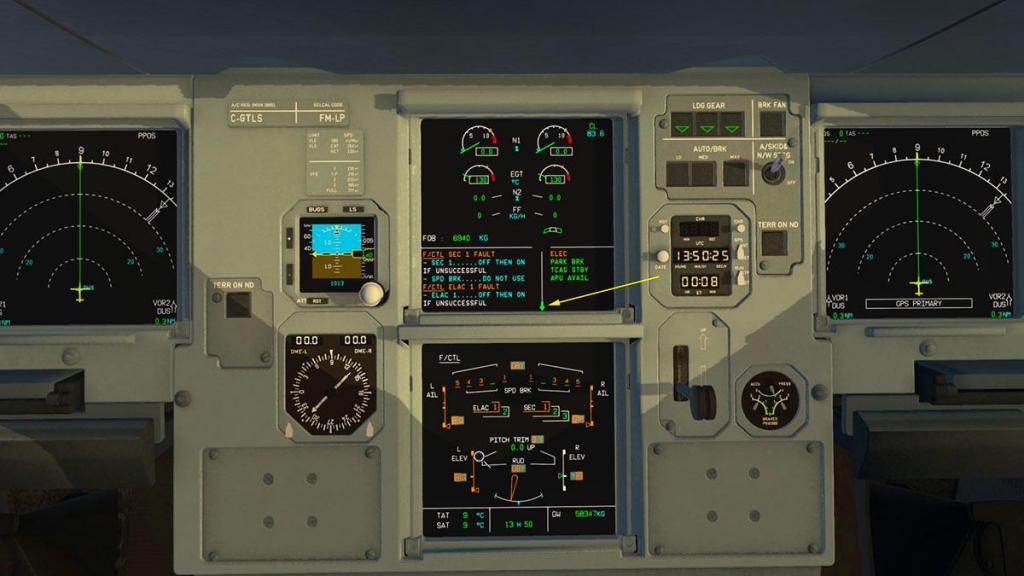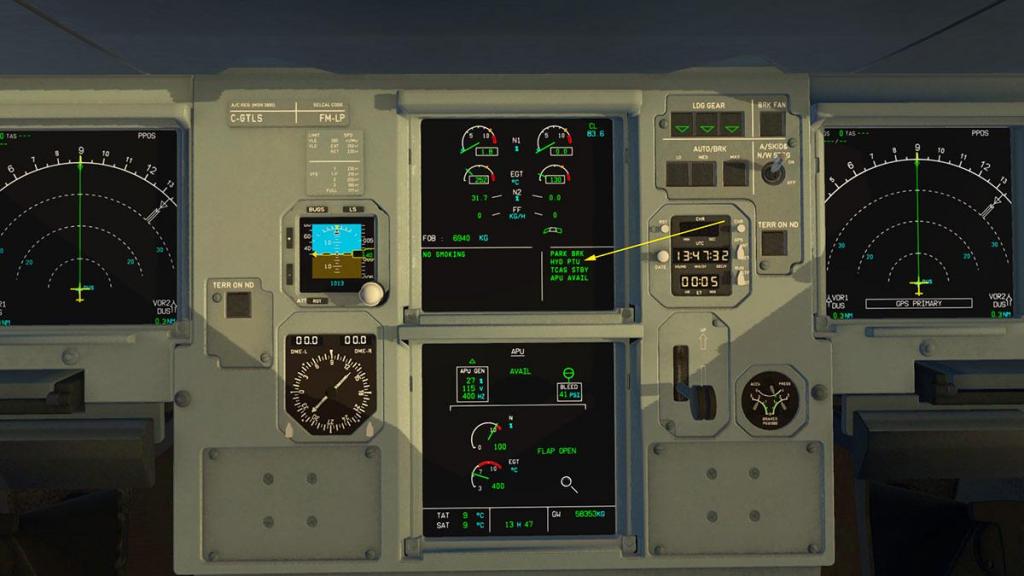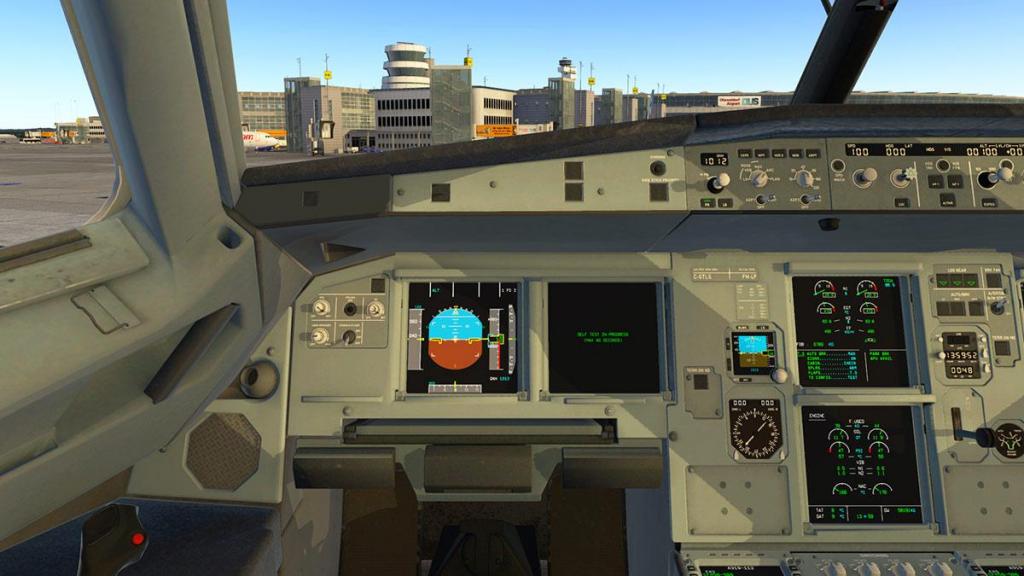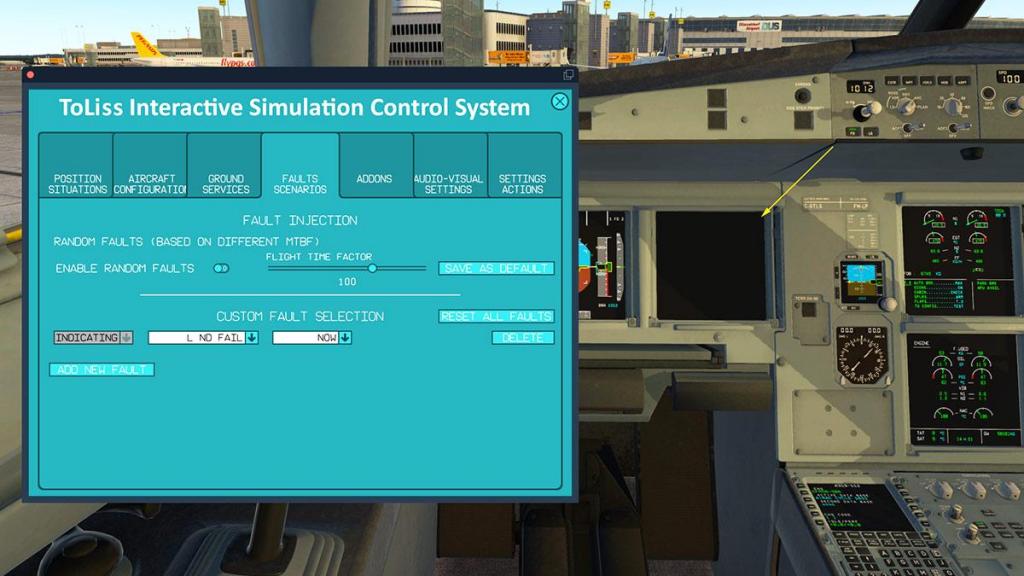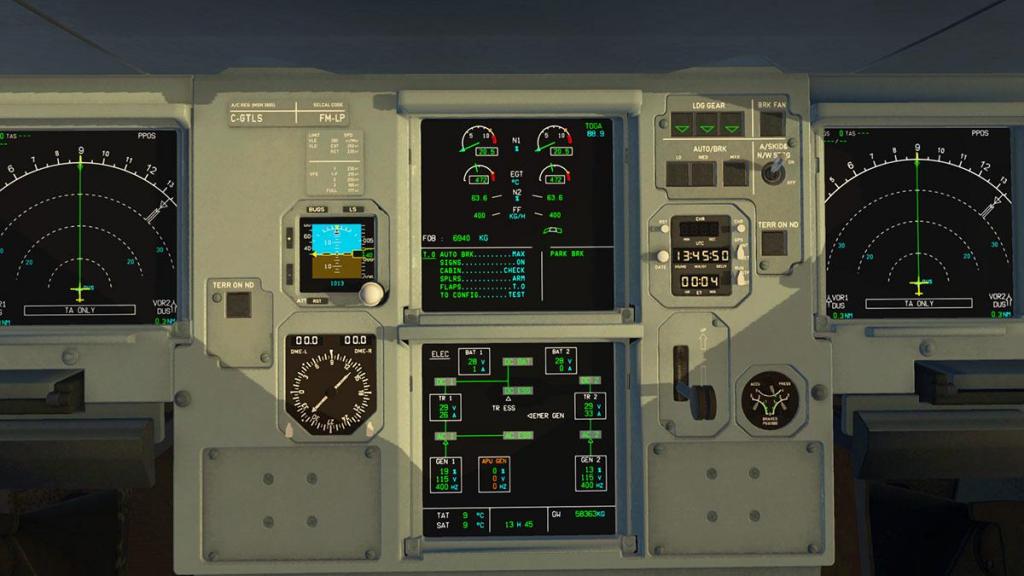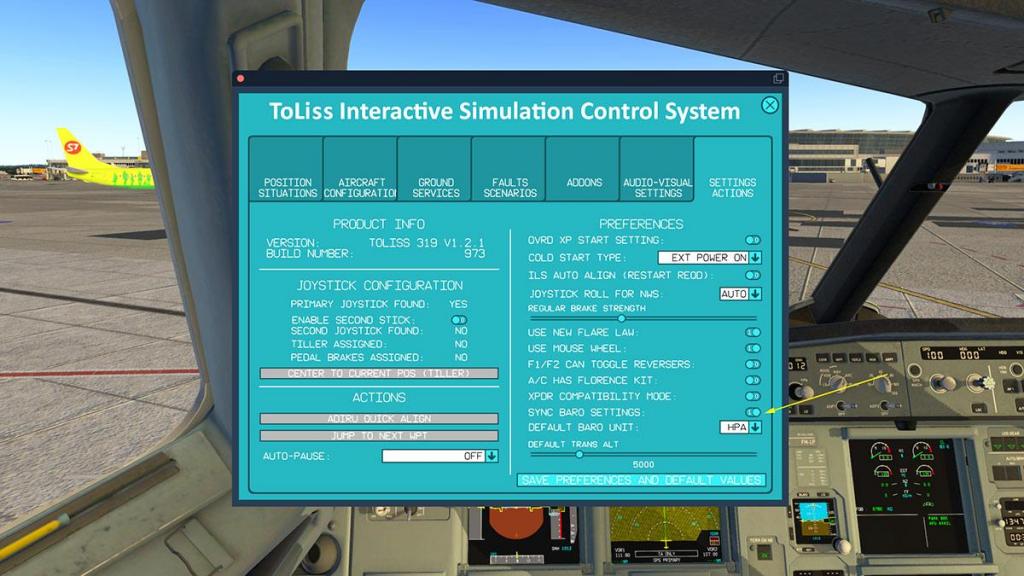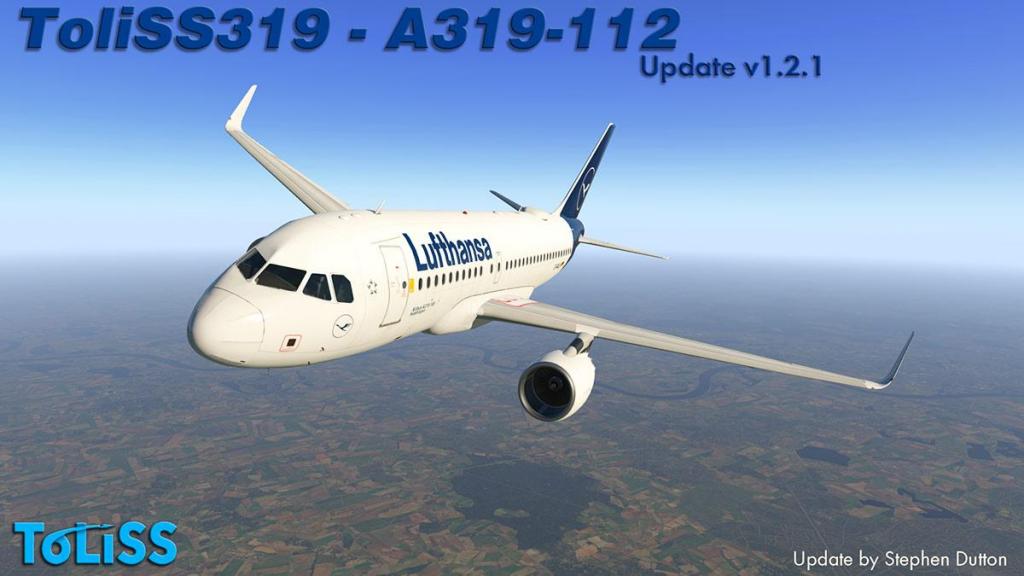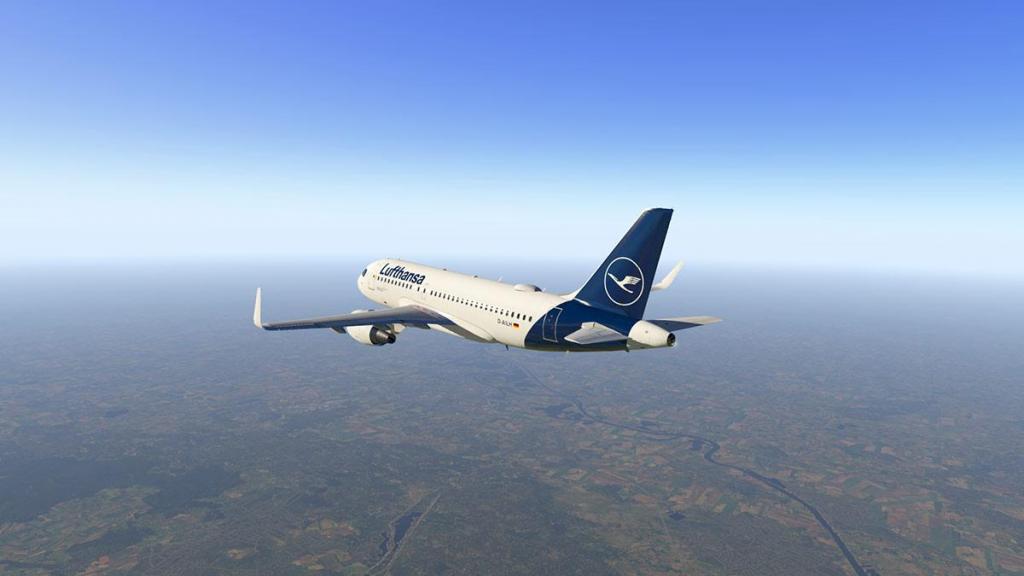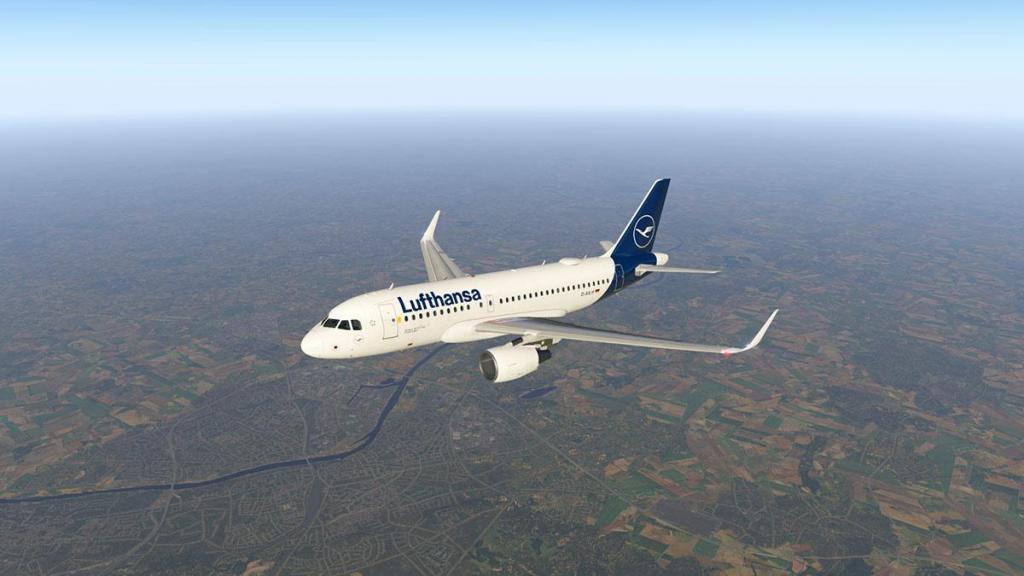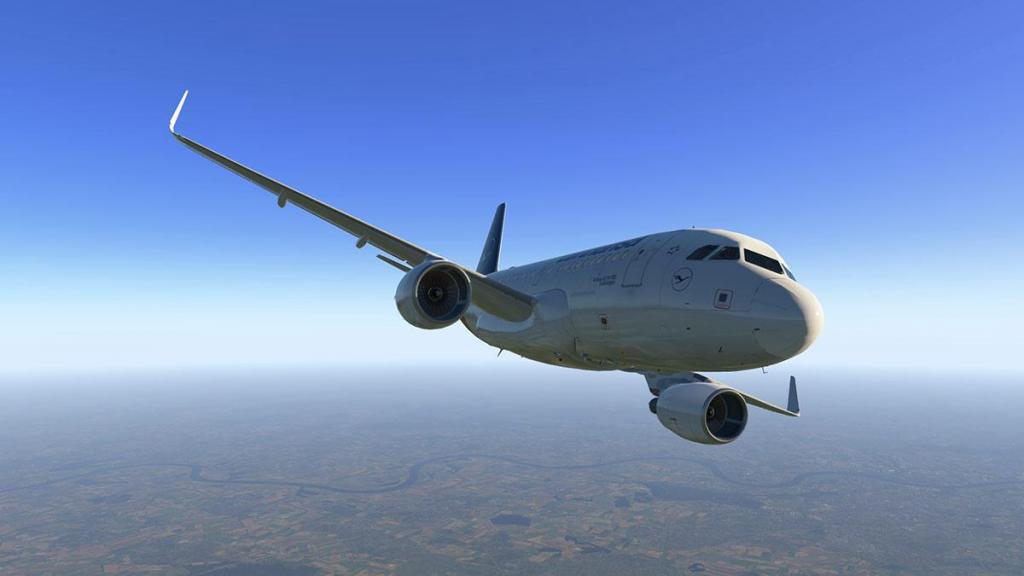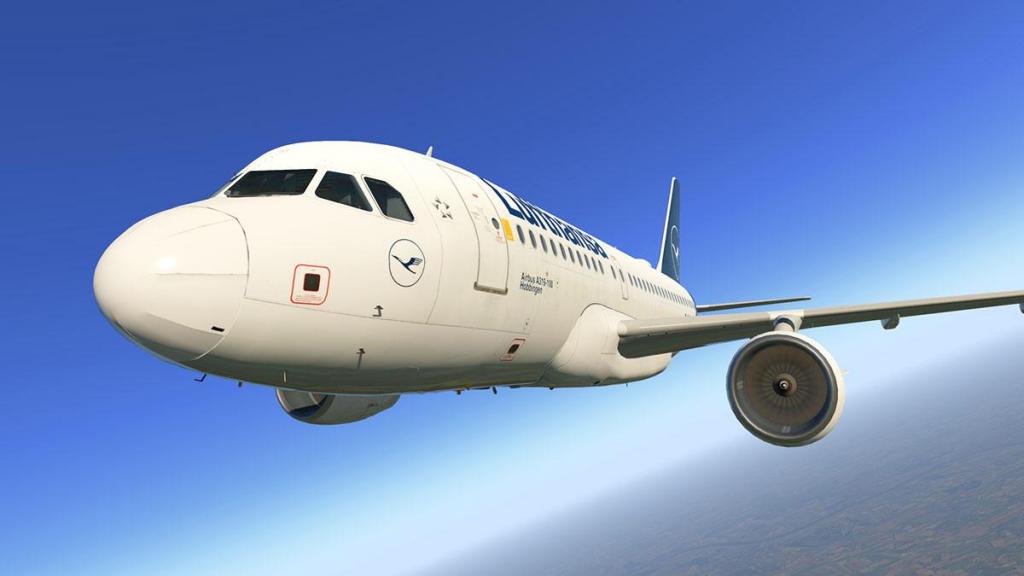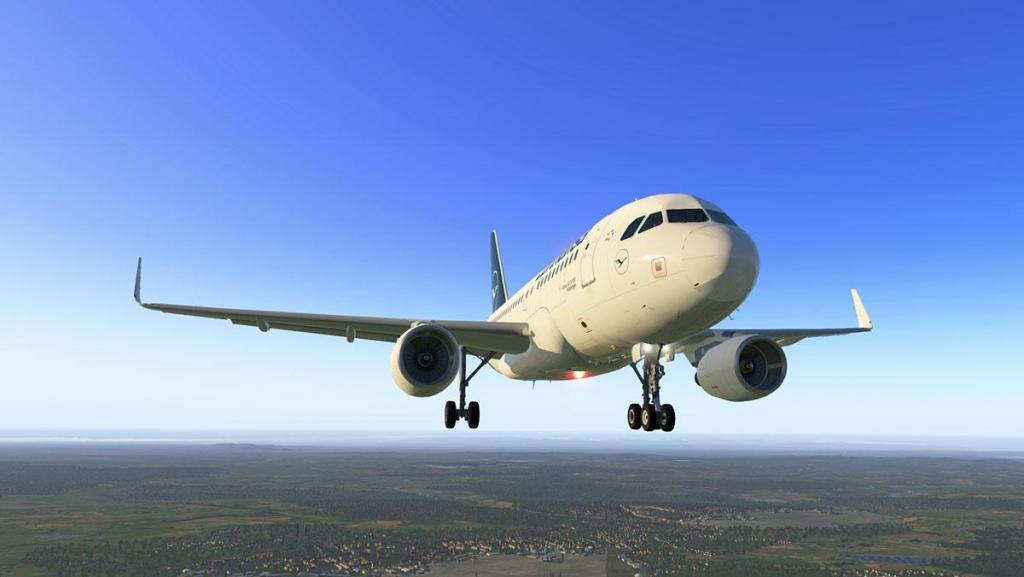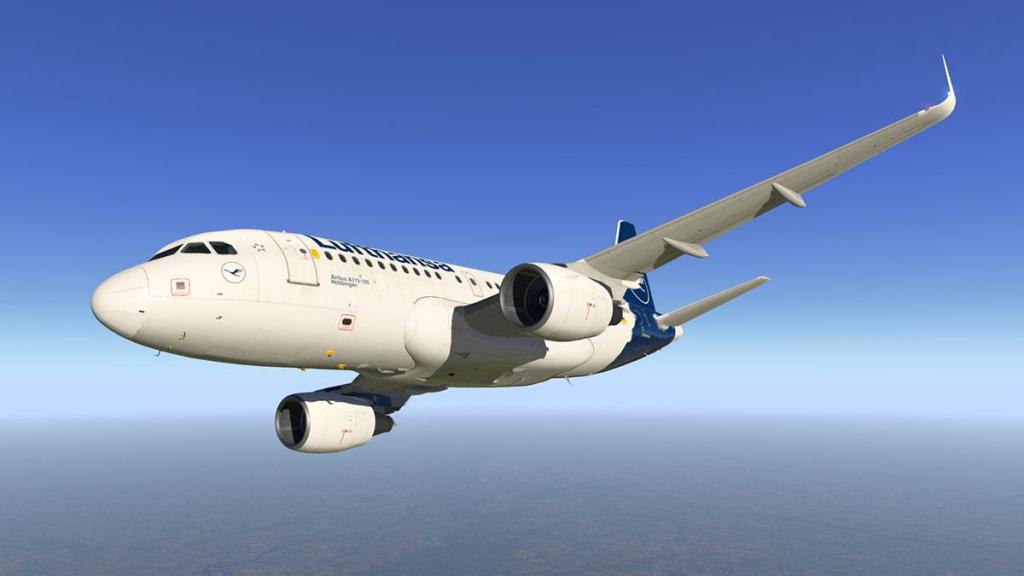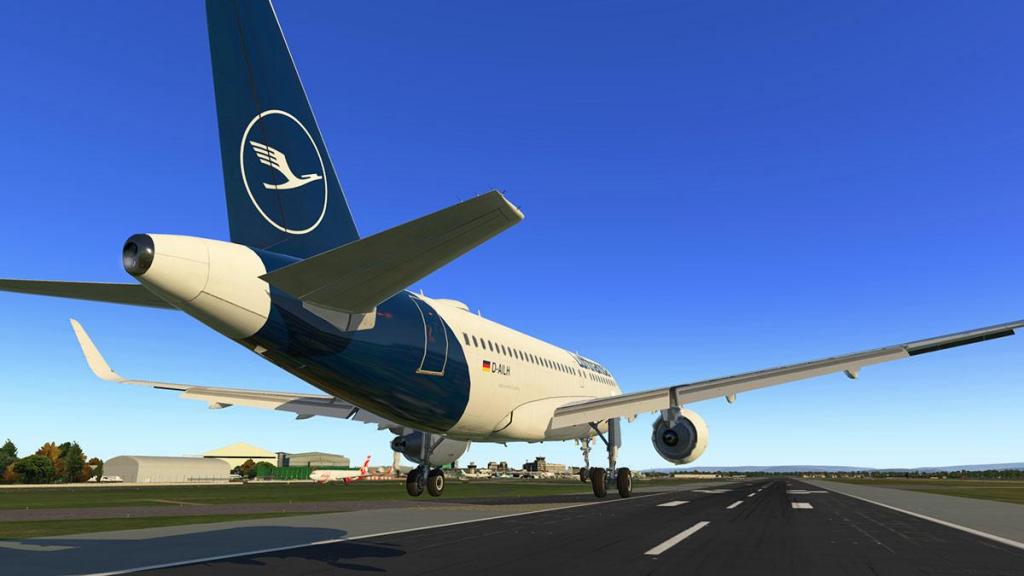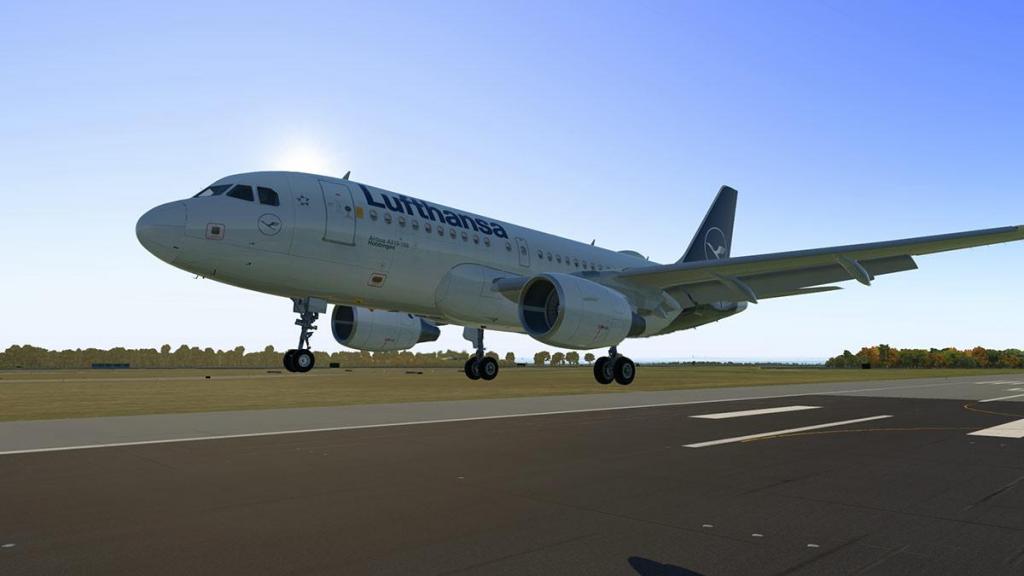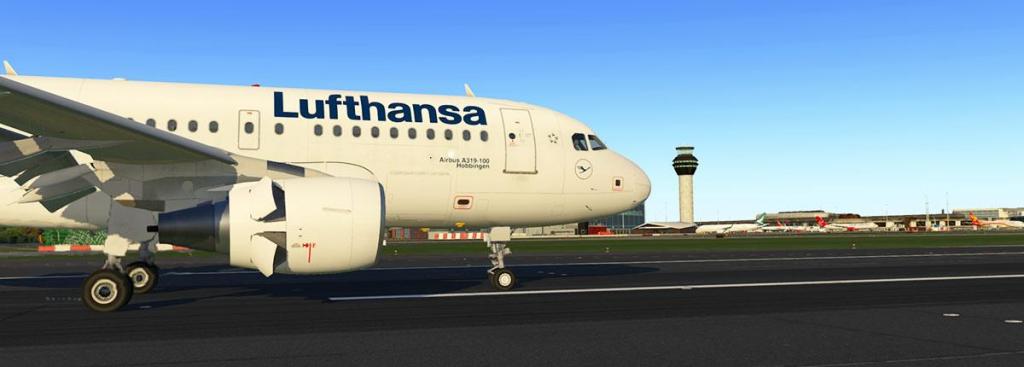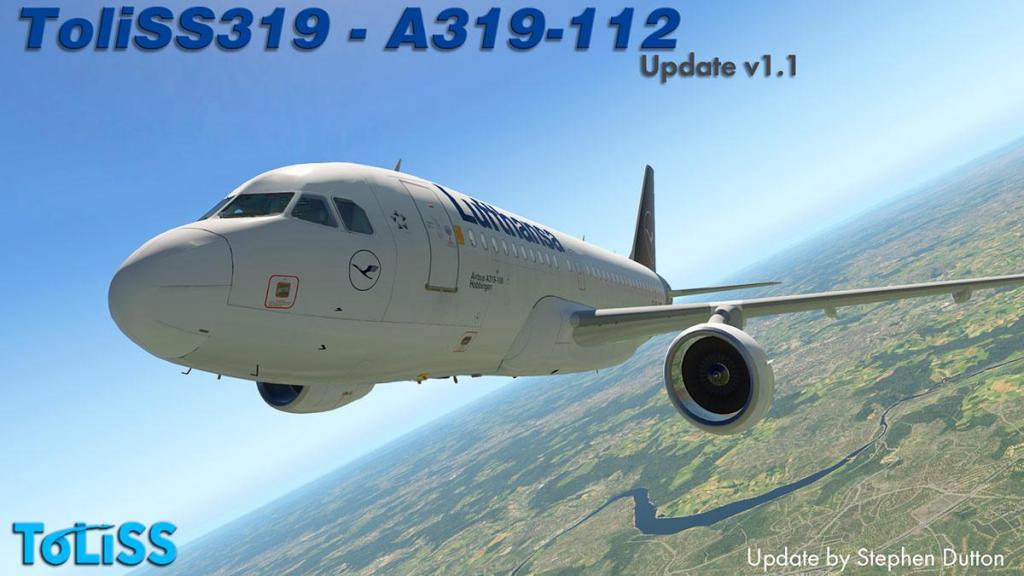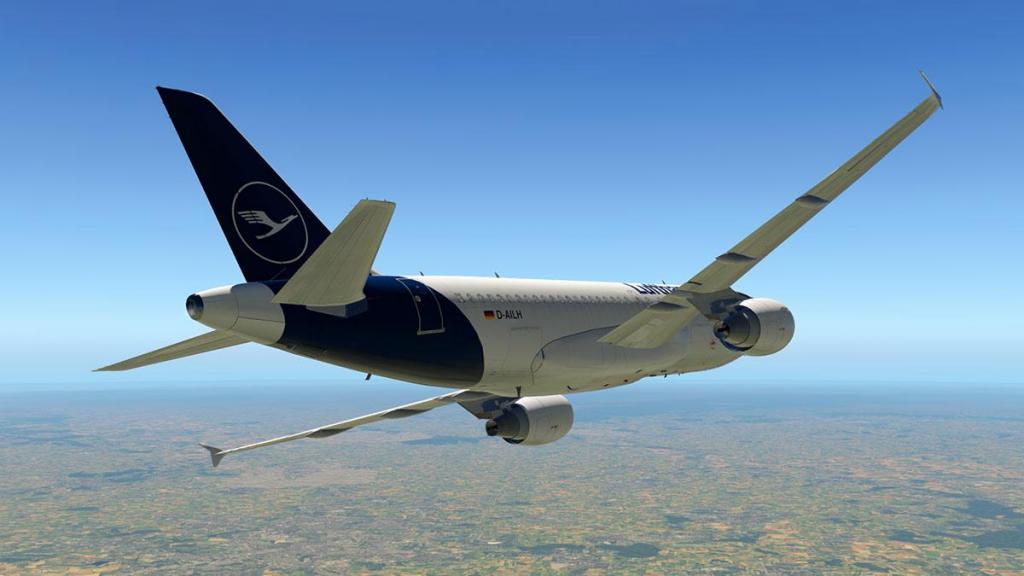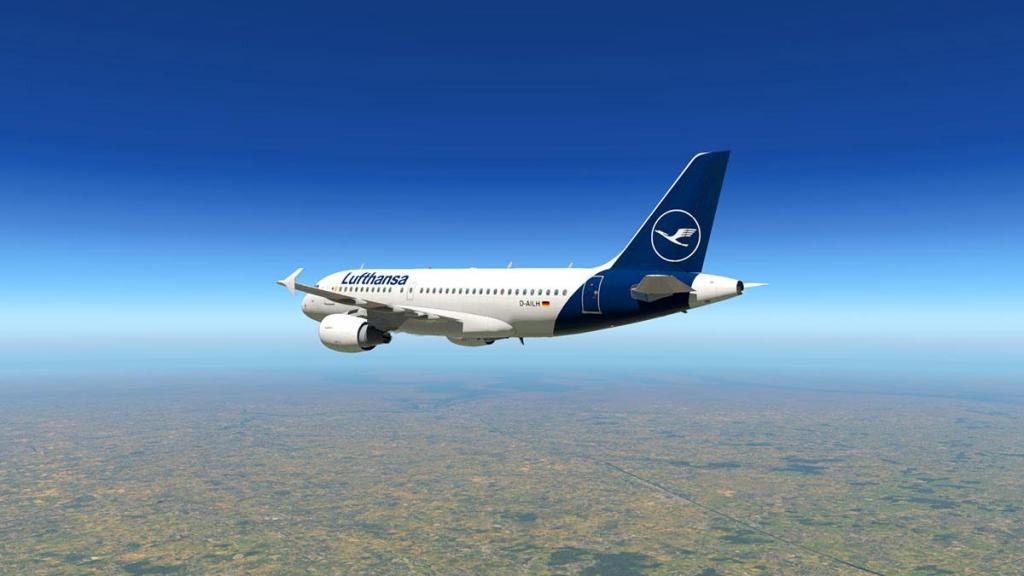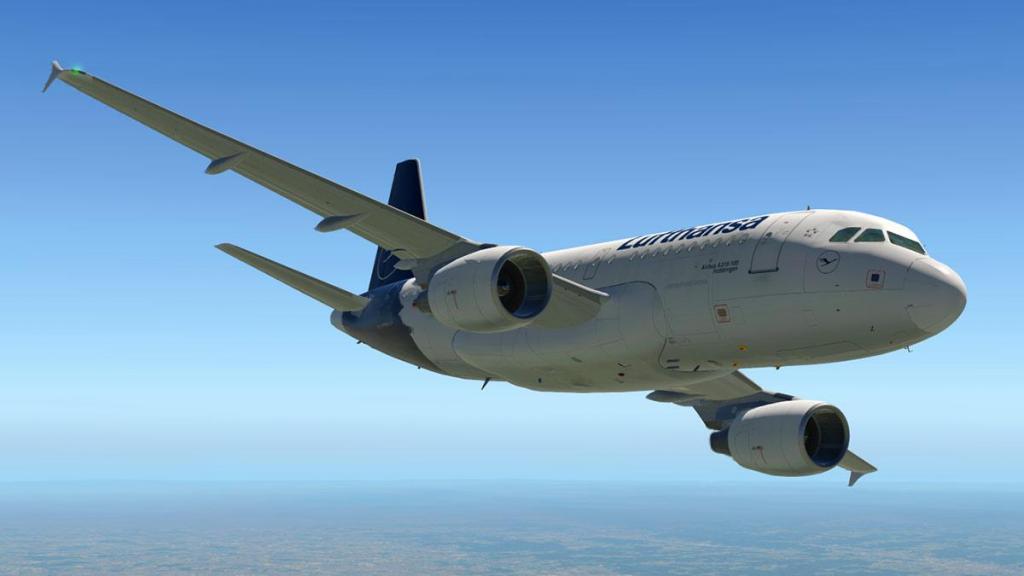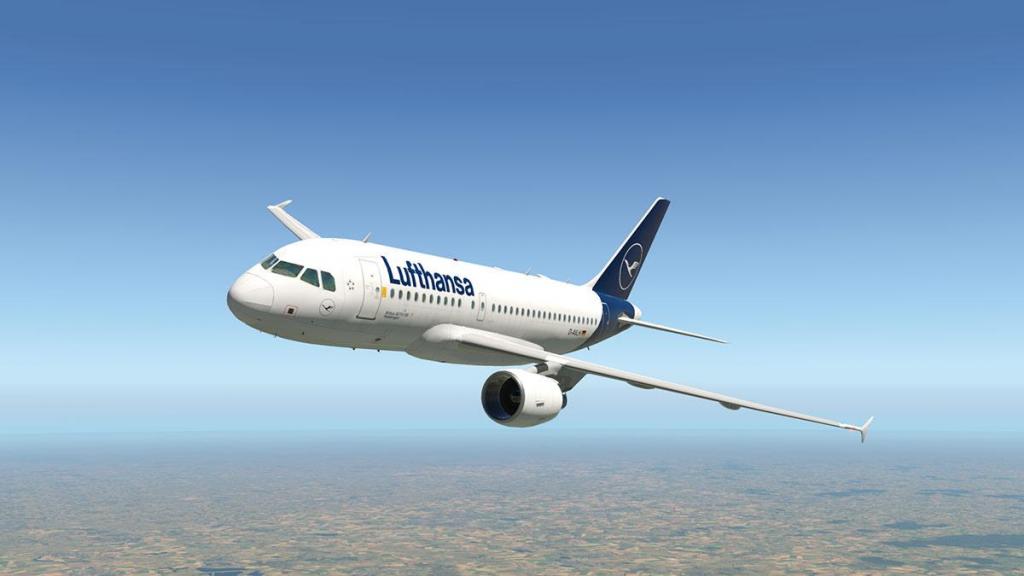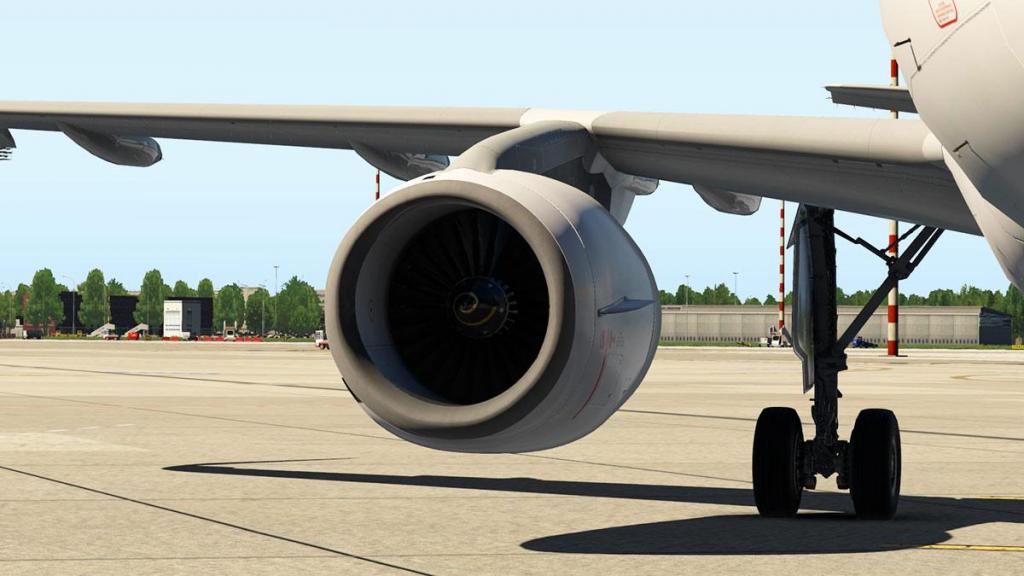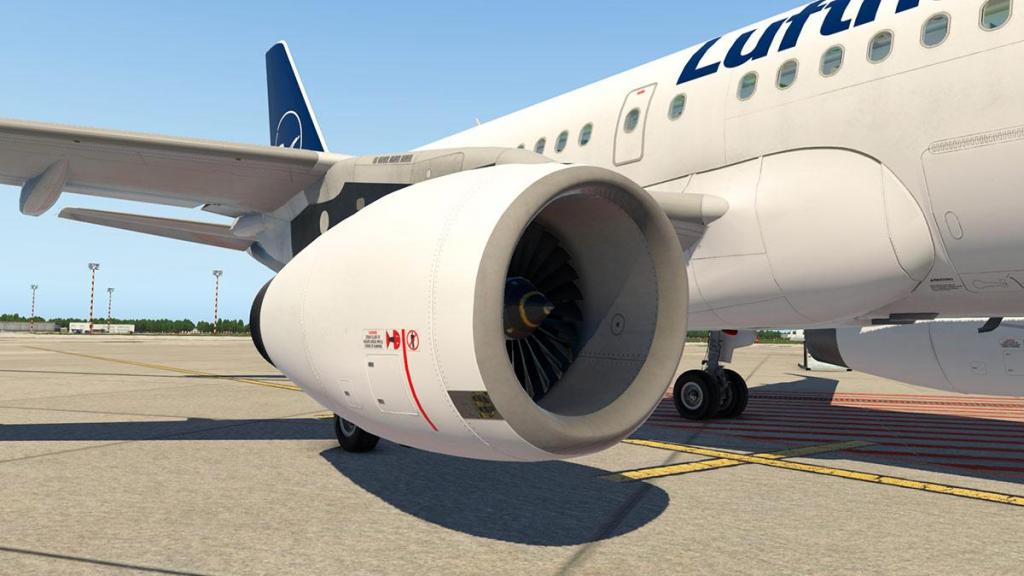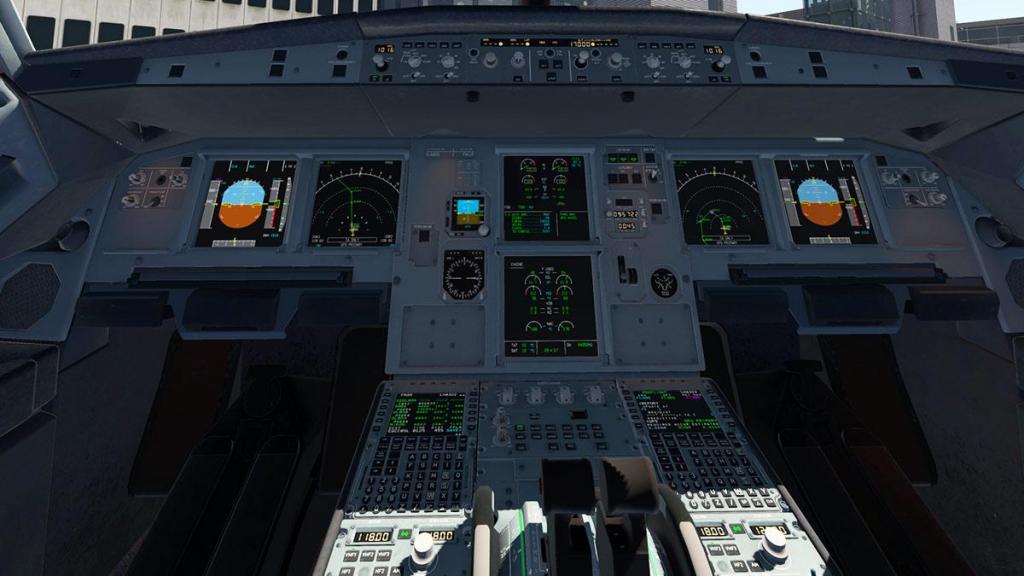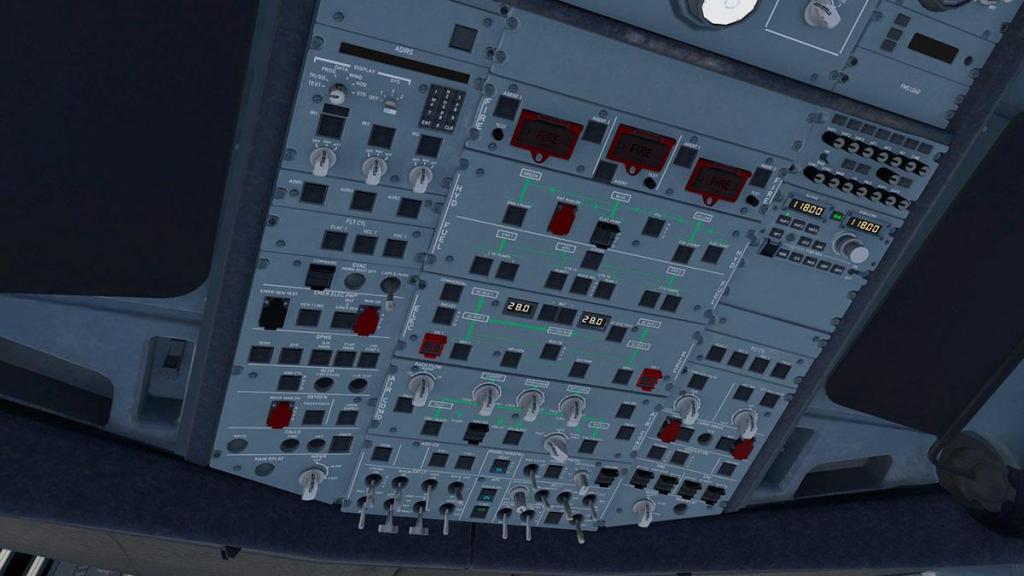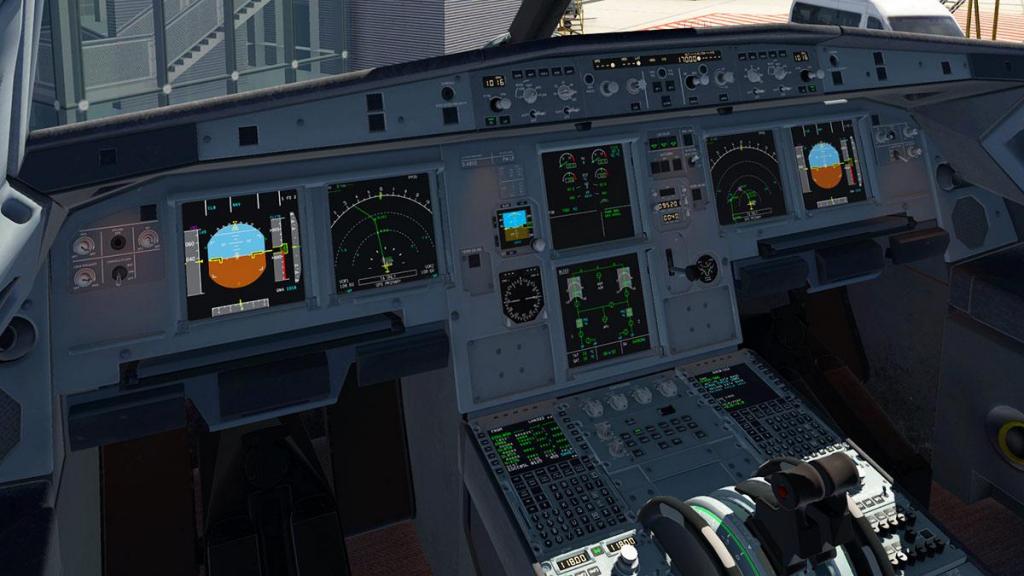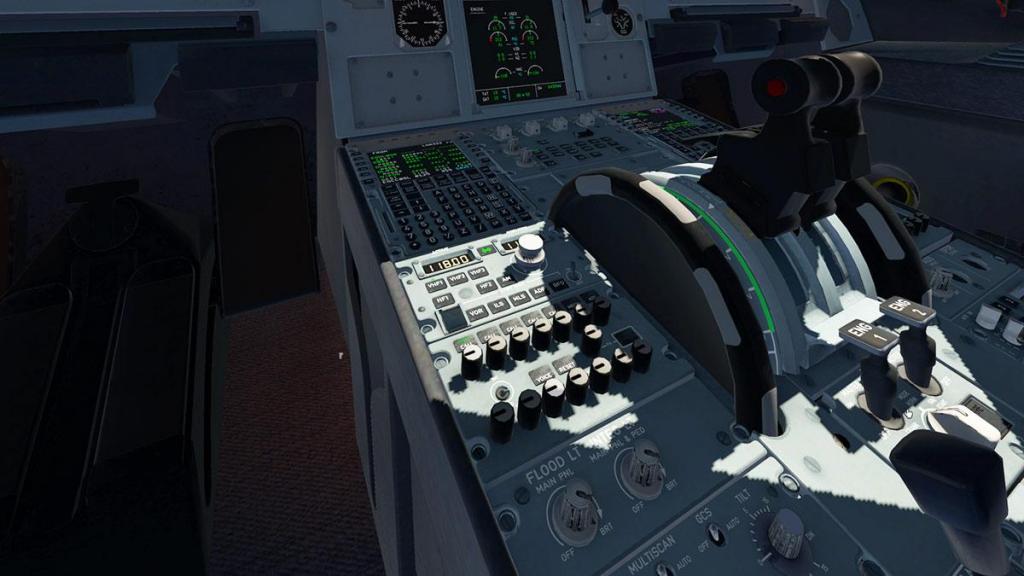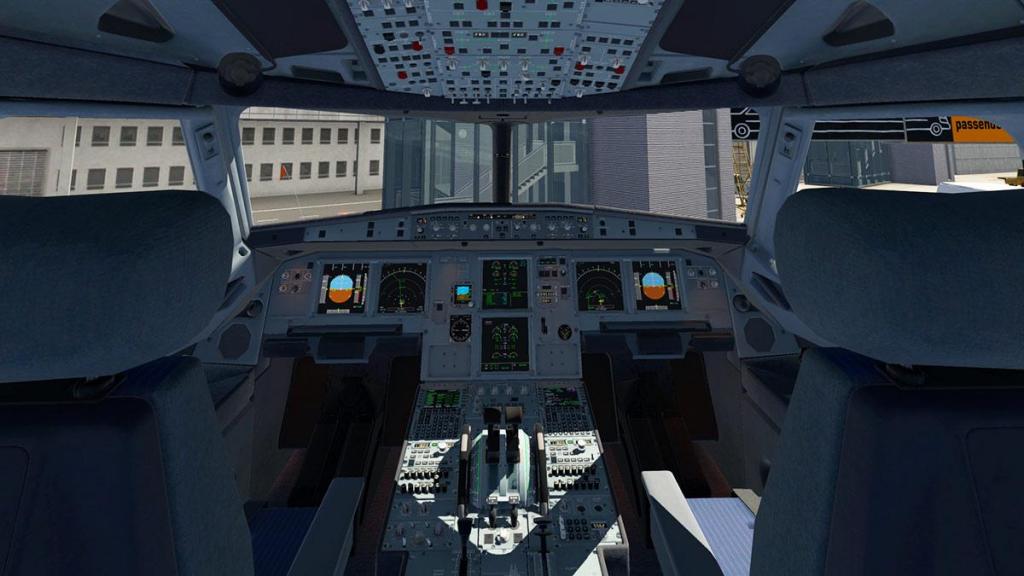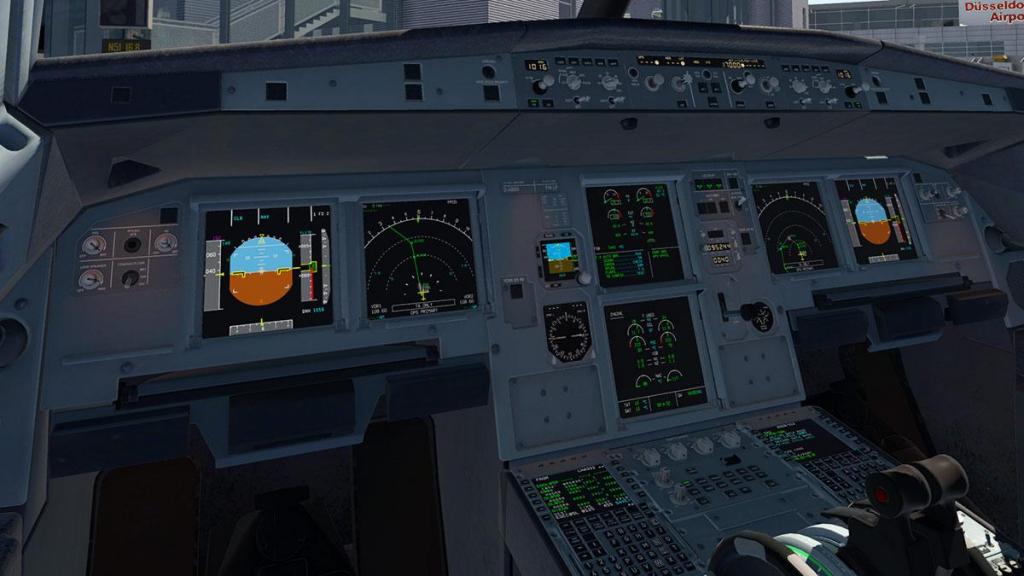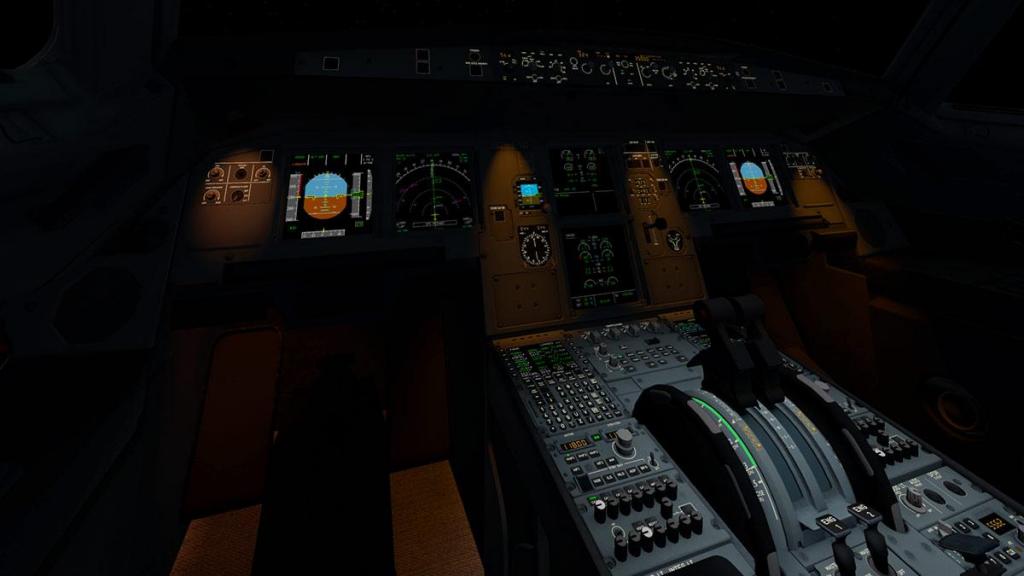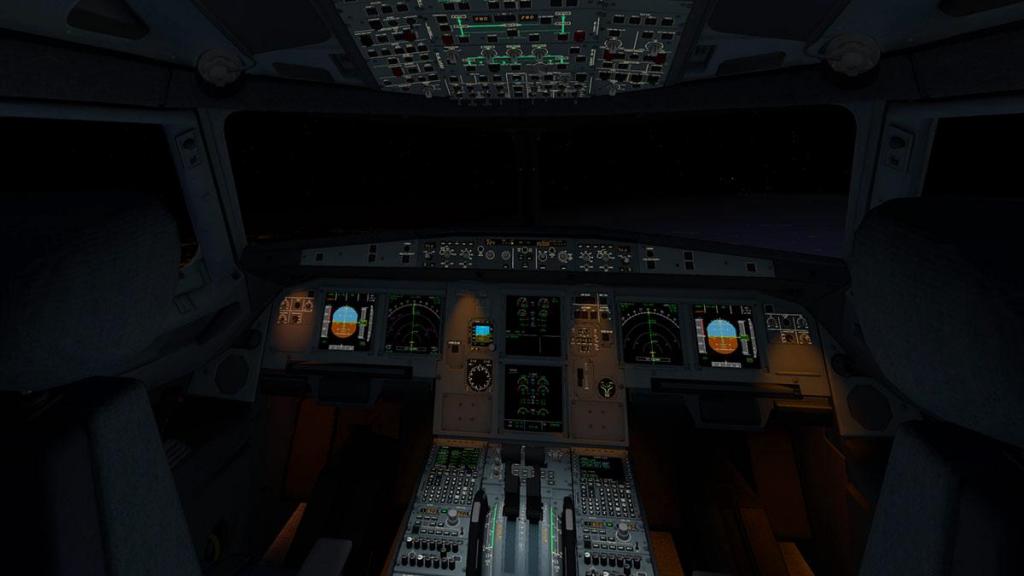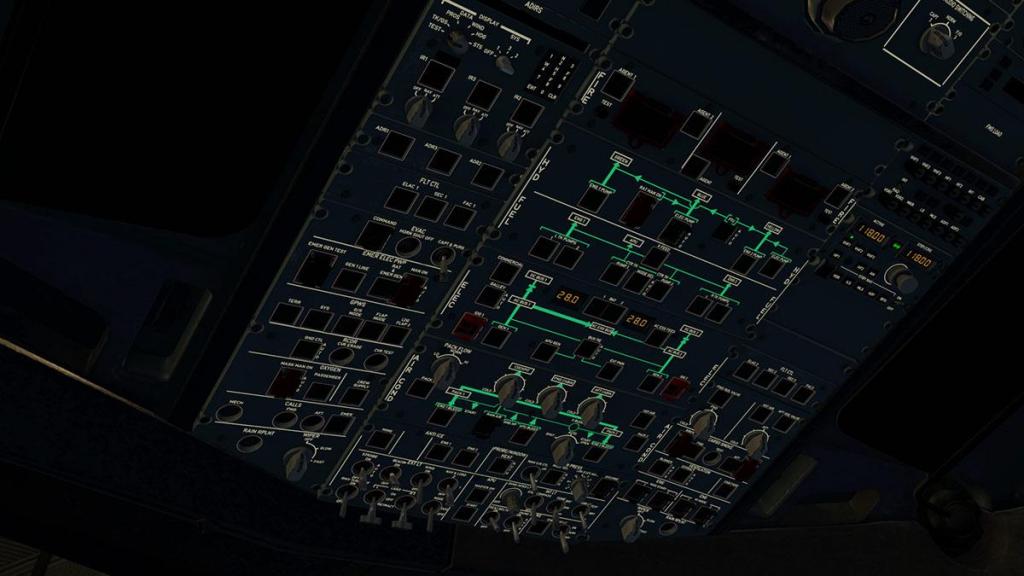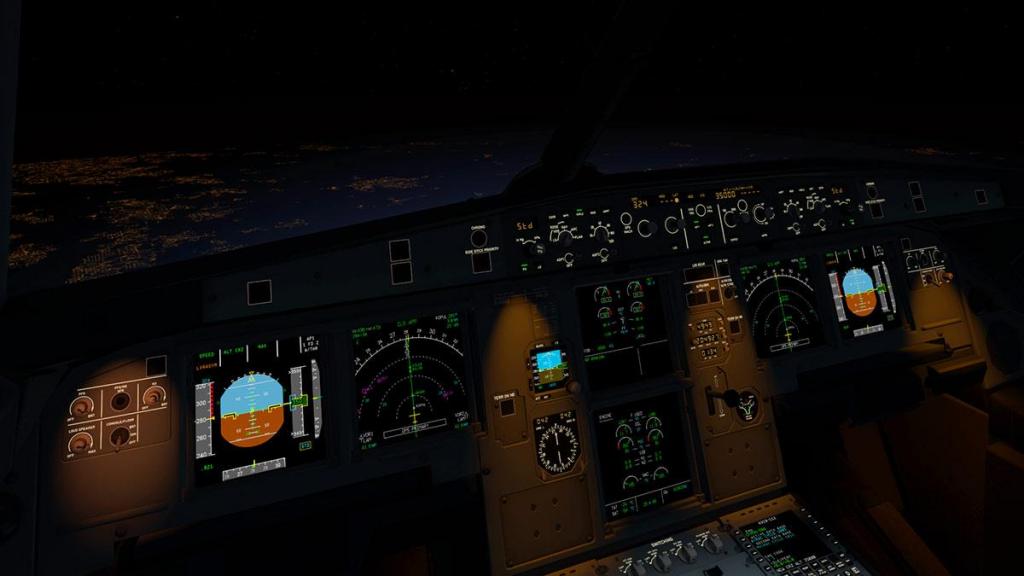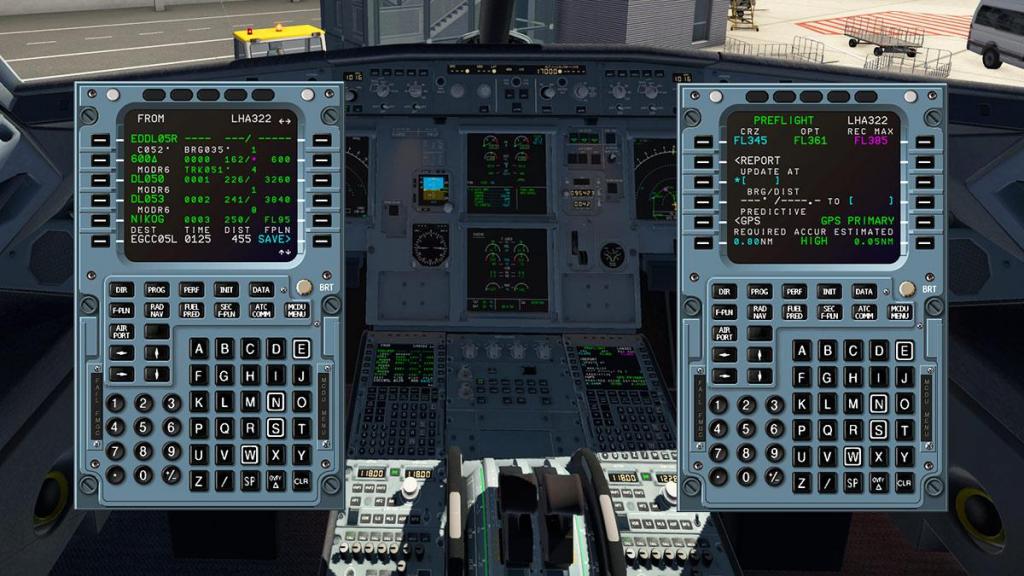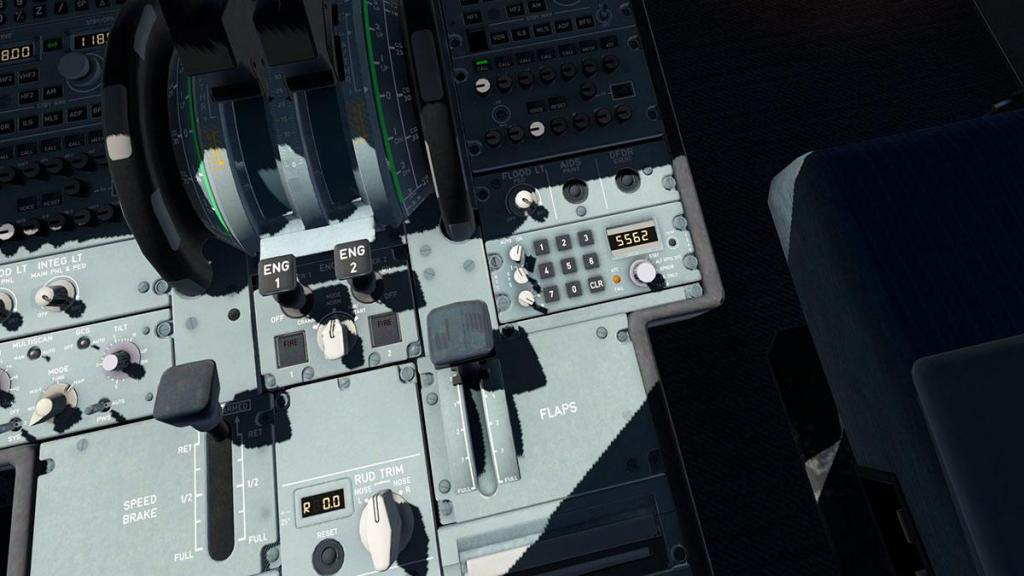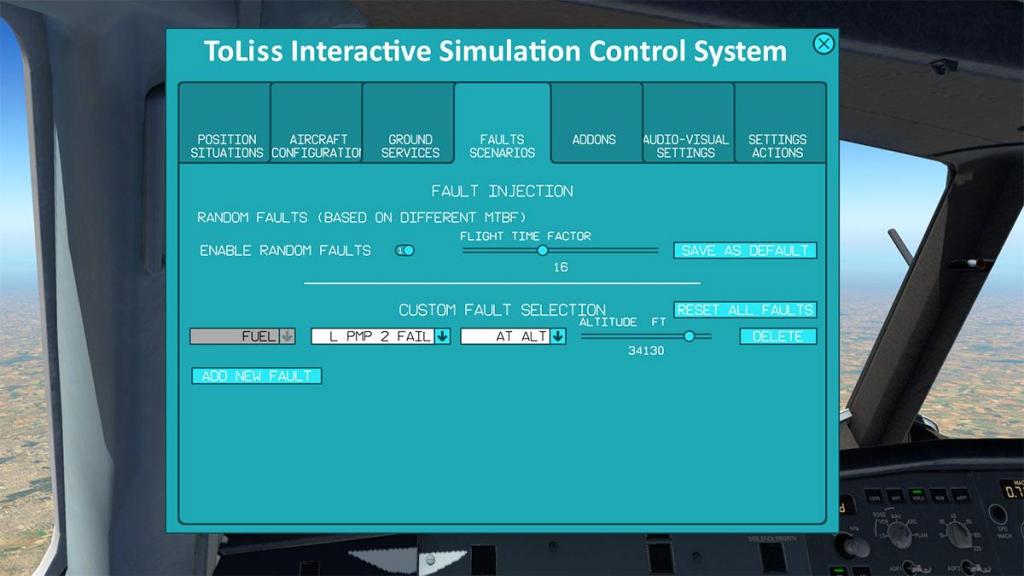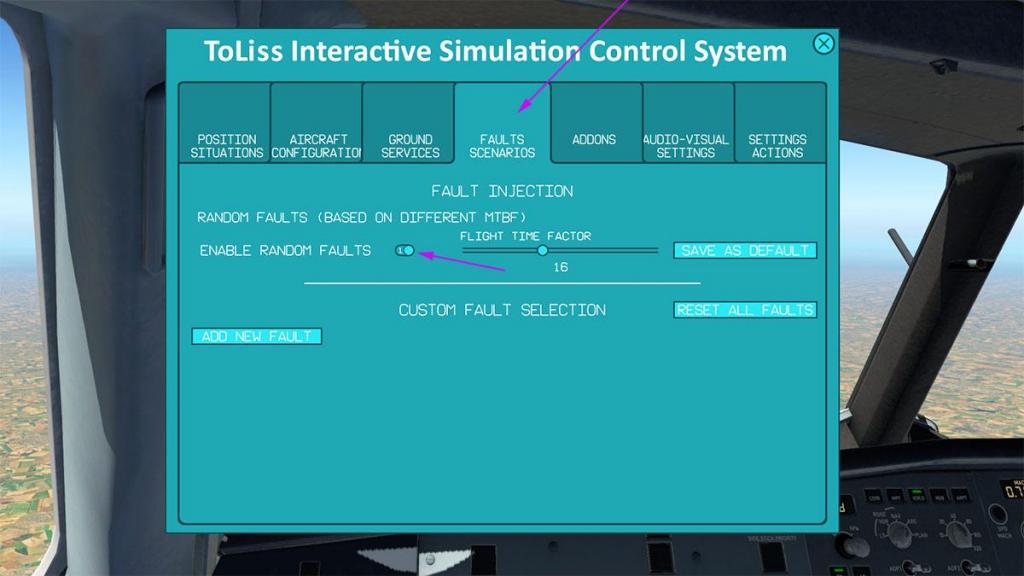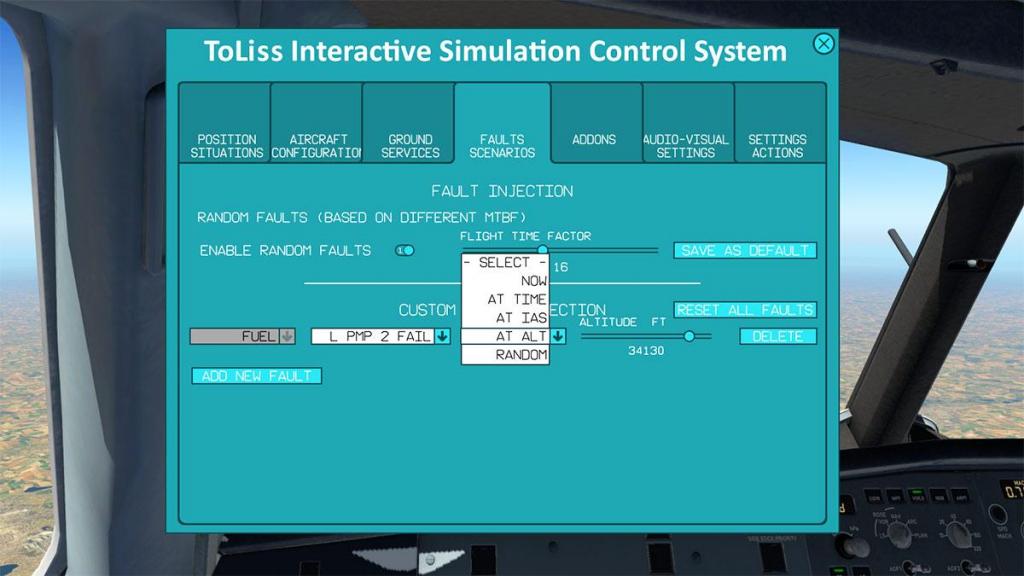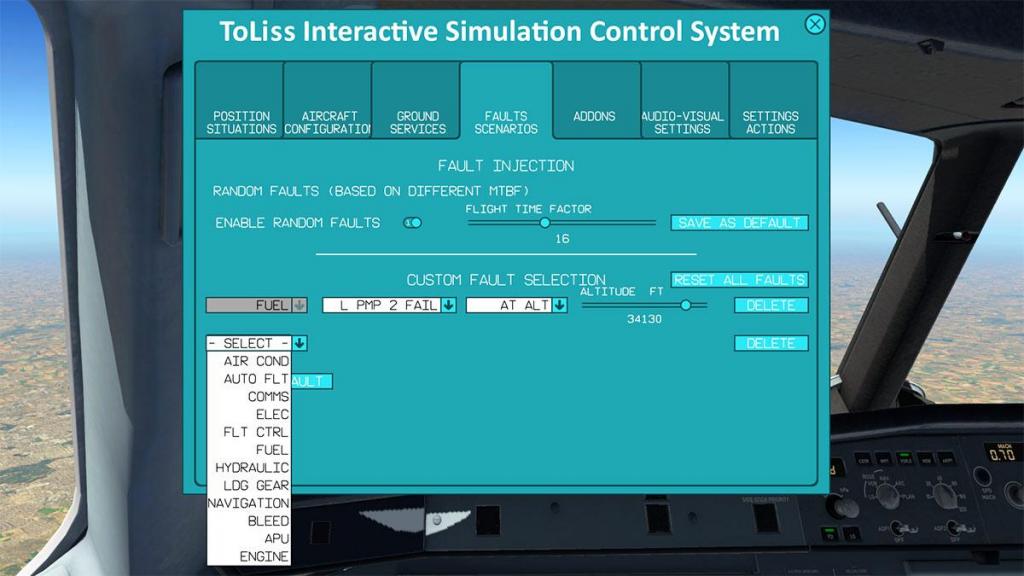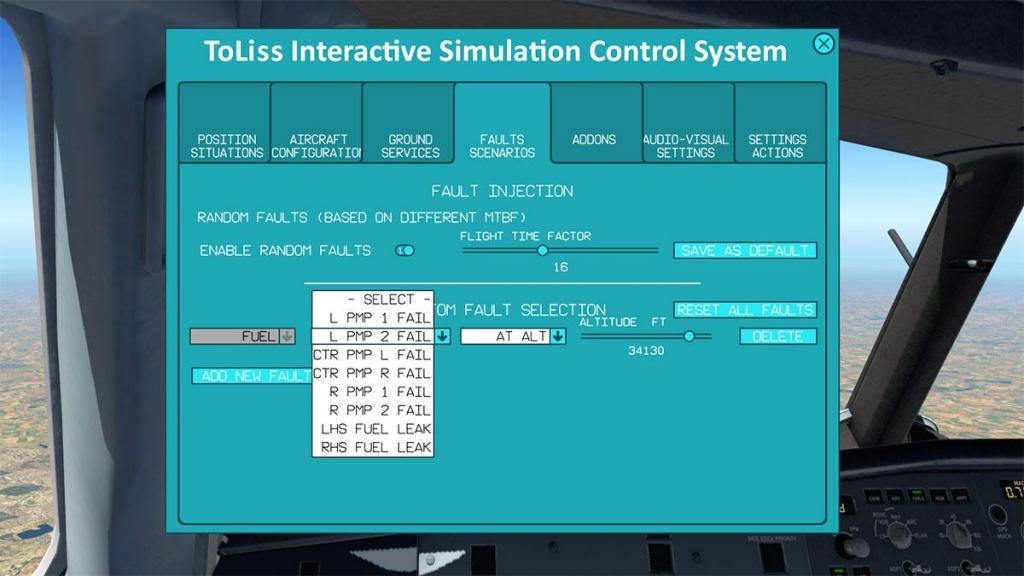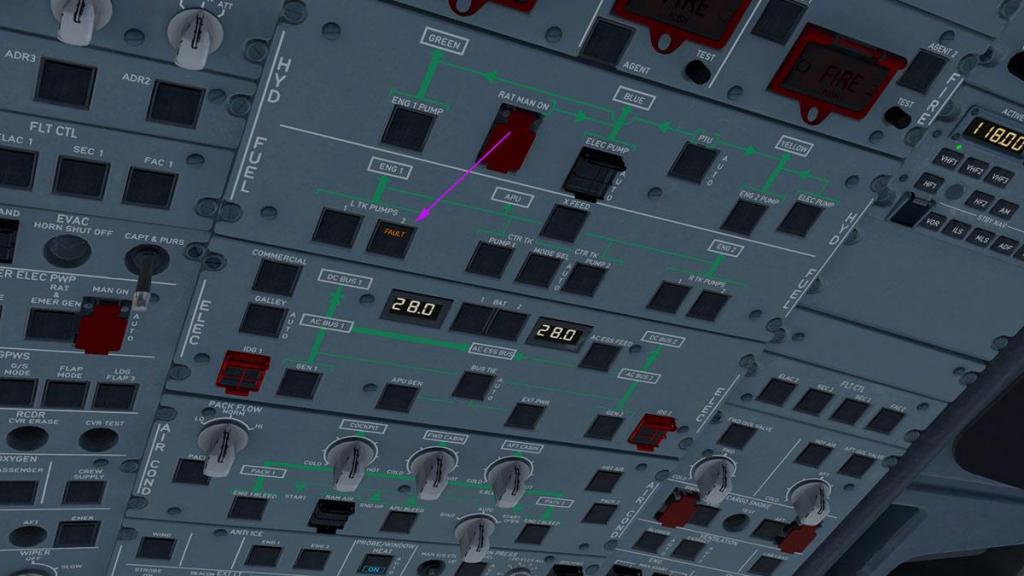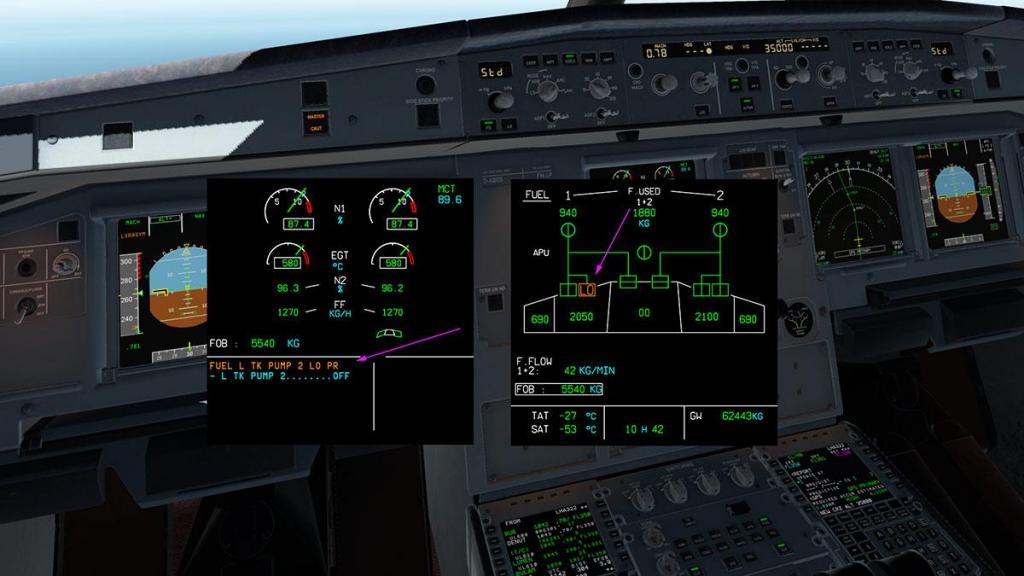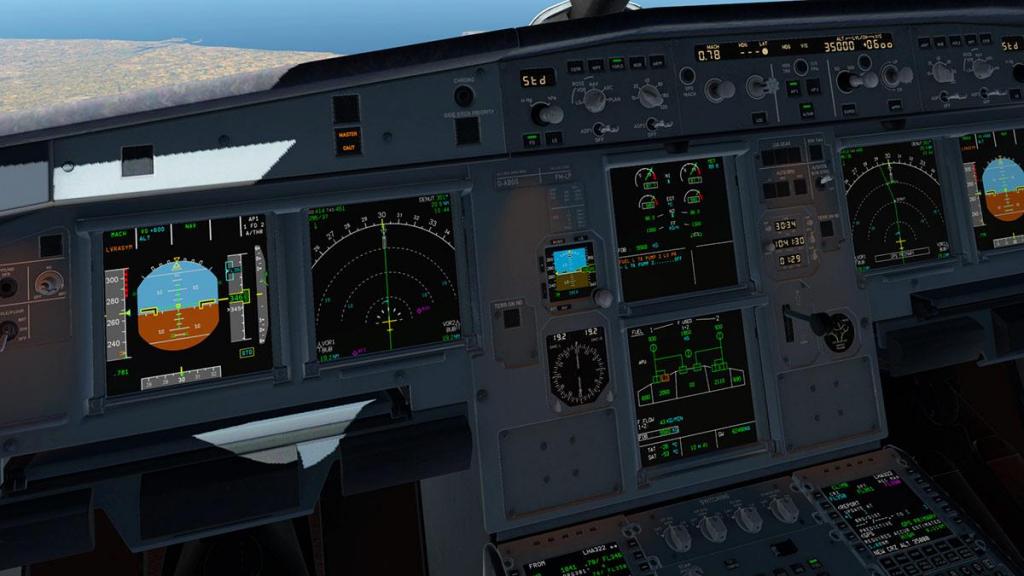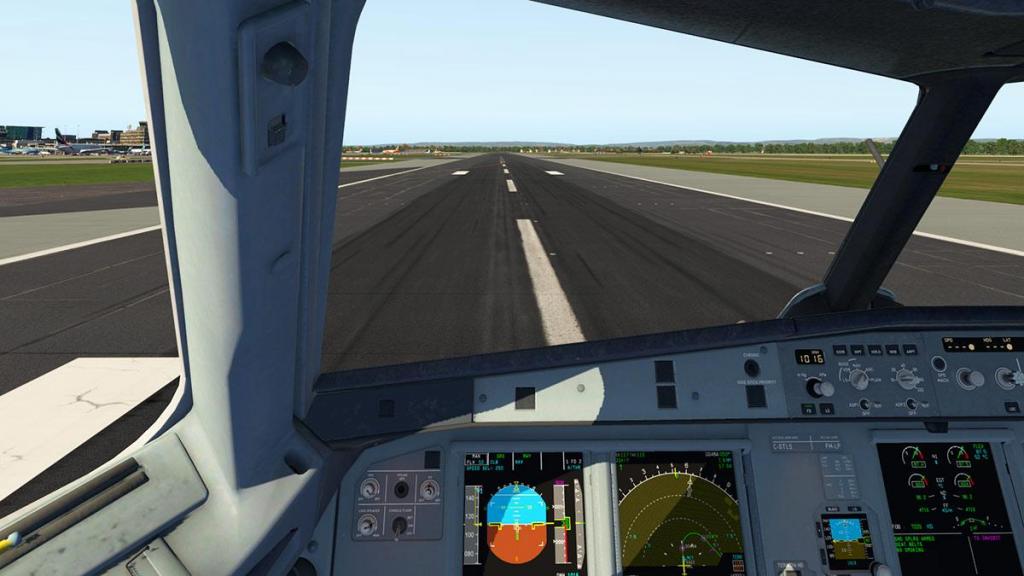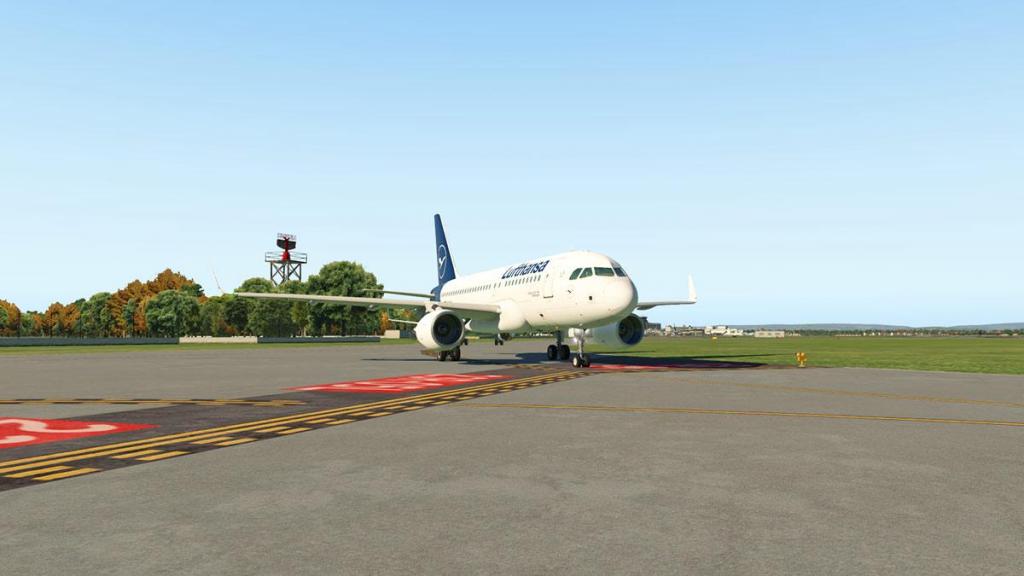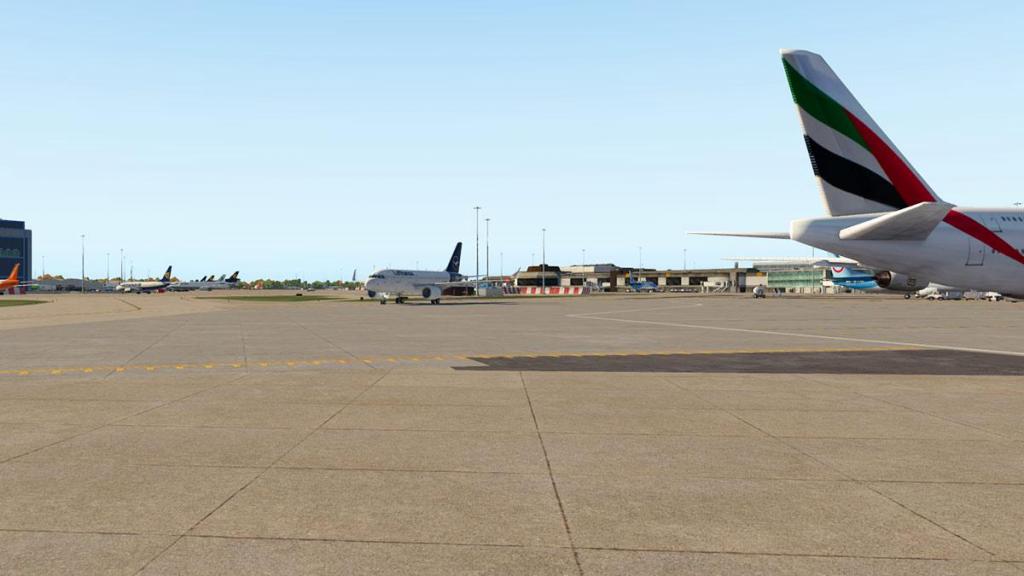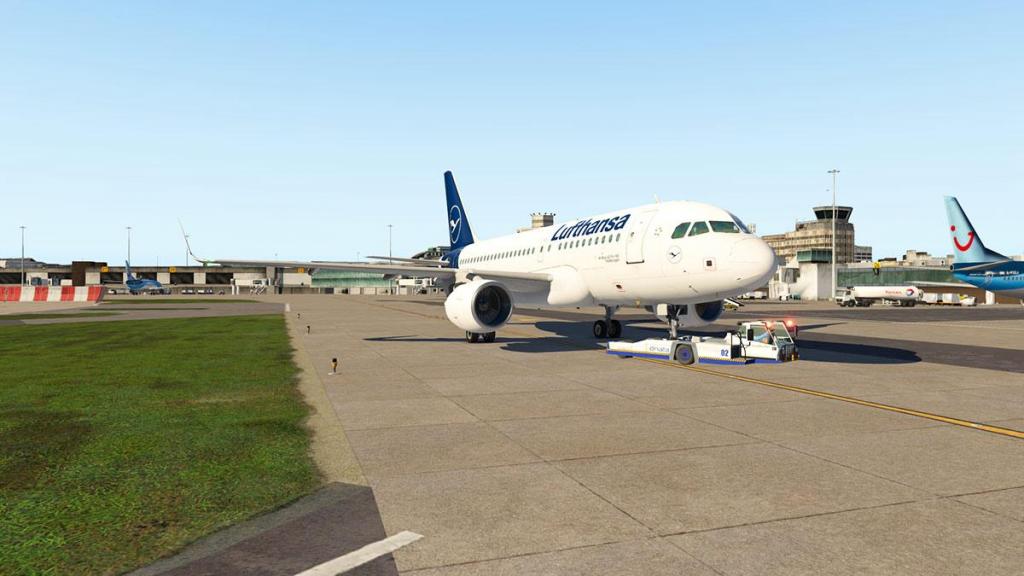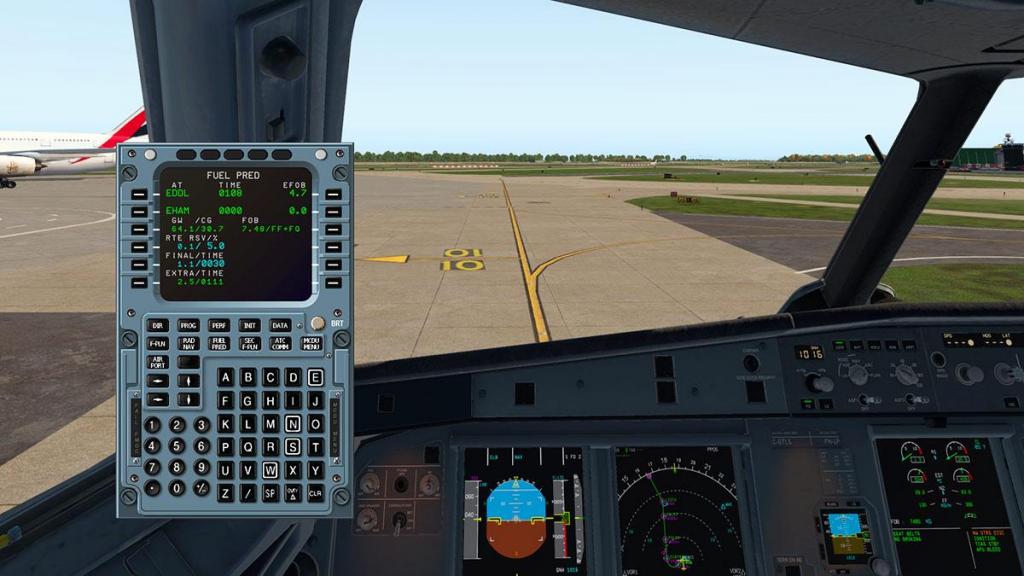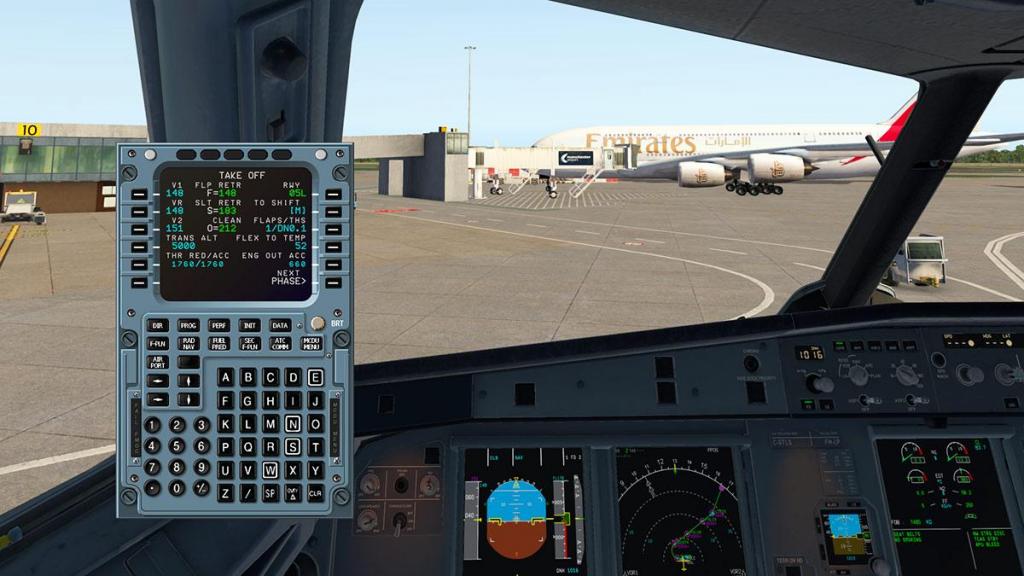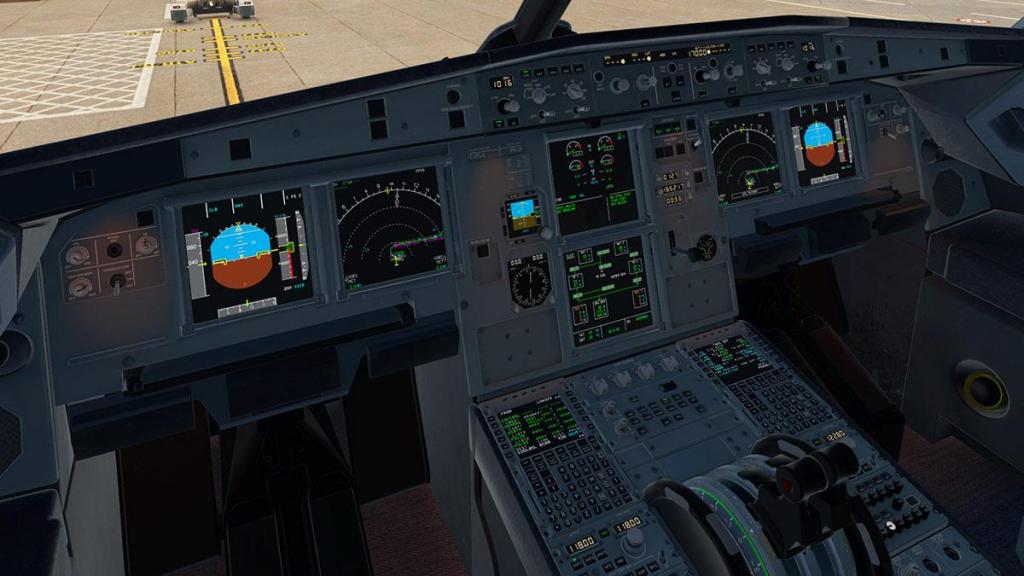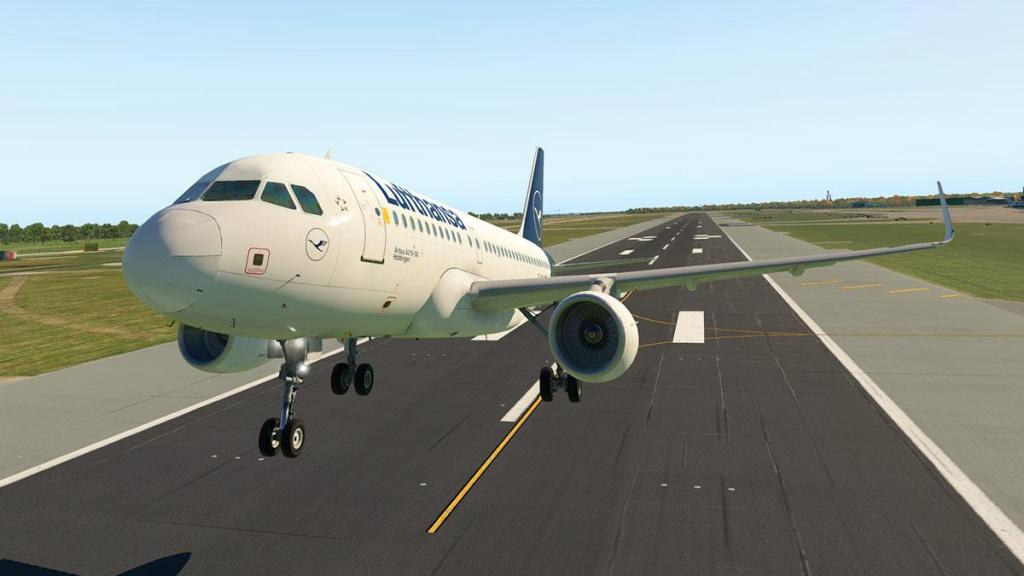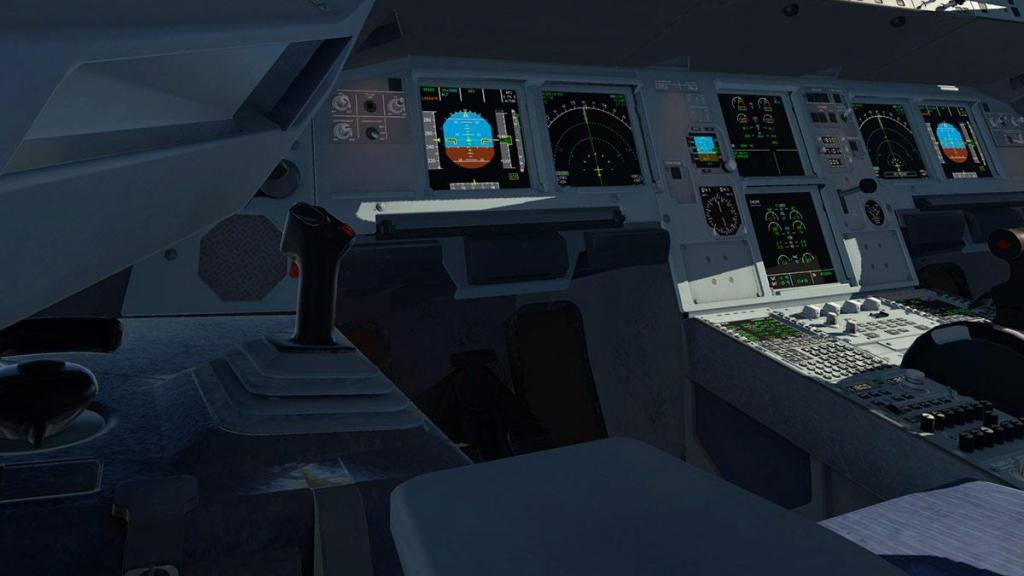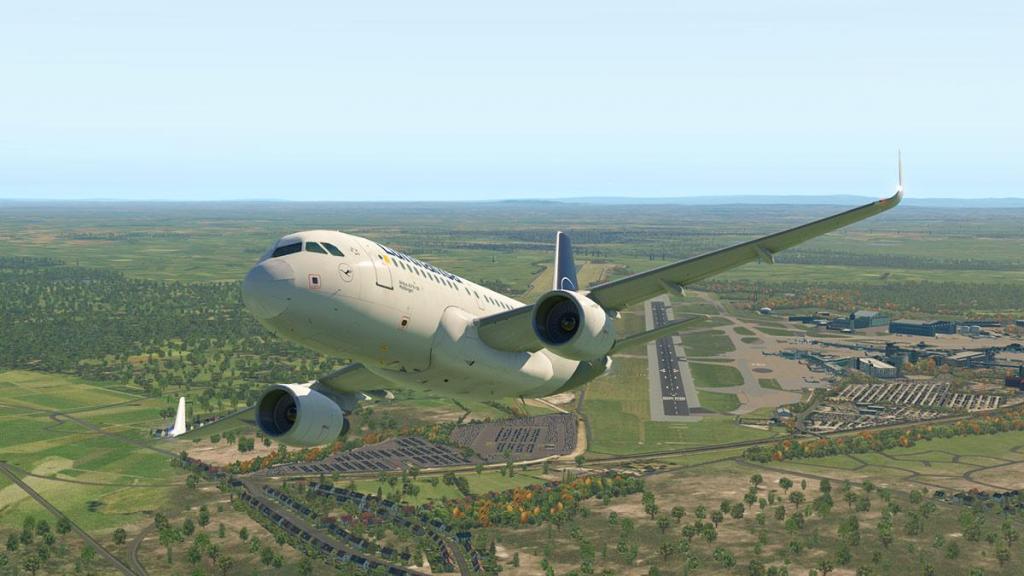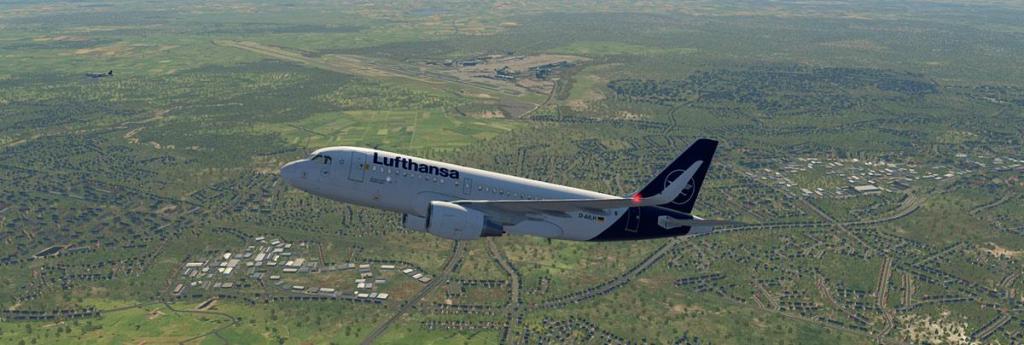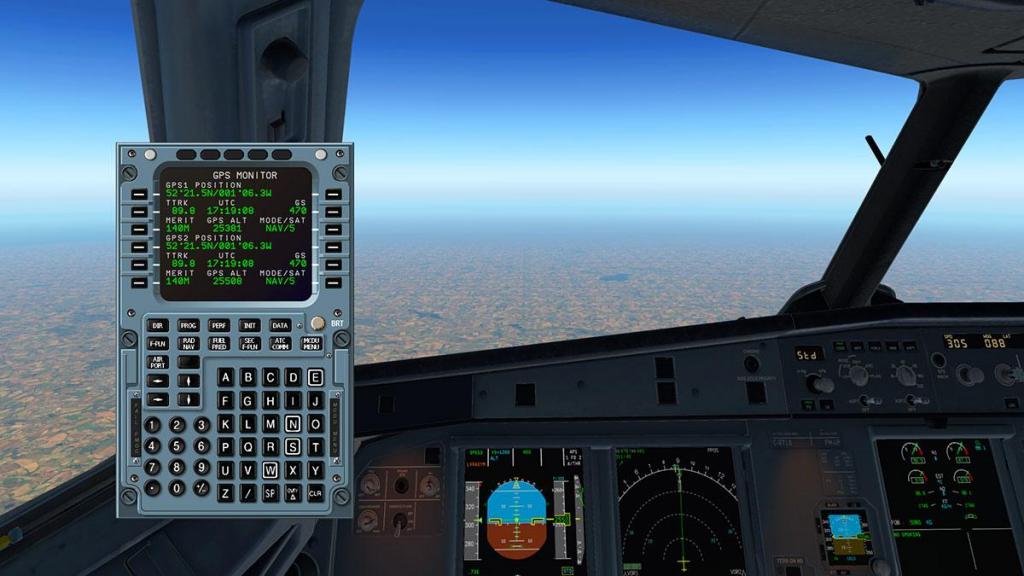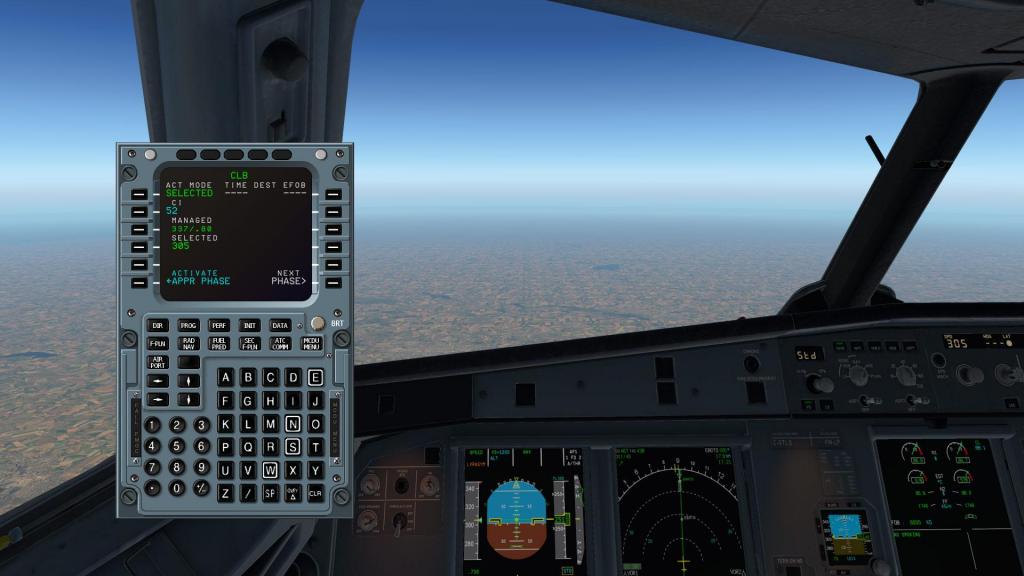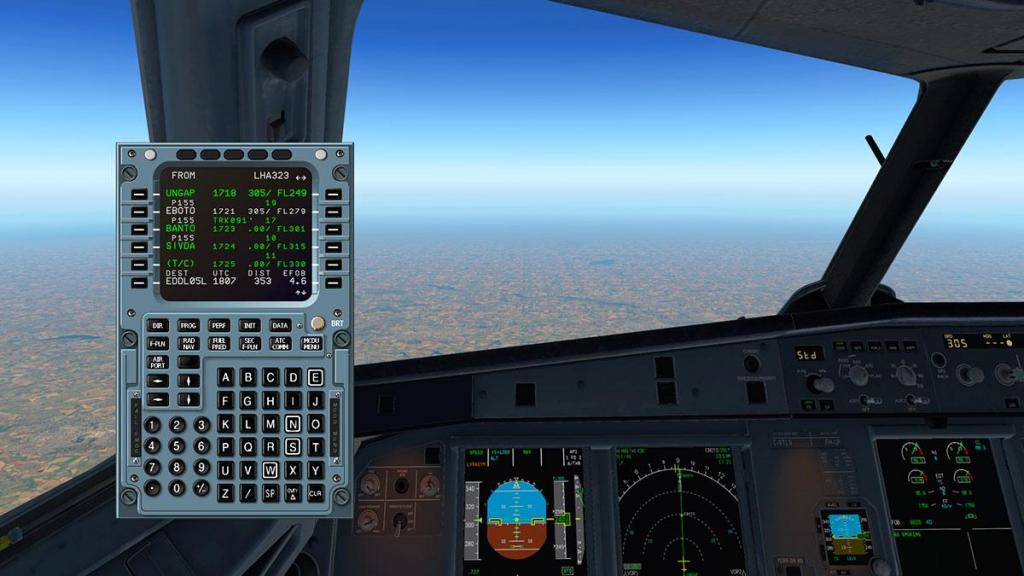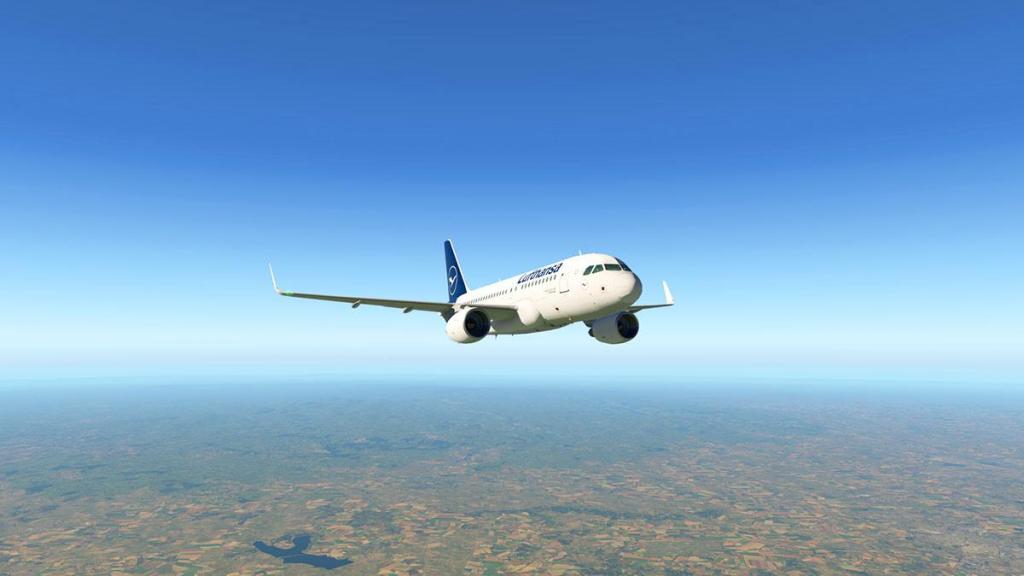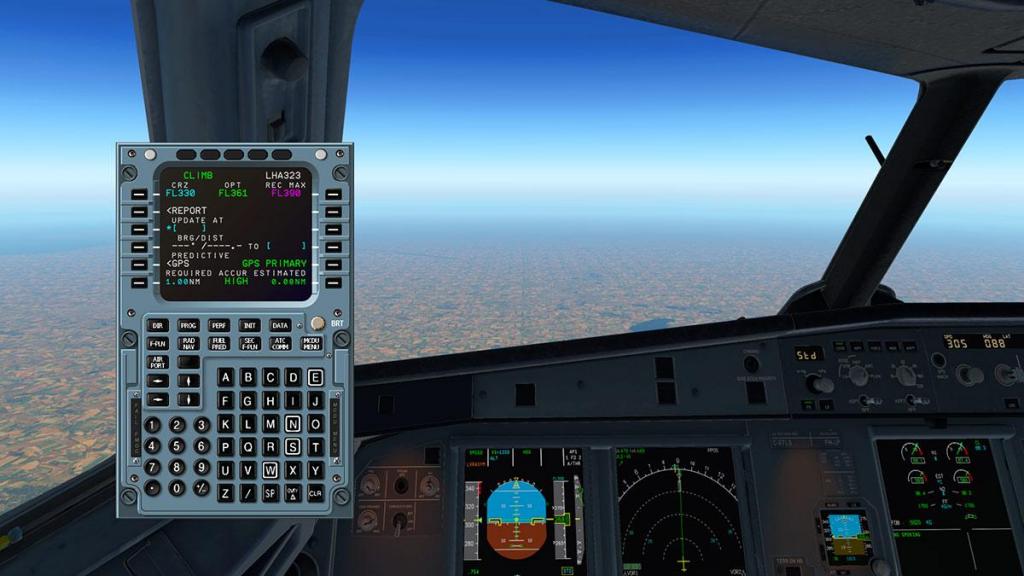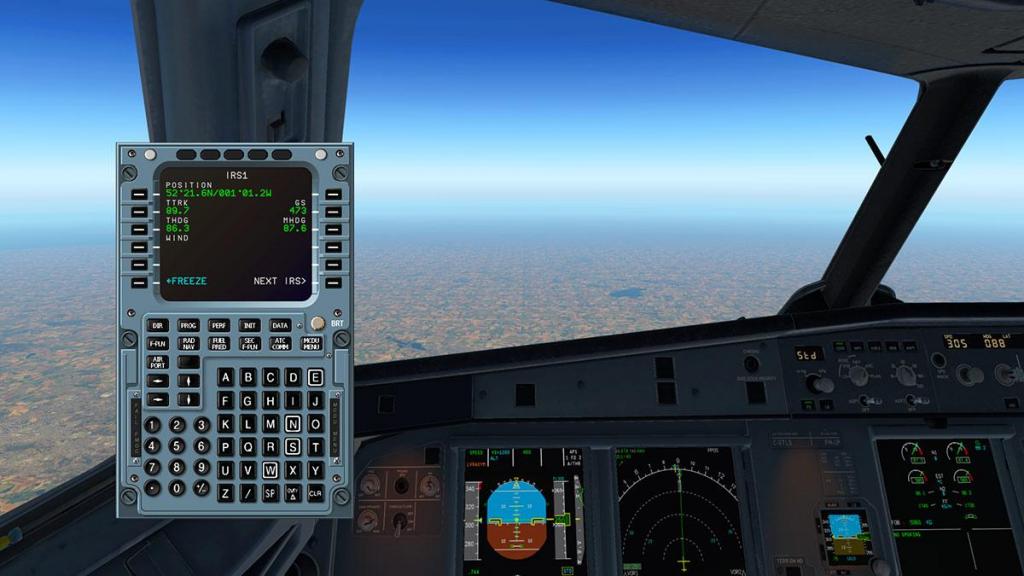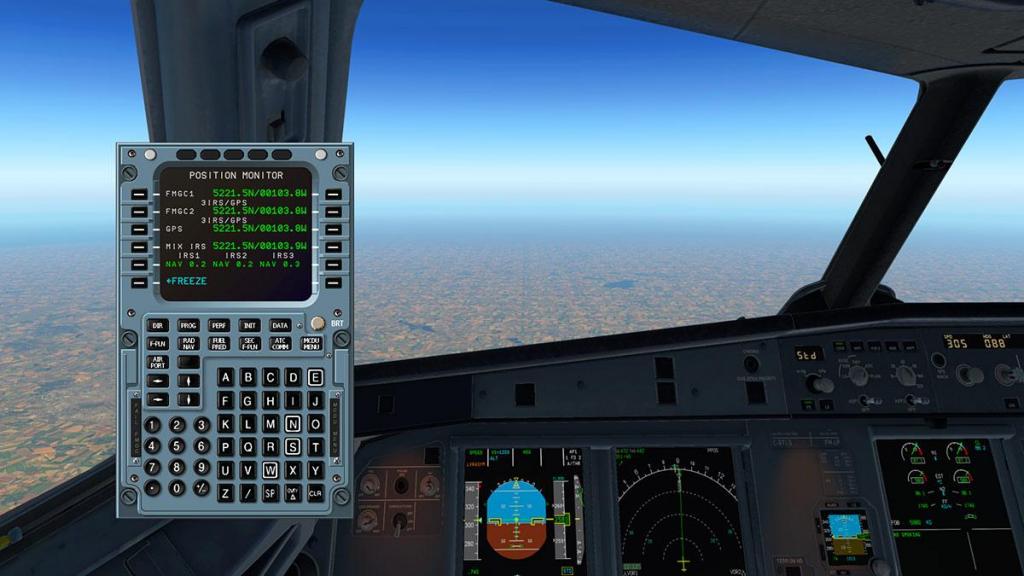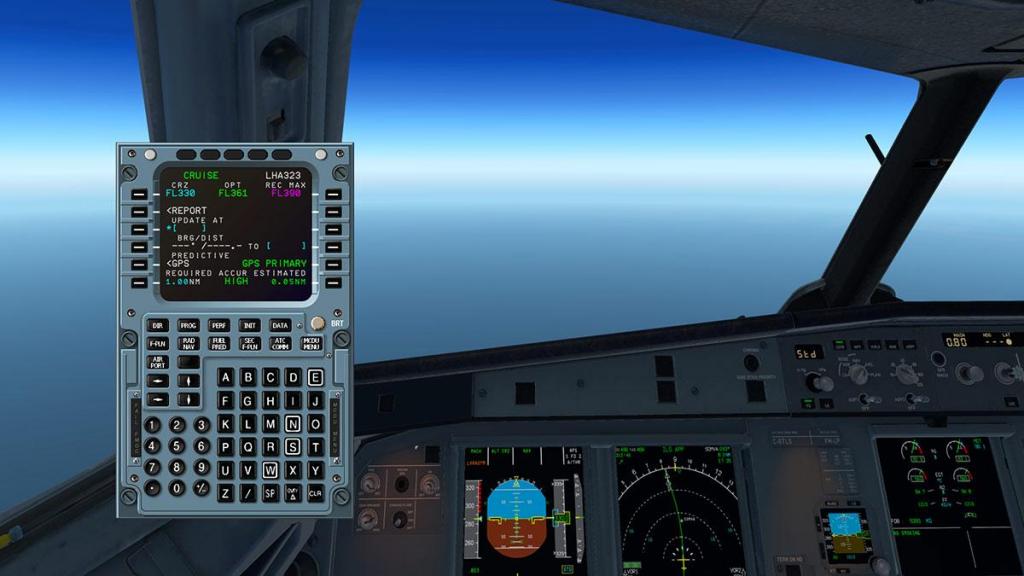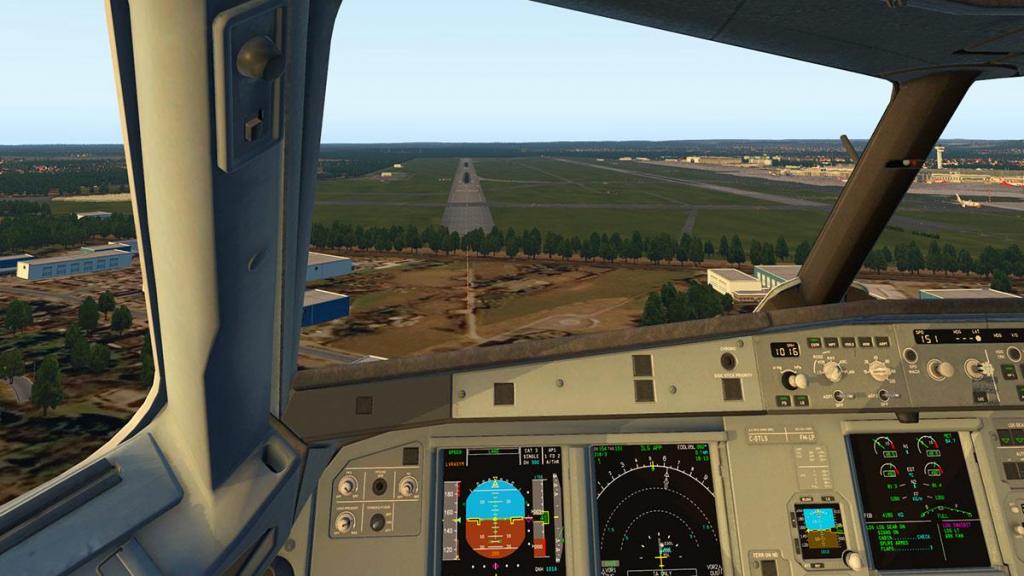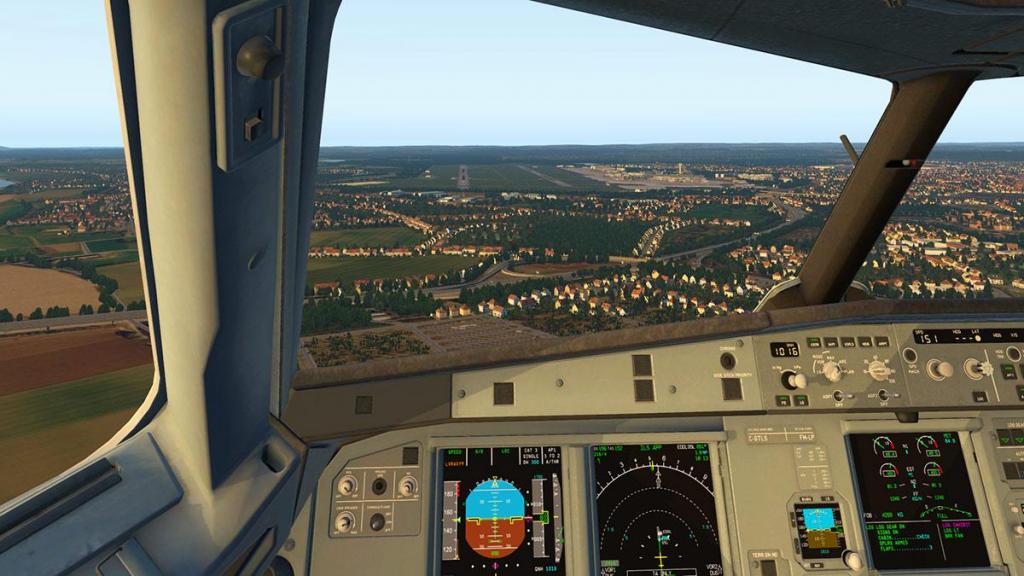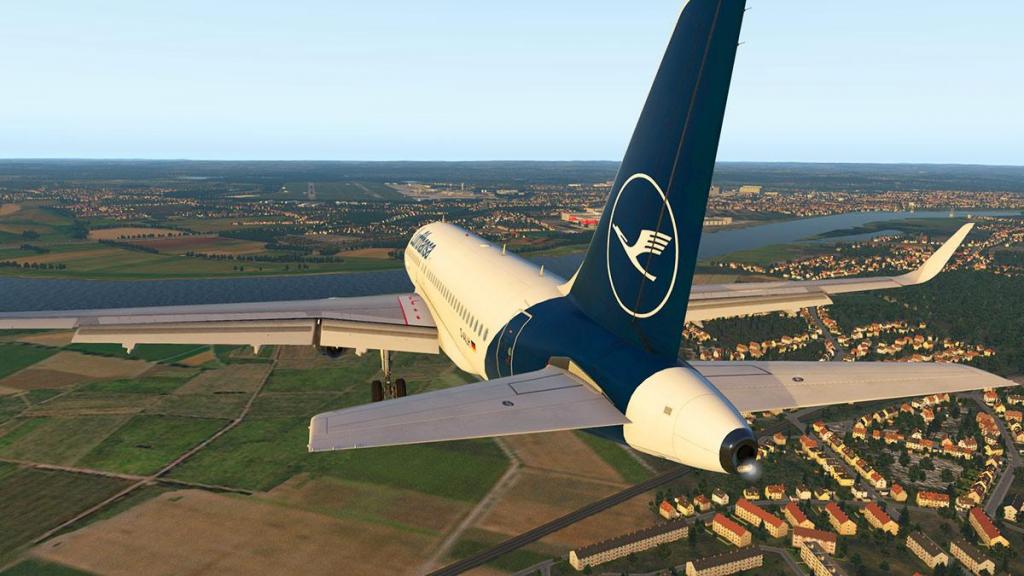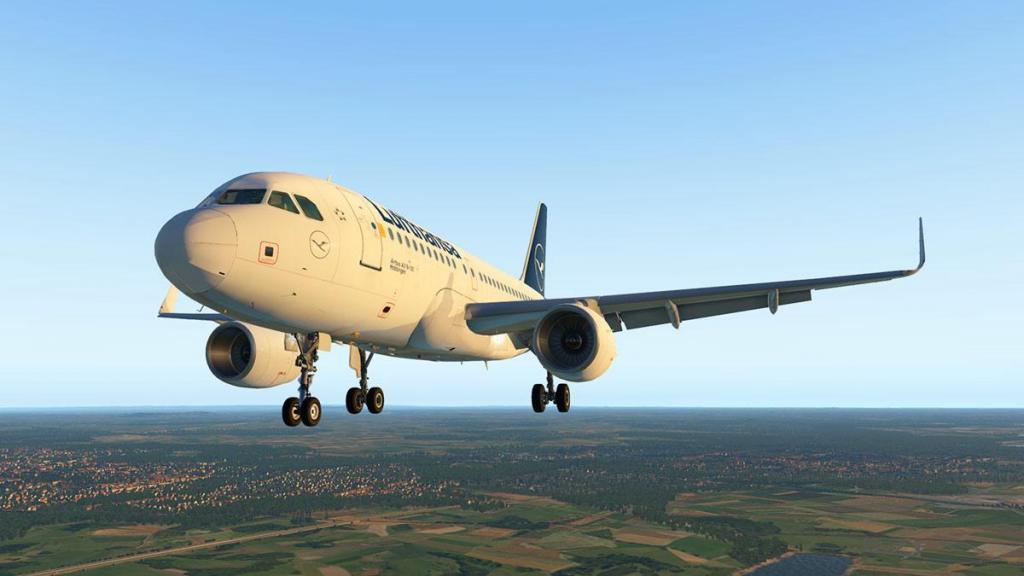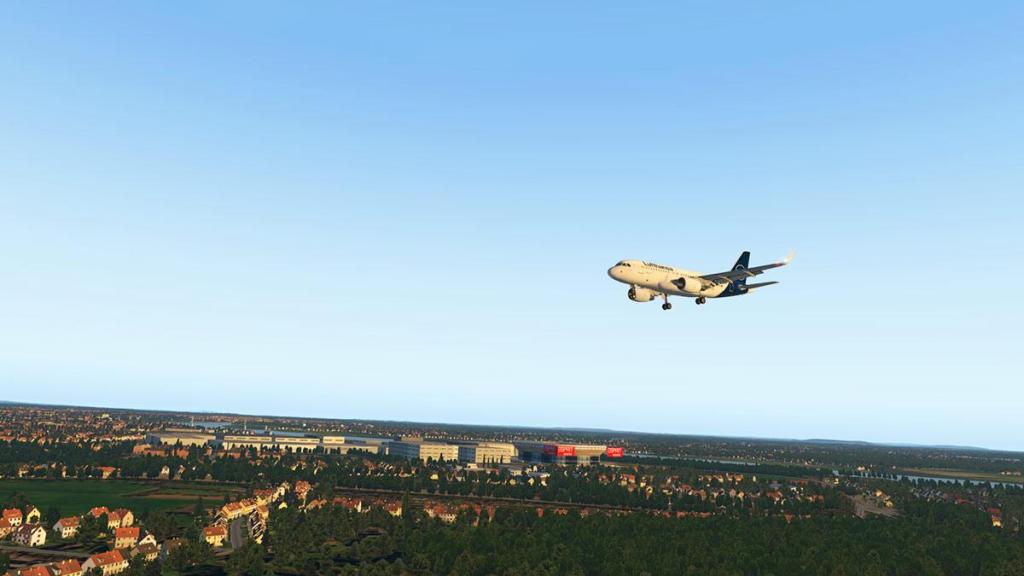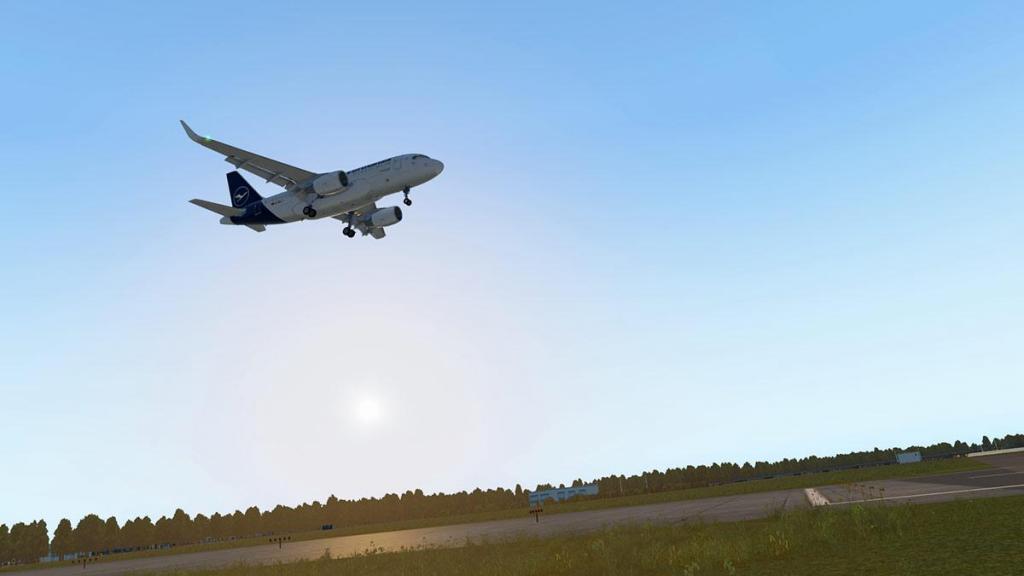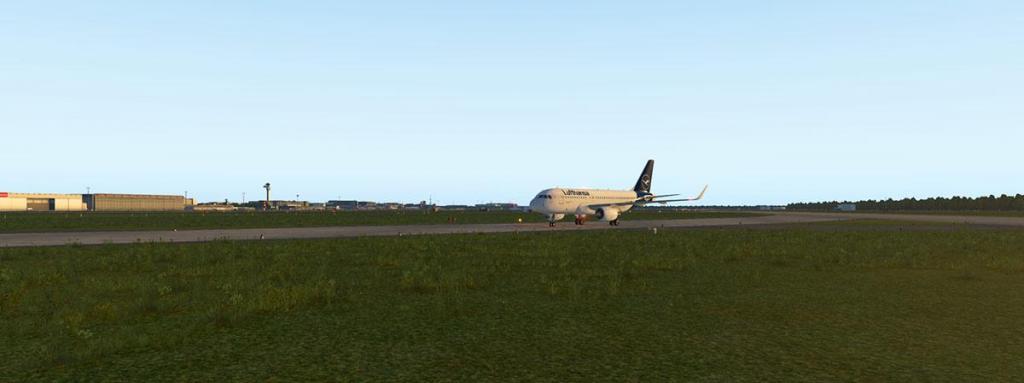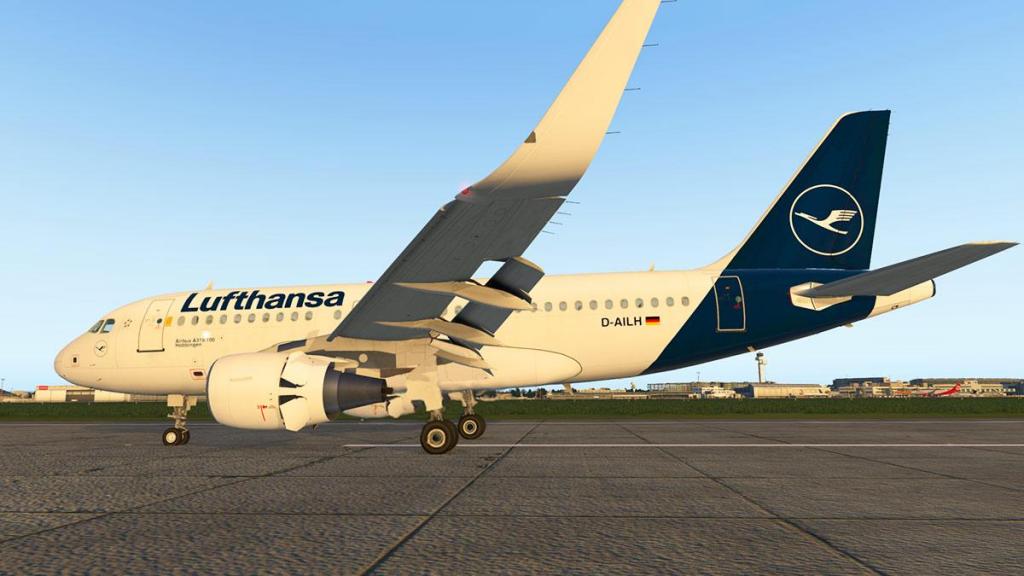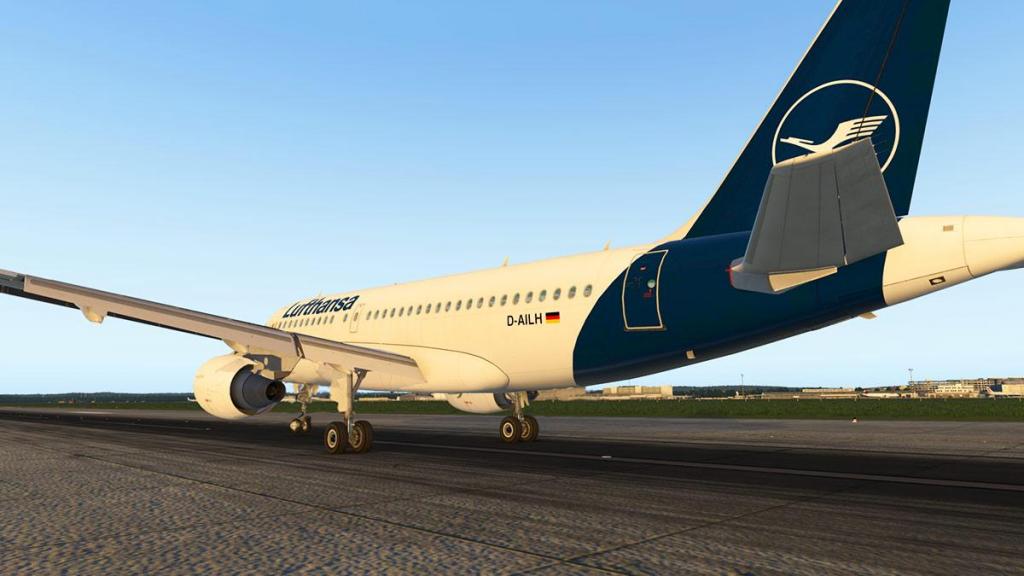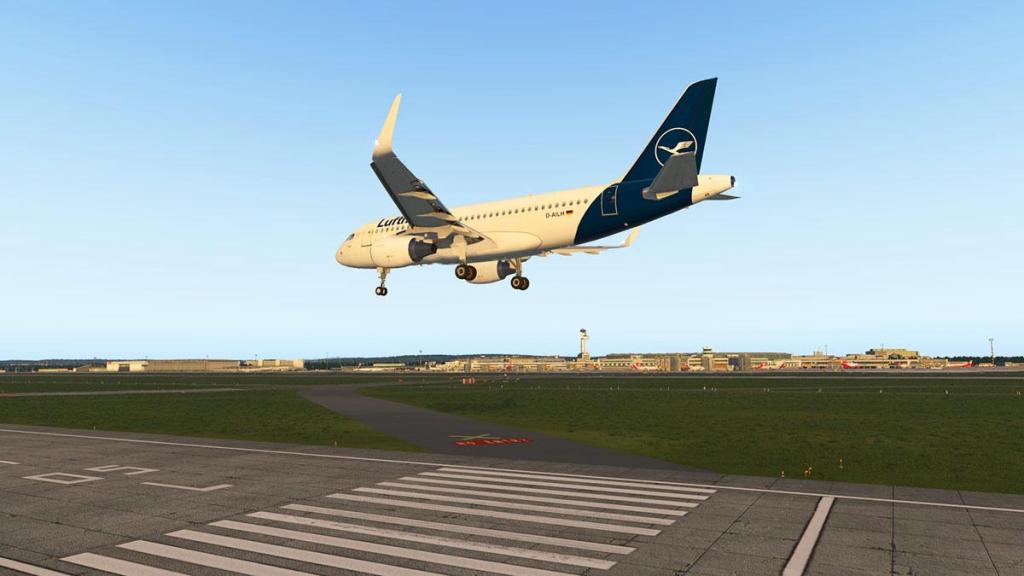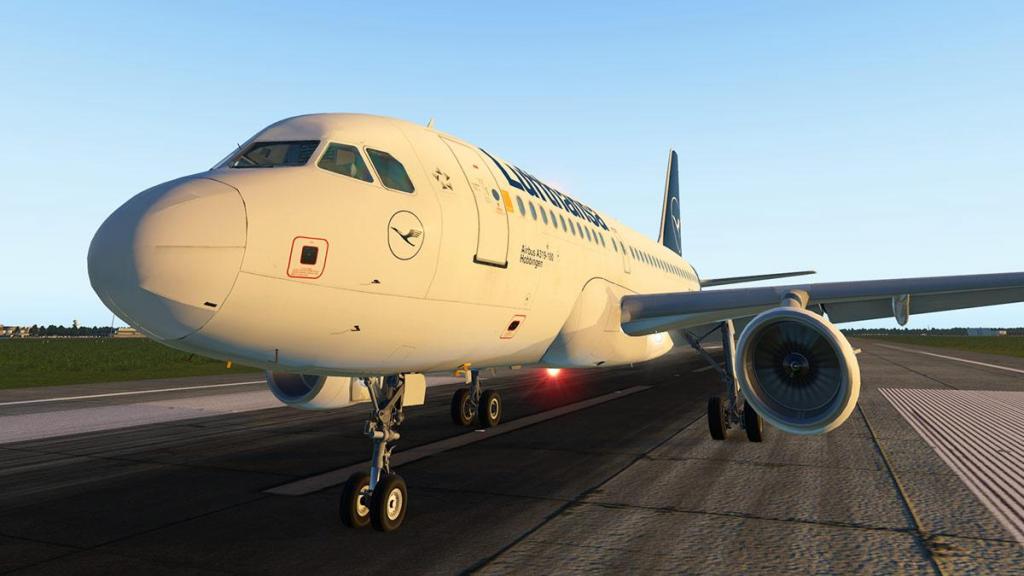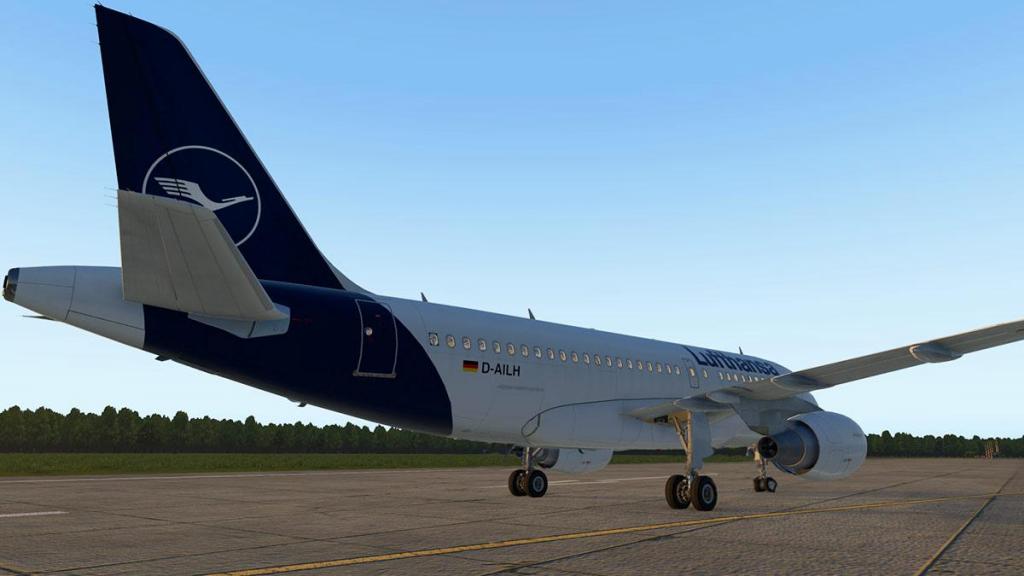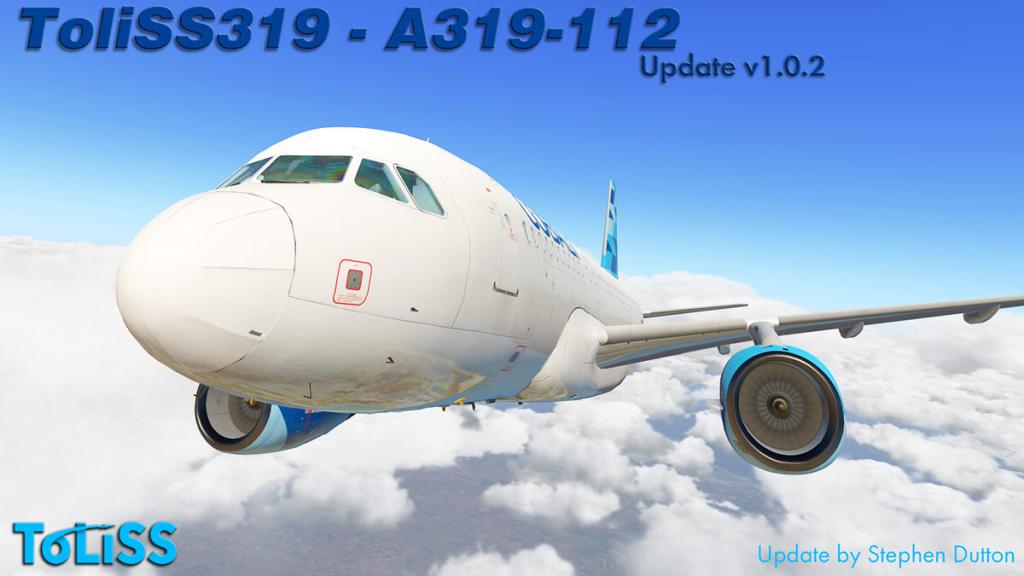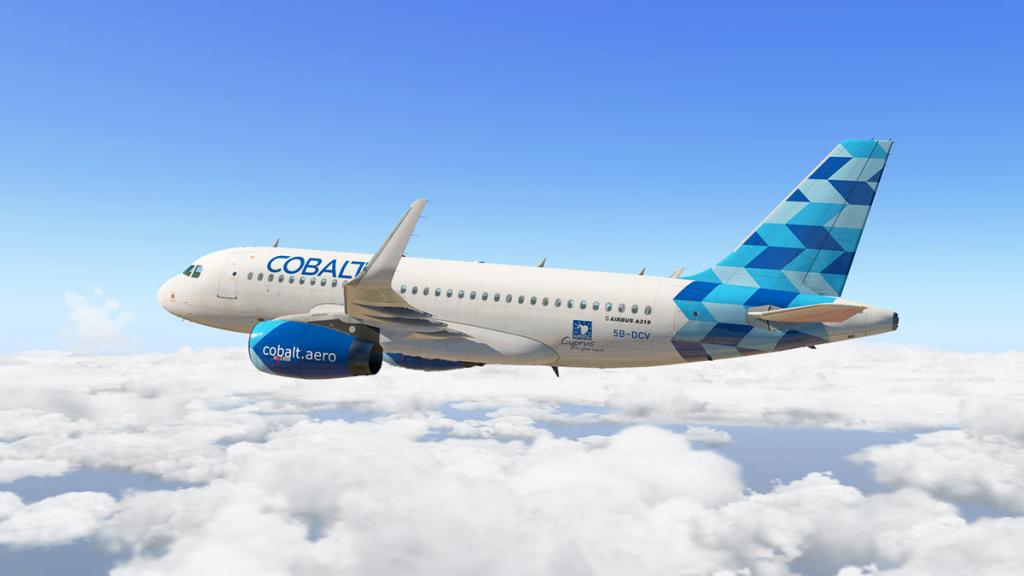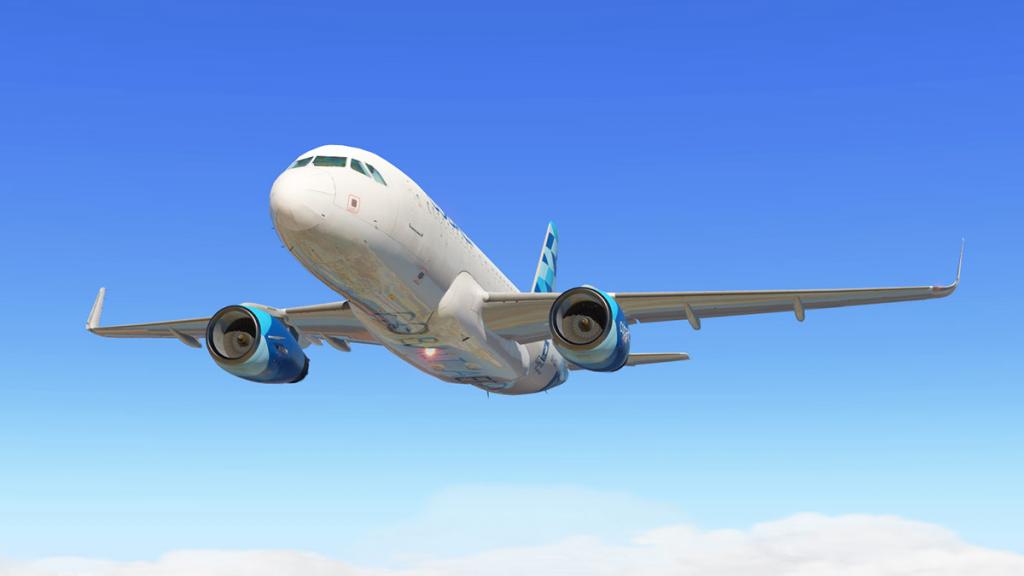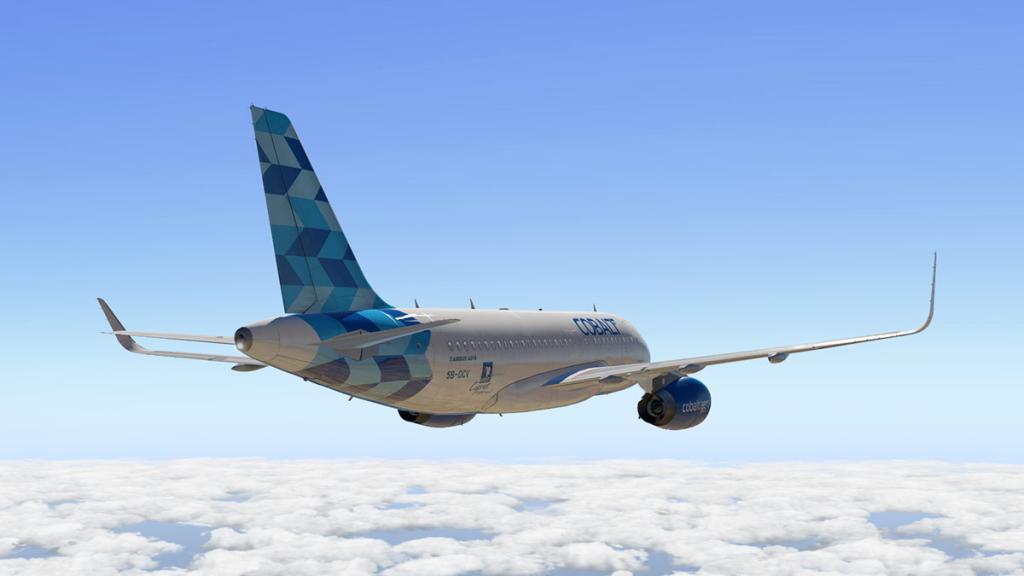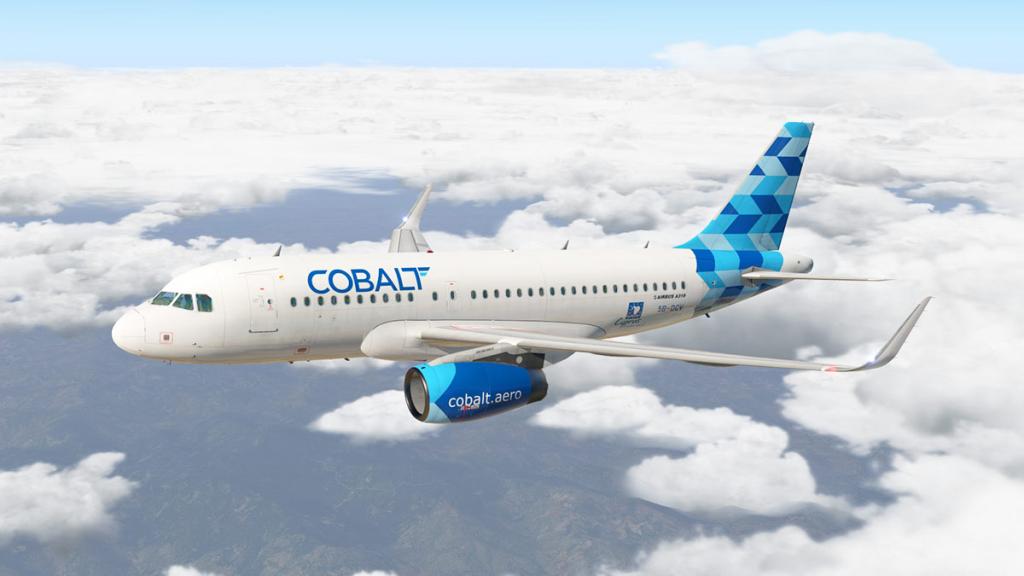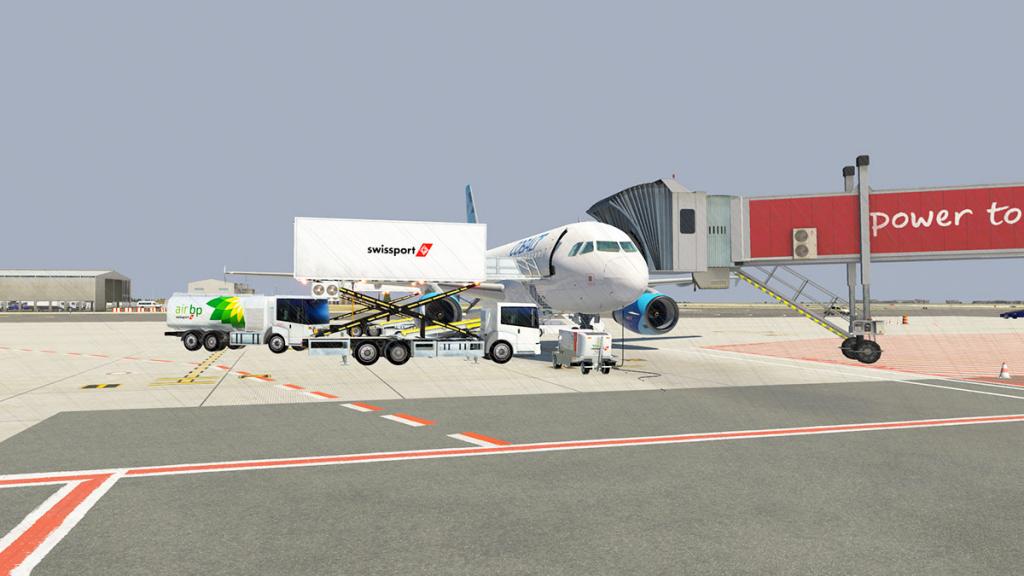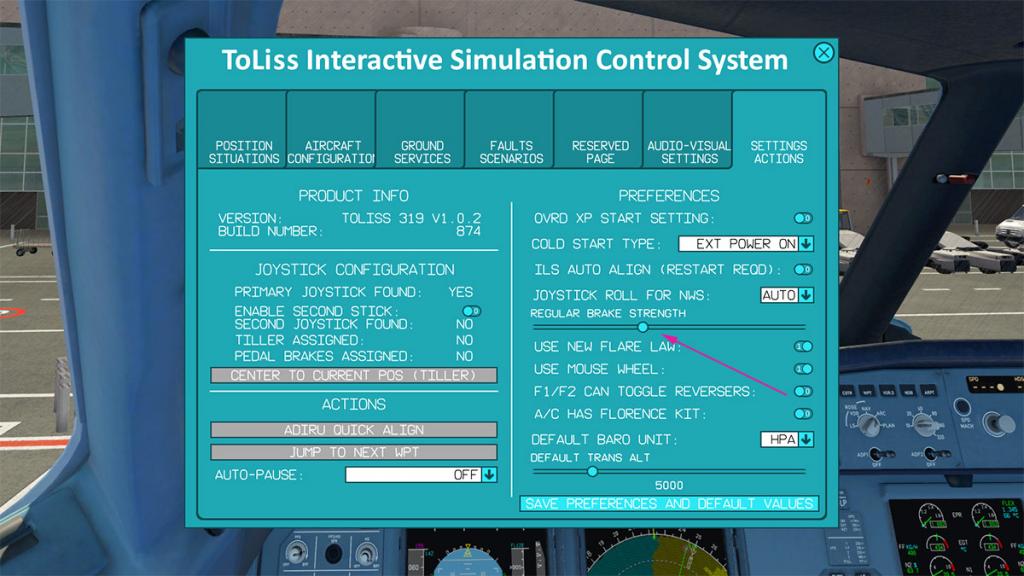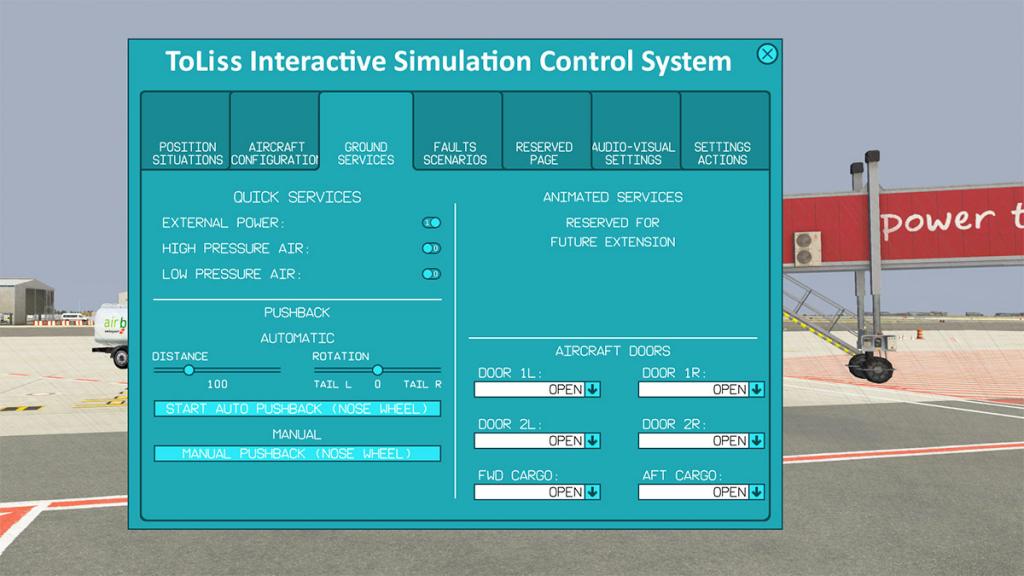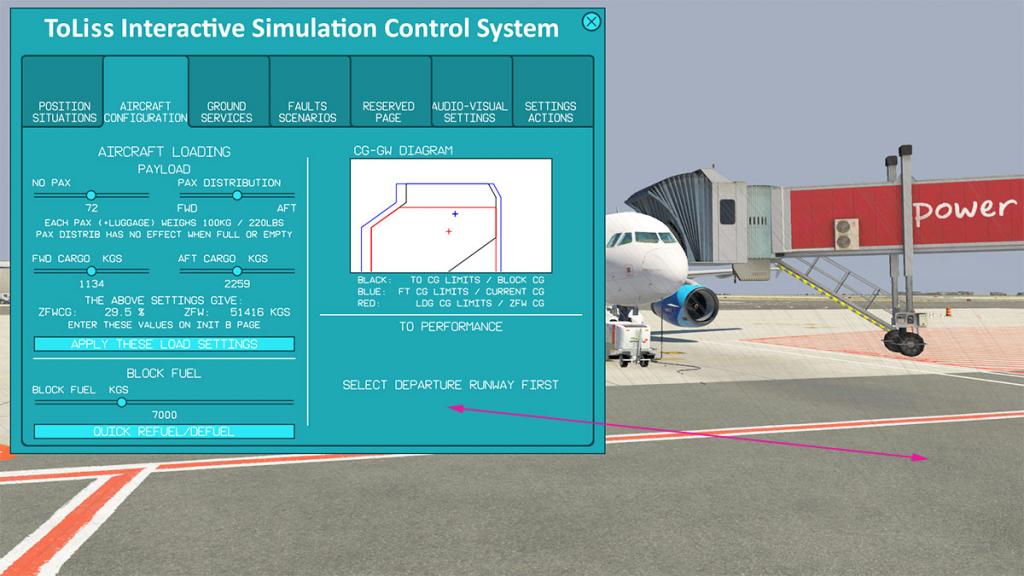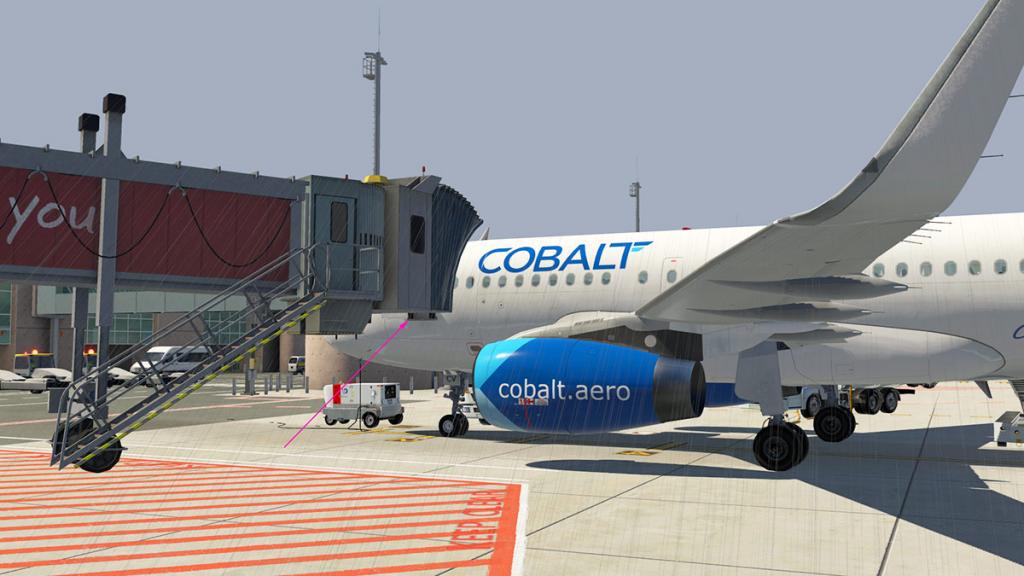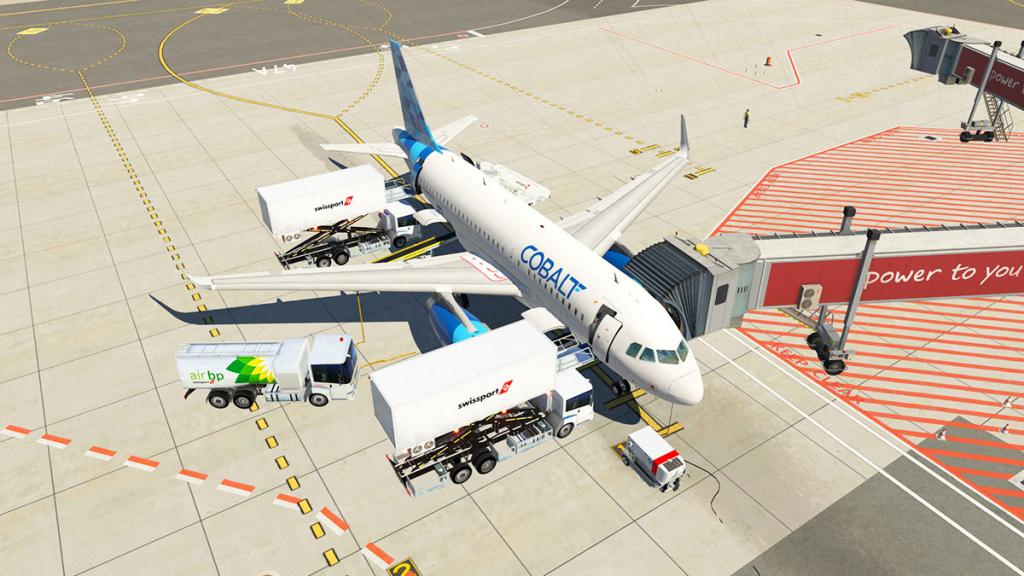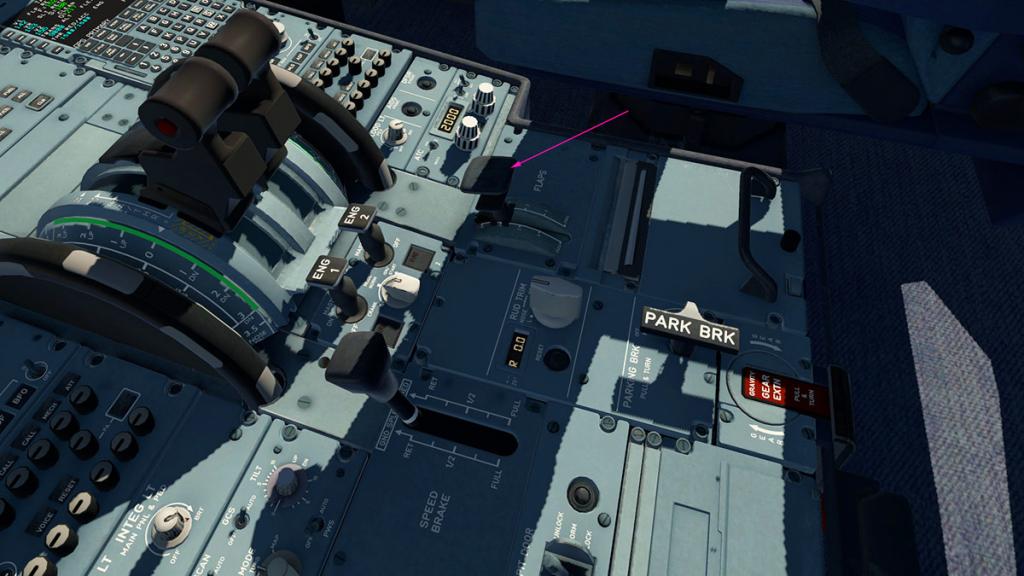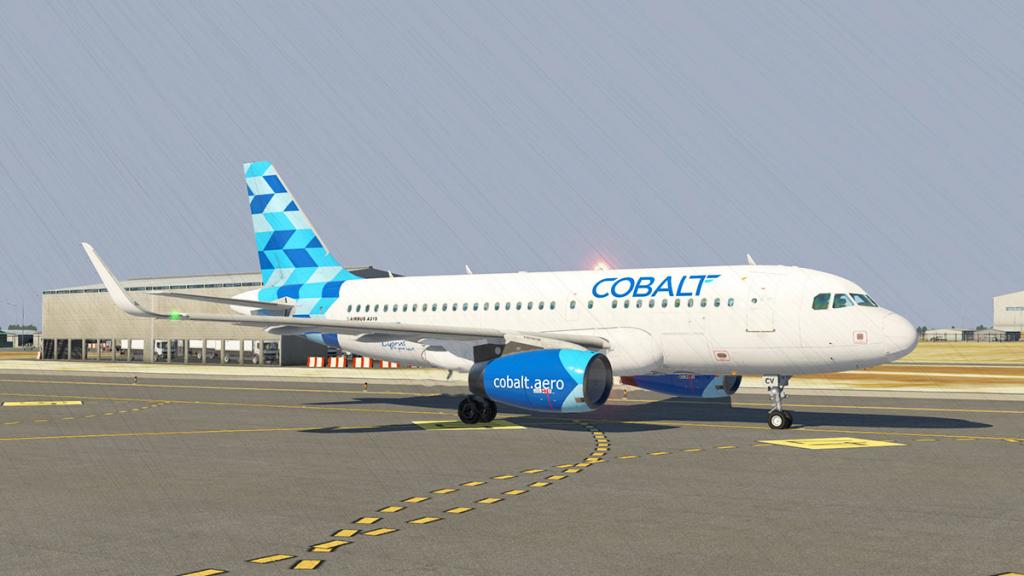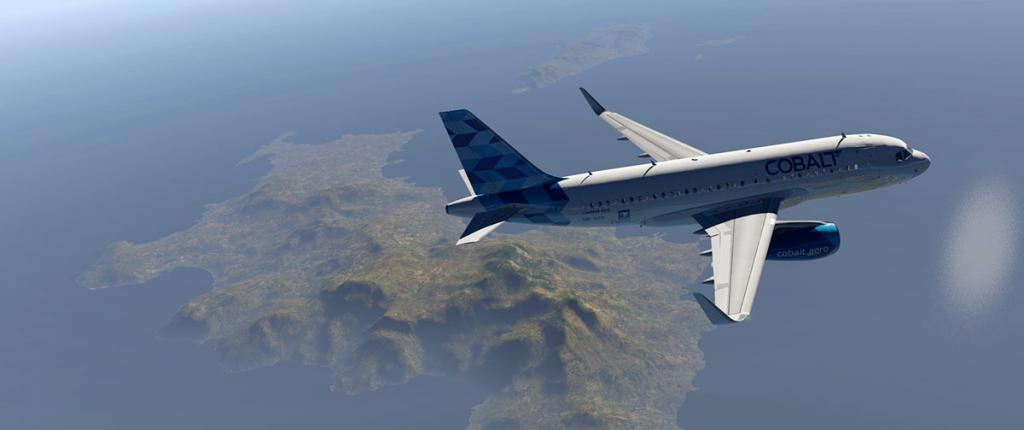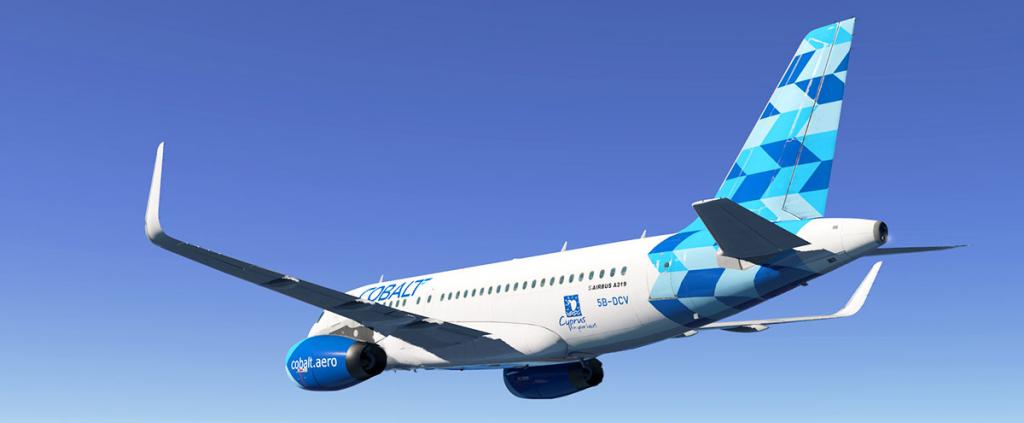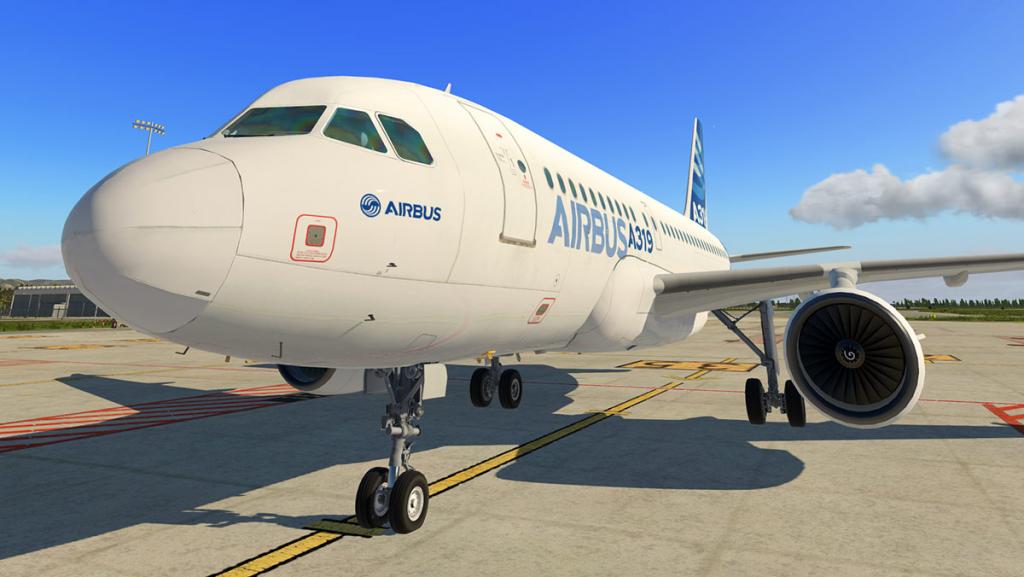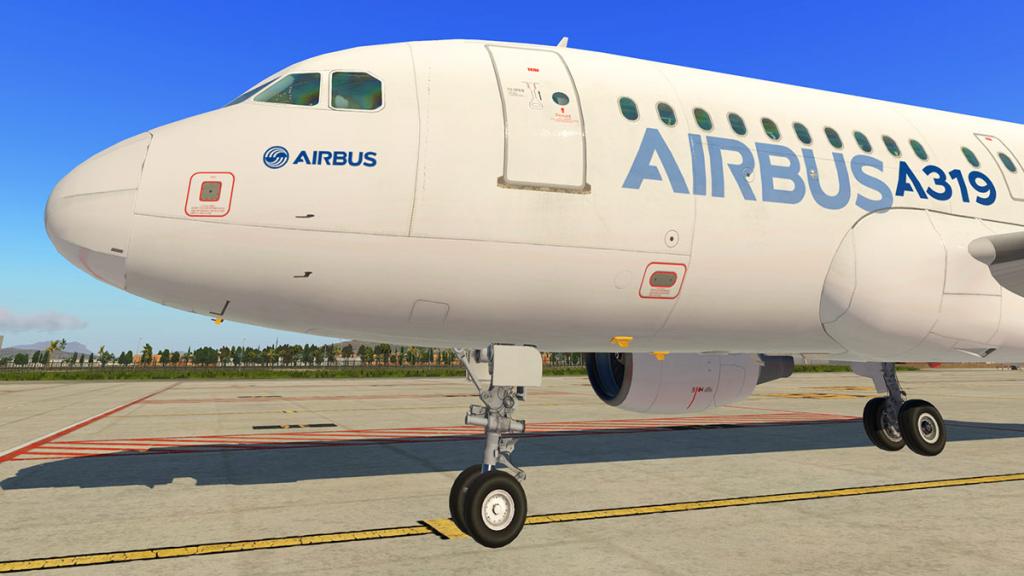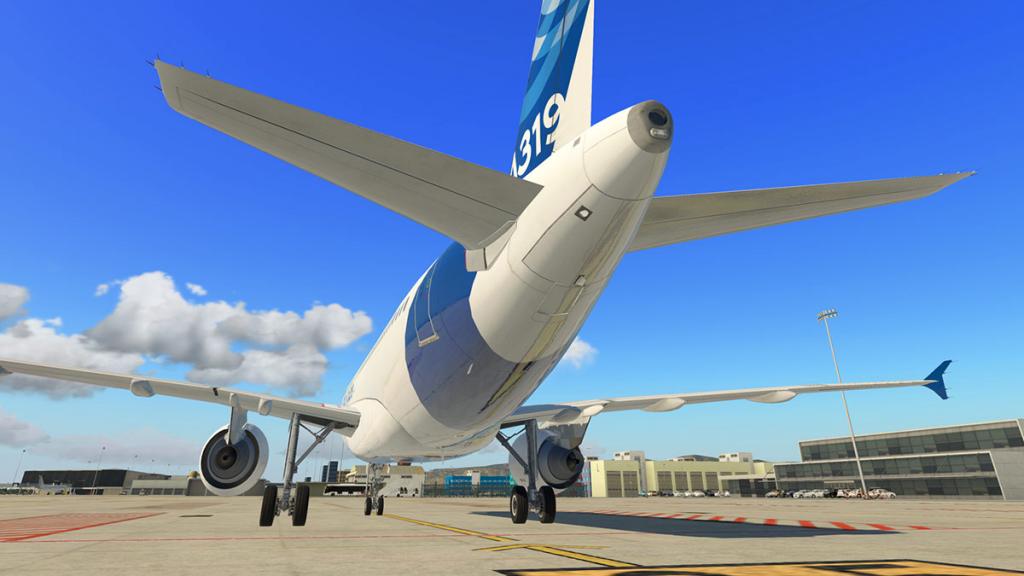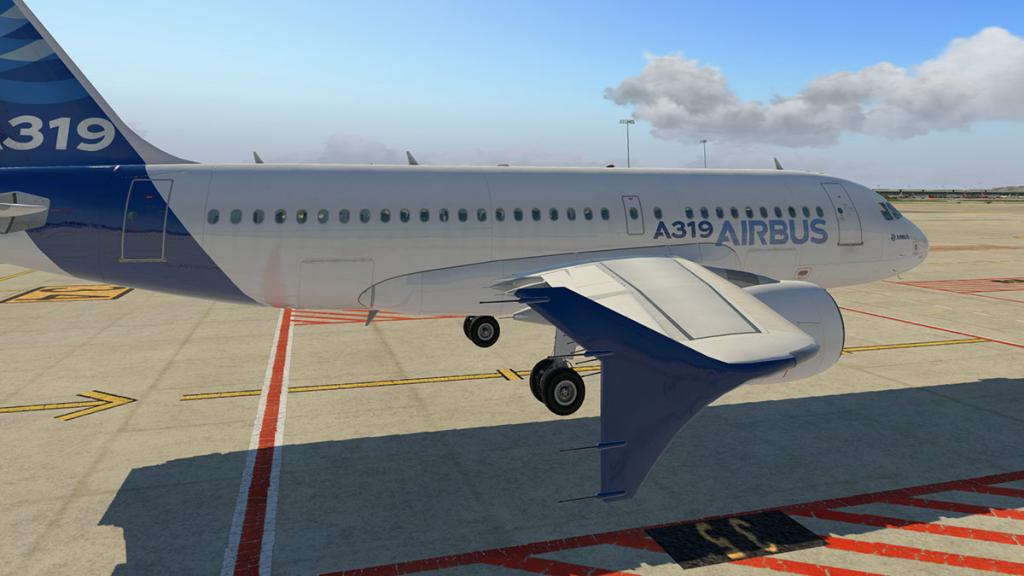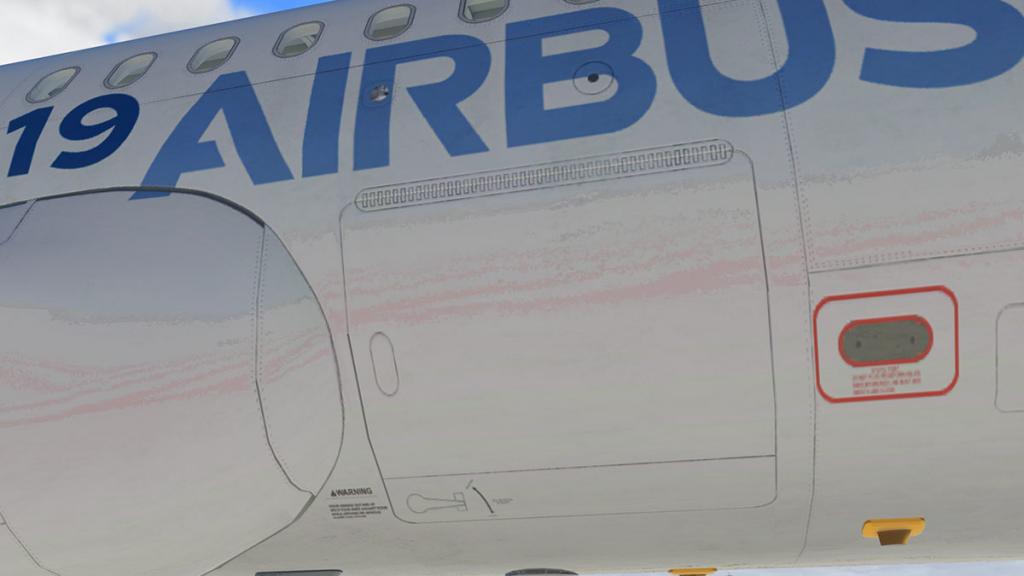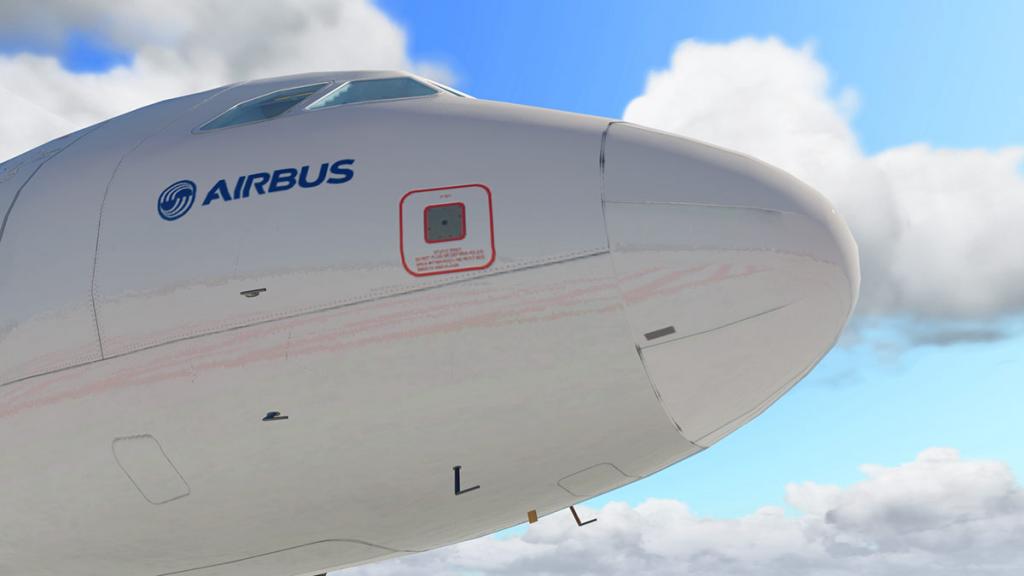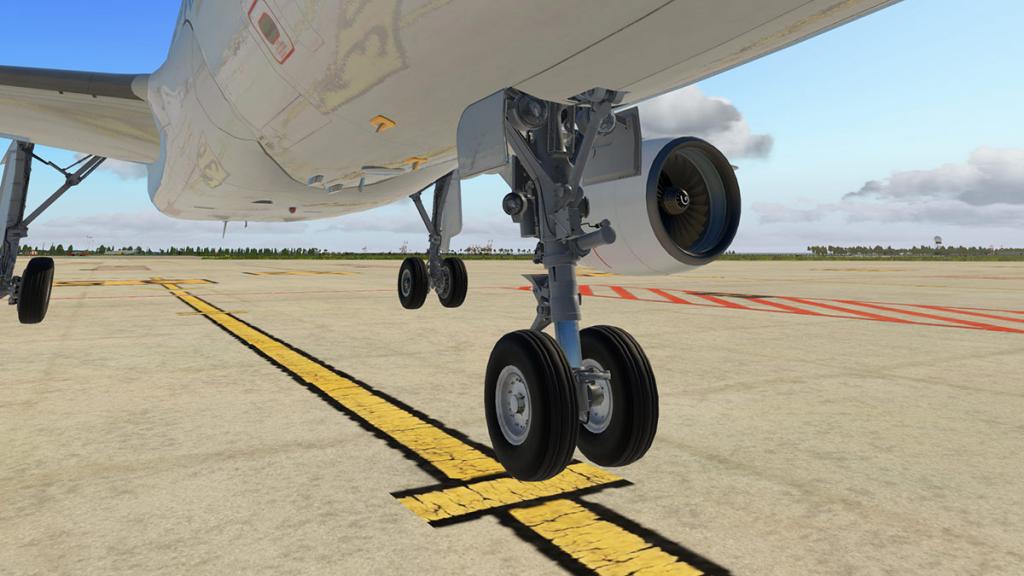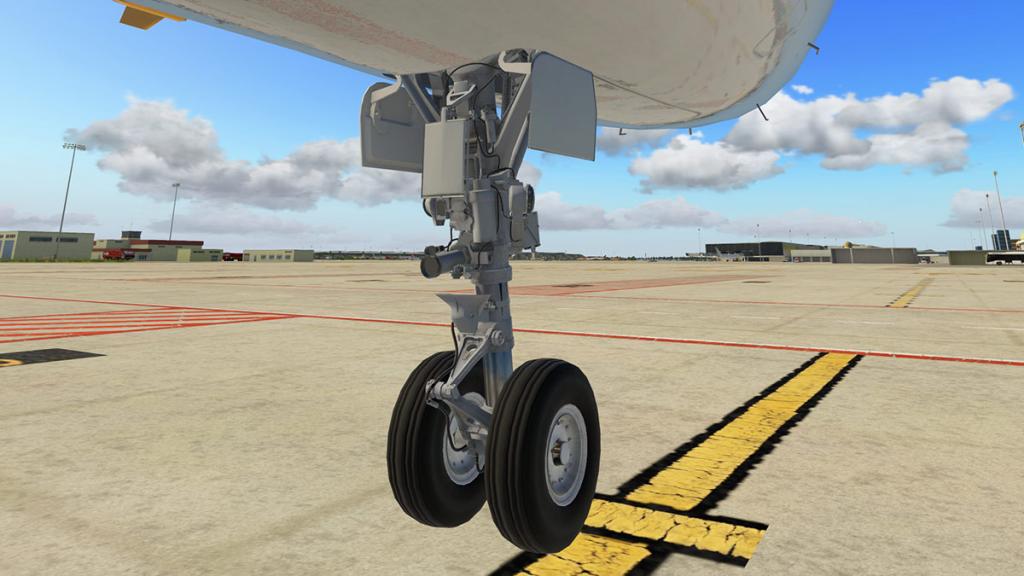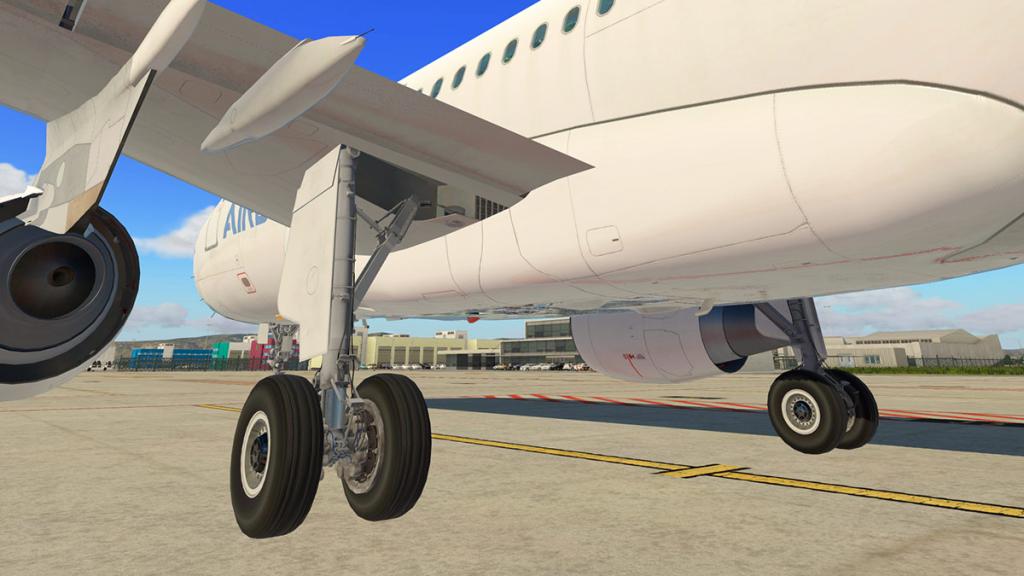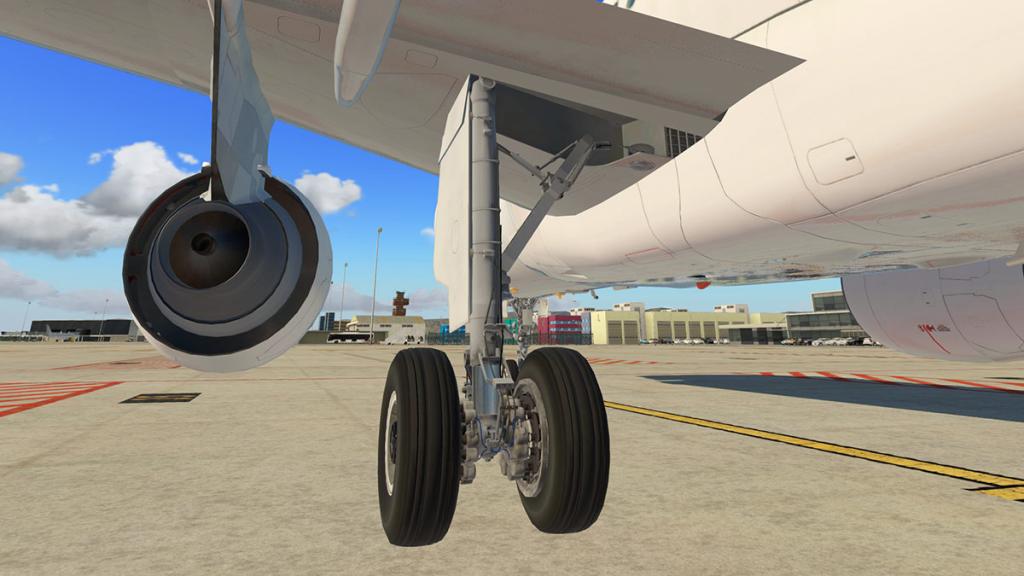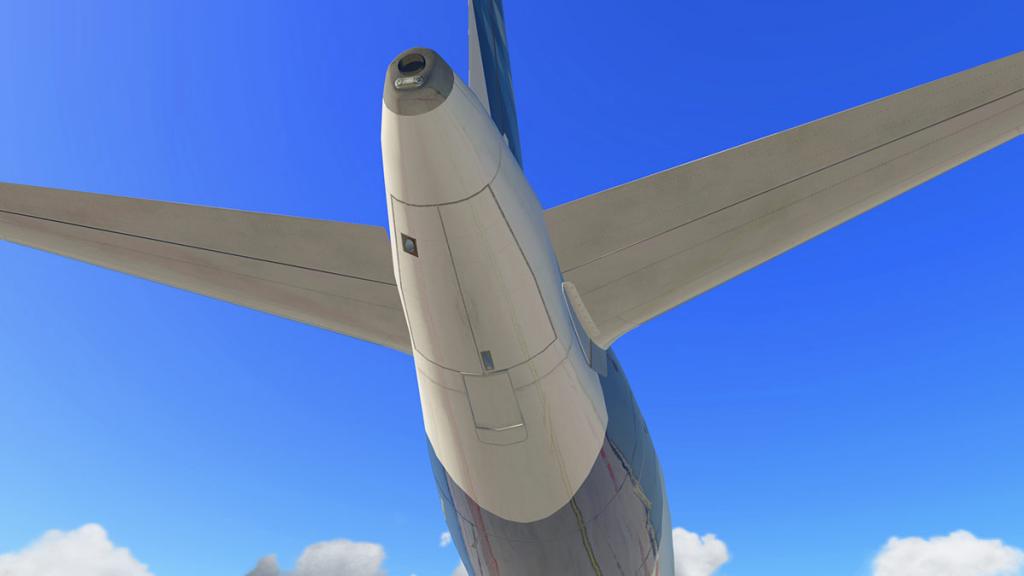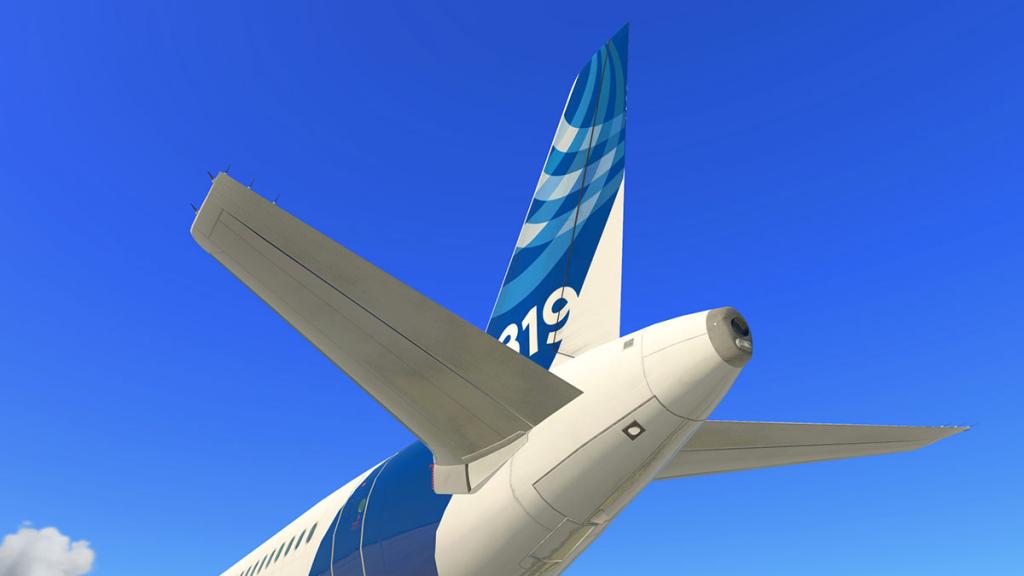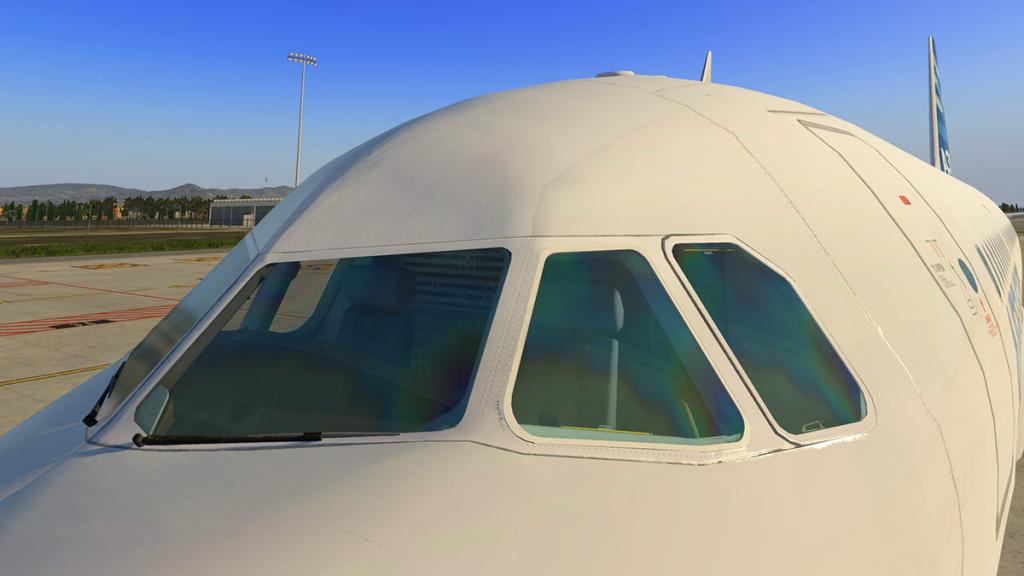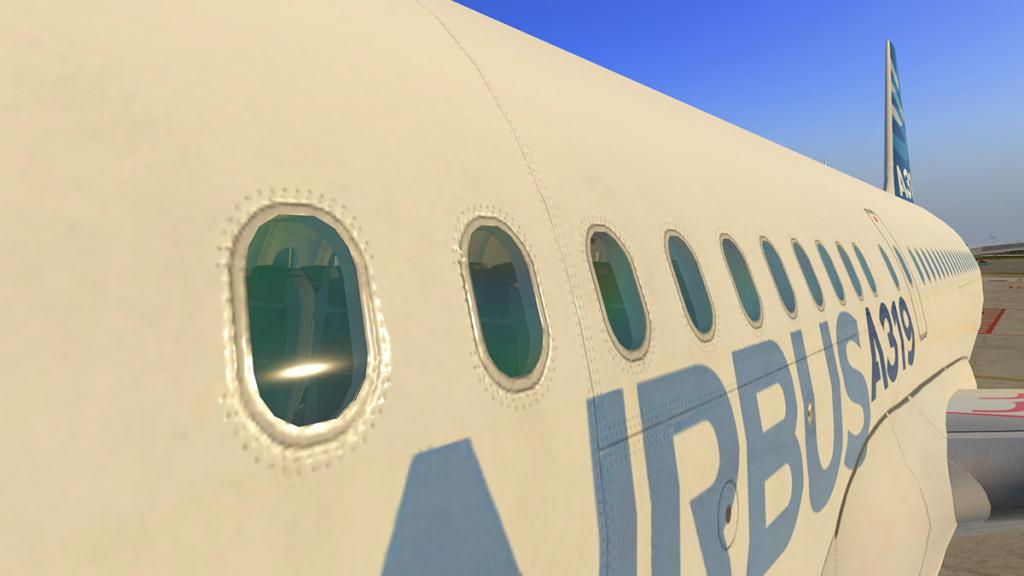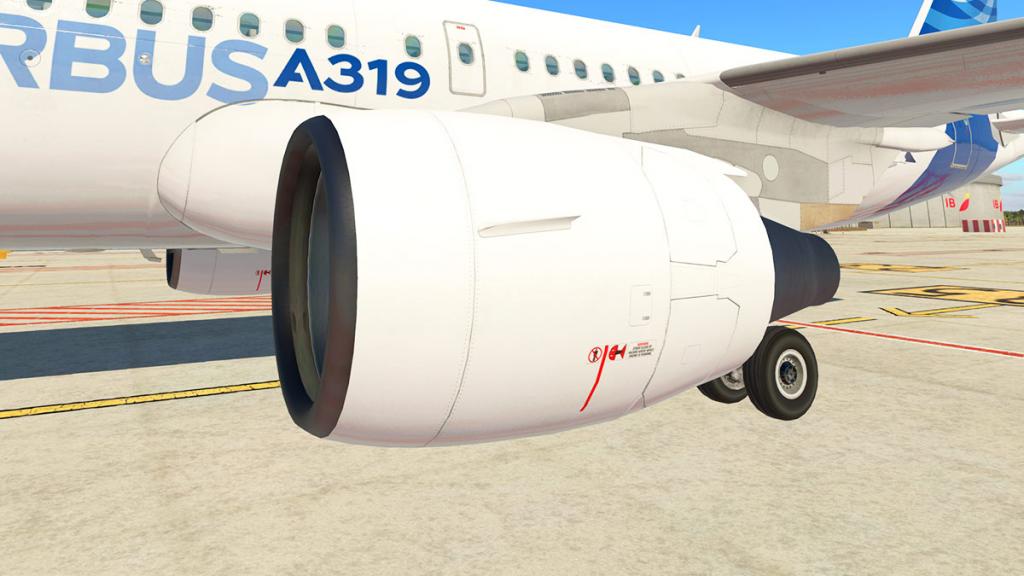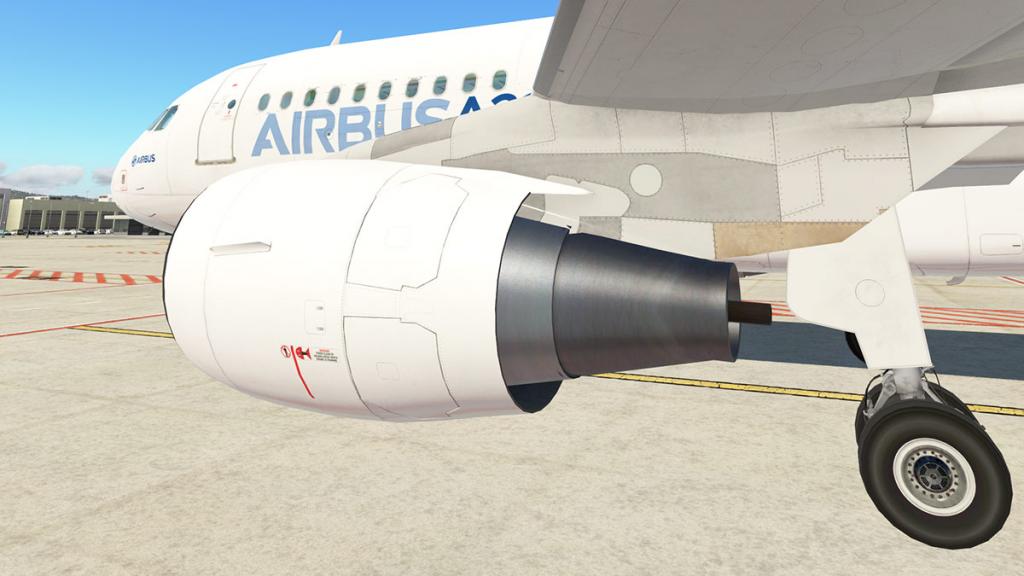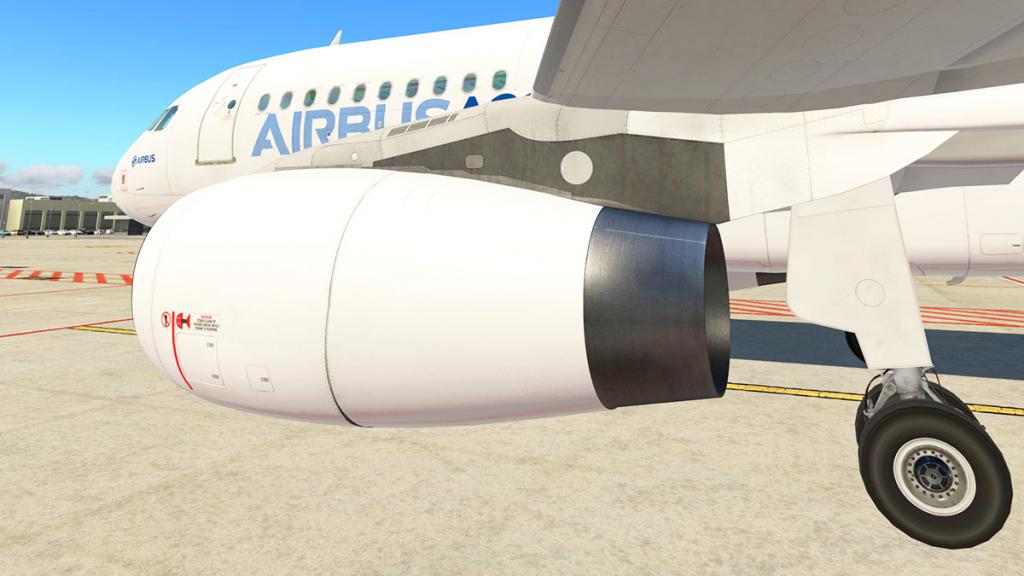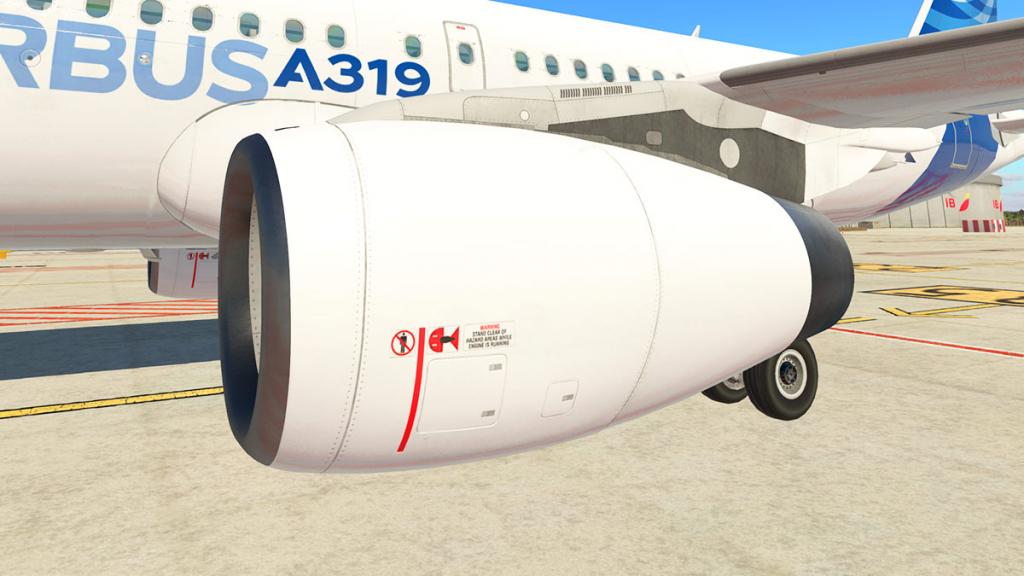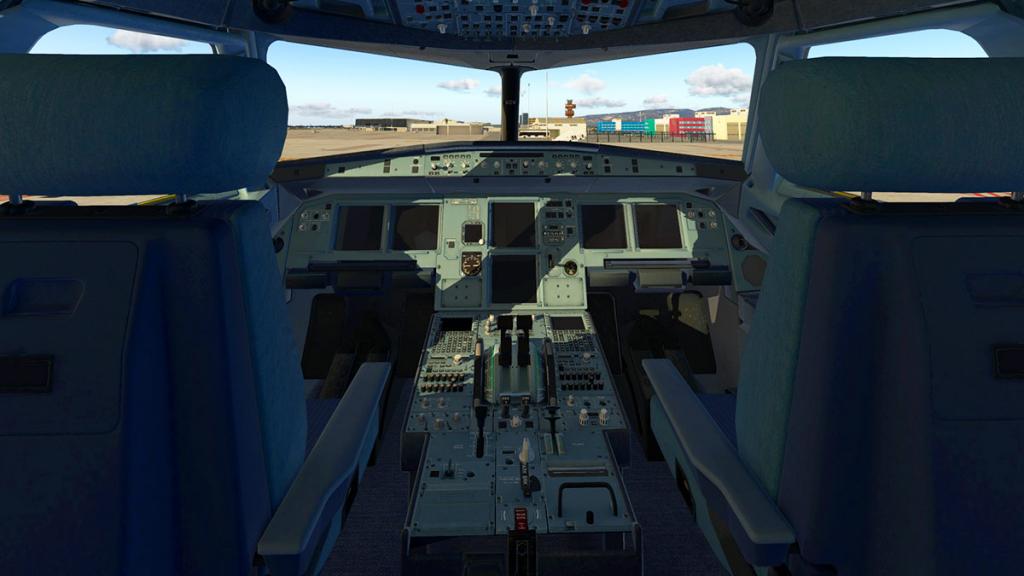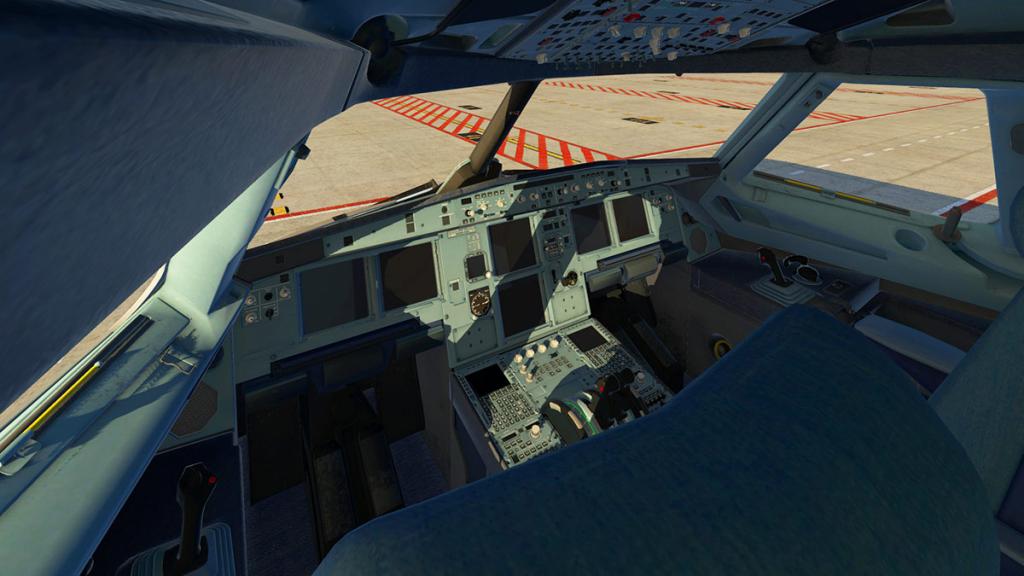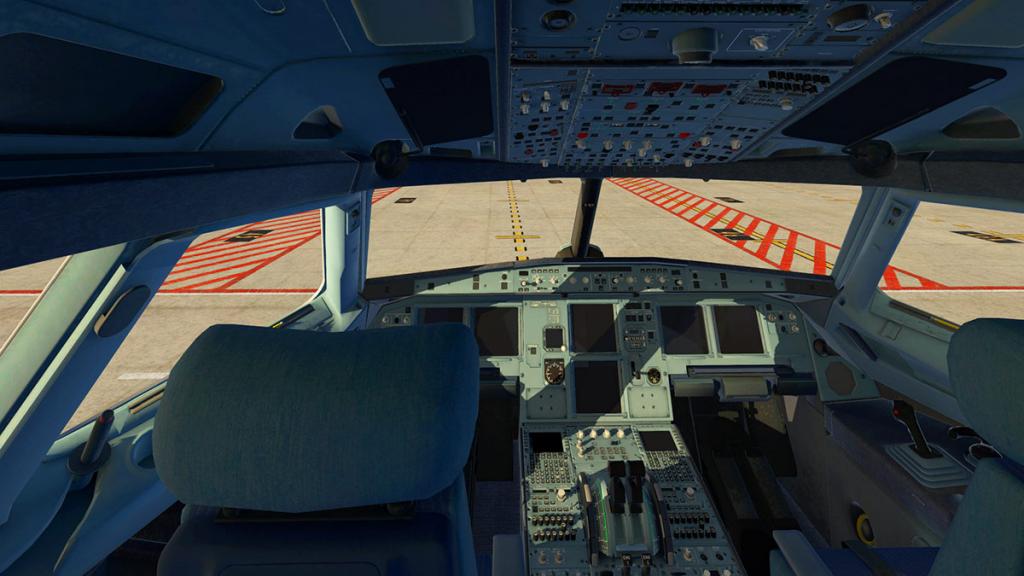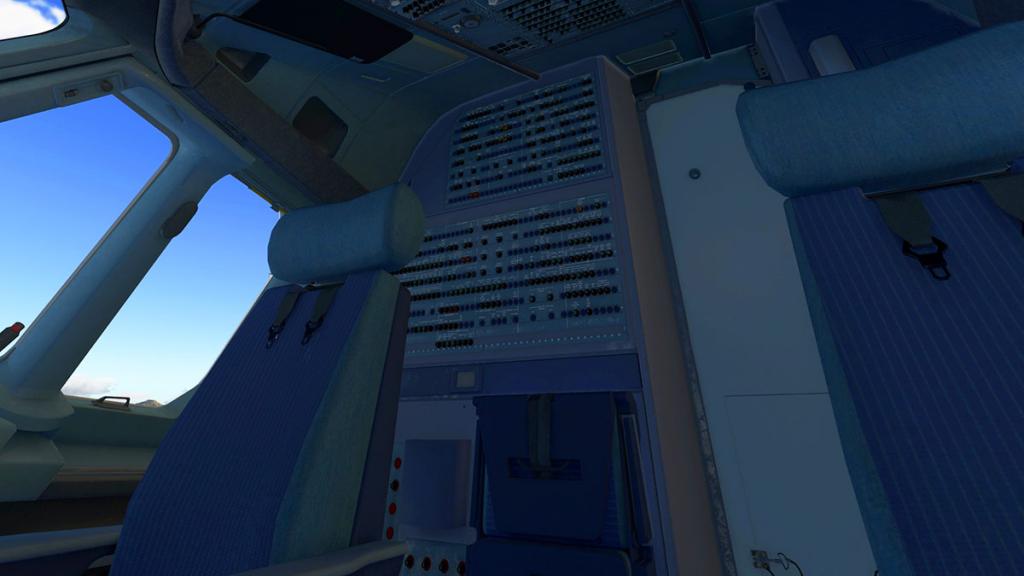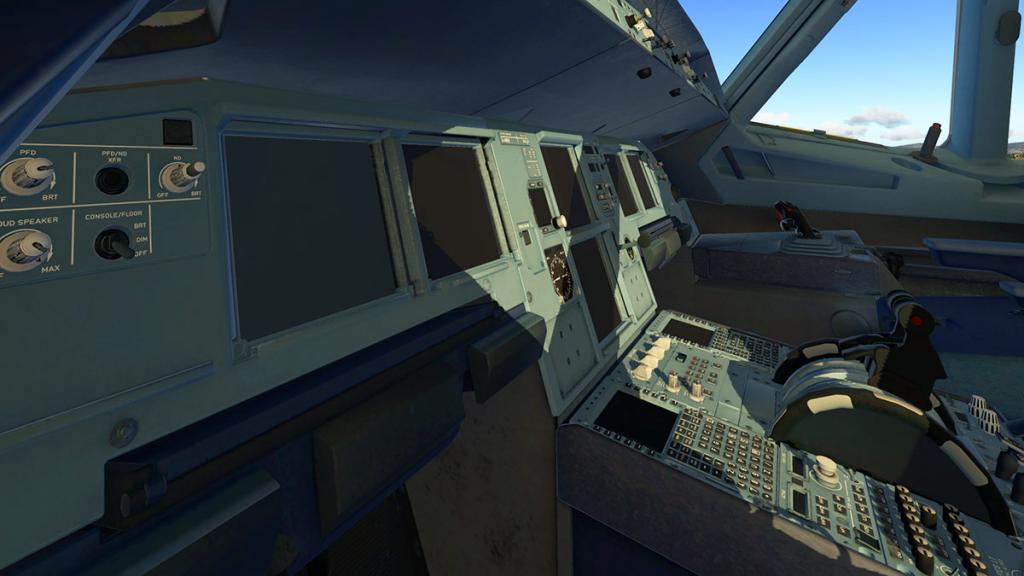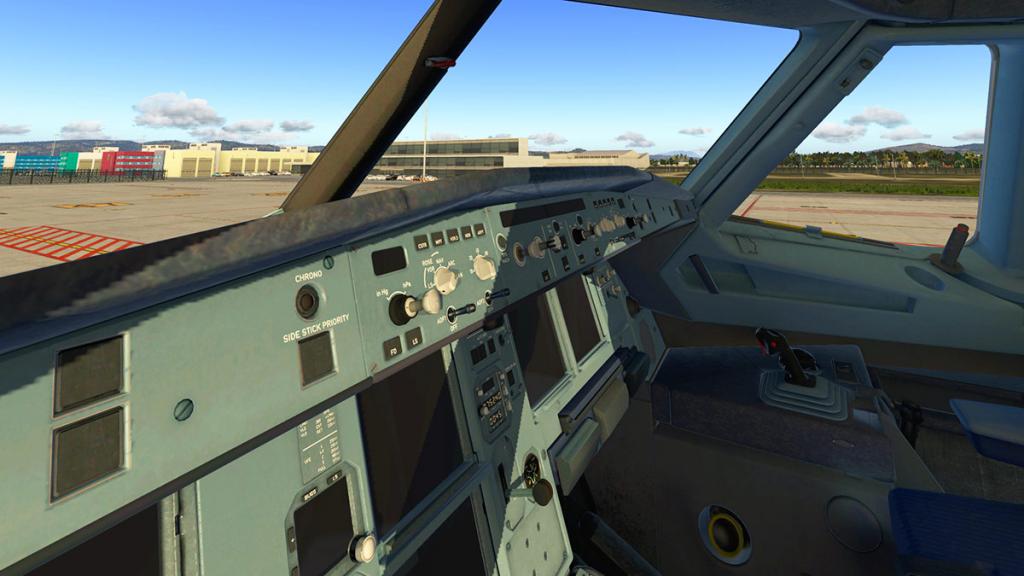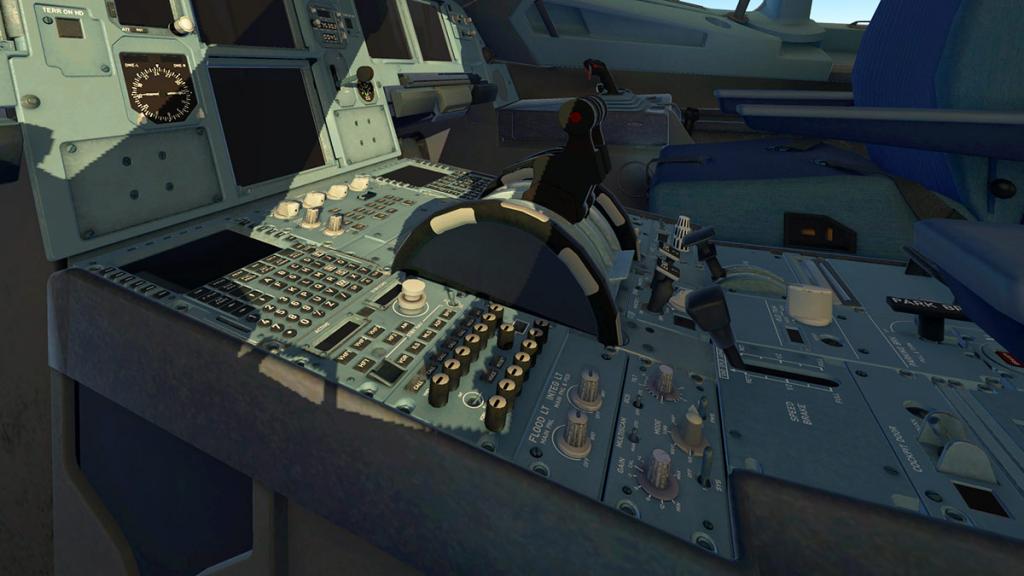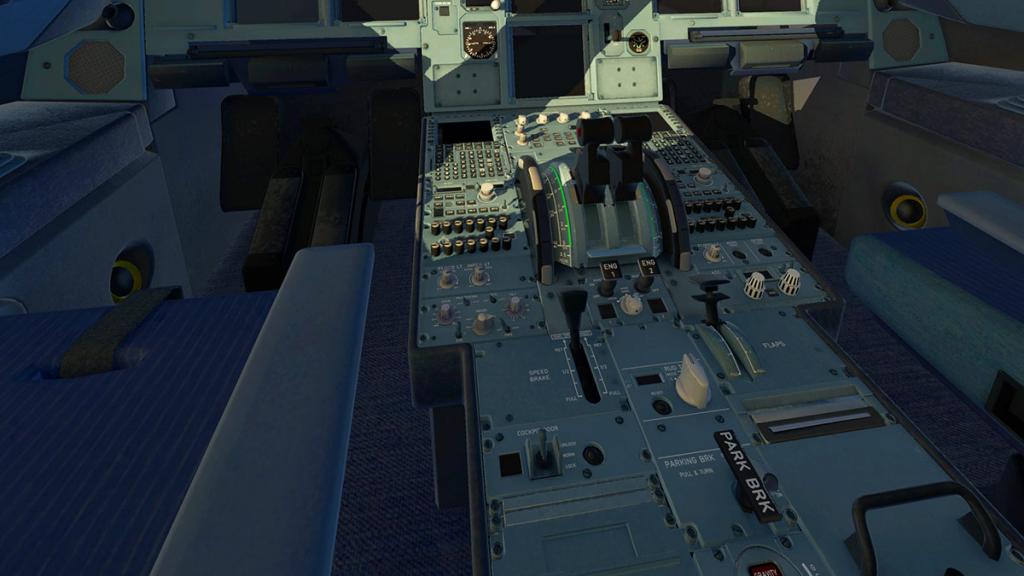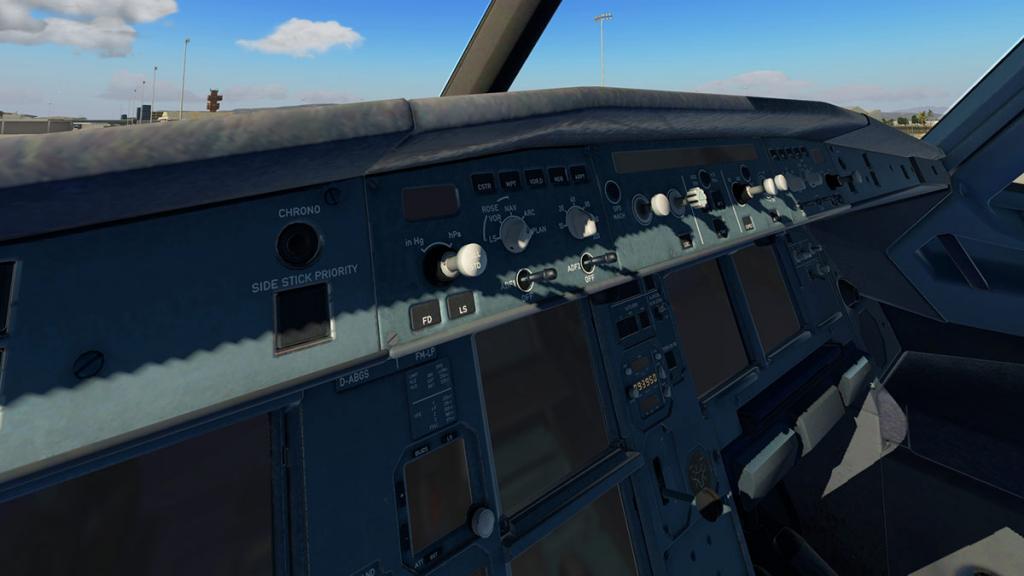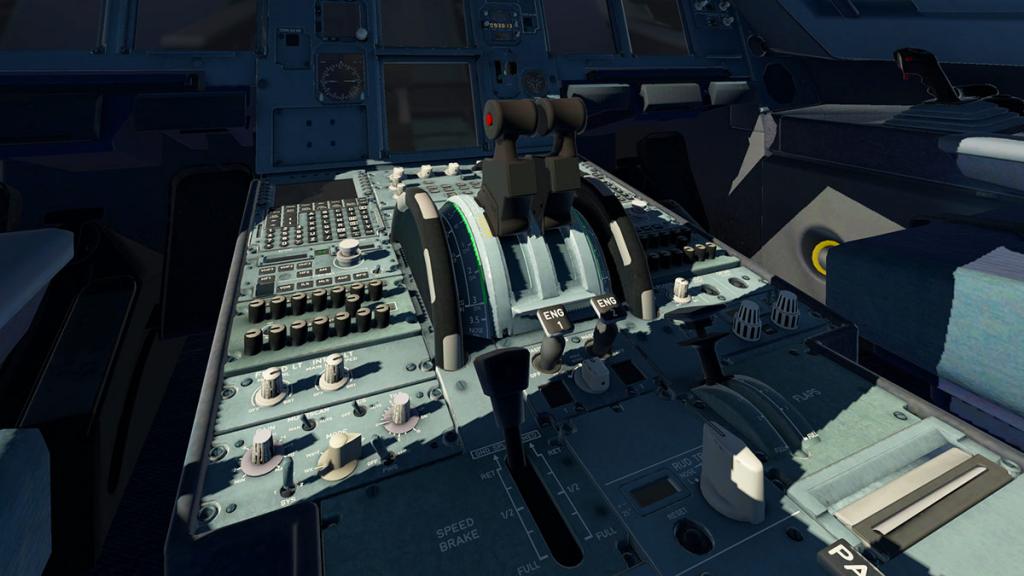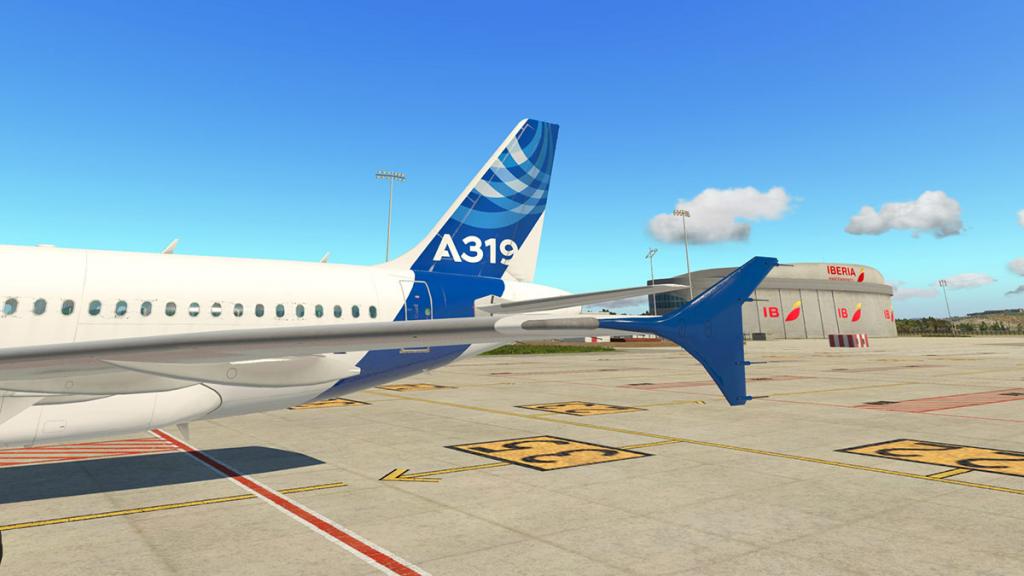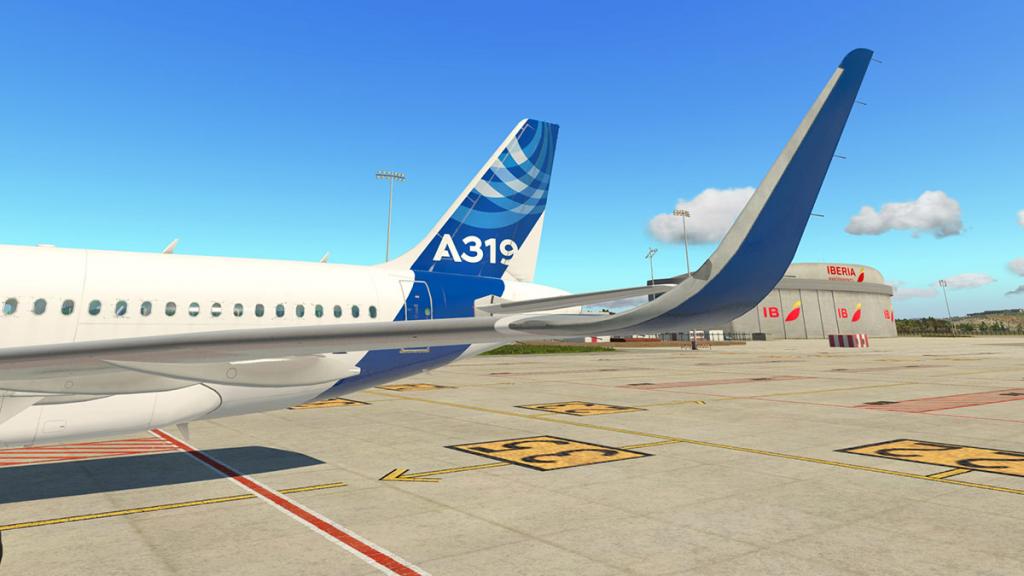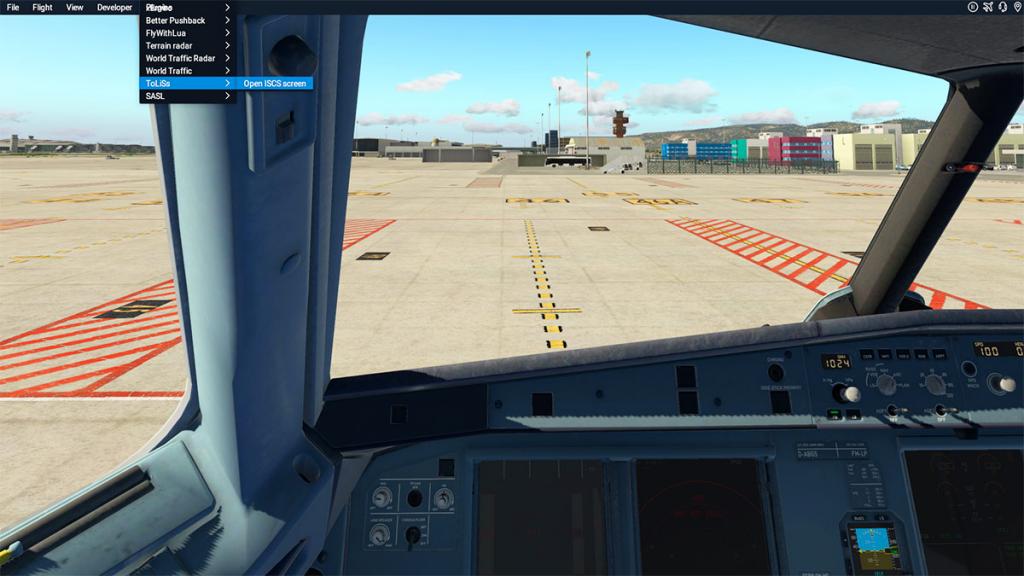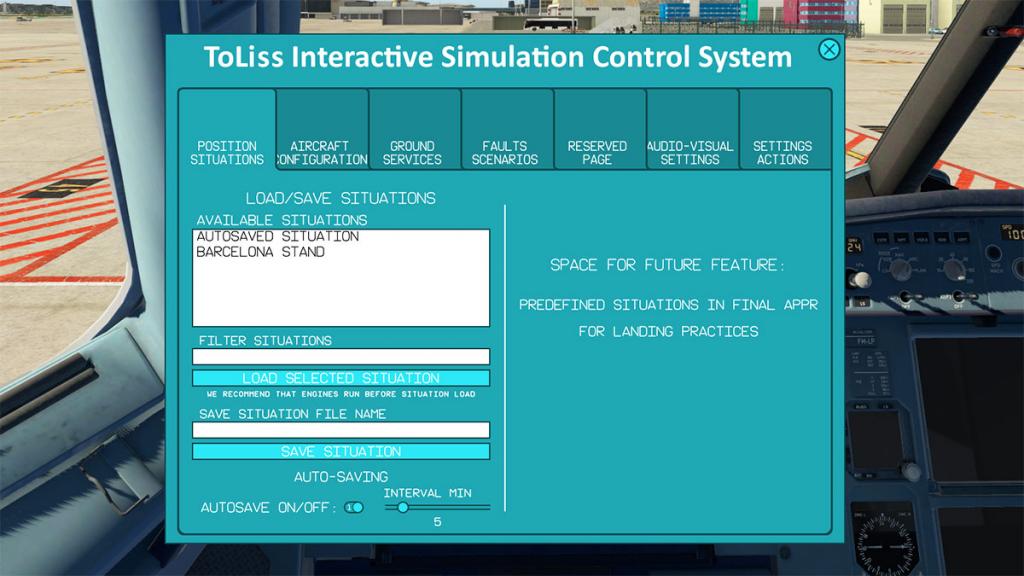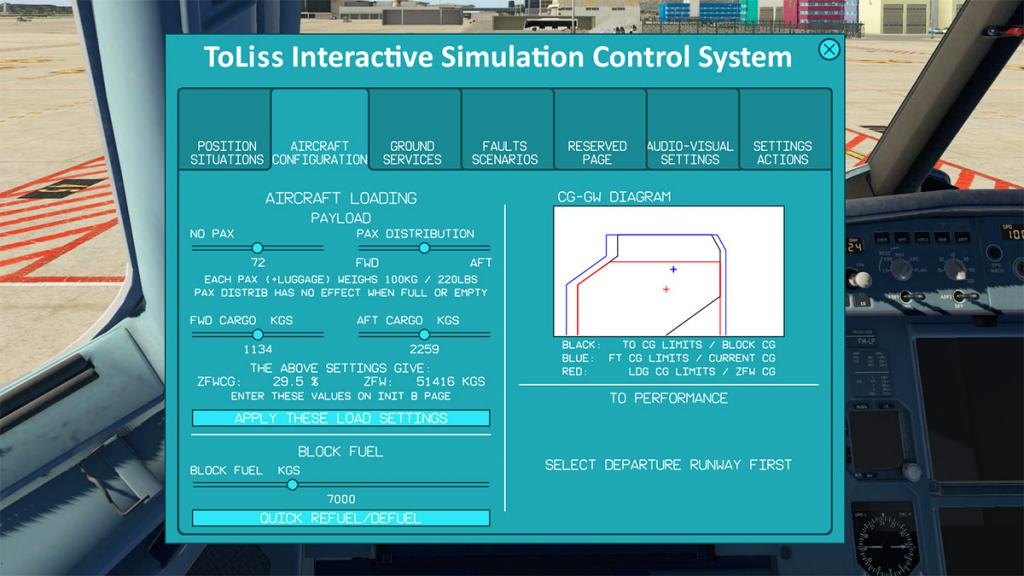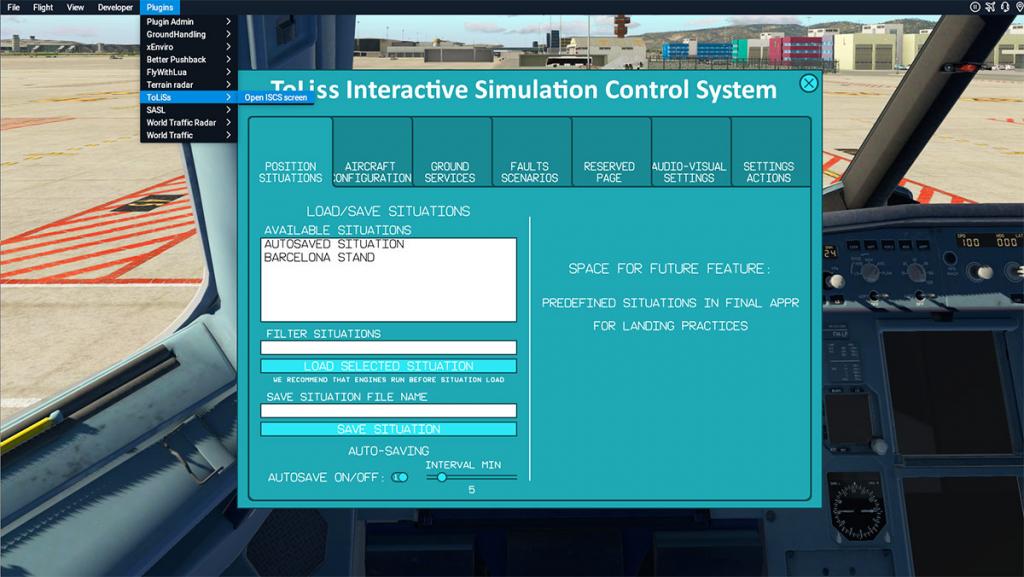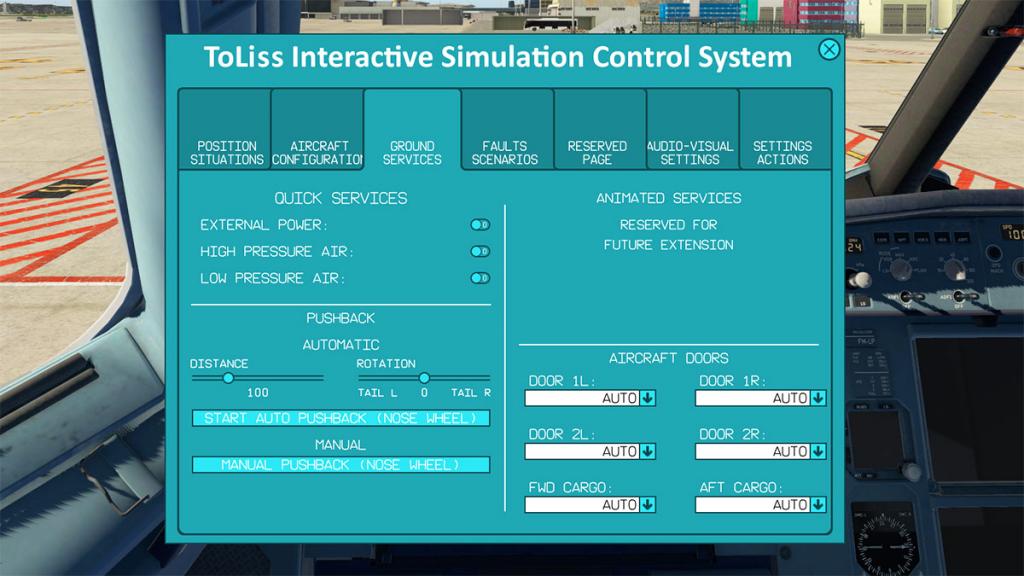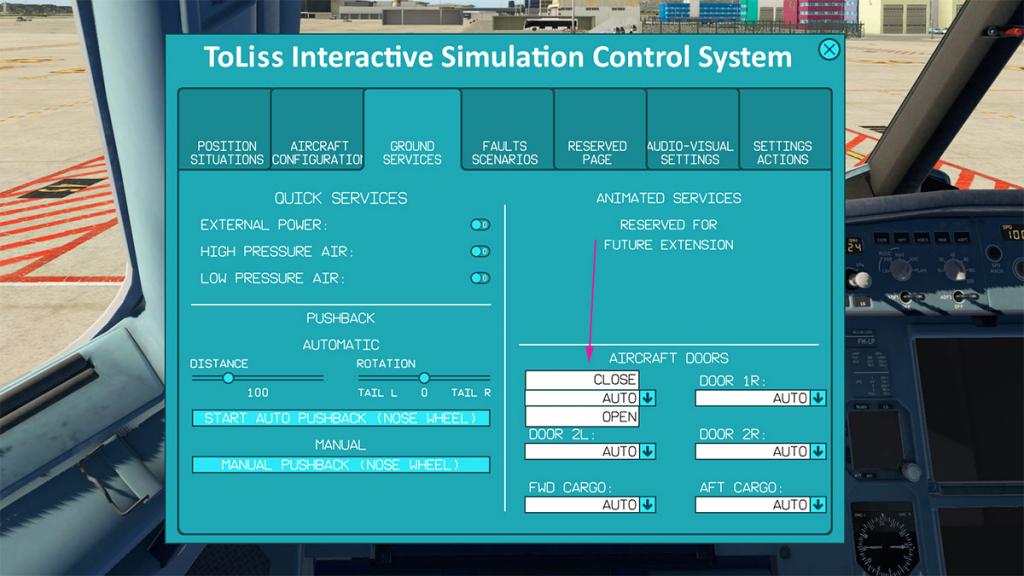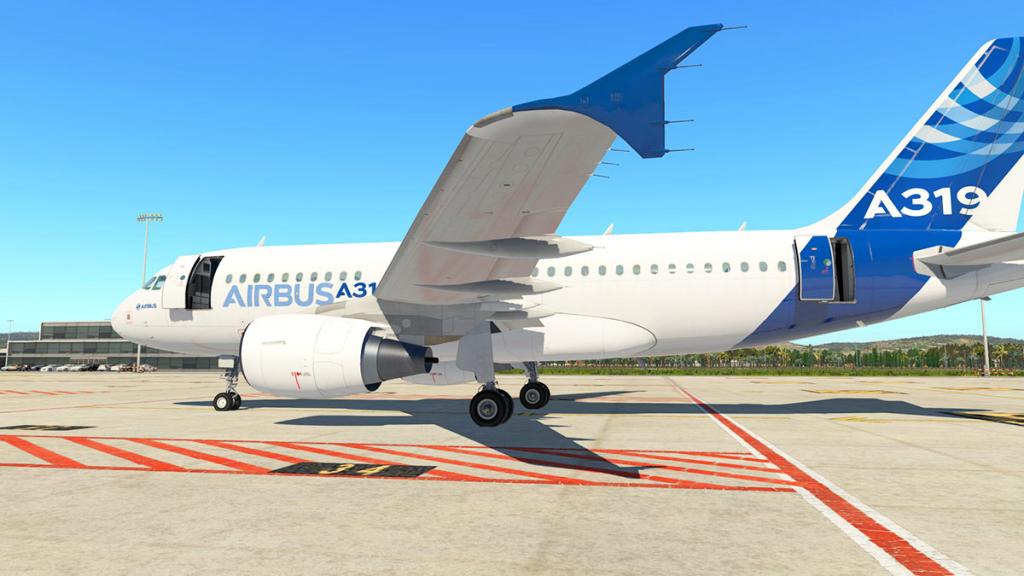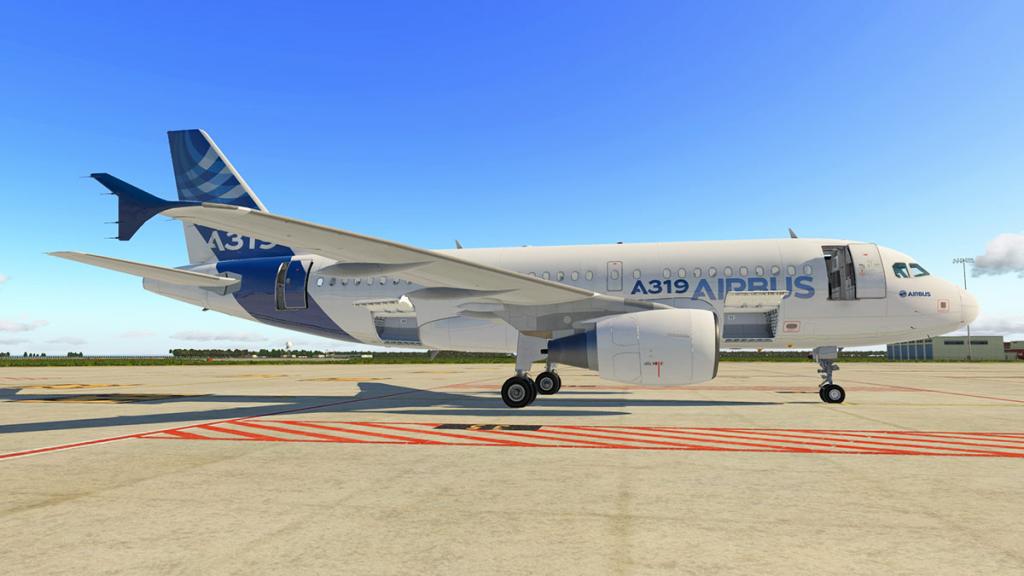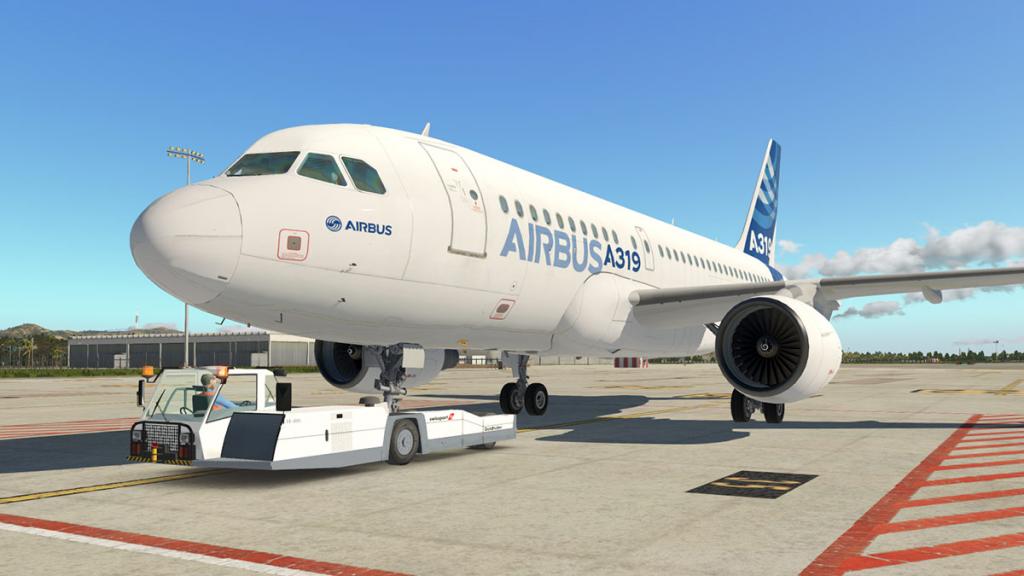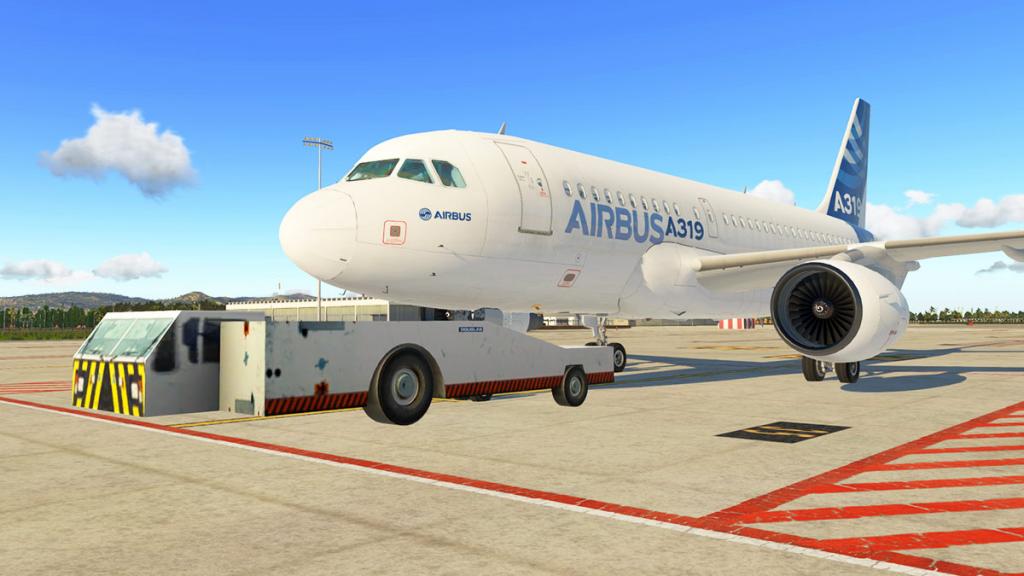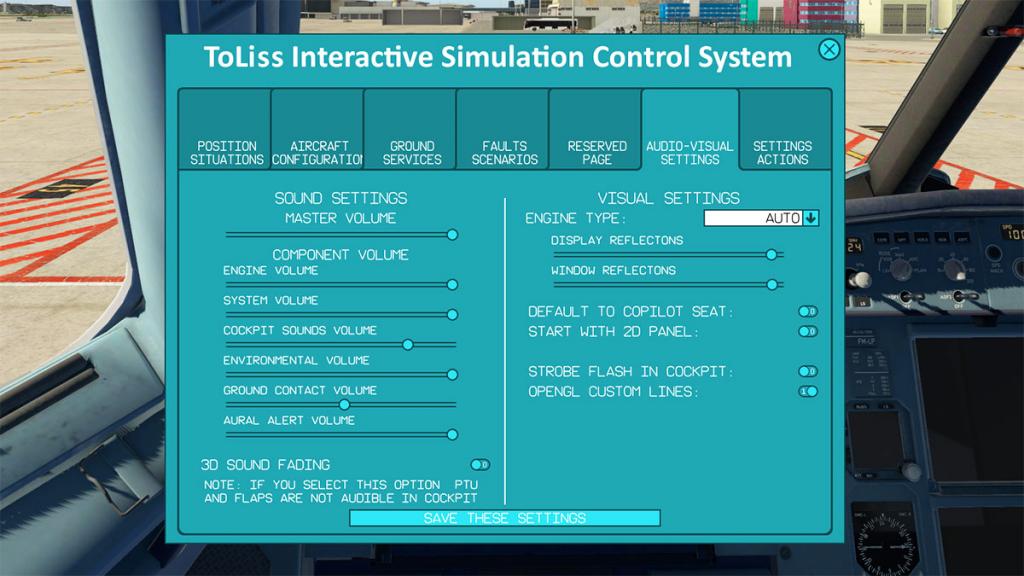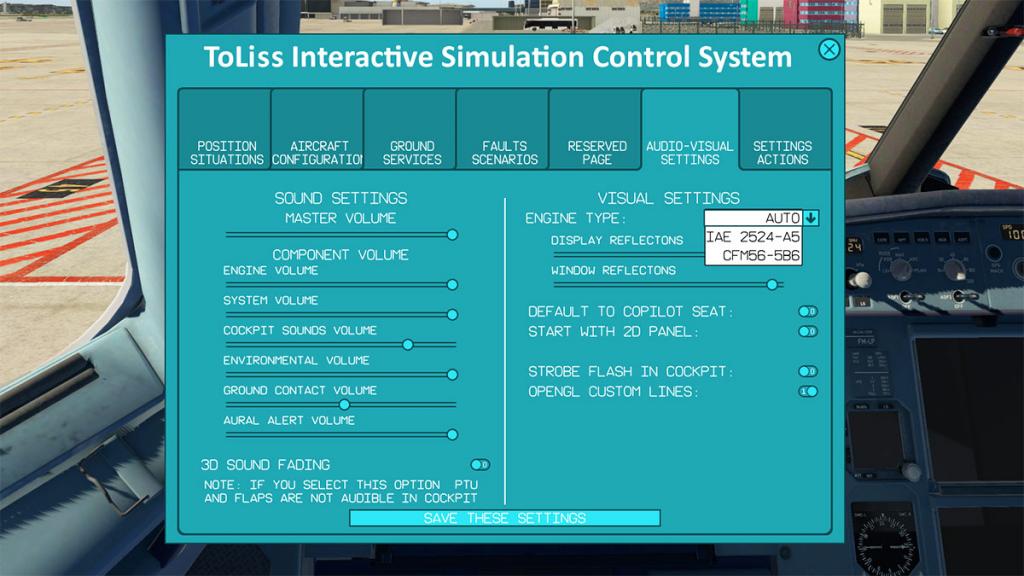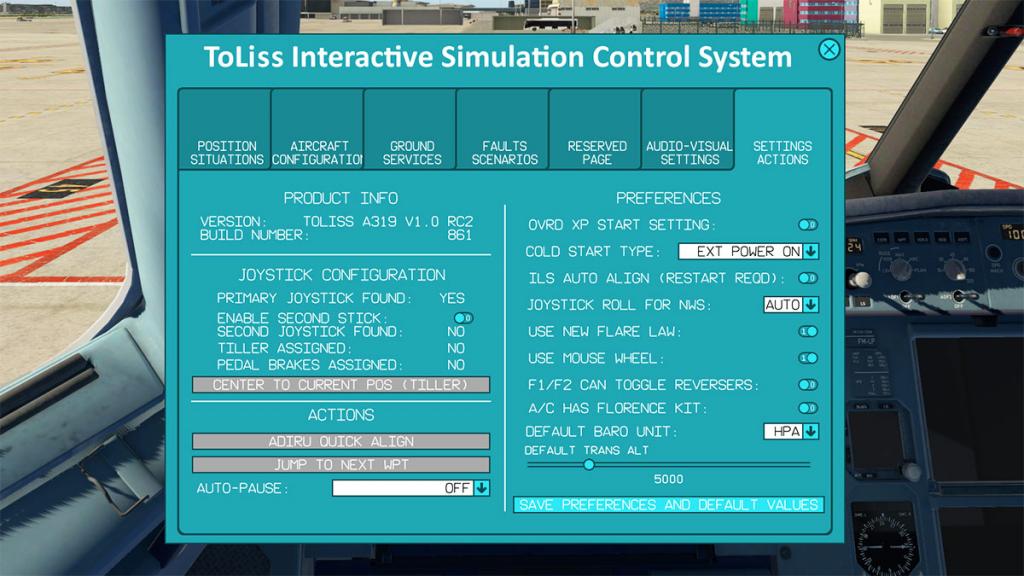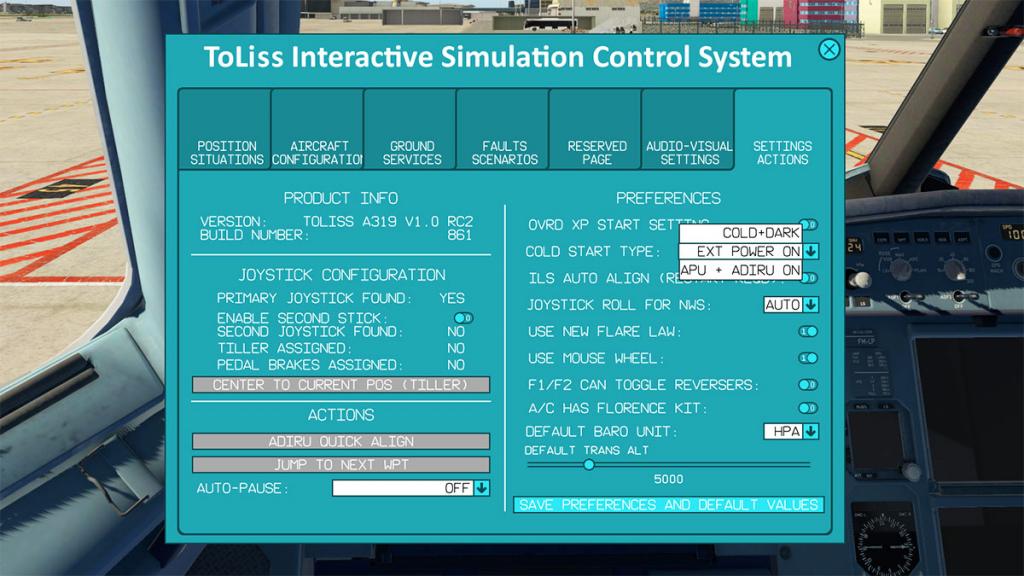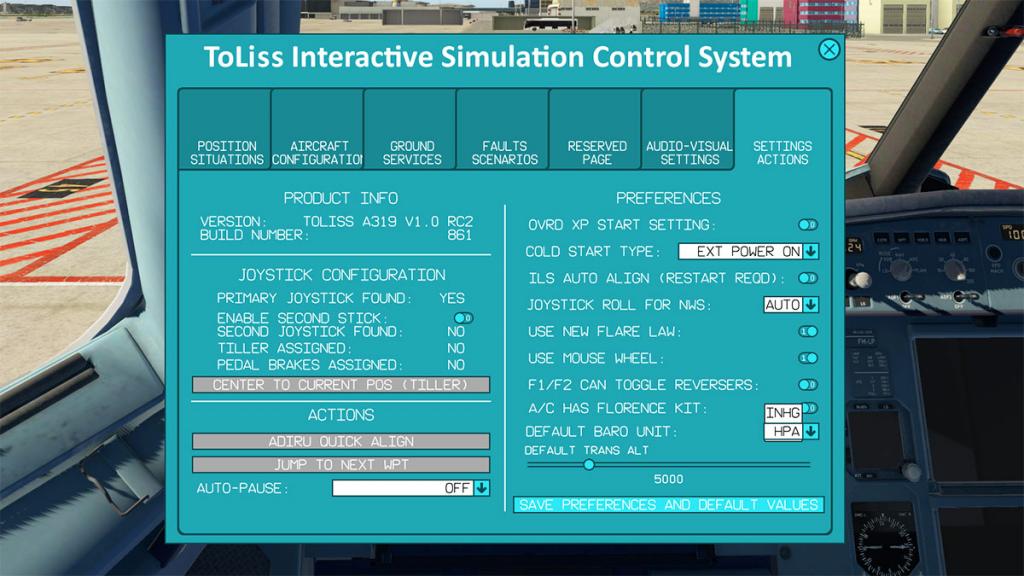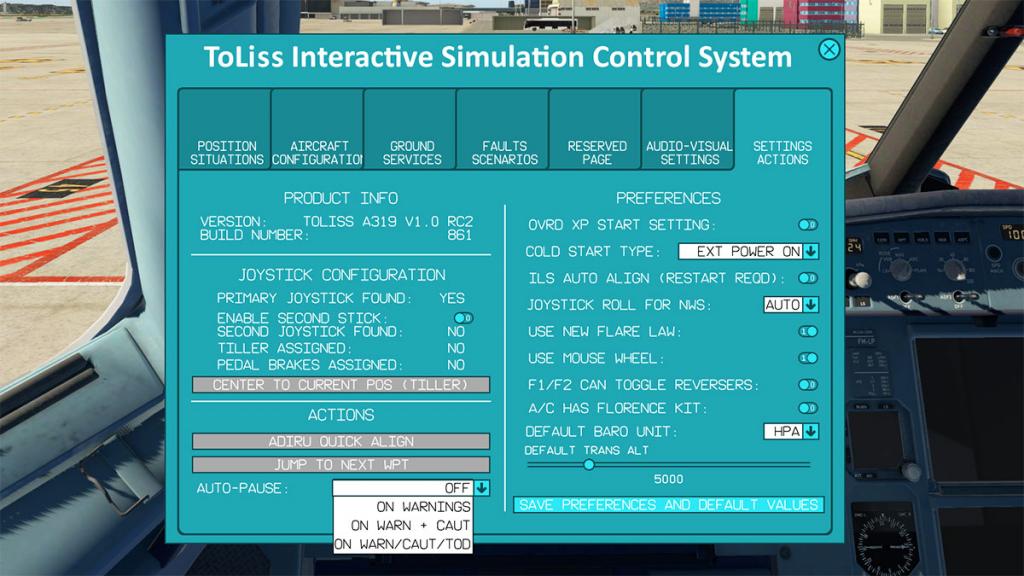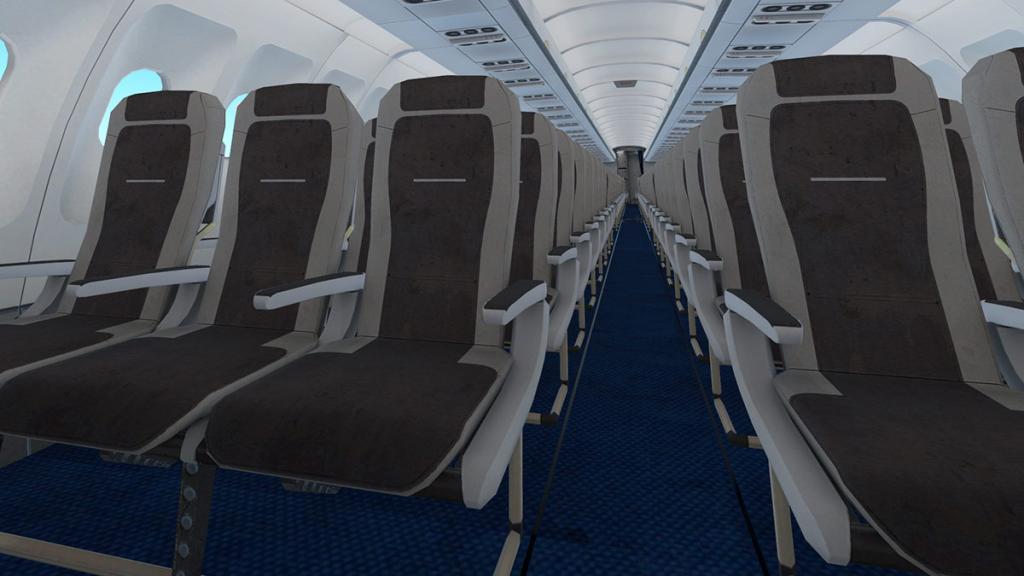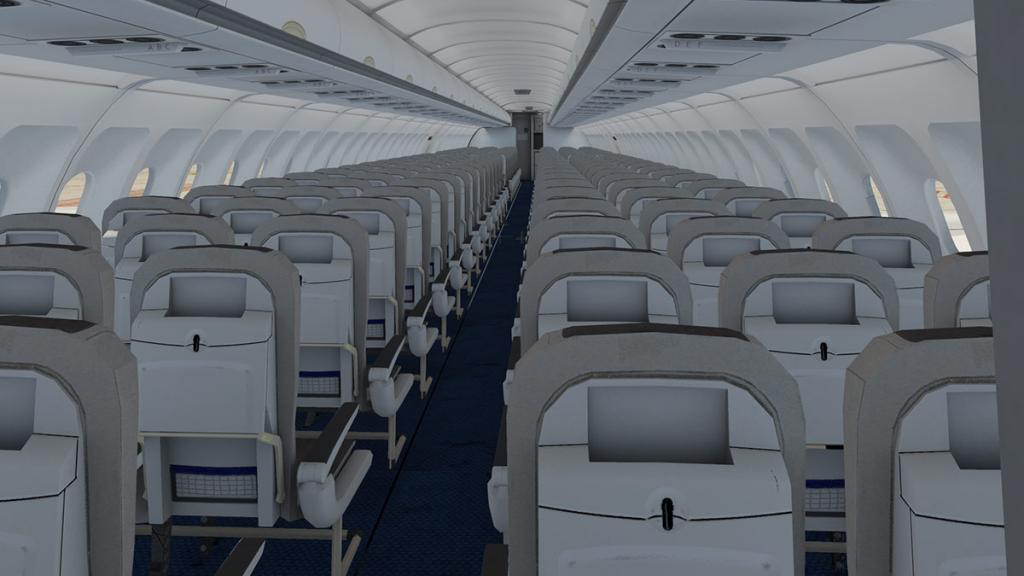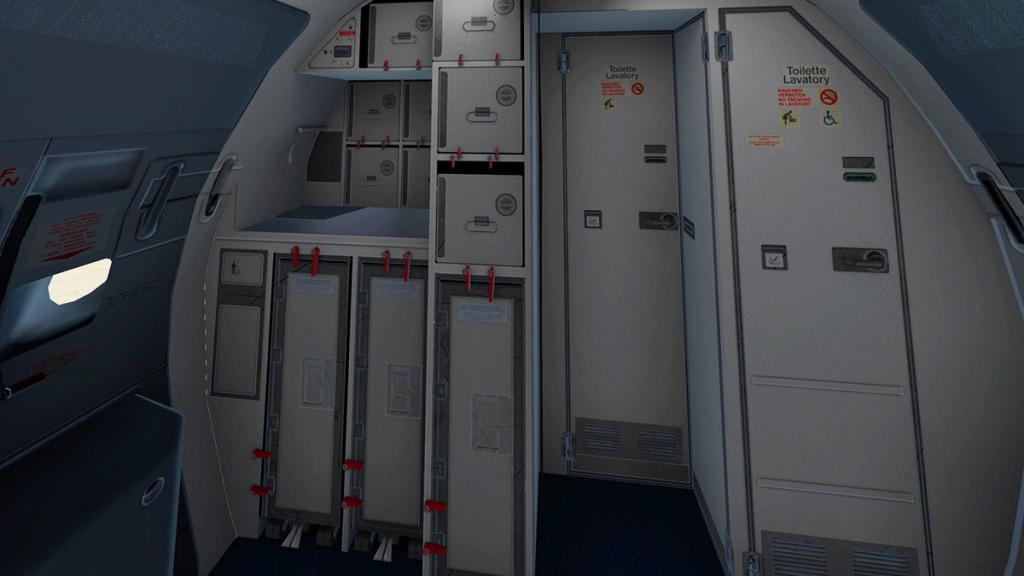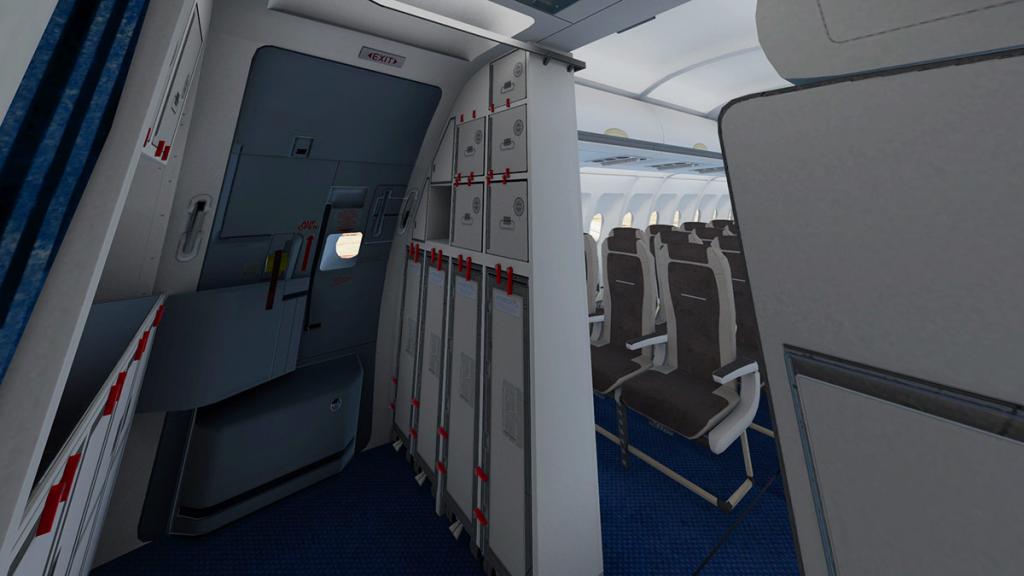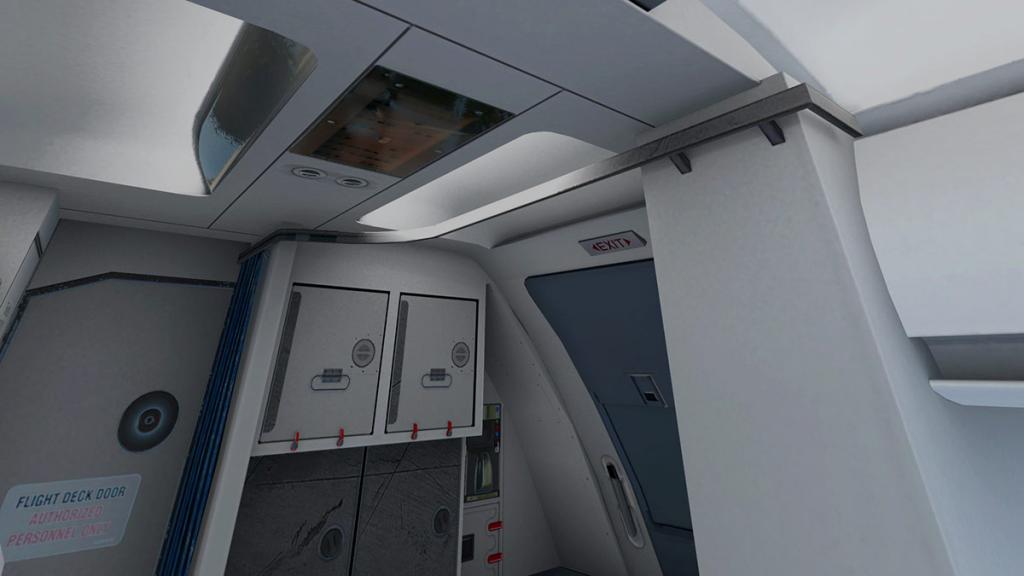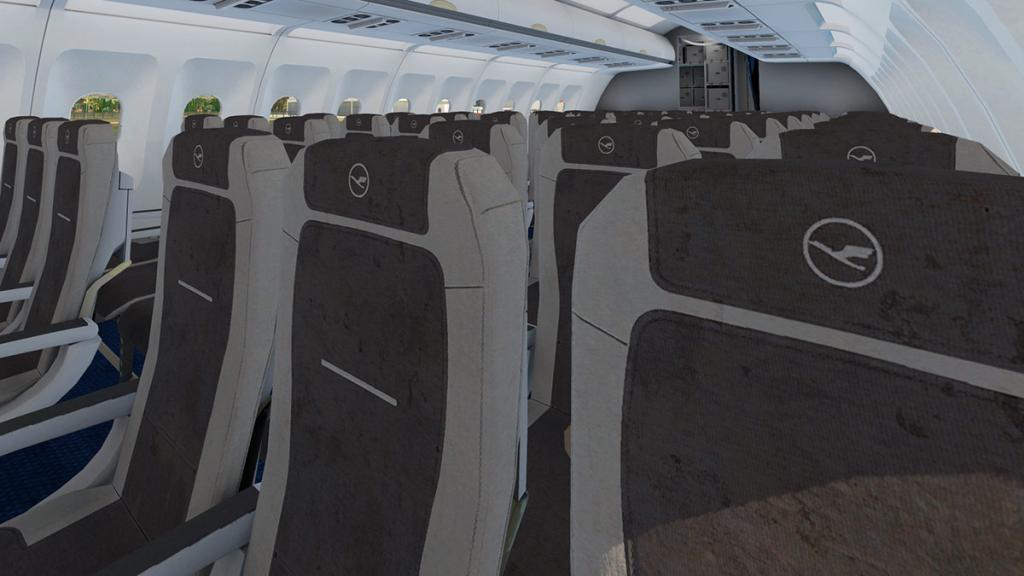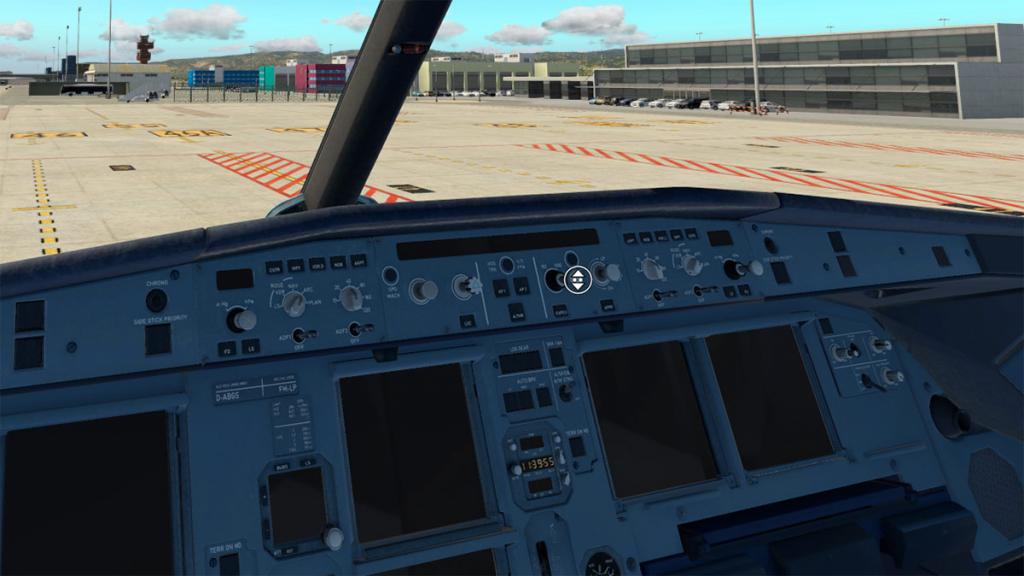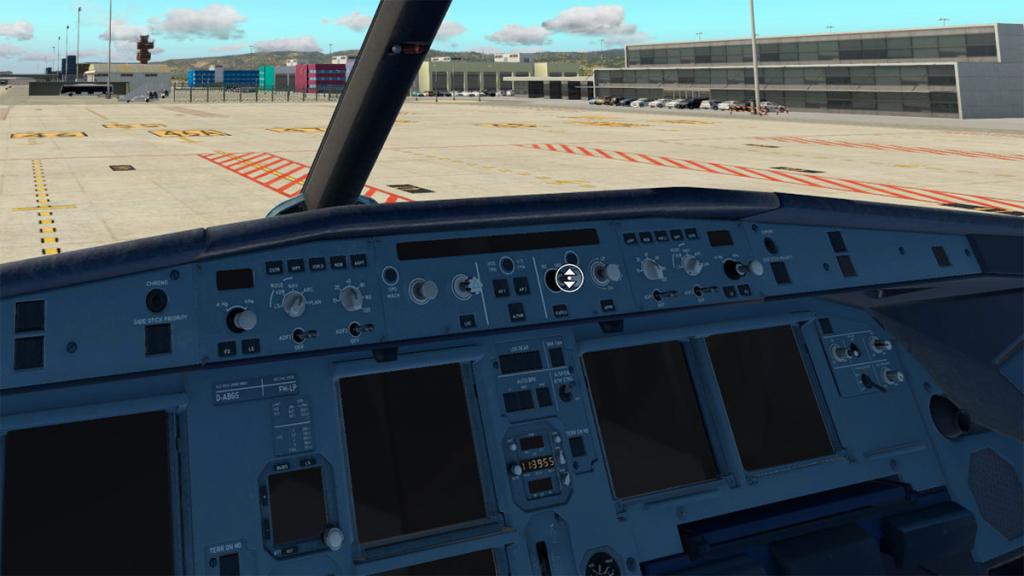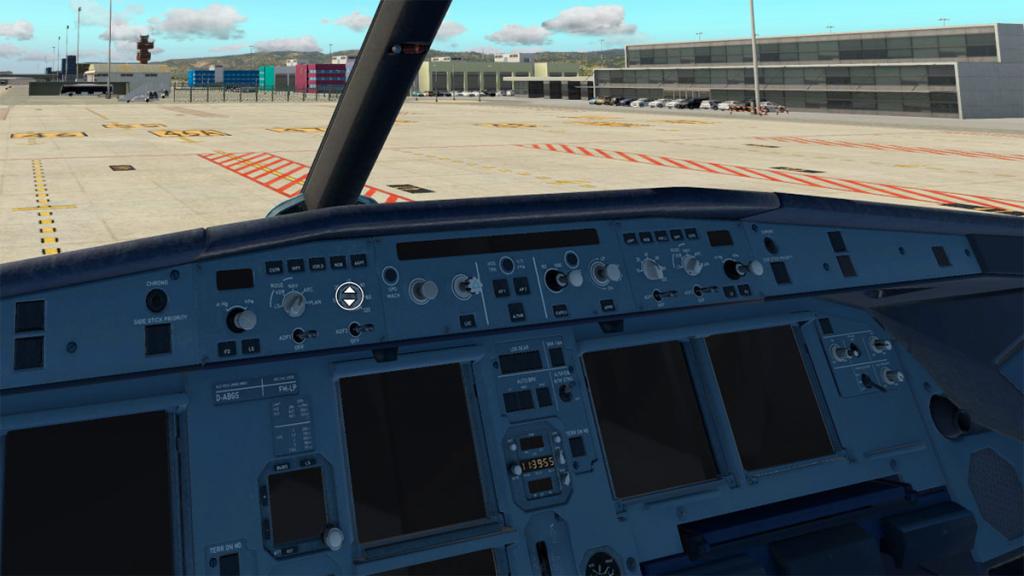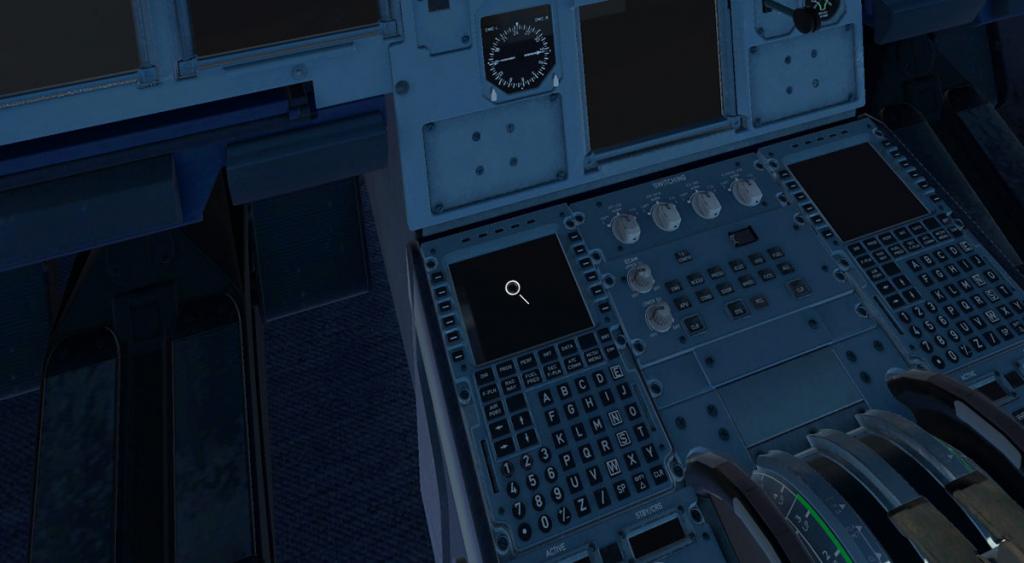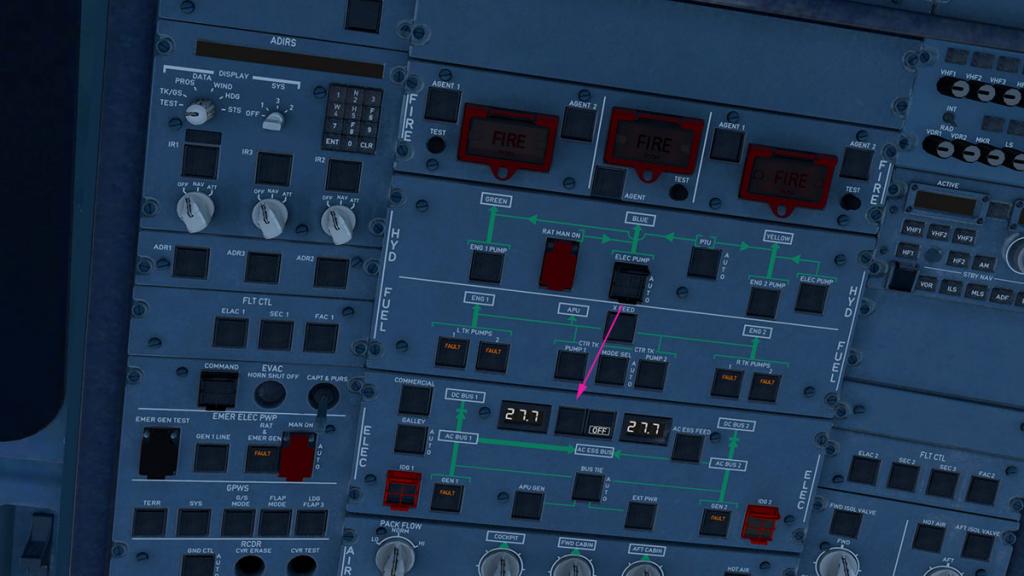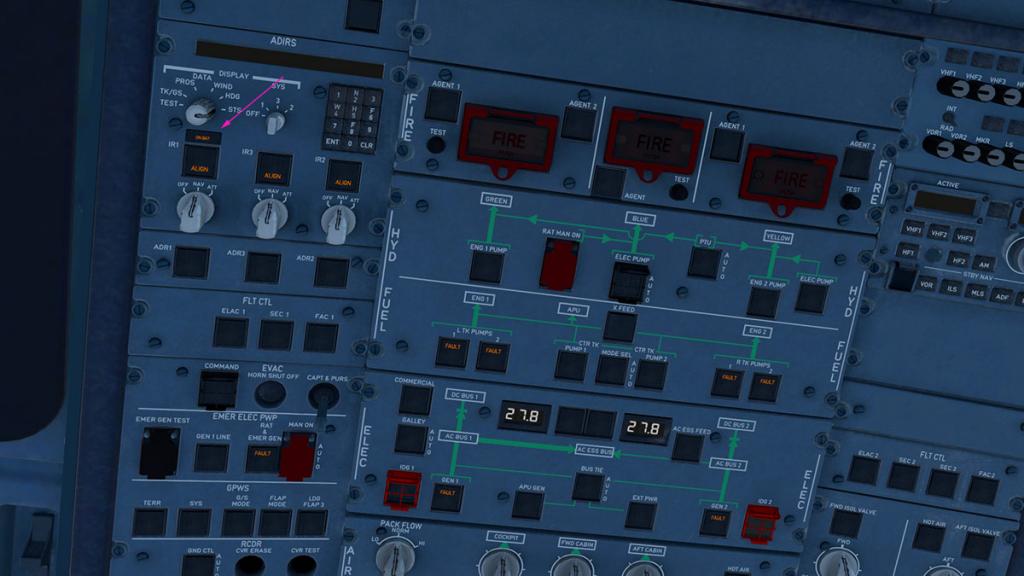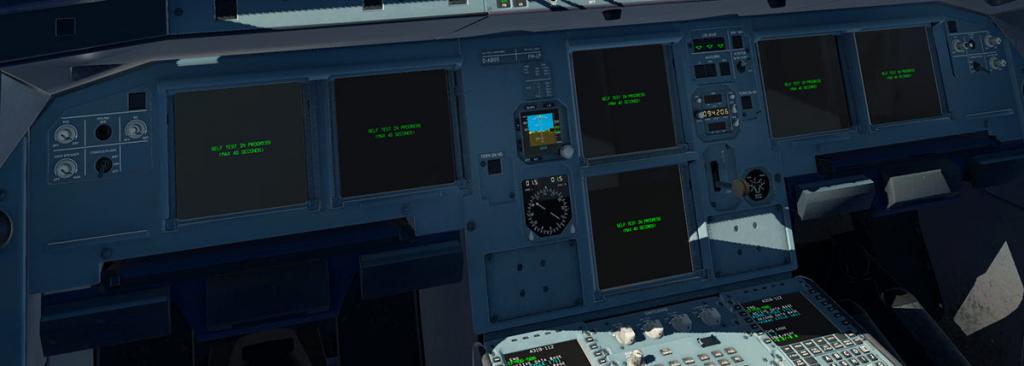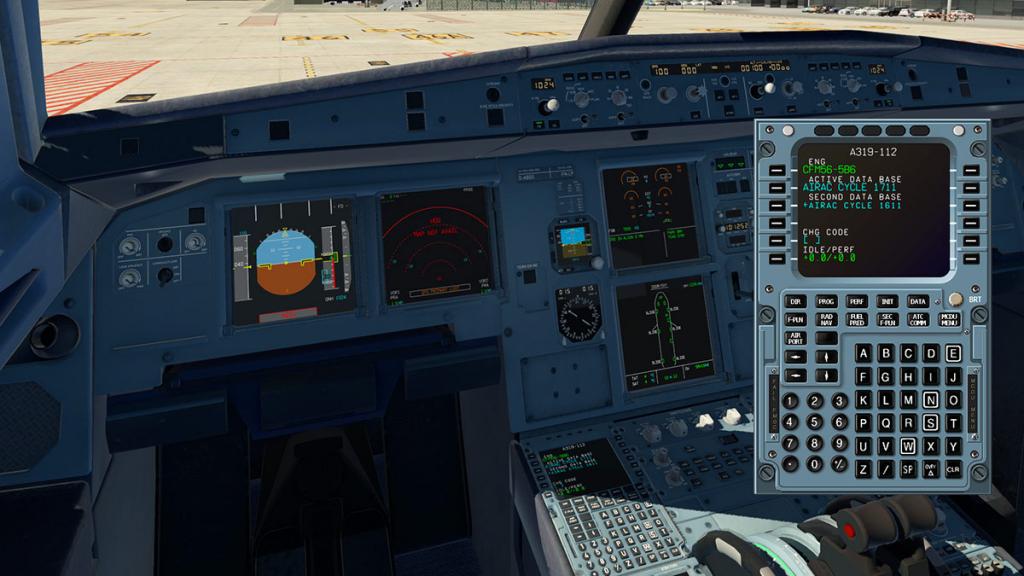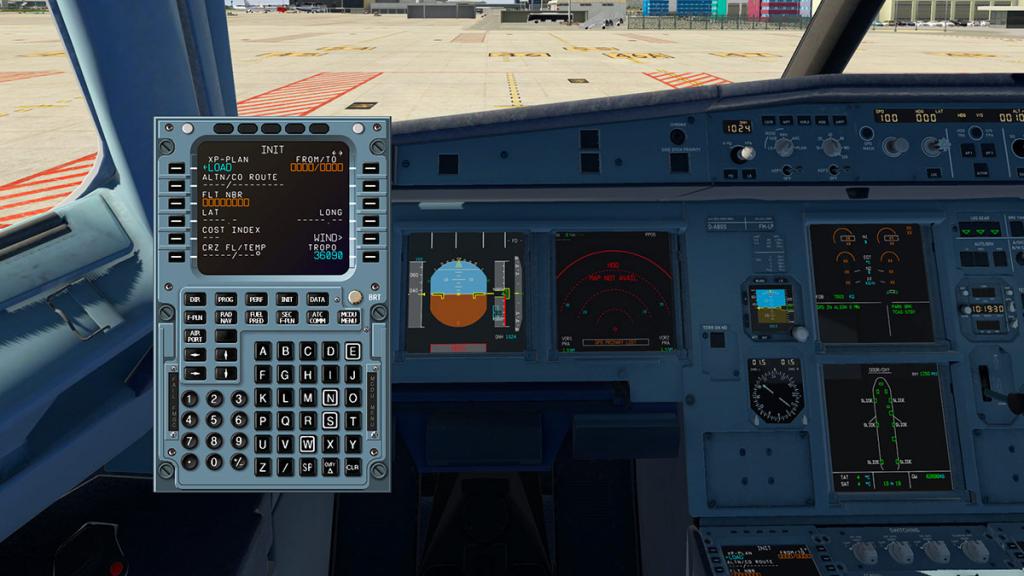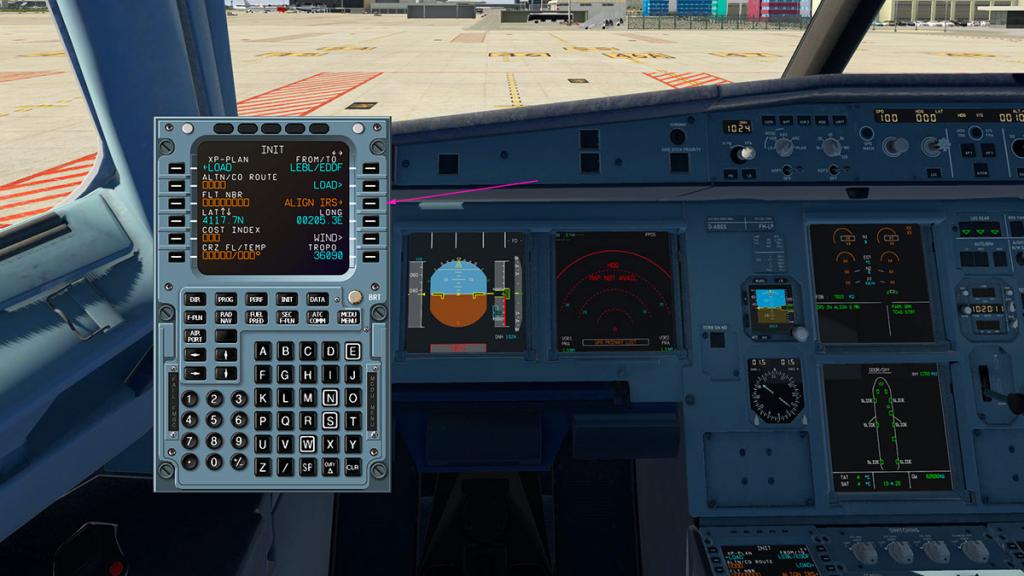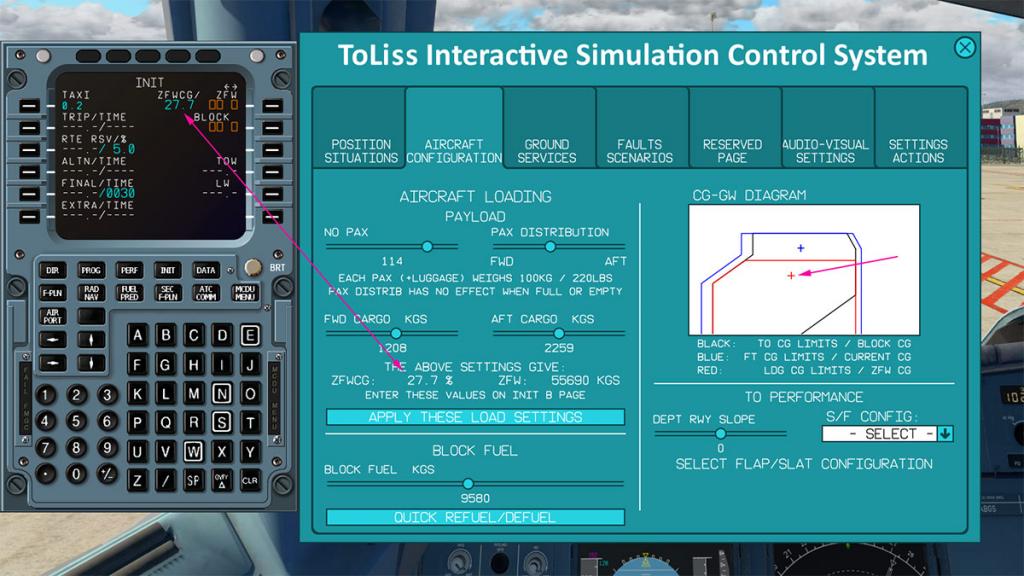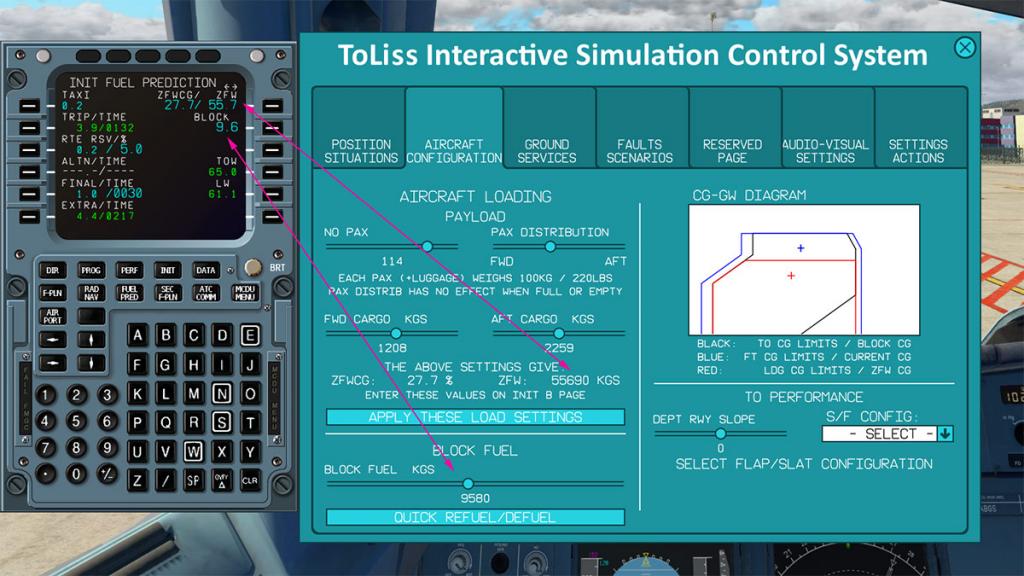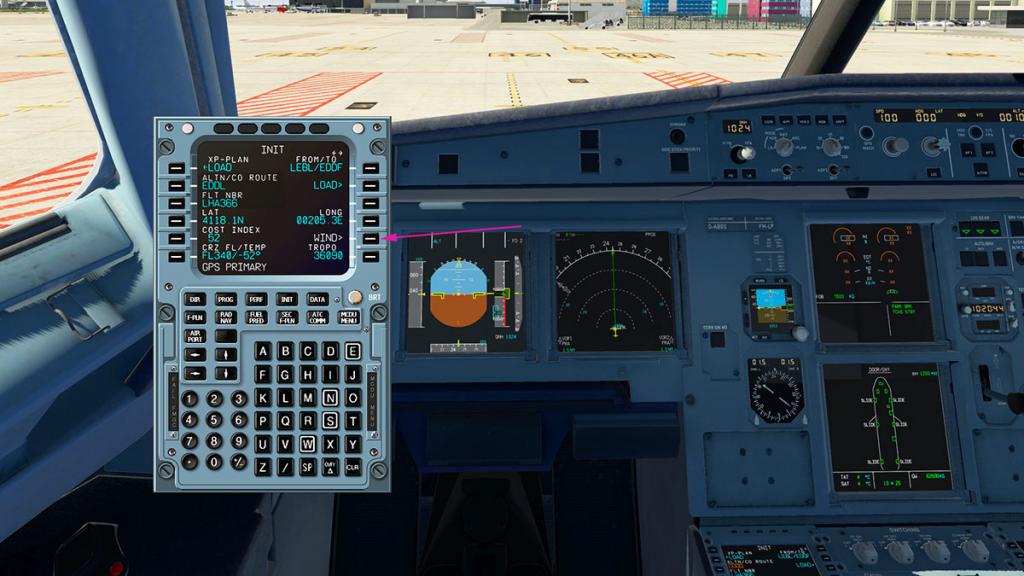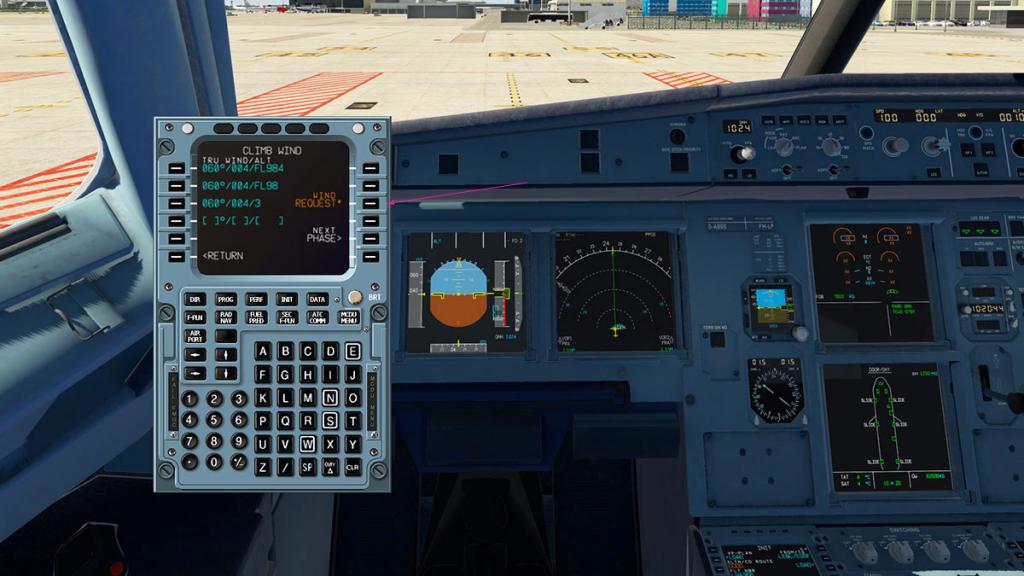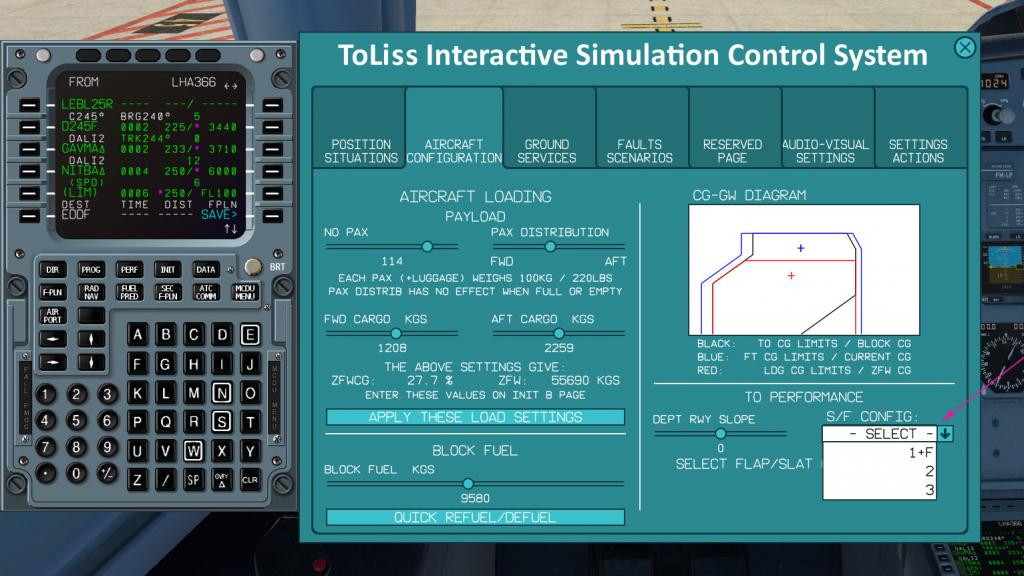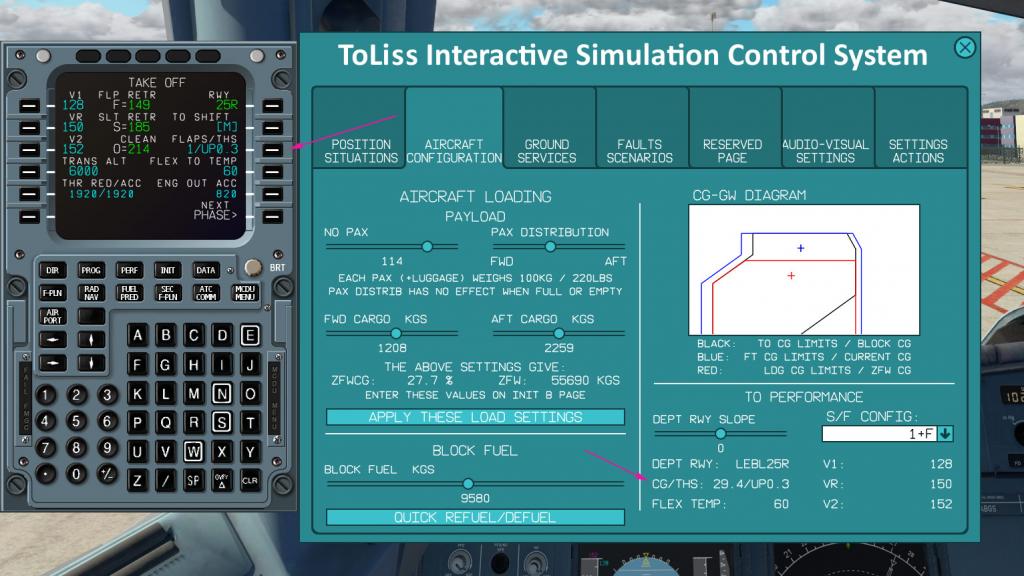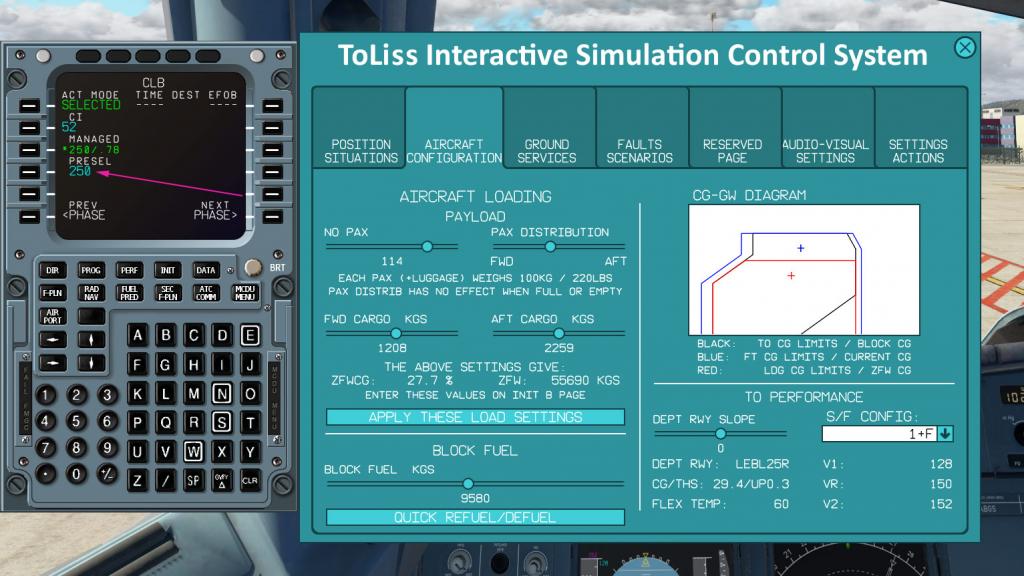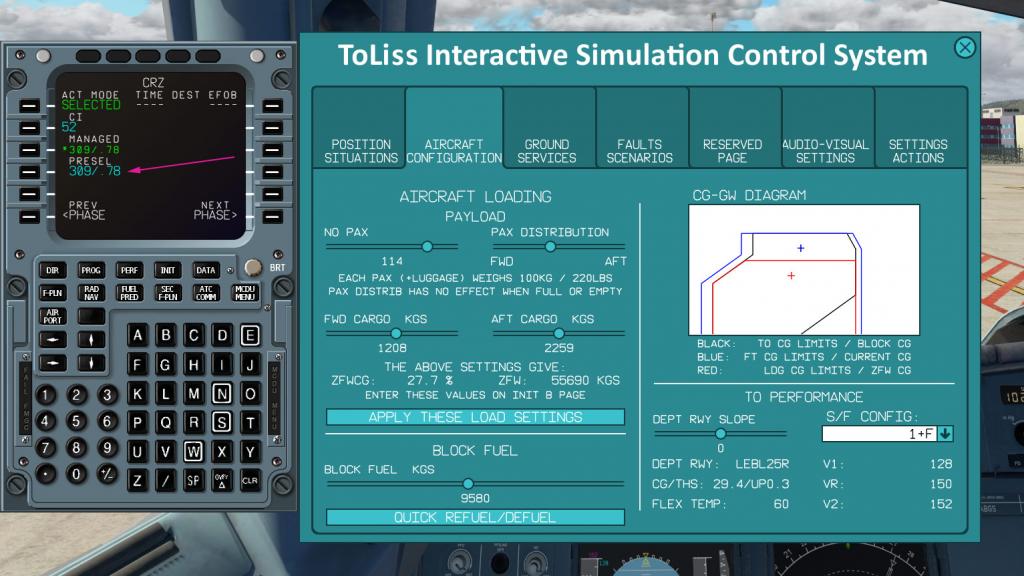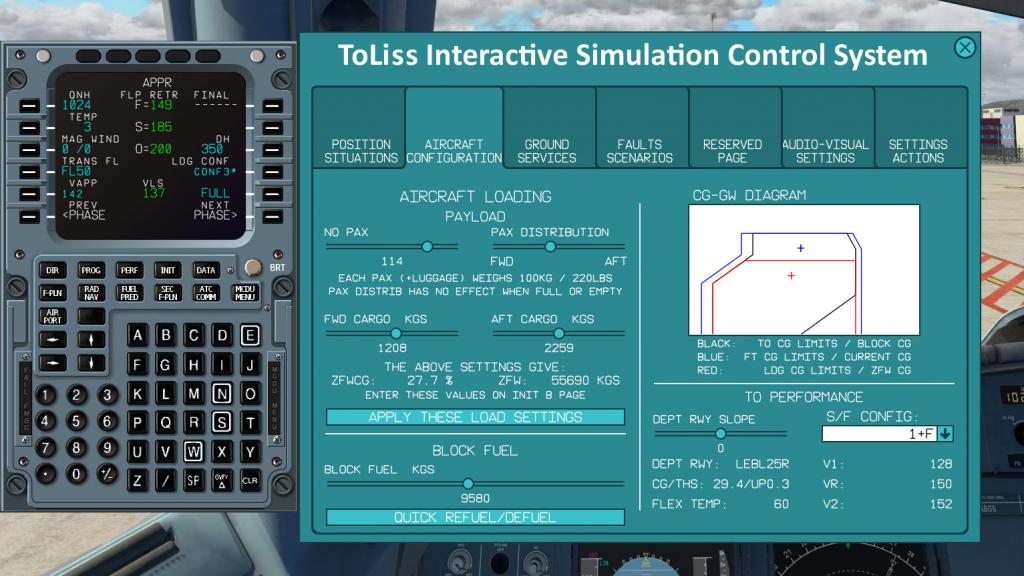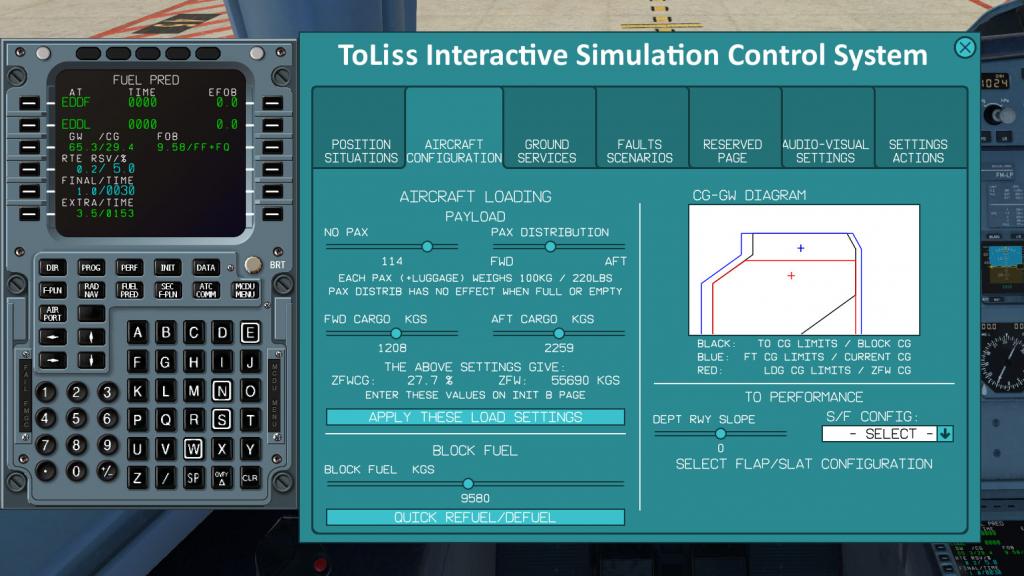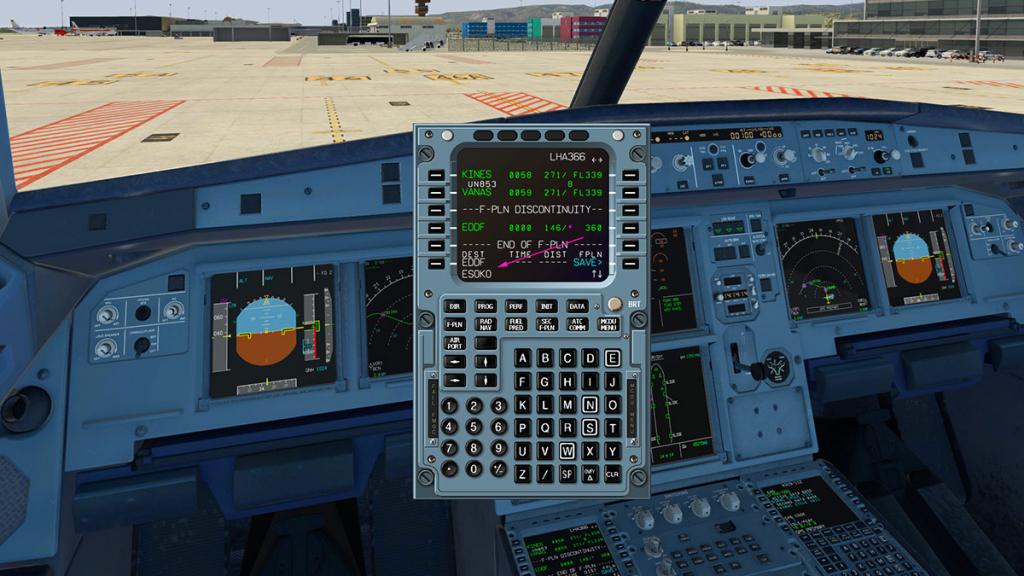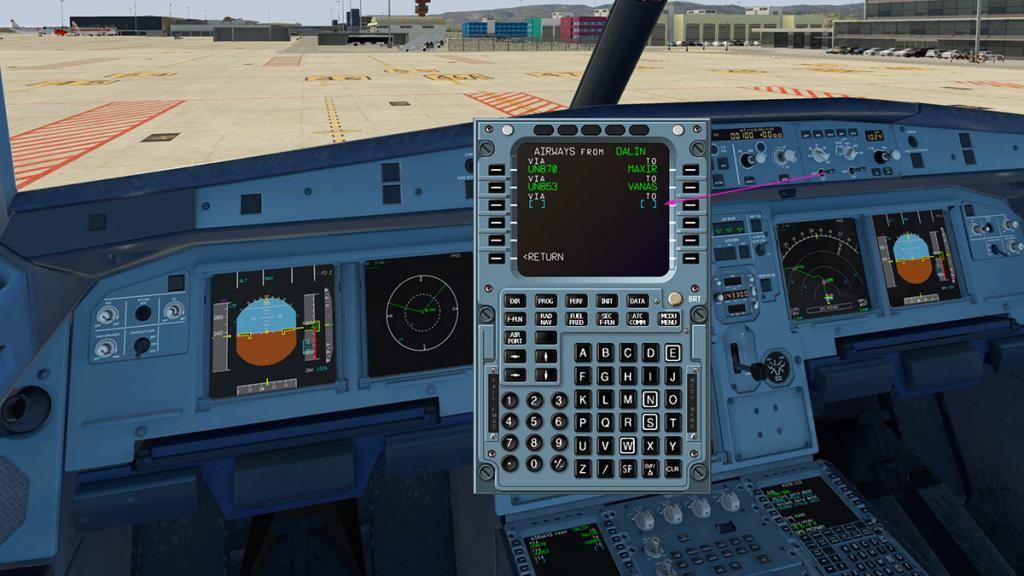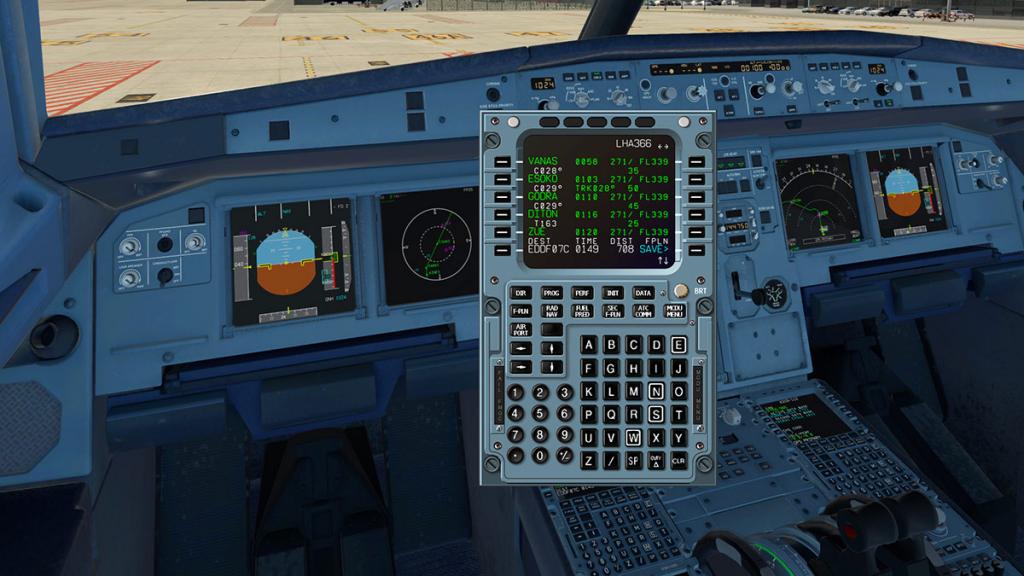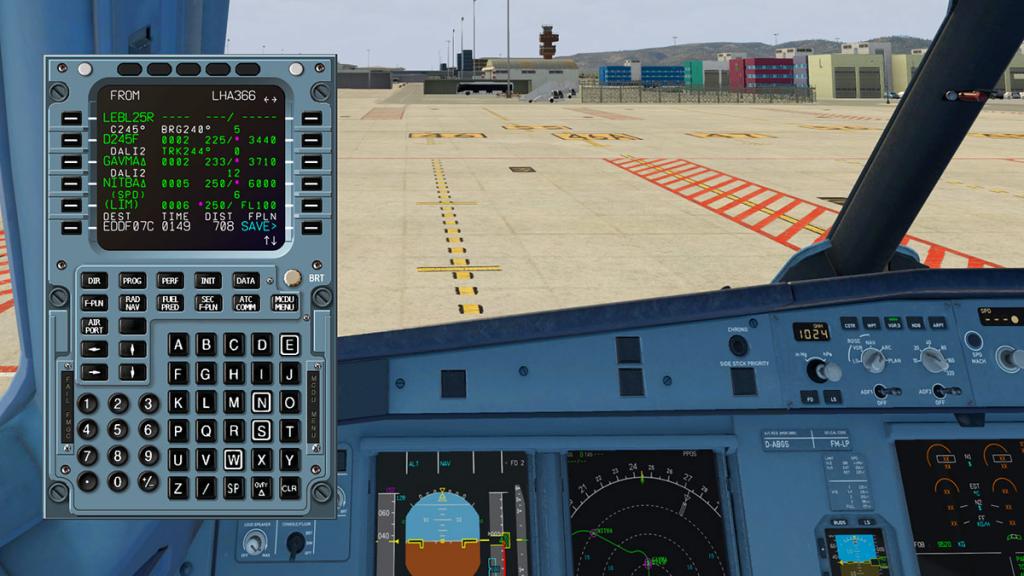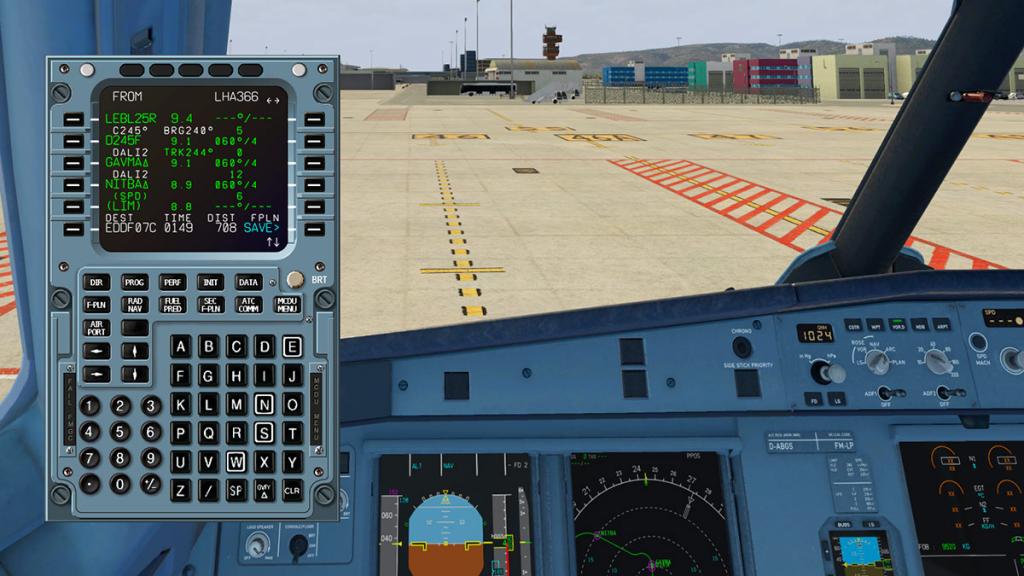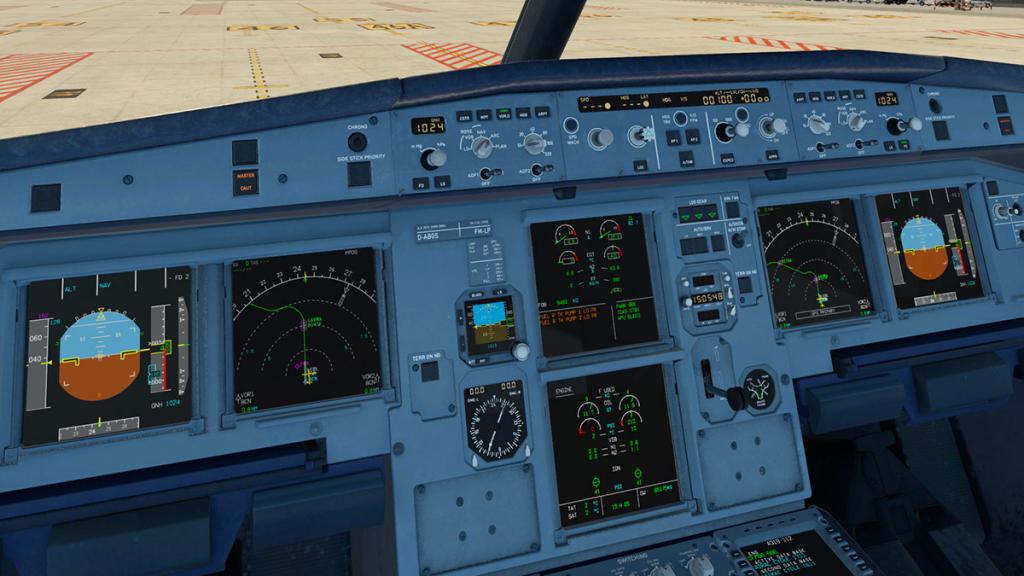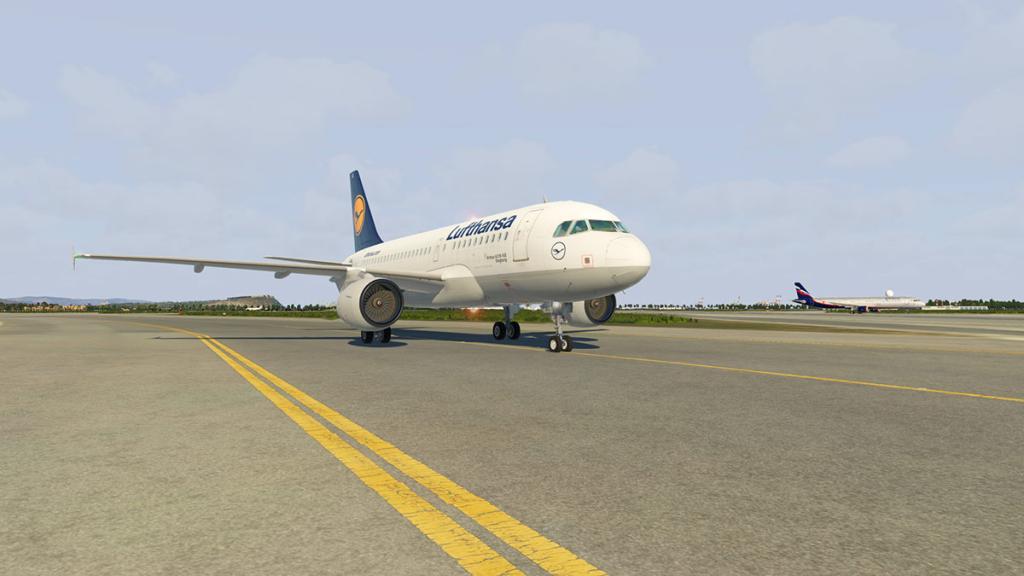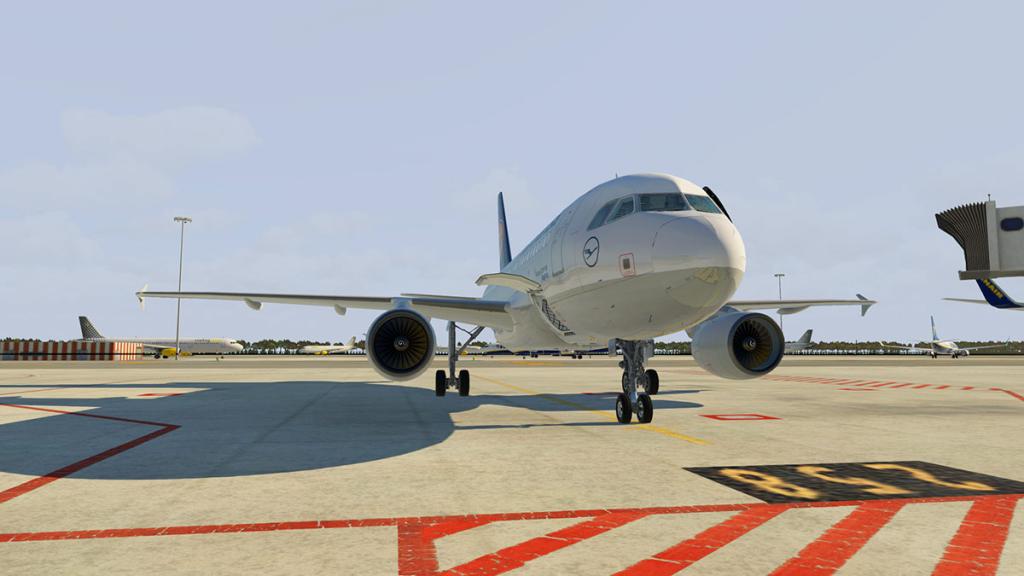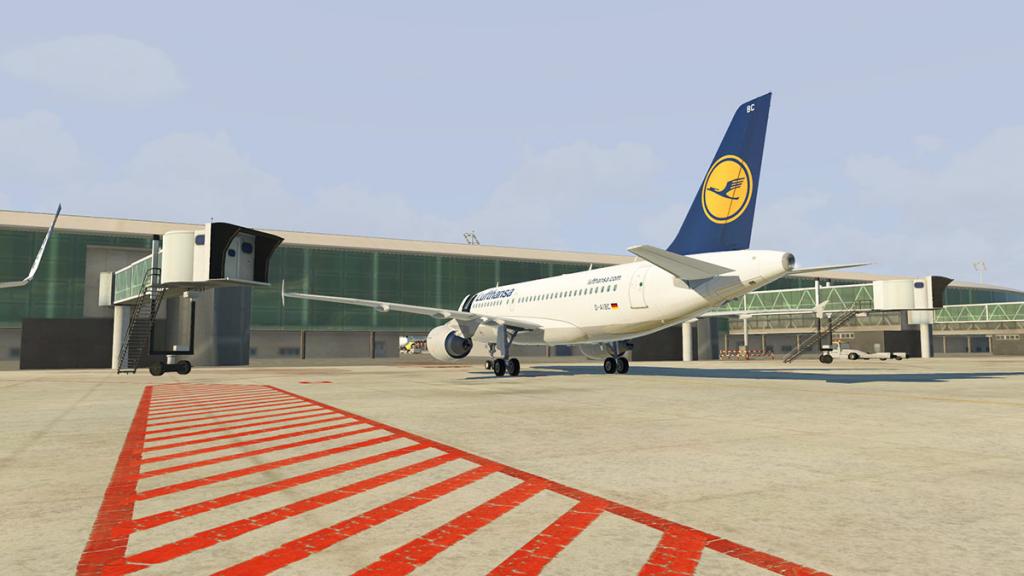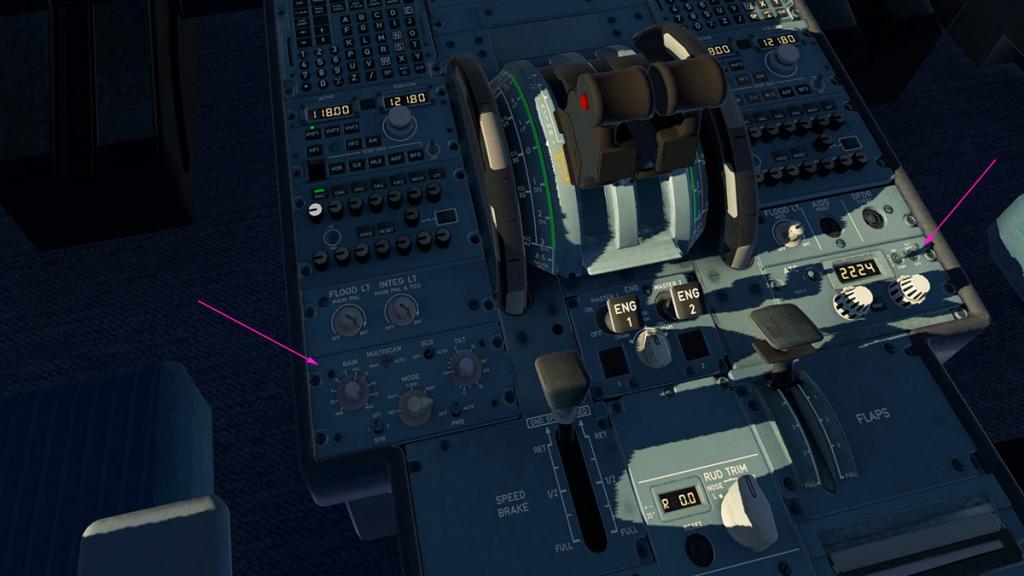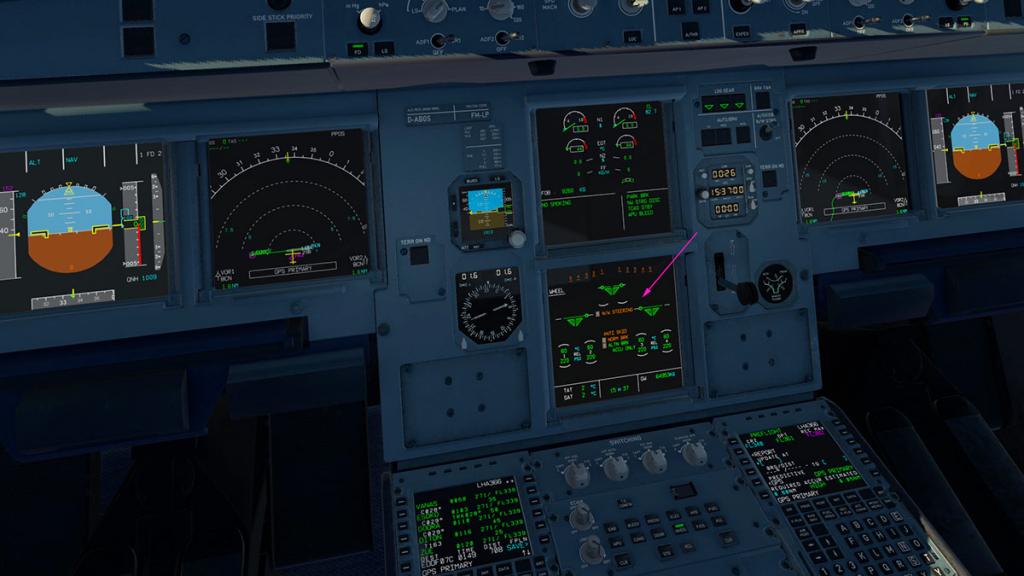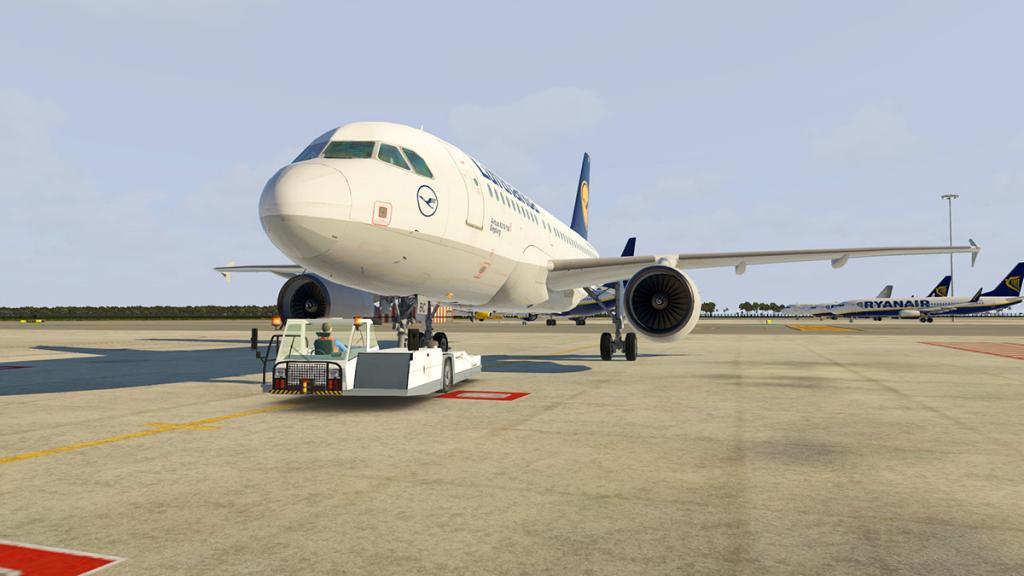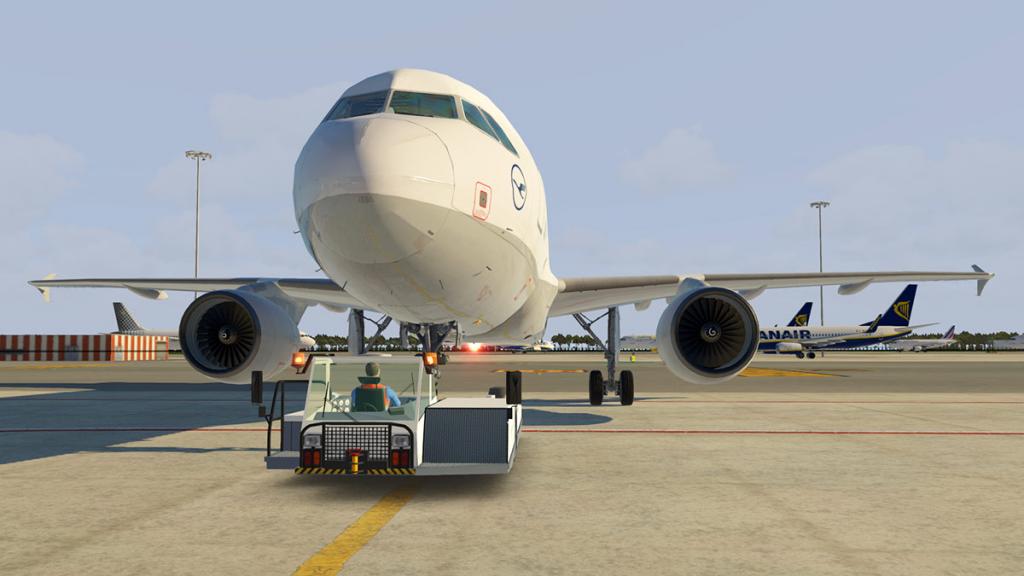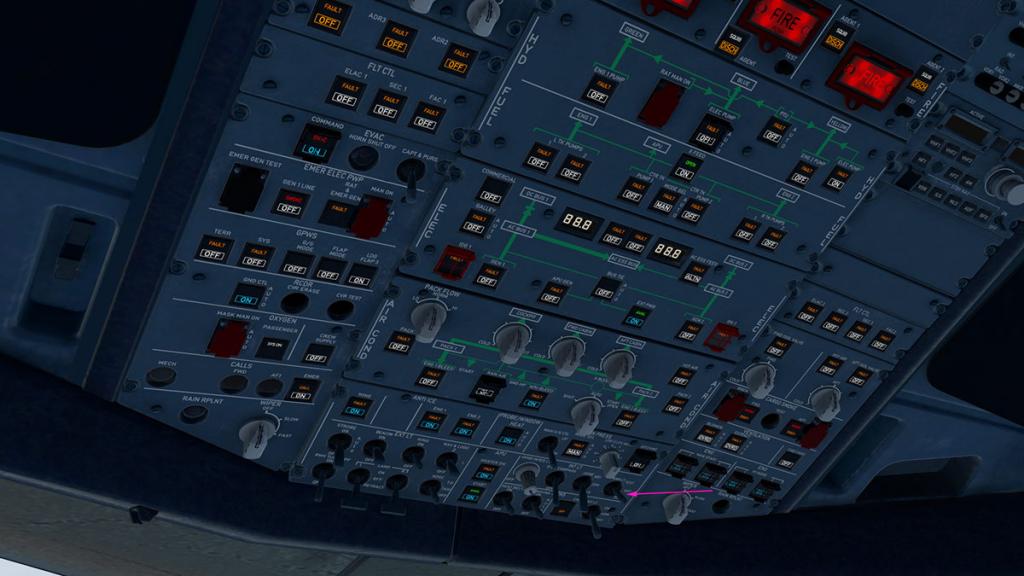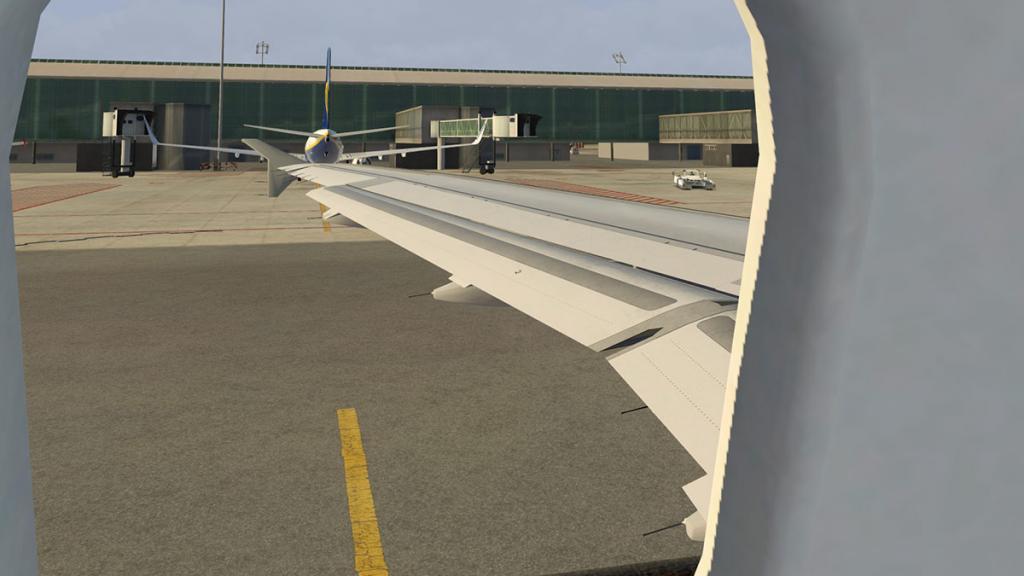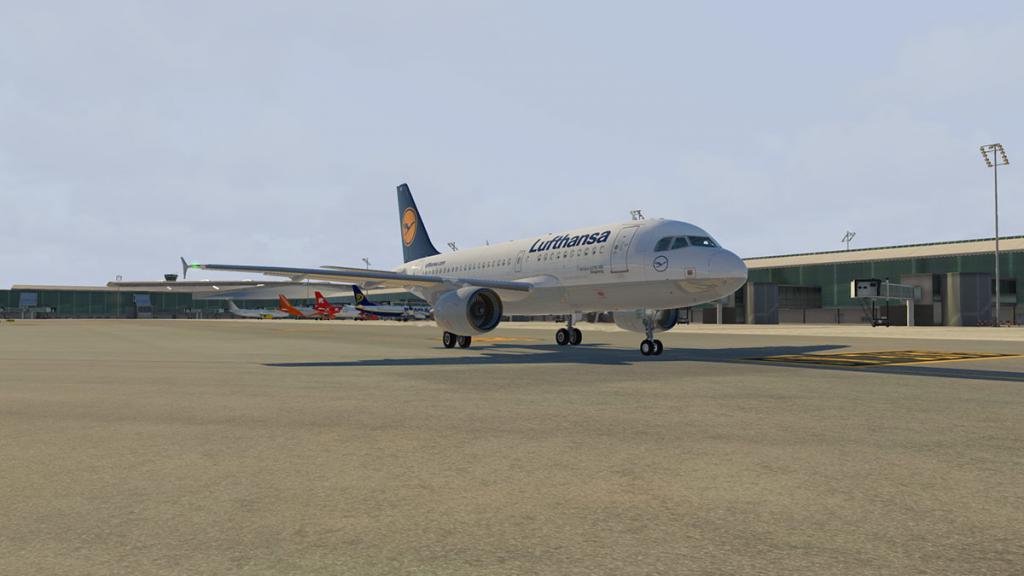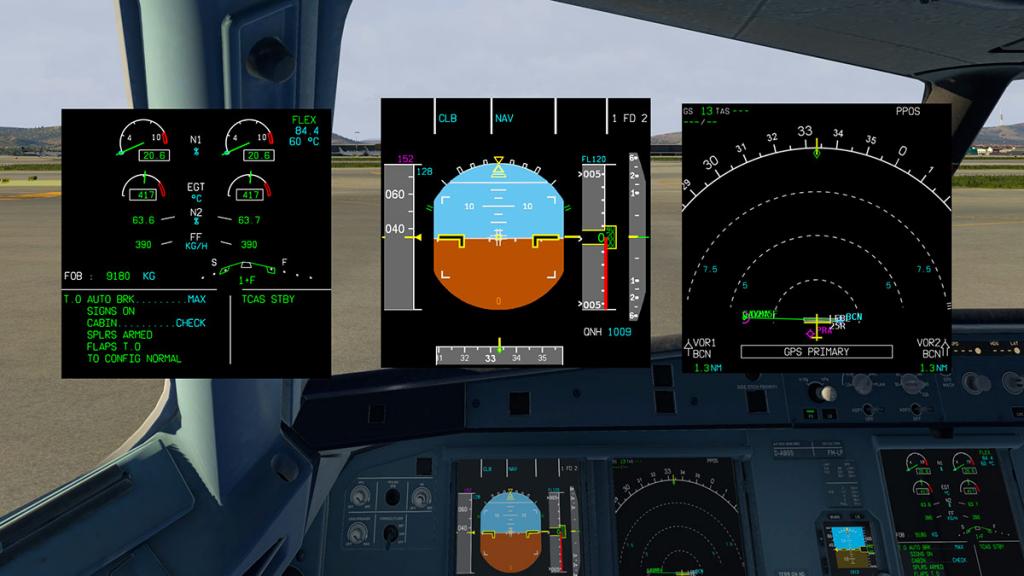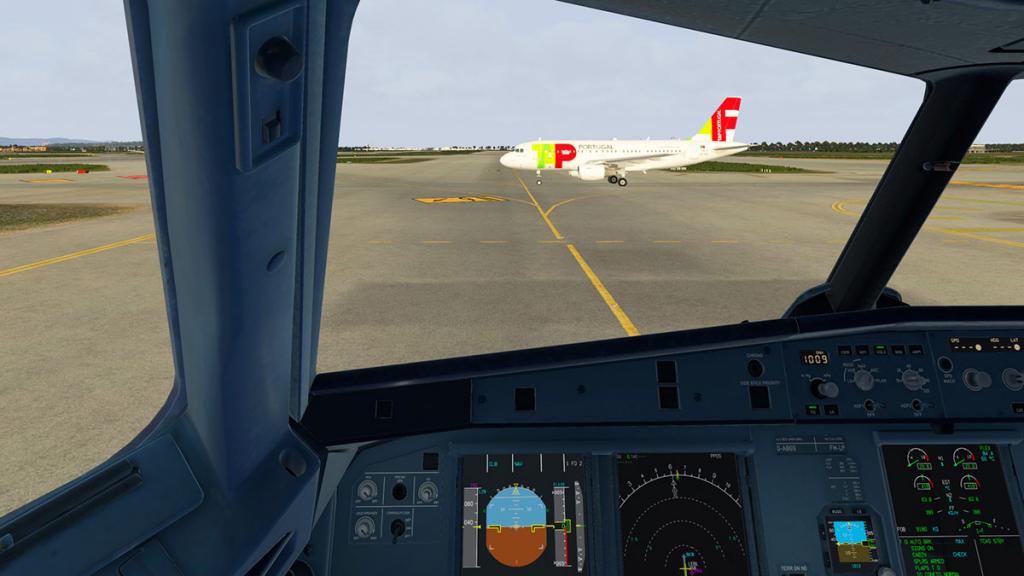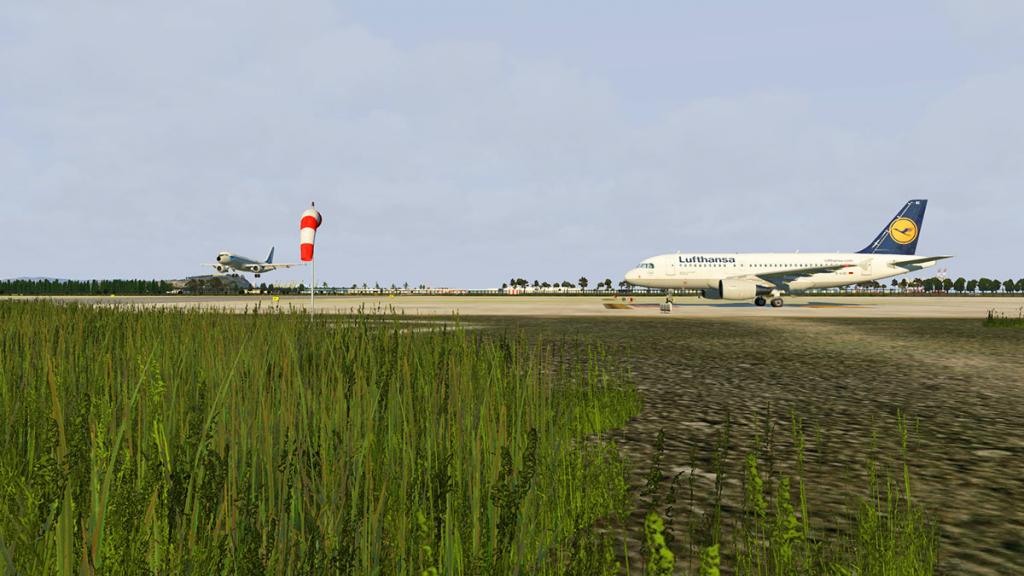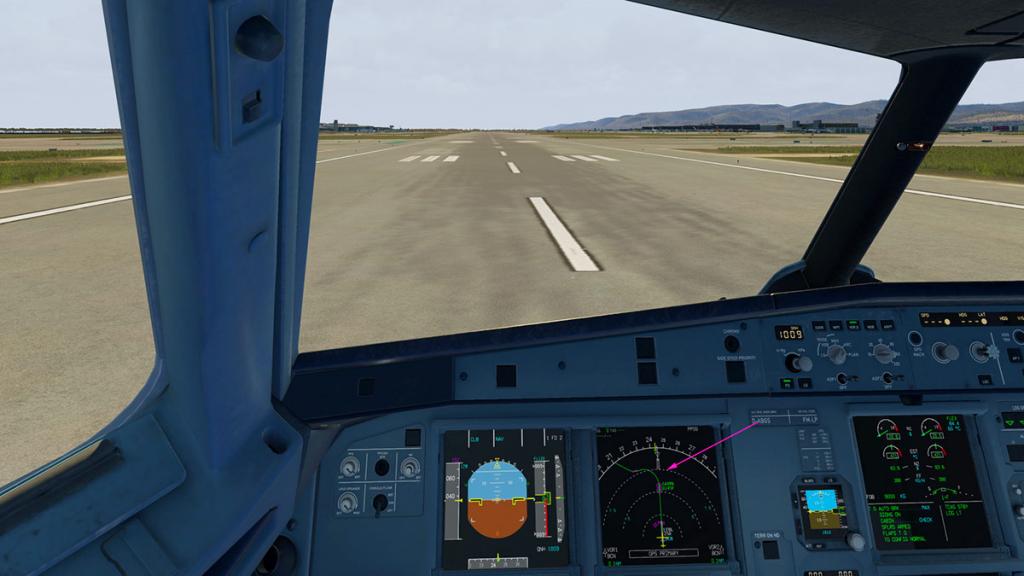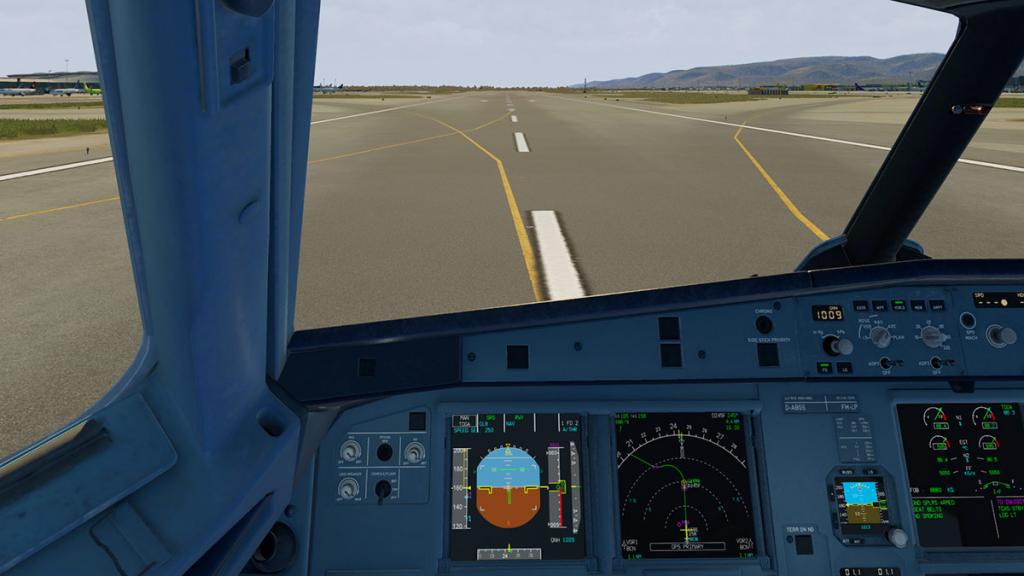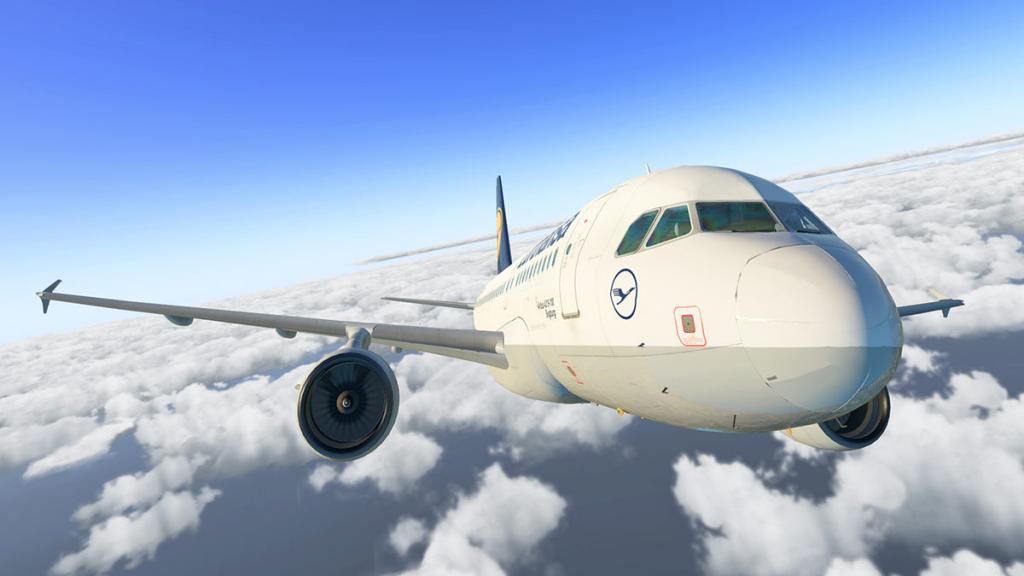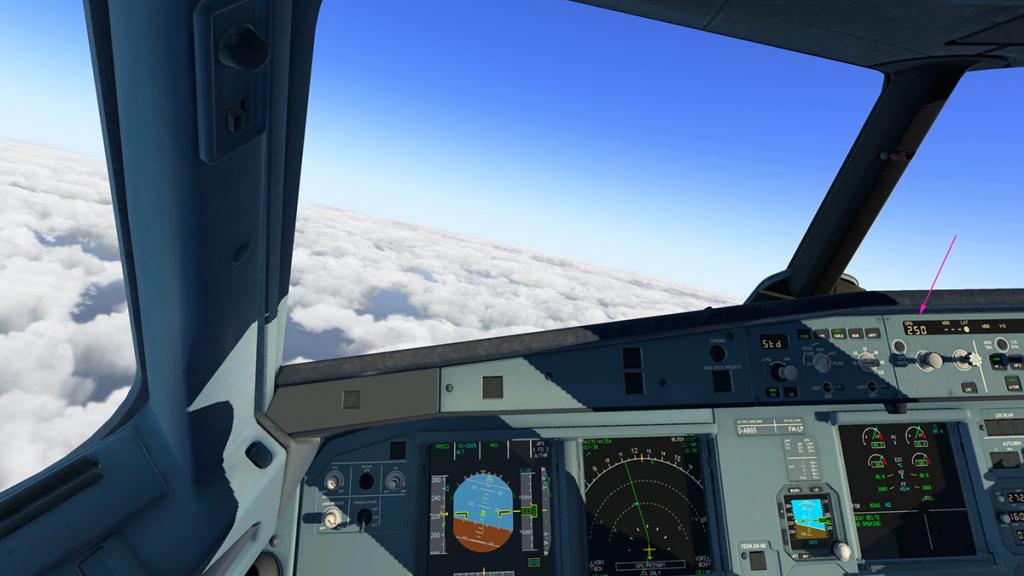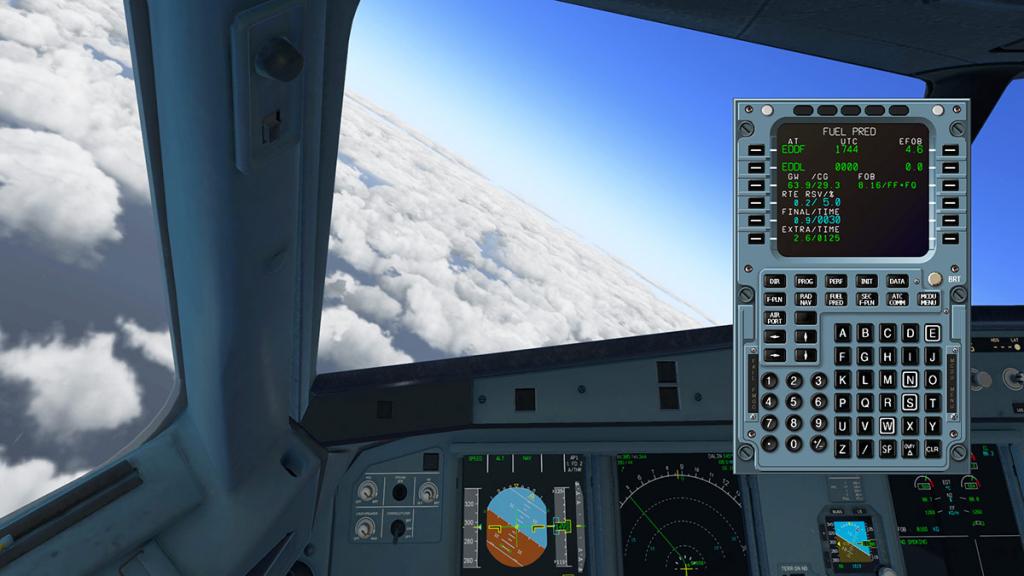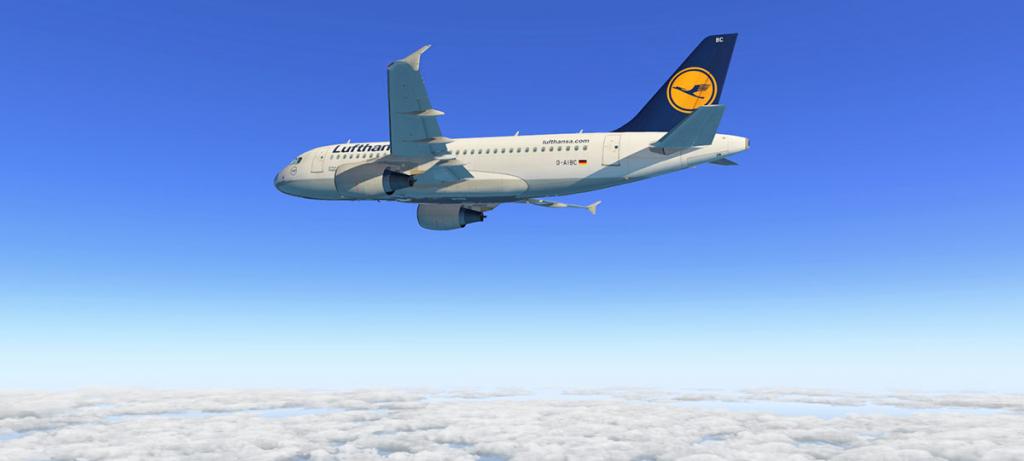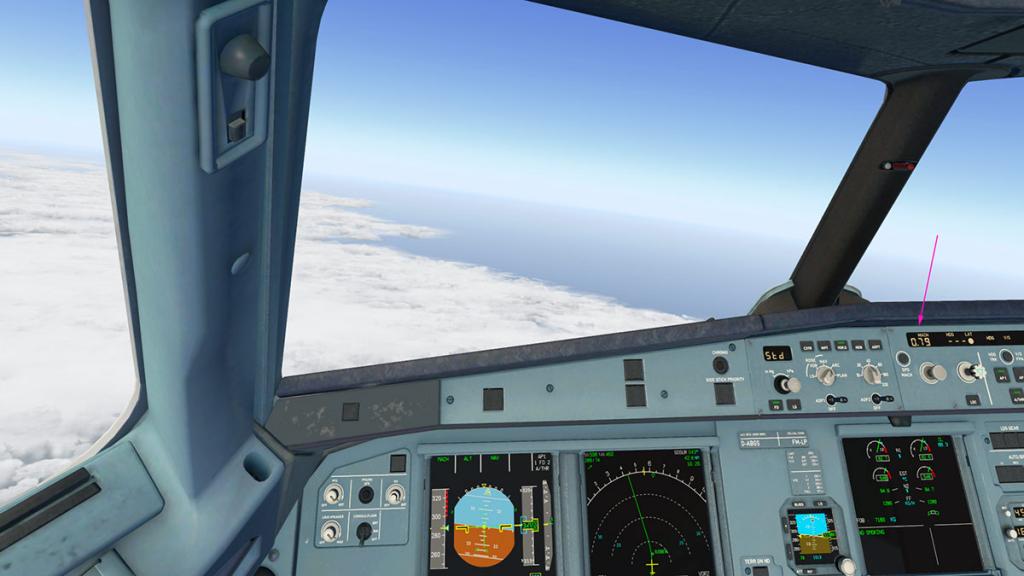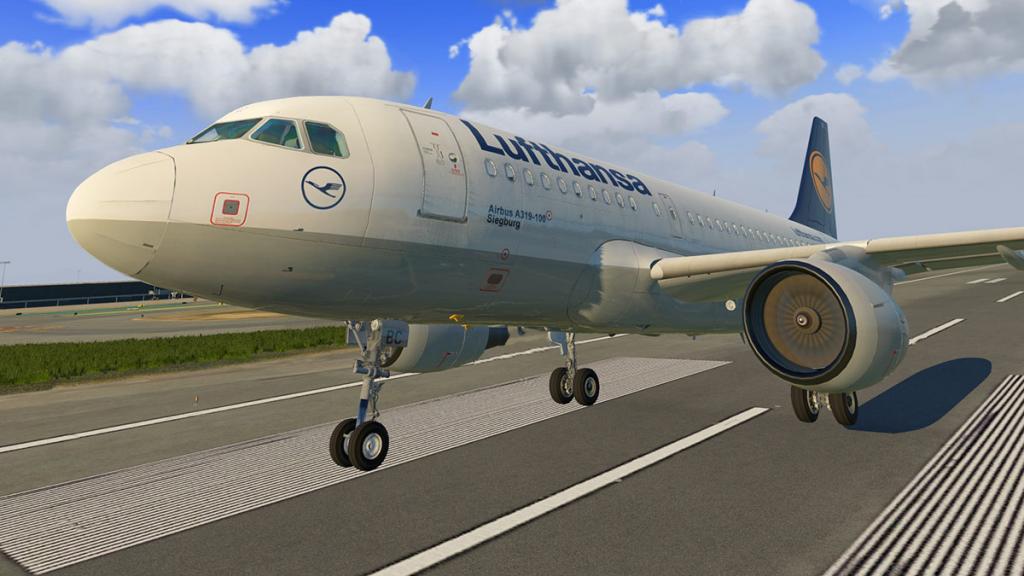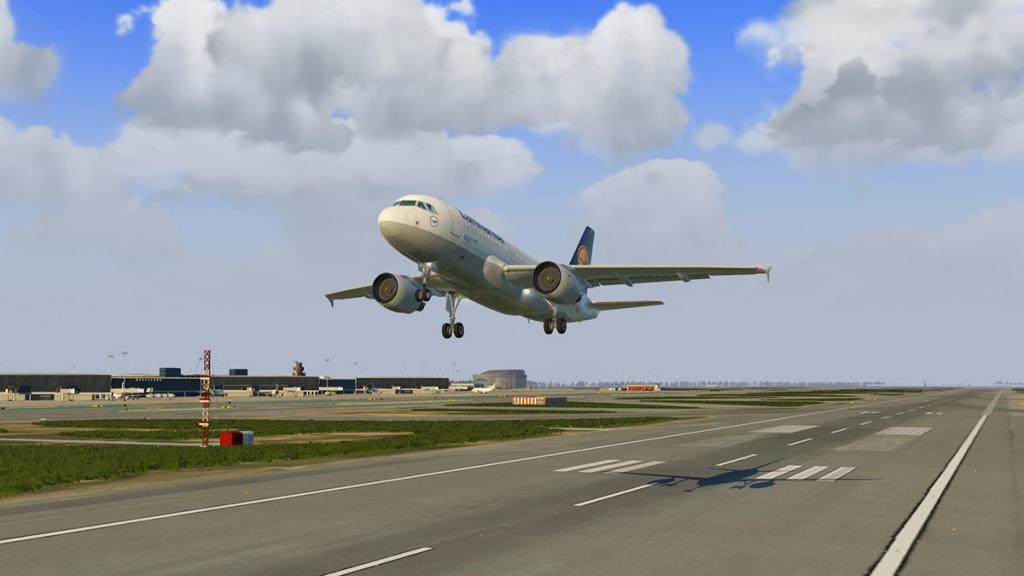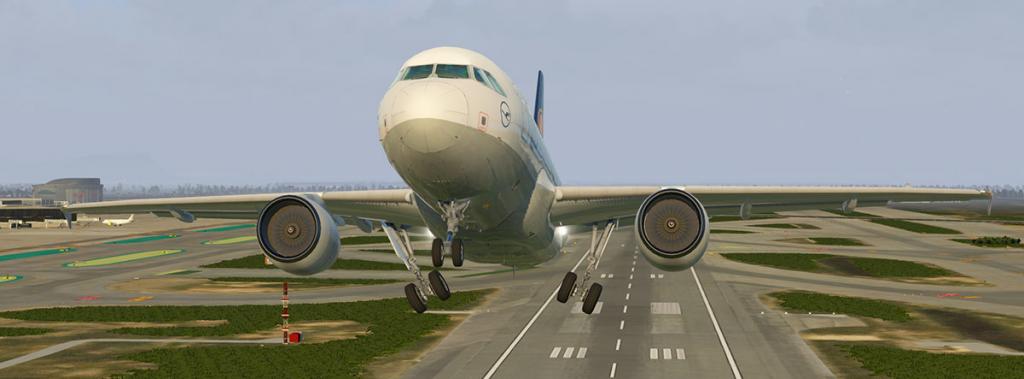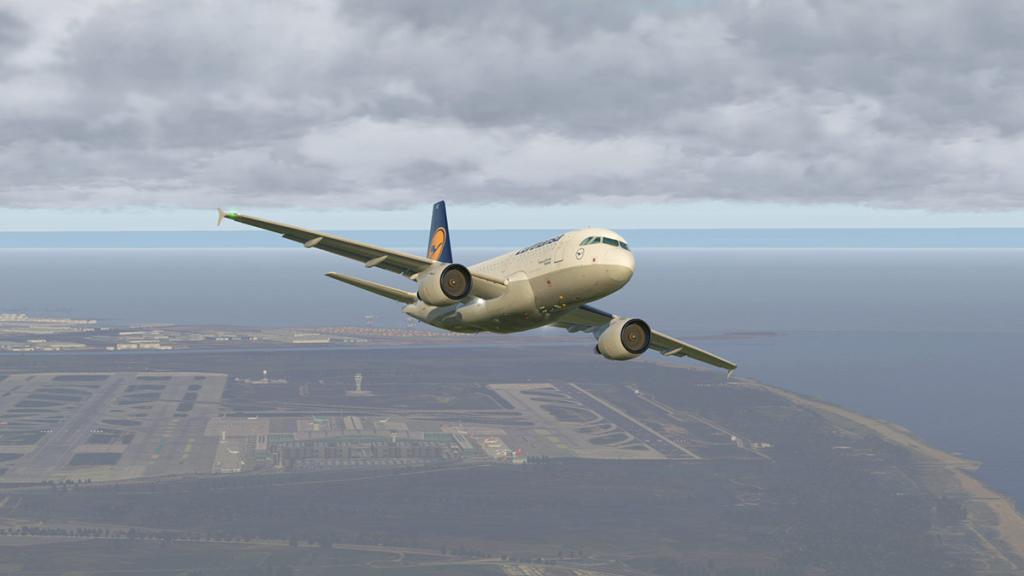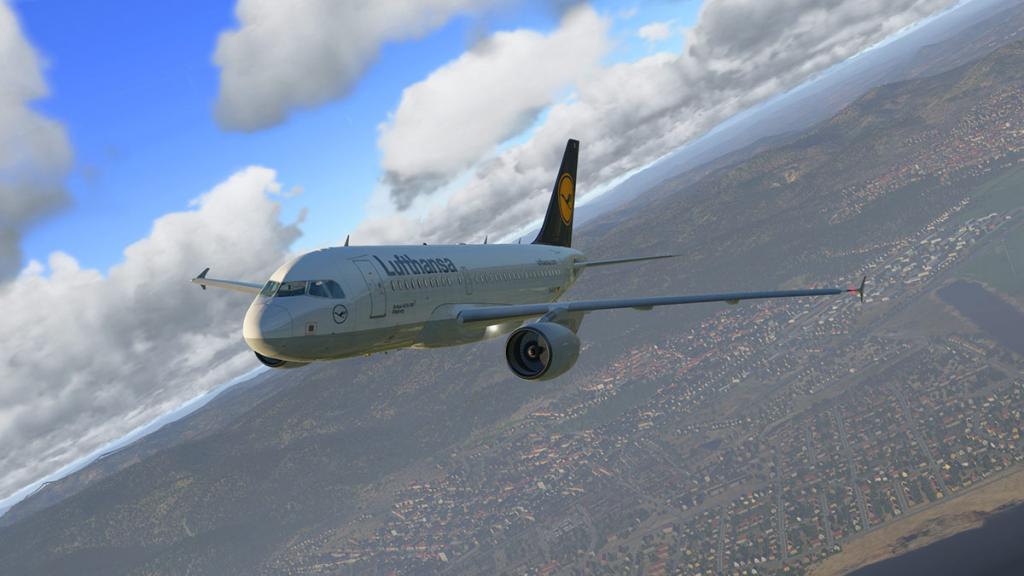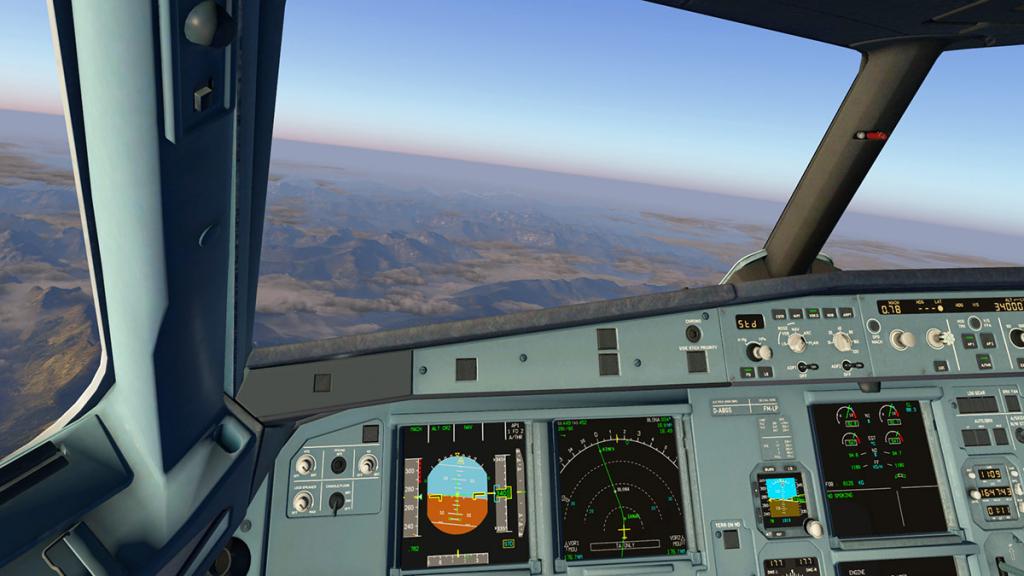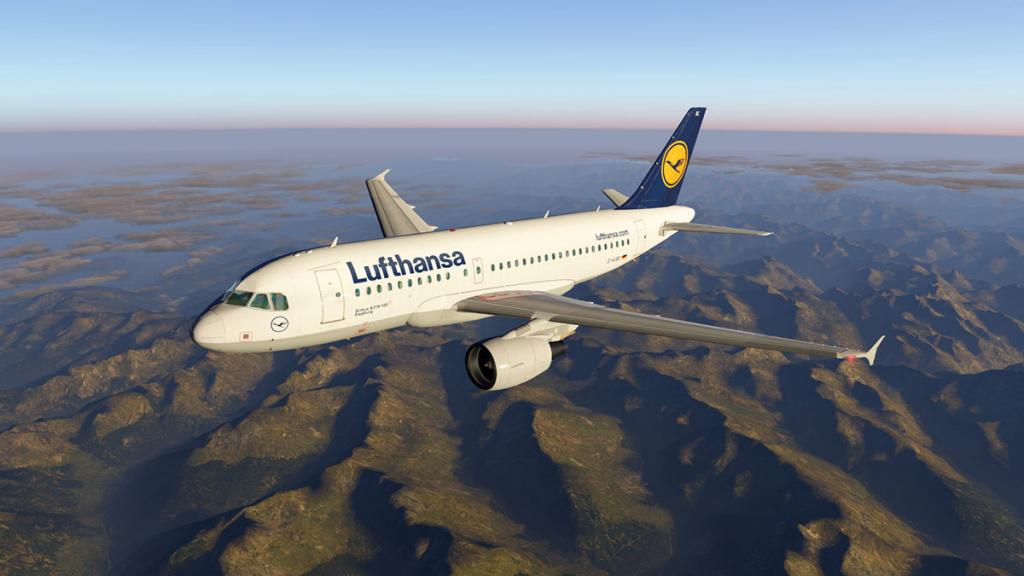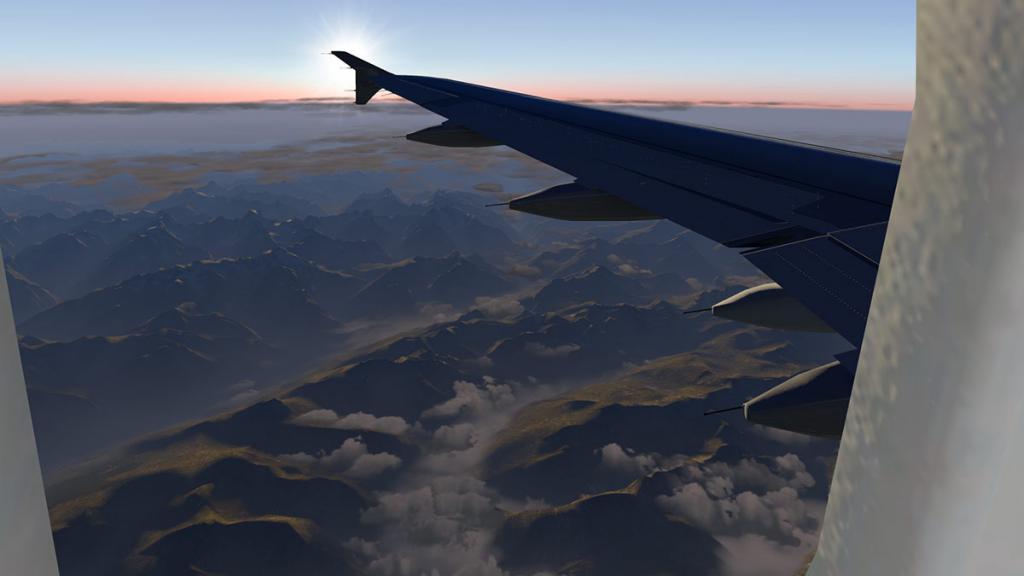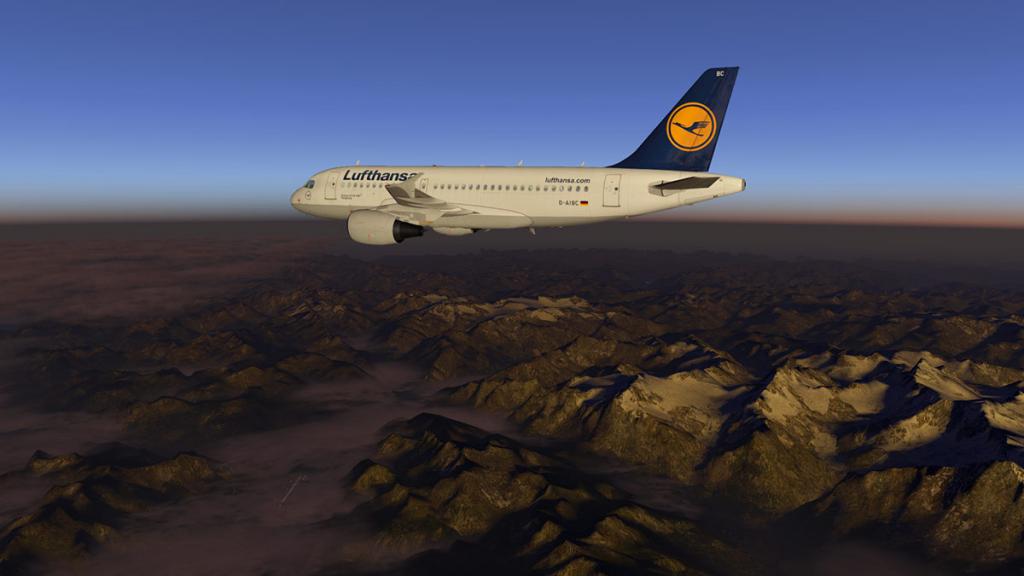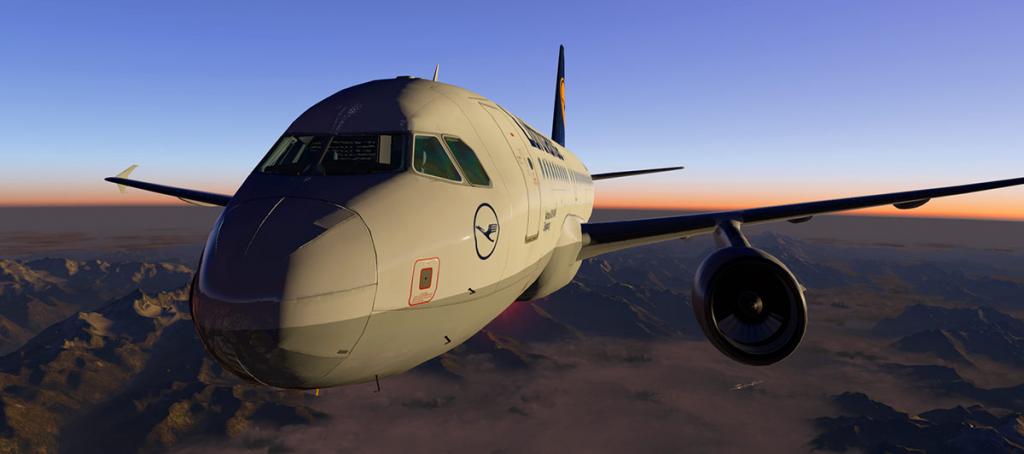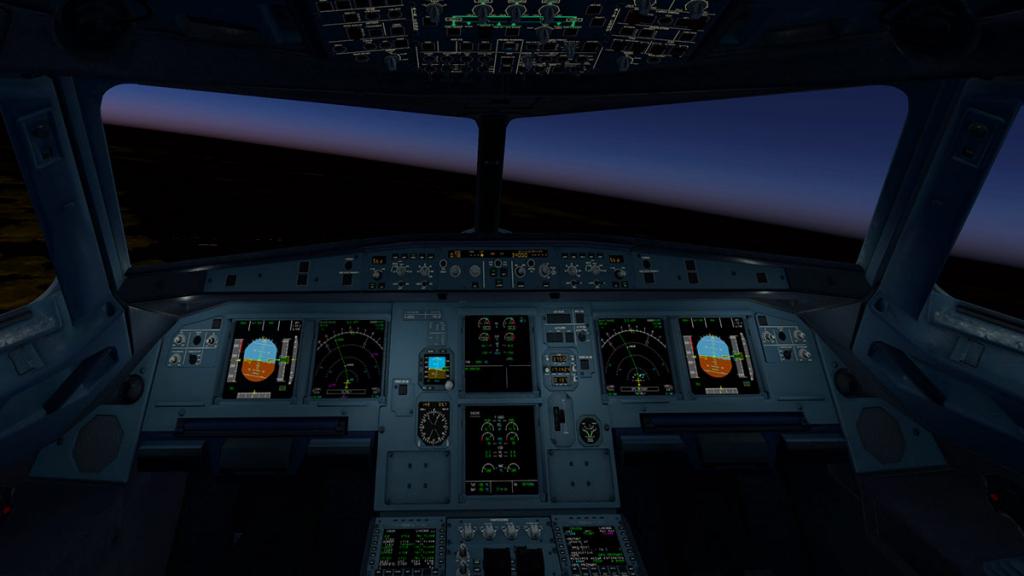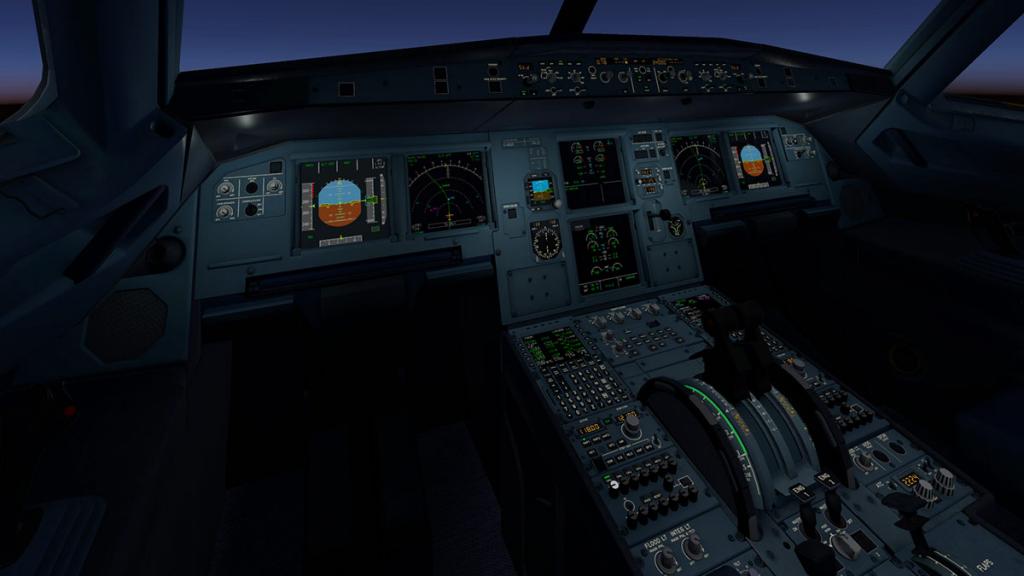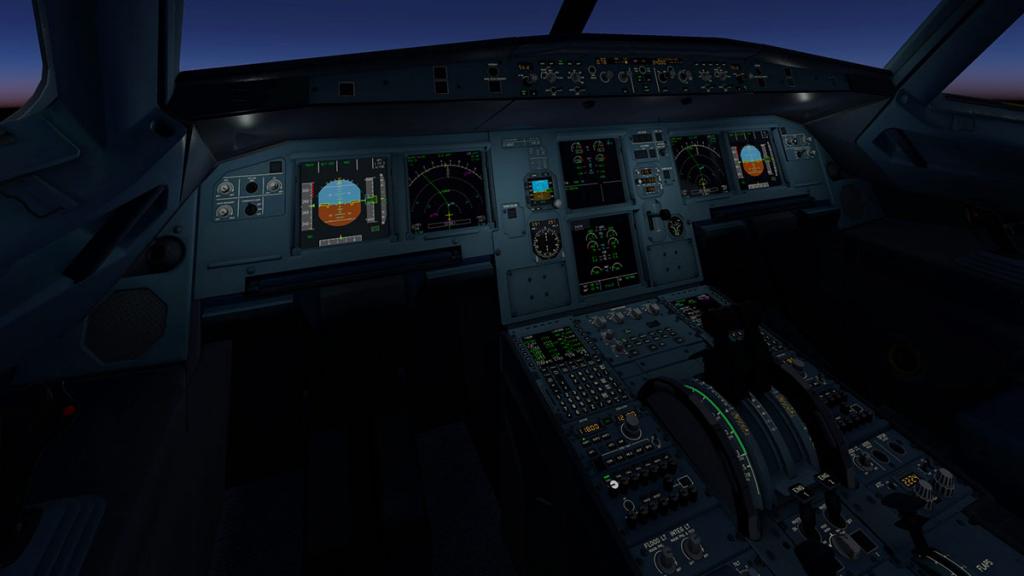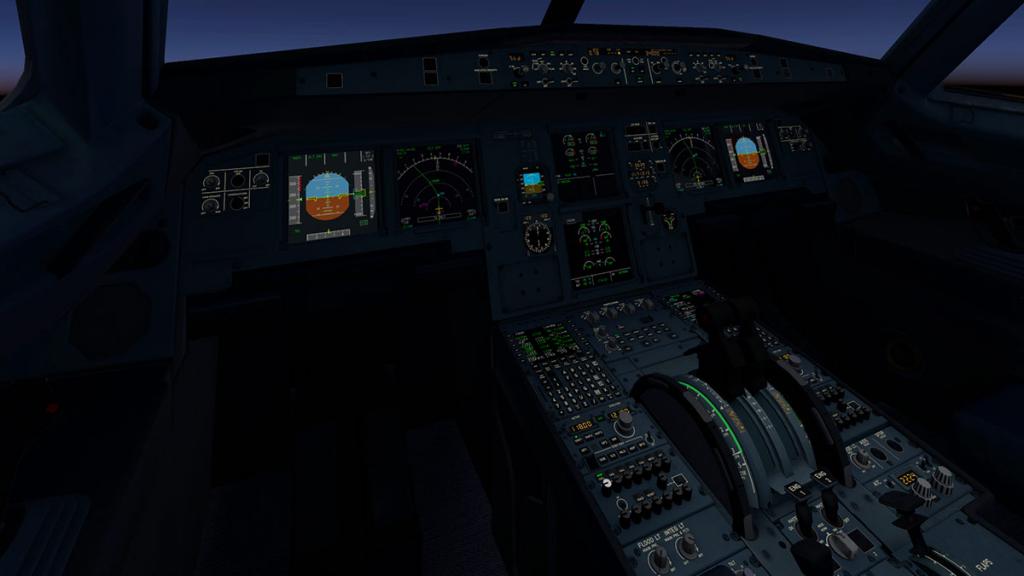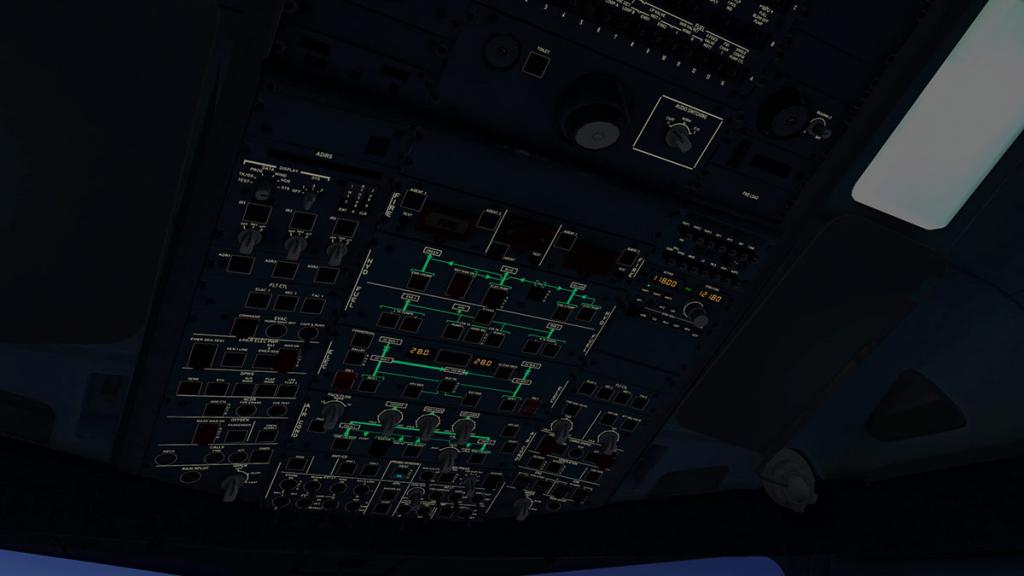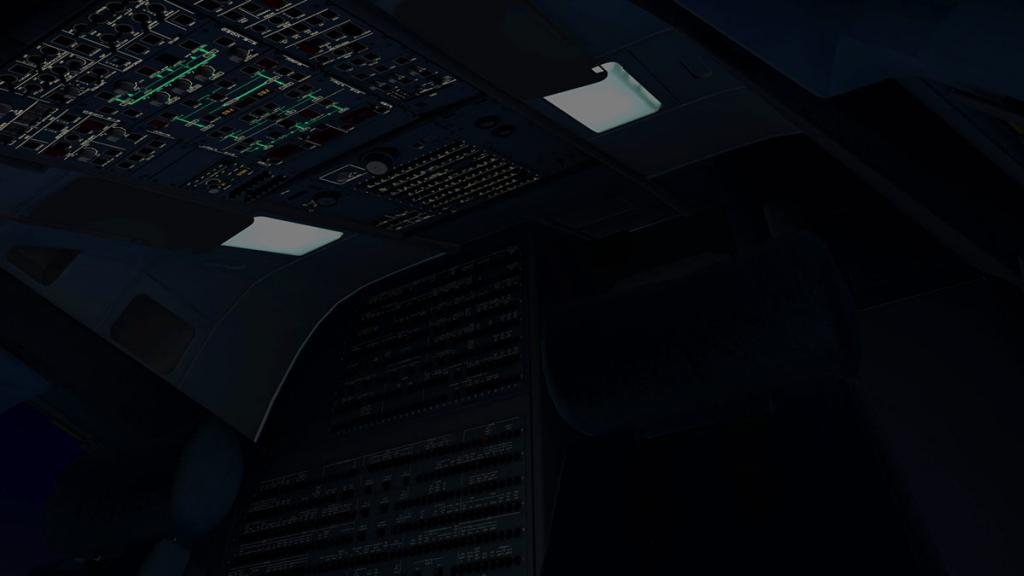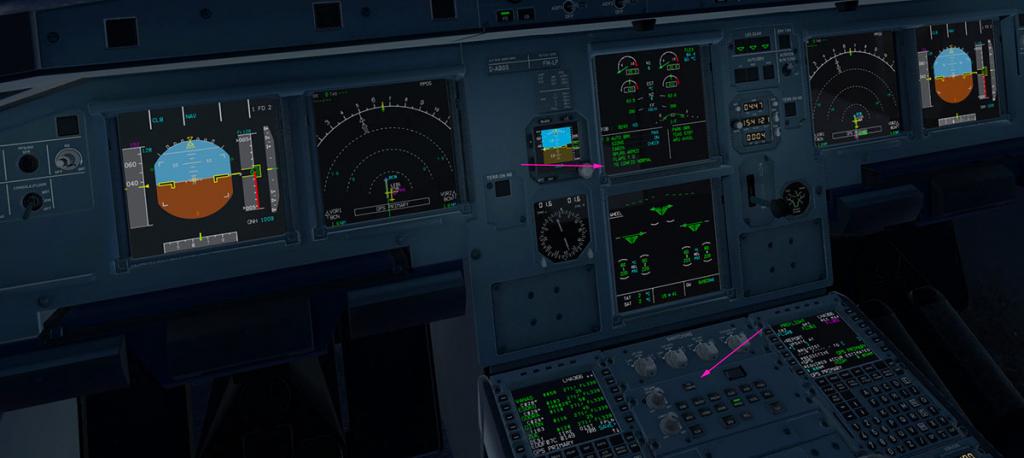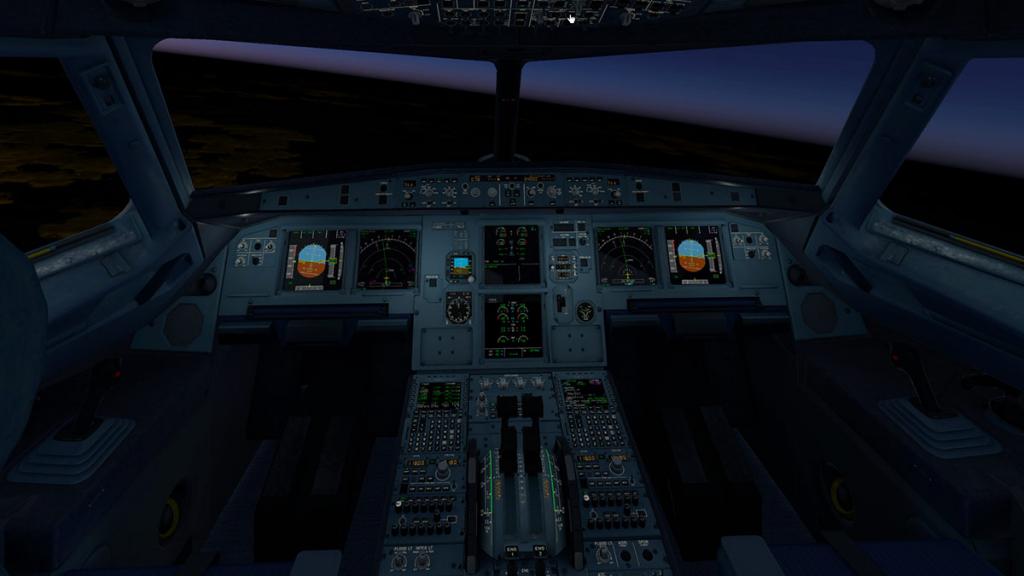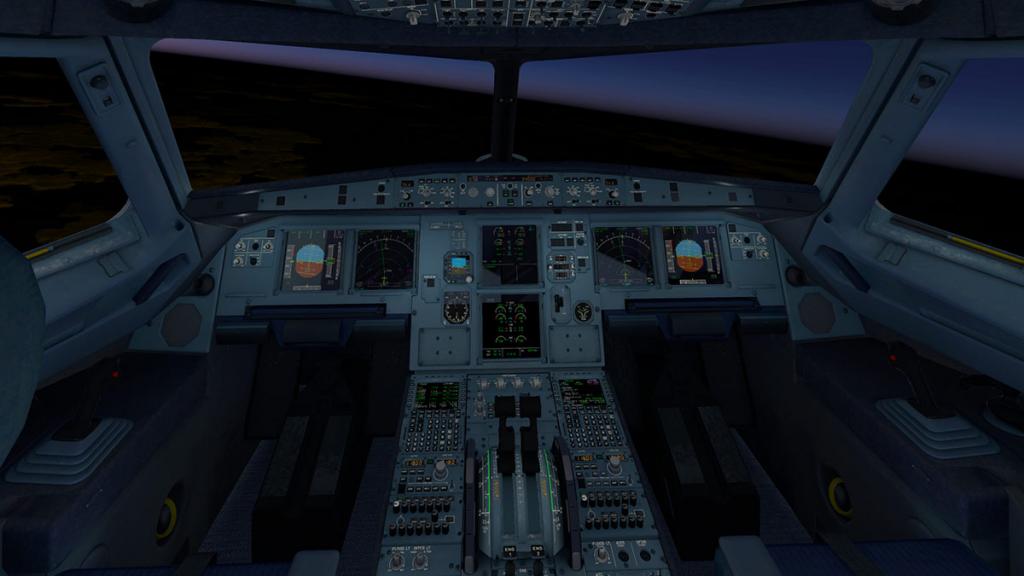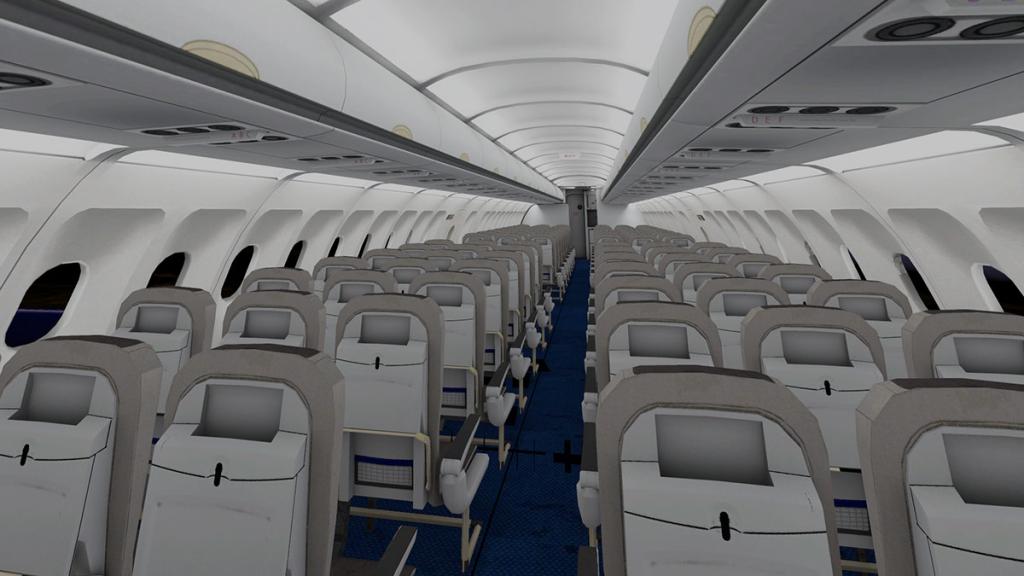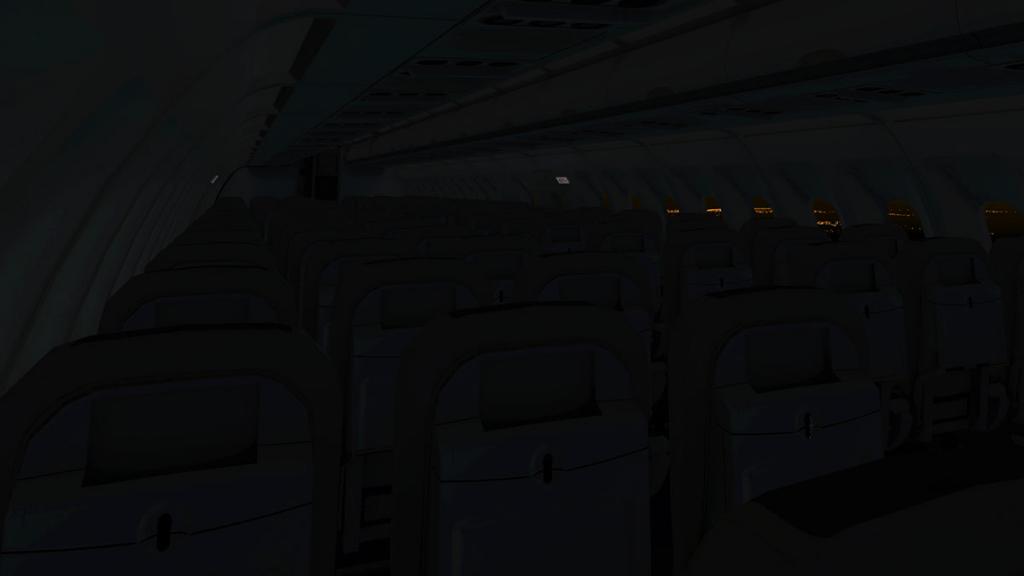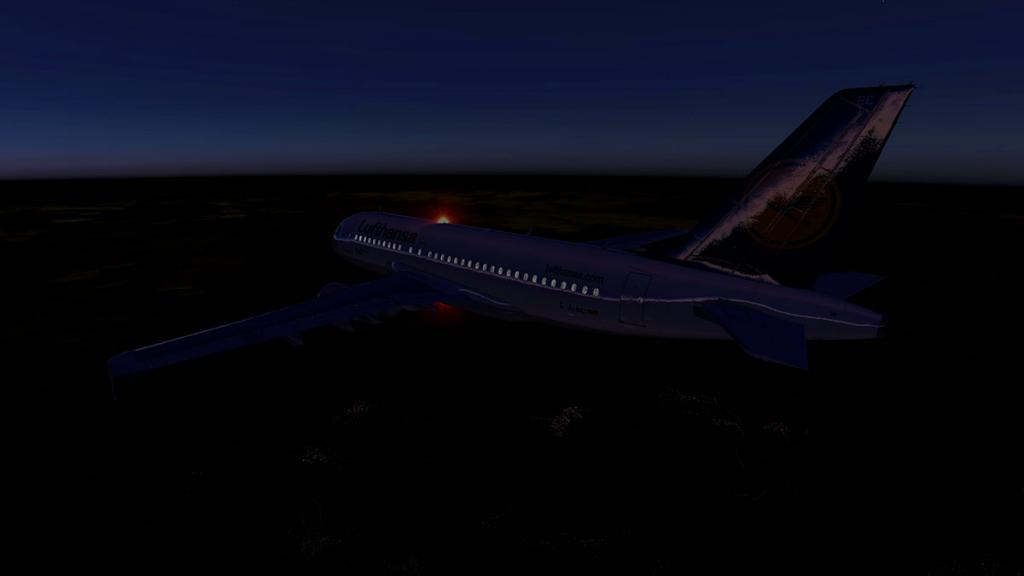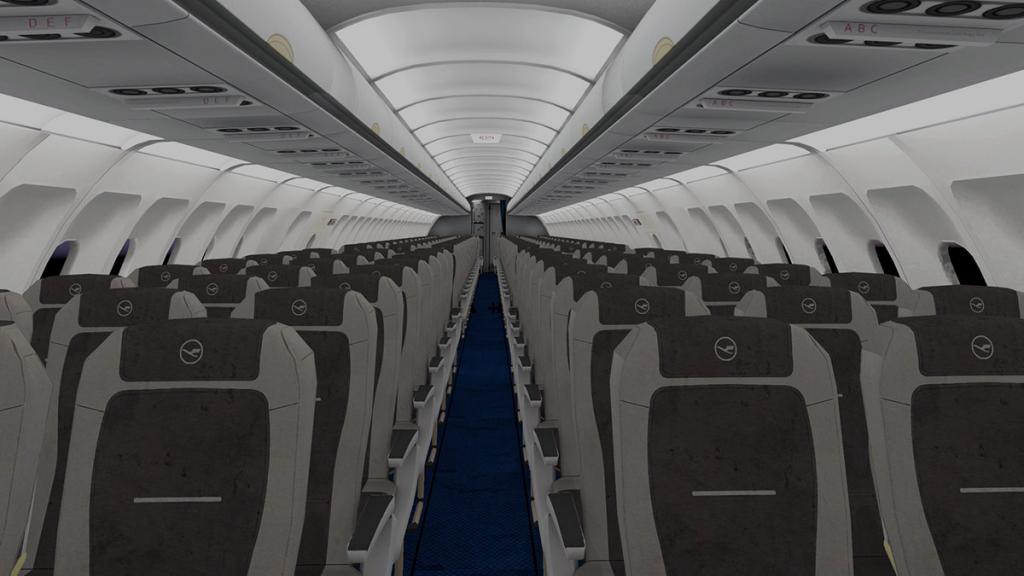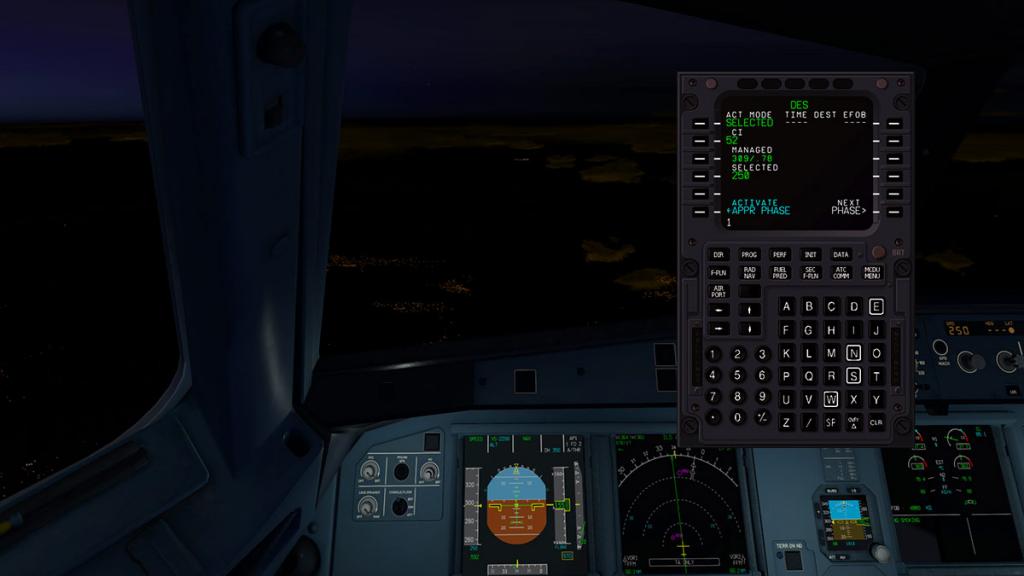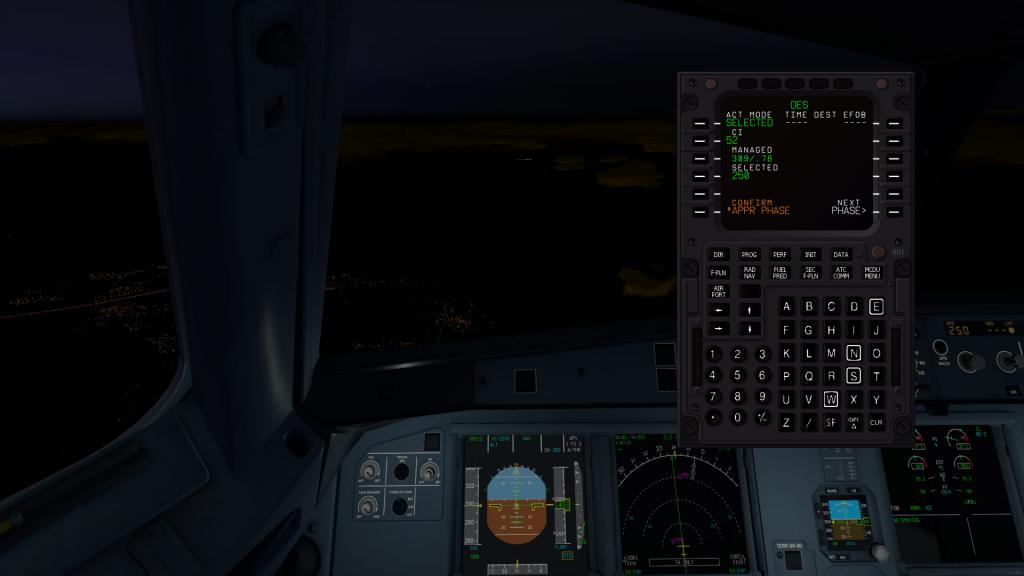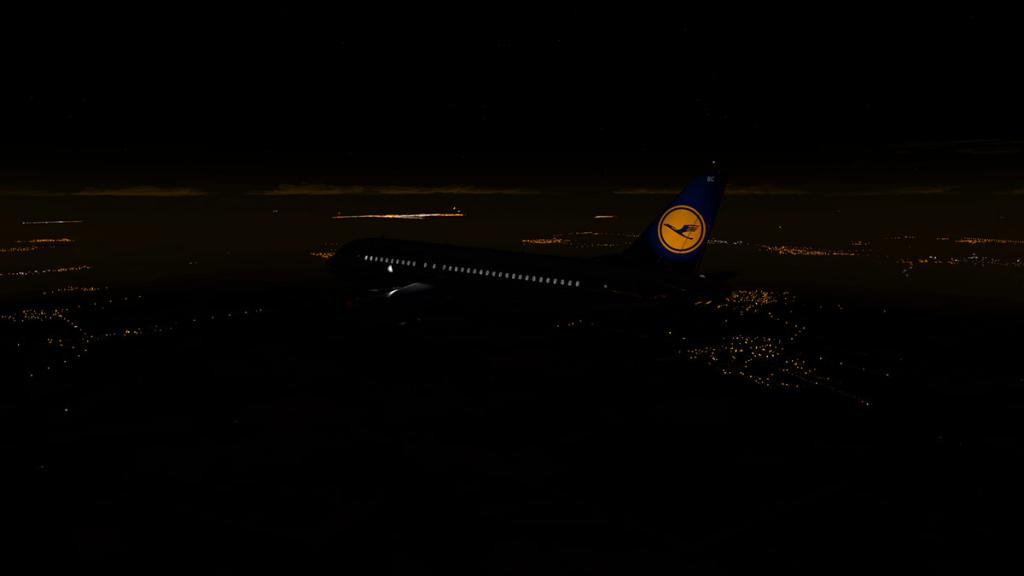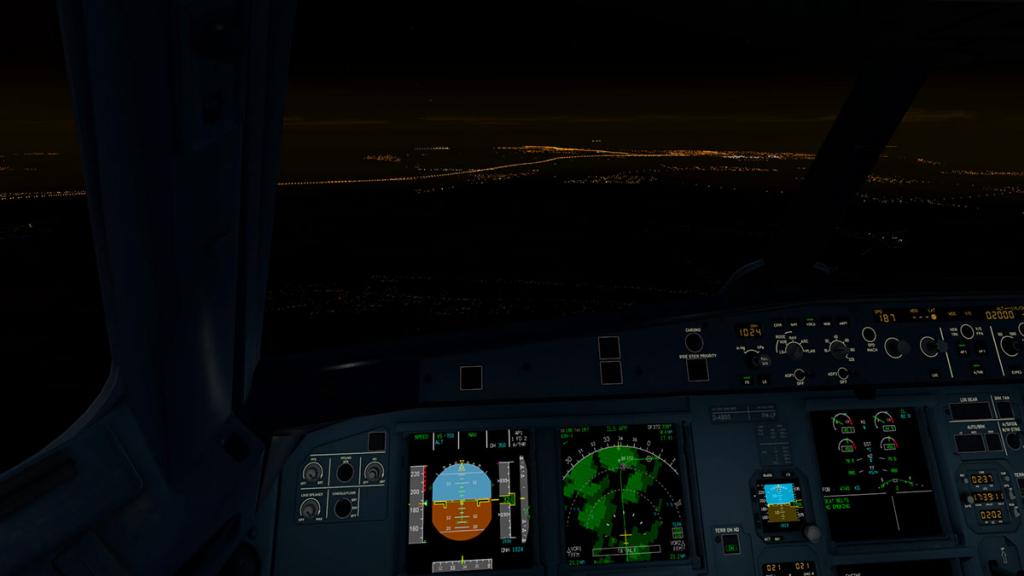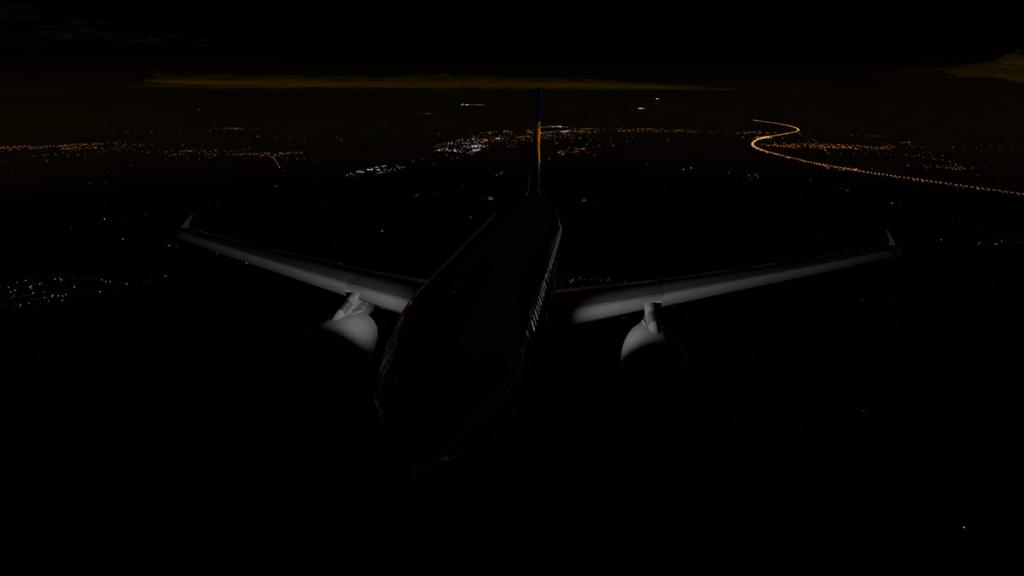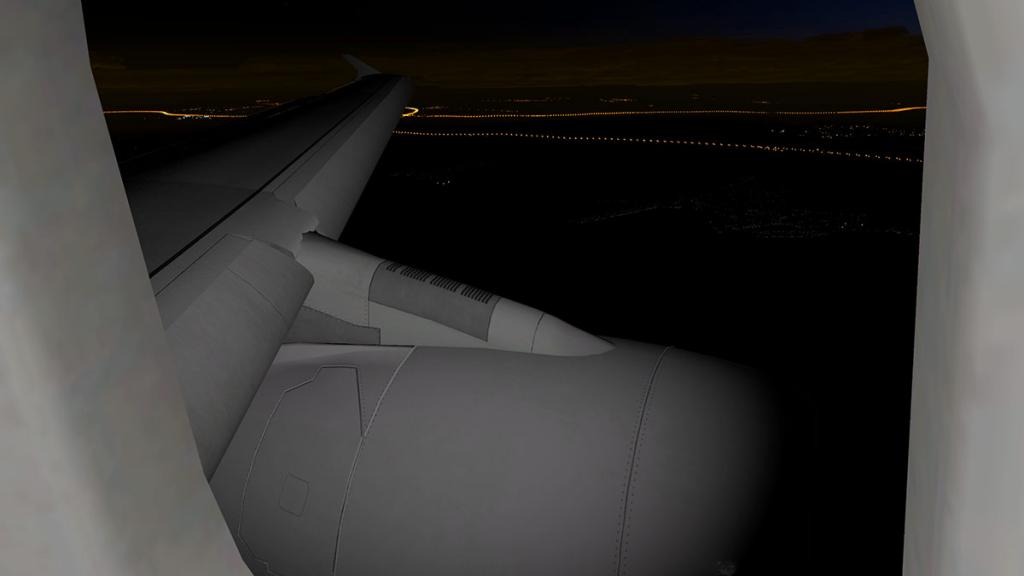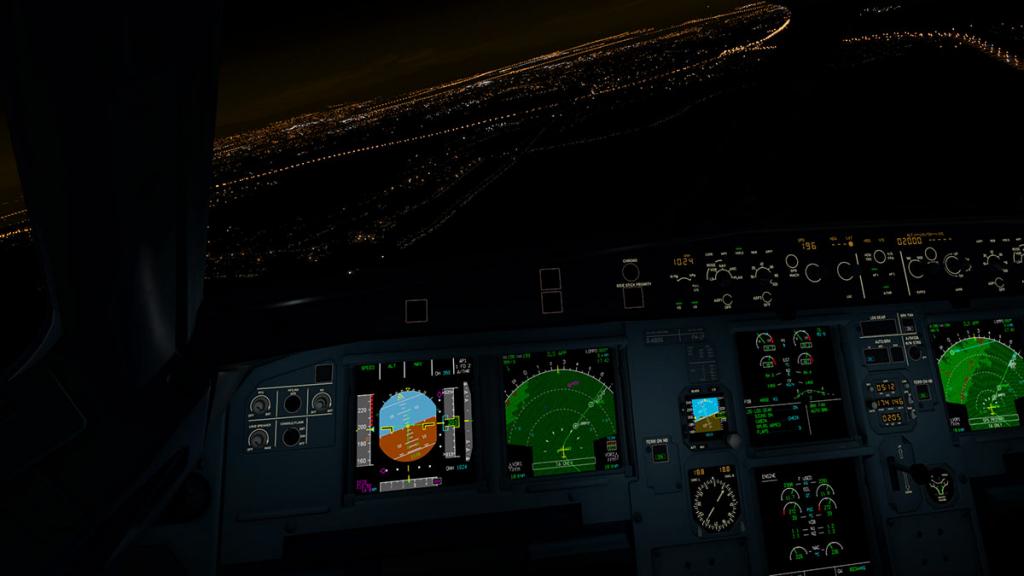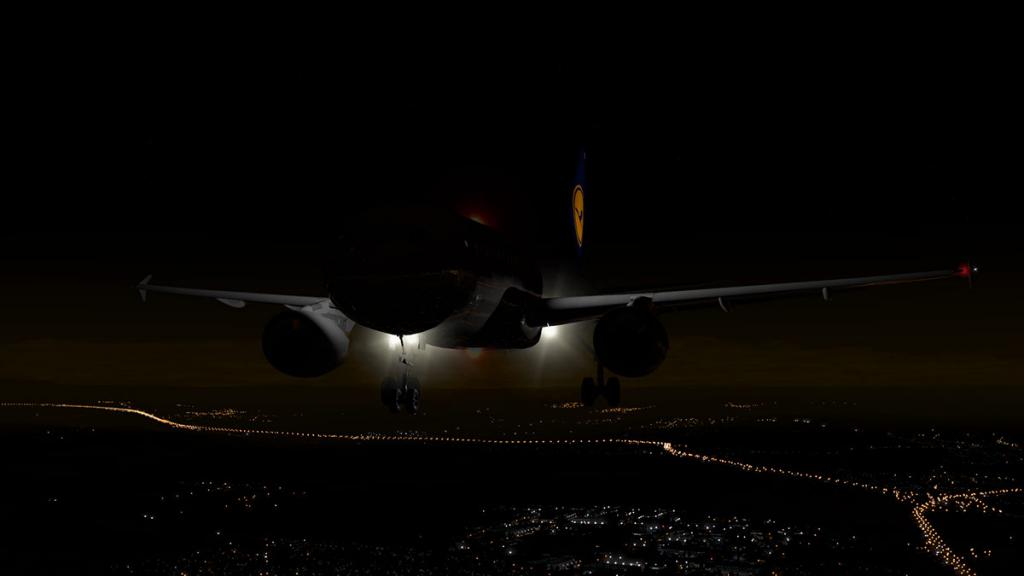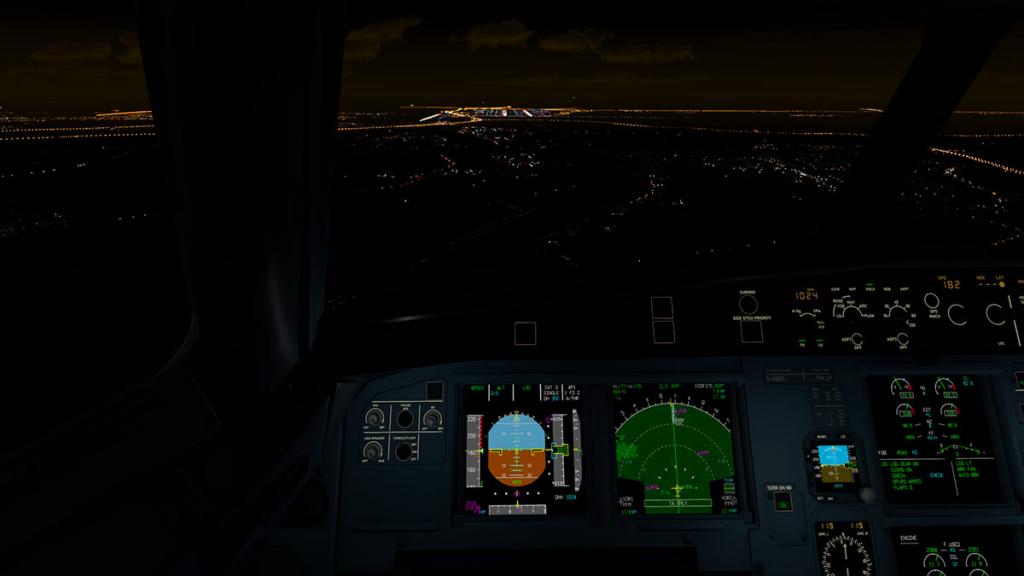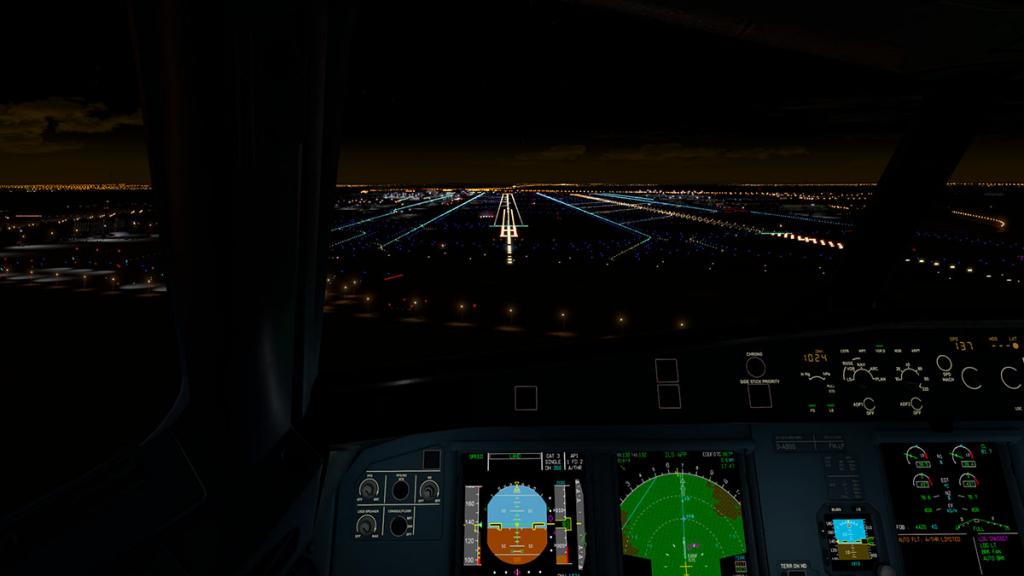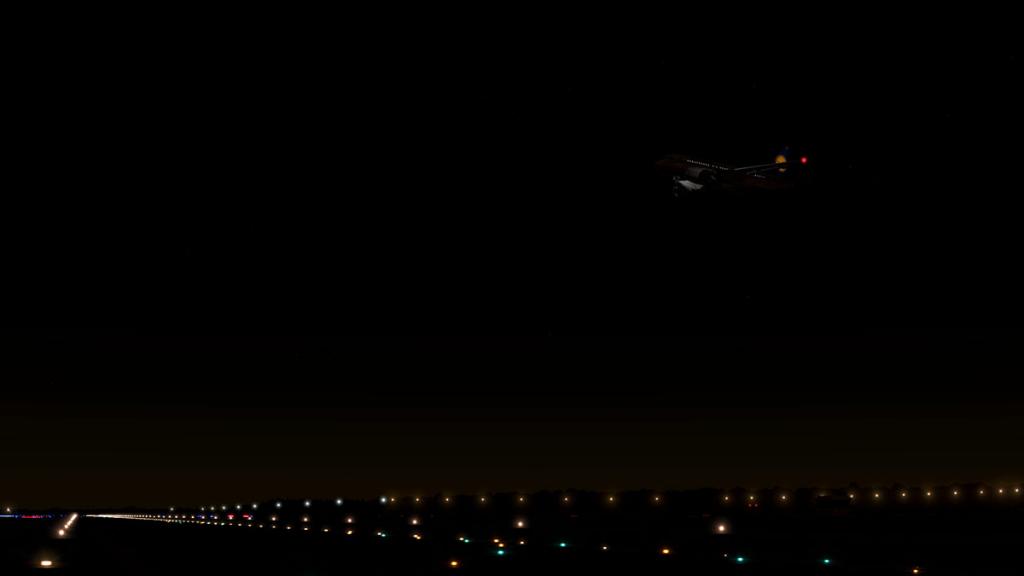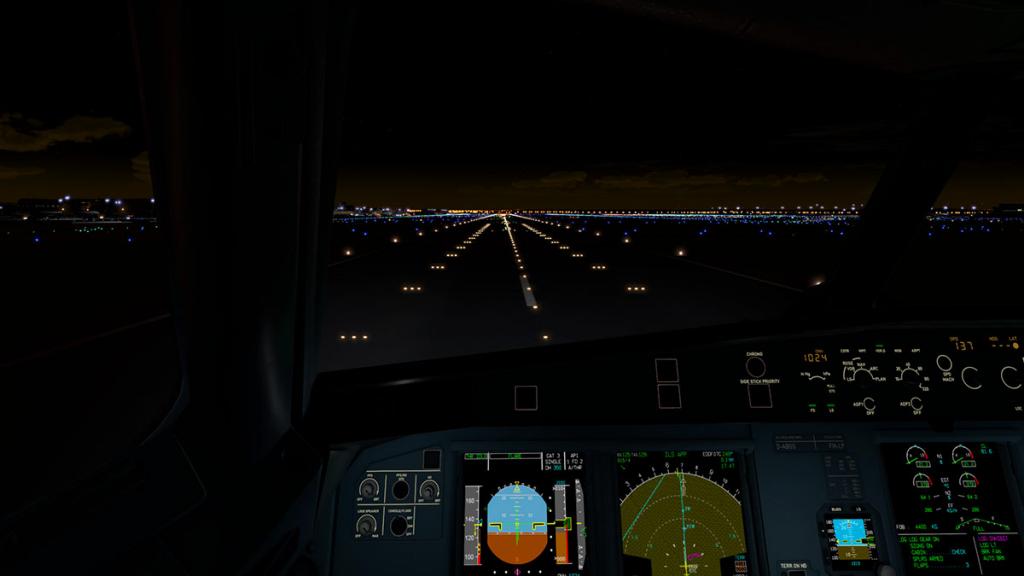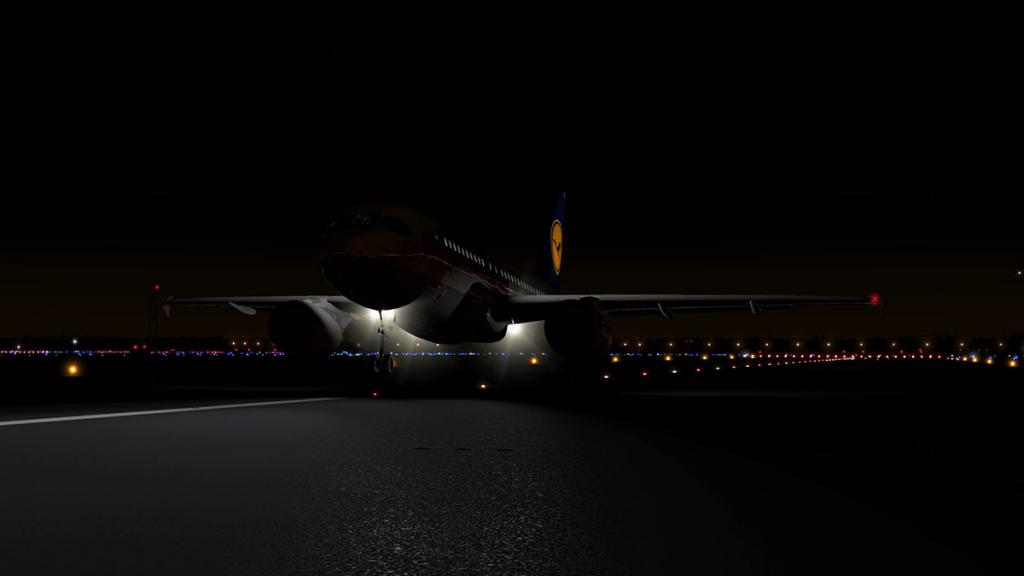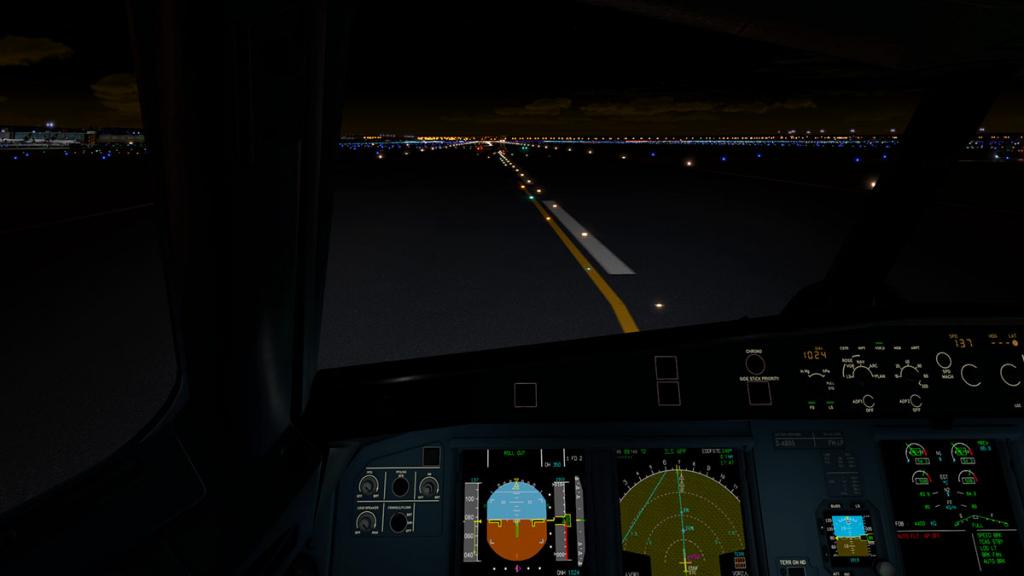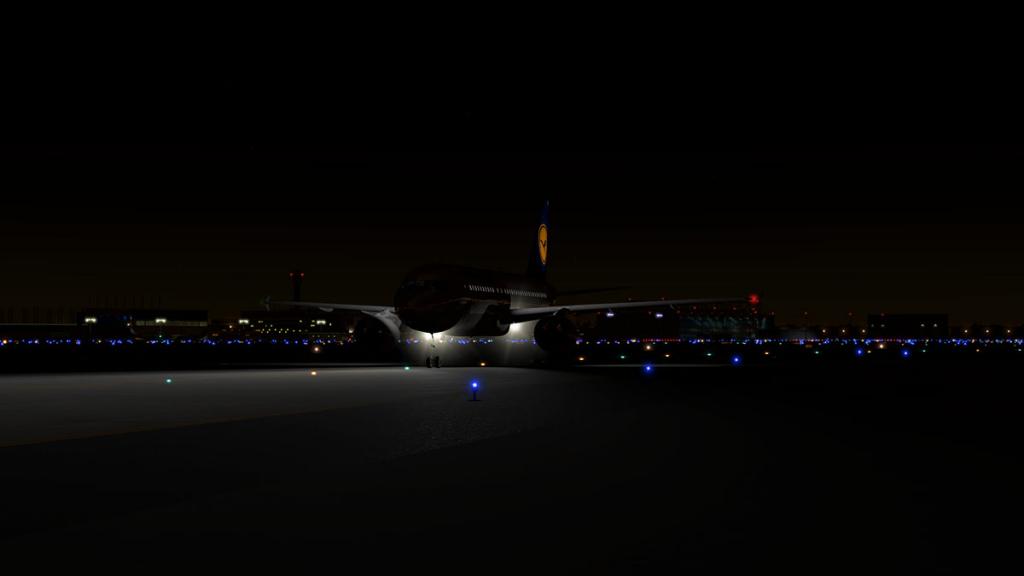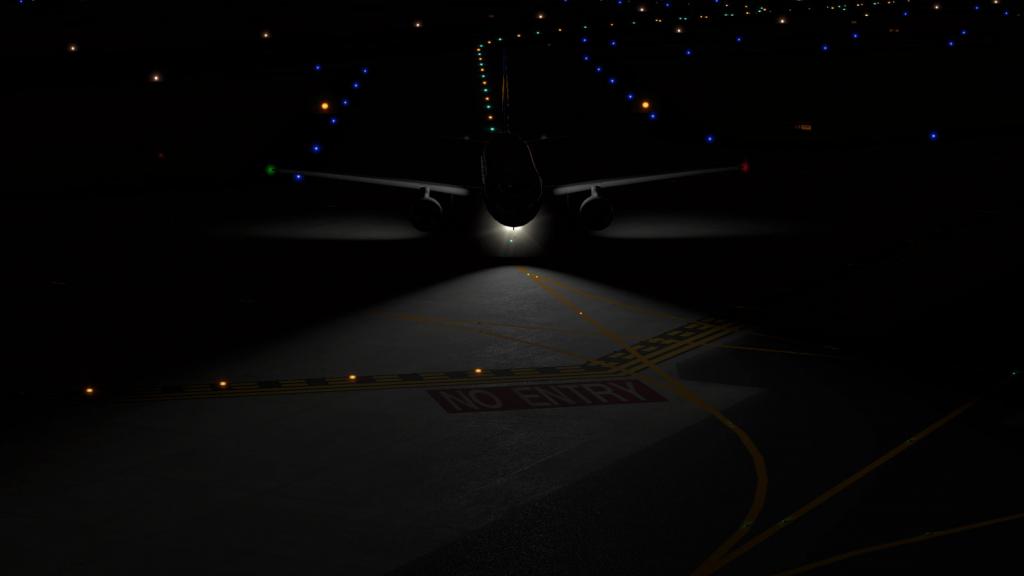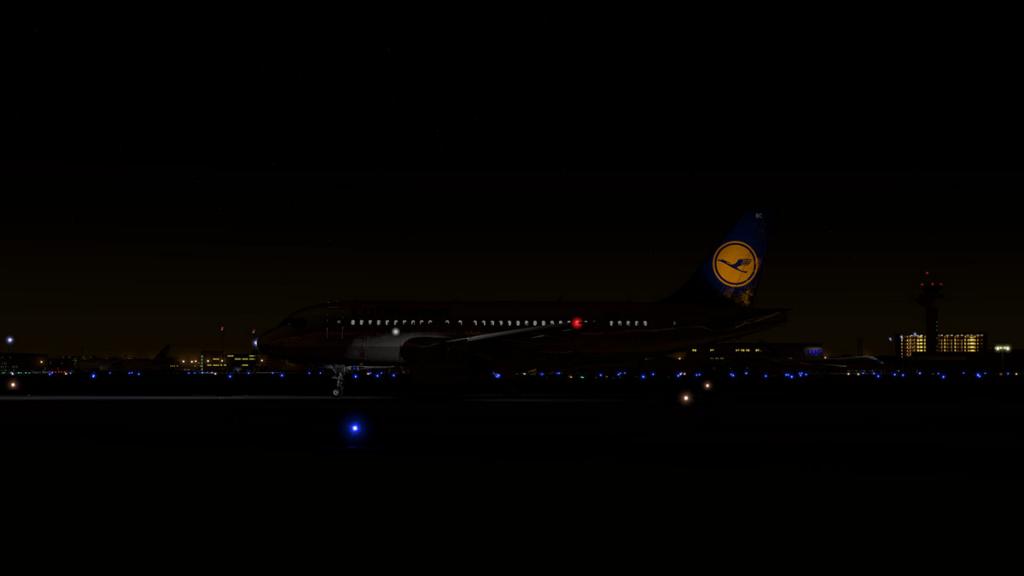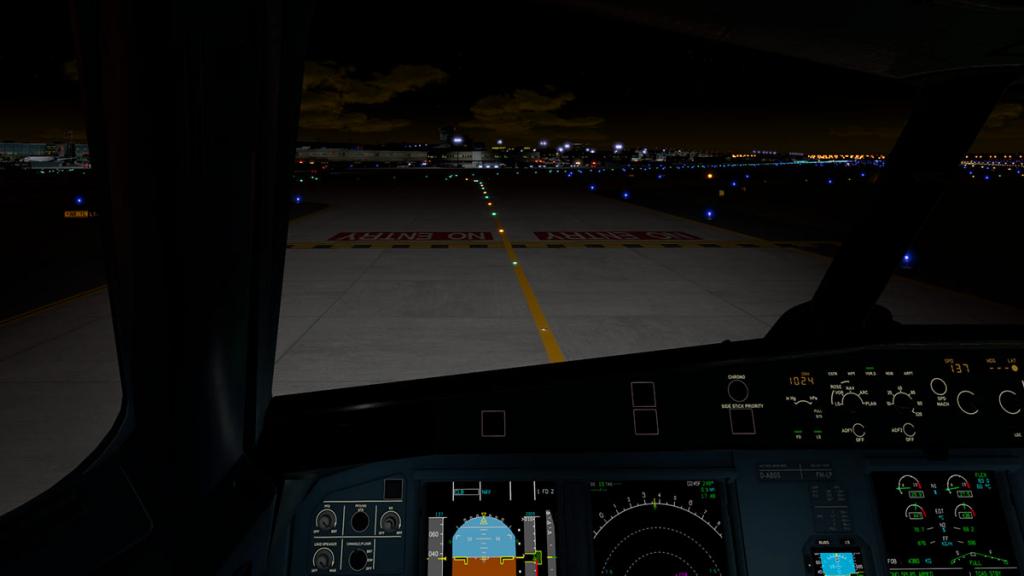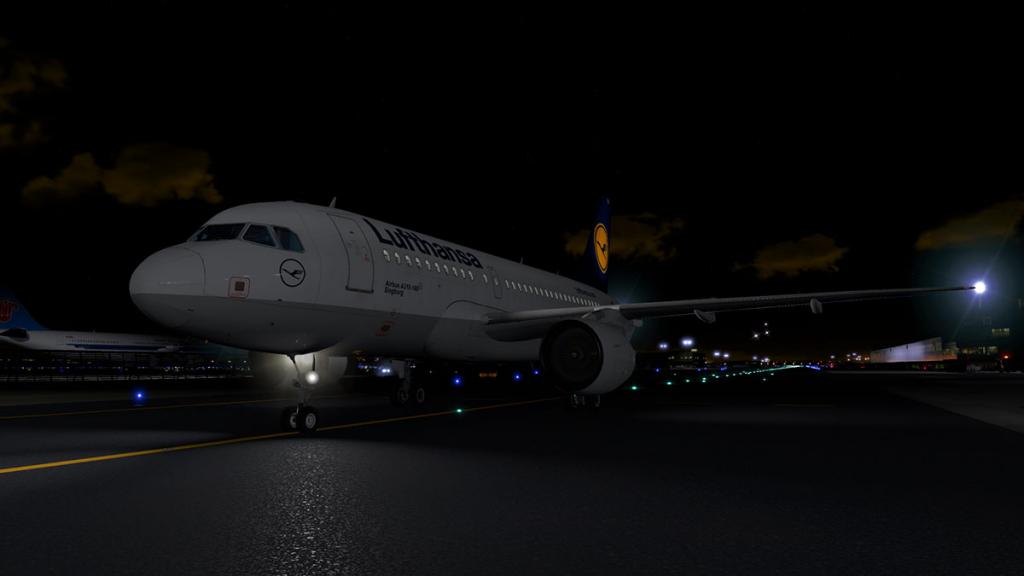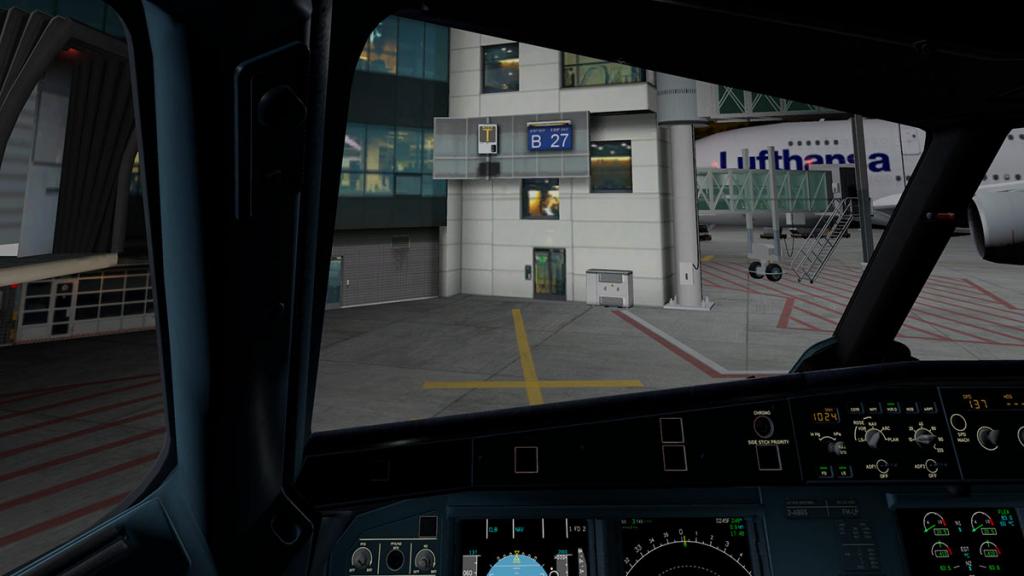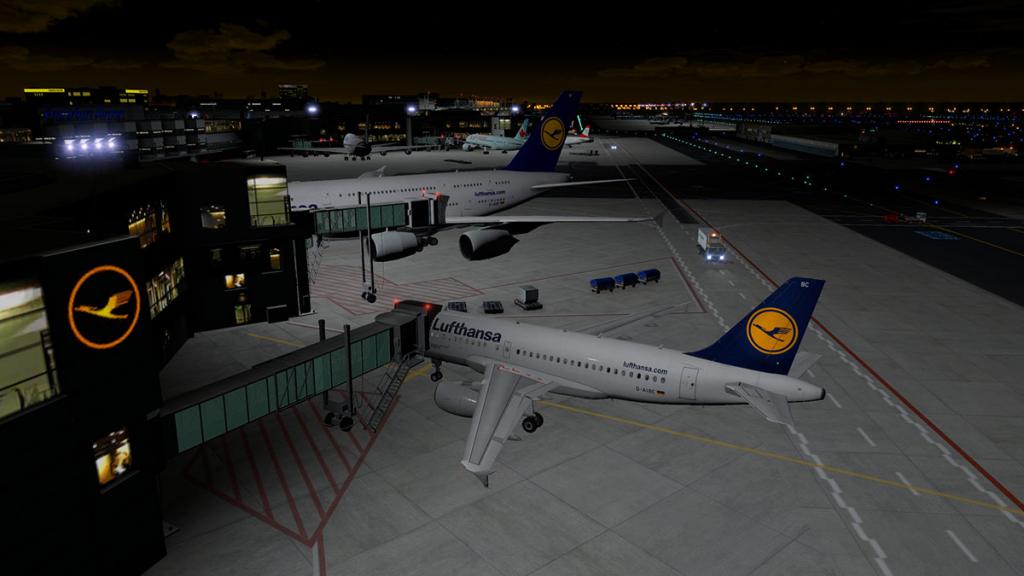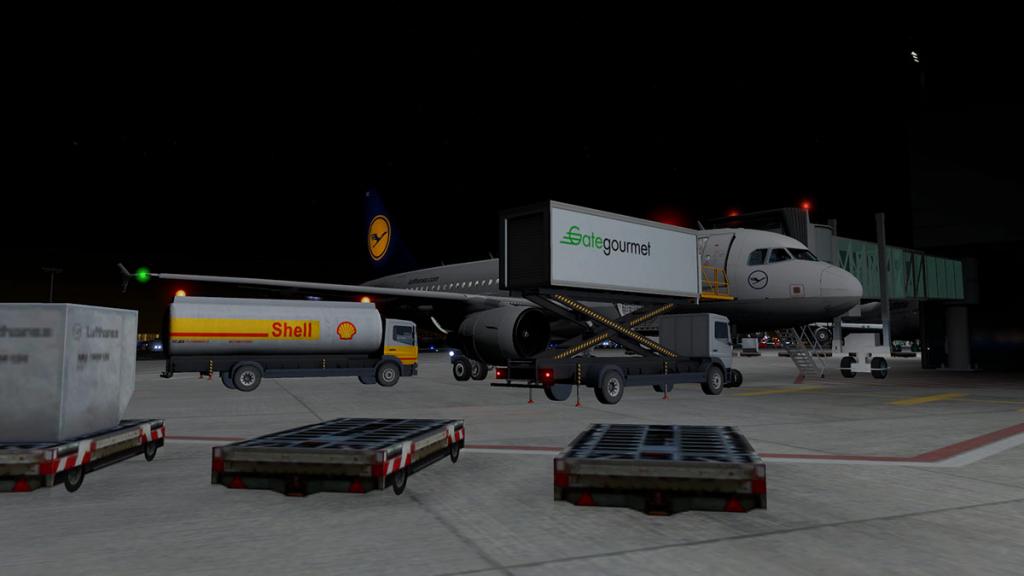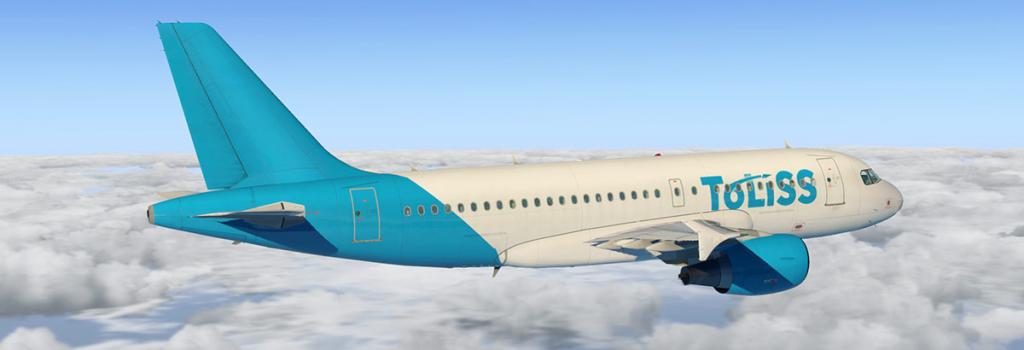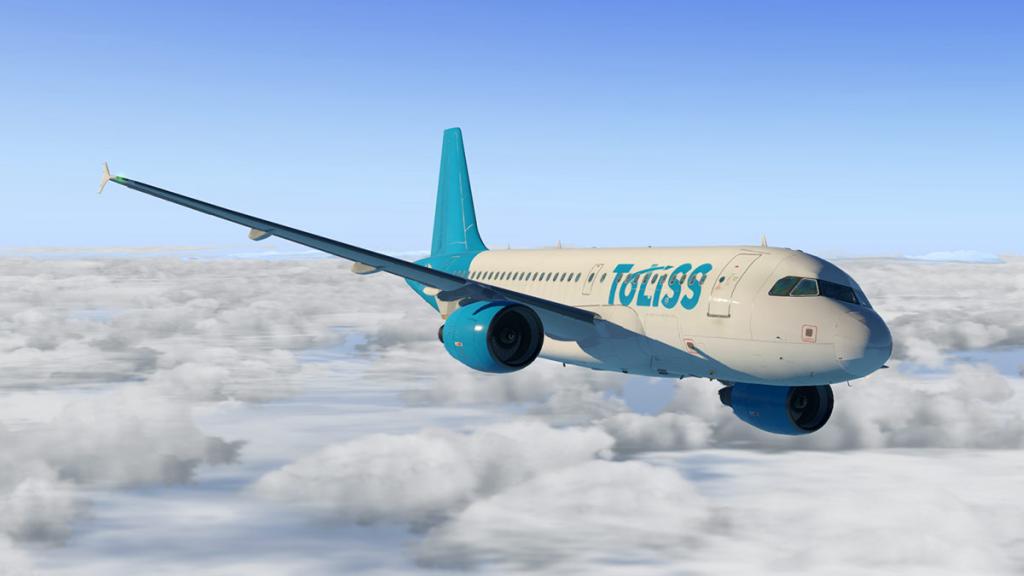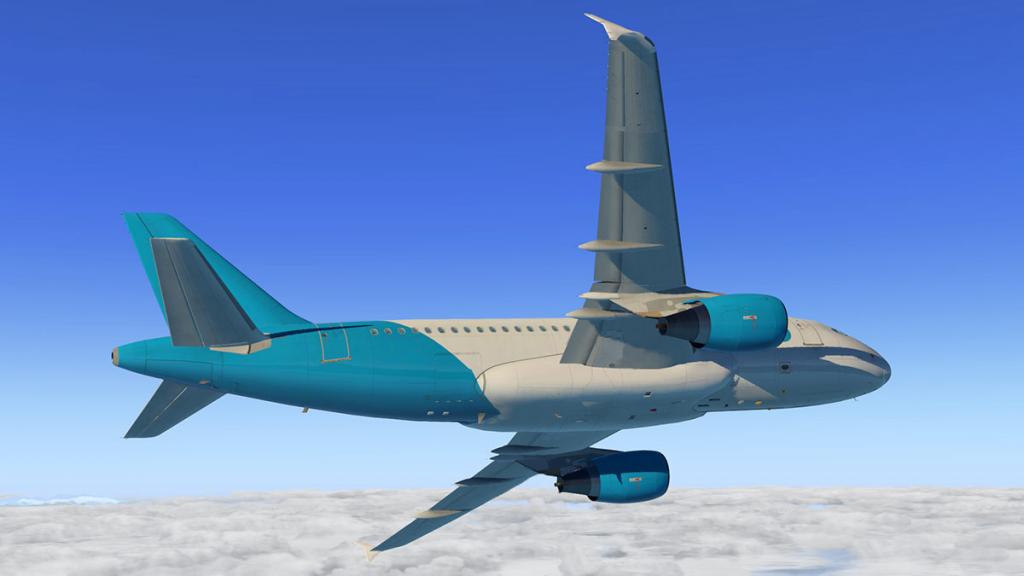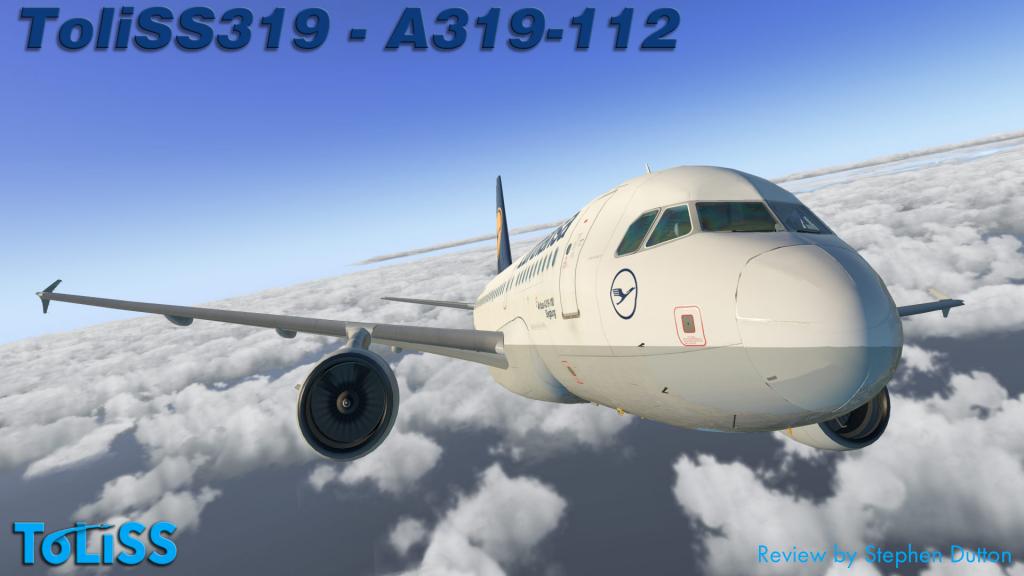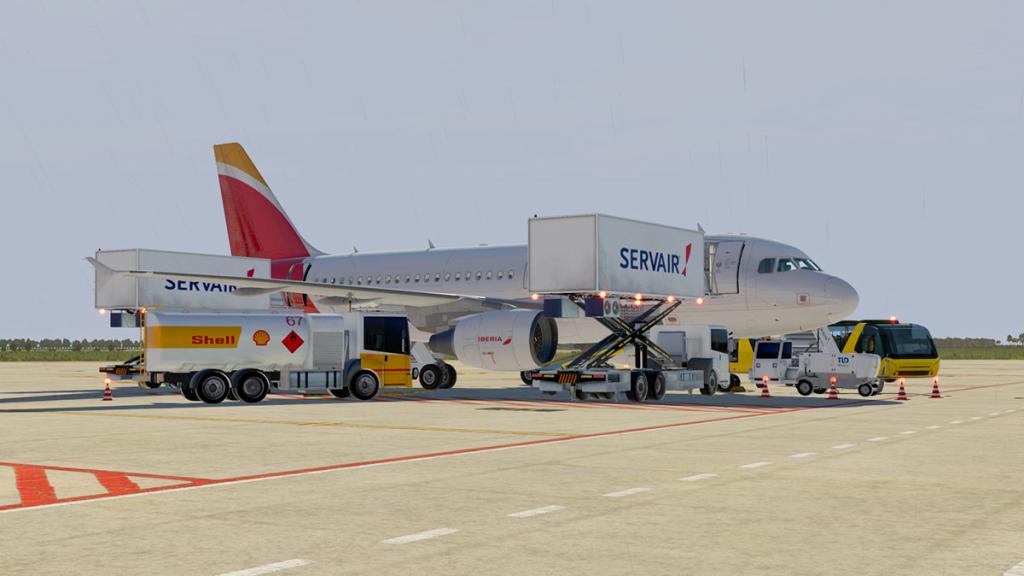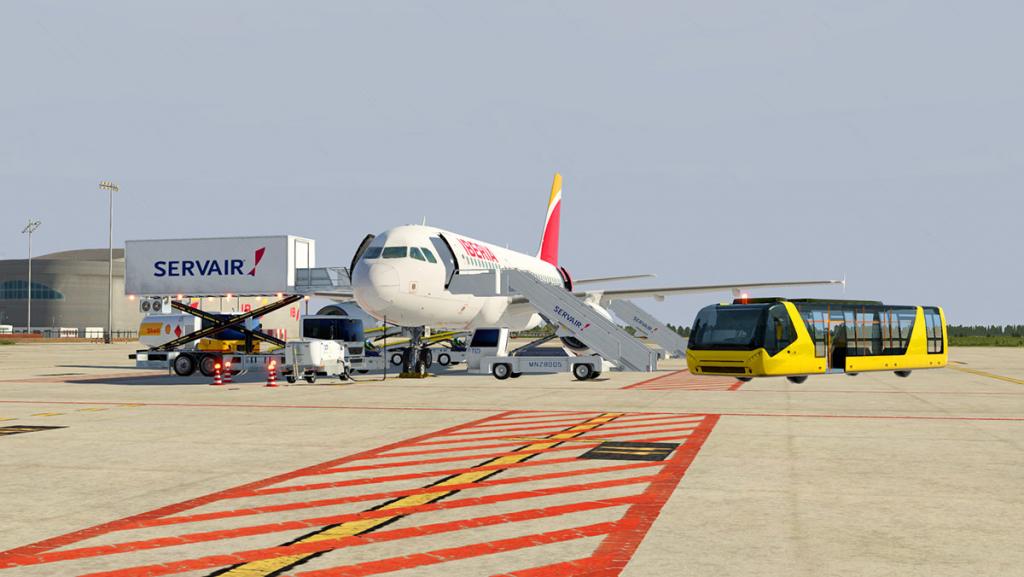Search the Community
Showing results for tags 'toliss'.
-
Aircraft Review : Airbus A321-231 by ToLiSS If you believe the demographics then the most largest percentage of online flying is in the so called two hour circle, that is a flight on average of two hours, the second demographic is the most flown aircraft online are the same as in the real world with single-aisle aircraft dominating the airways. So put the two demographics together and you will come up with the most attractive aircraft that you would want to fly online. In reality again like the real world it comes down to Boeing or Airbus, and then the Boeing 737 and the Airbus A320 Series. Flying the Boeing is really all about the golden age of airliner flying, the 737 harks back to the ice ages of aviation, but that is also why the aircraft is so popular. The French Airbus however is all about systems and electronics, it is noted as the "Electric Jet" and also the NintendoJet, ScareBus and Die-by-Wire. So if the aircraft is defined by it's systems then the choice is quite narrow, in reality there is only one "Study Grade" Airbus A320, and that is the FlightFactor version, and it is expensive, but also extremely good, an option is the Peters Aircraft Series, but it really only semi-grade. The only other system depth Airbus A320 was a collaboration between QPAC and Torsten Liesk that was really the first true A320 system aircraft and for the time in early X-Plane10 it was very good and introduced the X-Plane simulator to pure Airbus systems but more so in the area of Airbus dynamics or modes with the "Fly-By-Wire" and flight "laws". But when QPAC withdrew out of simulation, Torsten Liesk became ToLiSS, and oddly enough didn't release a A320, but the smaller Airbus A319-121 which is a popular but niche aircraft in A320 Series Family. ToLiSS's second release is again another arm of the A320 family, but this time over at the larger end of the series with the Airbus A321-200 The A321 is a stretch of the A320 concept. The A320 fuselage was lengthened by a 4.27 m (14 ft 0 in) with a plug ahead of the wing and a 2.67 m (8 ft 9 in) plug behind it, so that the A321 is 6.94 metres (22 ft 9 in) longer than the A320, the length increase required the overwing window exits of the A320 to be converted into door exits and they are repositioned in front of and behind the wings.To maintain performance, double-slotted flaps and minor trailing edge modifications were included, and the changes increased the wing area from 124 m2 (1,330 sq ft) to 128 m2 (1,380 sq ft). The centre fuselage and undercarriage are reinforced to accommodate the increase in maximum takeoff weight of 9,600 kg (21,200 lb), taking it to 83,000 kg (183,000 lb). 236 at 28 in (71 cm) pitch. Seating in one is 236 at 28 in (71 cm) pitch over the A320 one class seating of 195/190, the variant first flew 11th March 1993. Airbus A321-231 by ToLiSS Comparisons to the earlier A319 are bound to be at the forefront of looking at the A321, so let us very early on put that situation into the correct perspective. The New A321 is almost exactly the same in most ways as the A319, it is just longer and with the wing modifications. In fact almost everything here in the A321 is the same as the A319. That is in the modeling, quality, details, frills and pretty well everything else. There are nip's and tuck's, but the same updated touches here also will go to the A319 as well, so again they will both level up together in the long run. Modeling wise it isn't going to be the absolute best and detailed on the market, and in some areas that shows. But we don't buy these ToLiSS aircraft for those reasons anyway, overall though it is a very nice looking aircraft and actually looks really nice, however there is a basic if quality feel to the aircraft. Gear detail is however excellent and very Airbus distinctive. all the gear assembly and struts are here with the correct lighting and braking systems, the only thing you shouldn't do is look too close at the gear in the wing or wheel-bay attachment points, but otherwise it is impressive. You have a choice of two engine types like with the A319 on the A321. There is the... CFM56-5B3 - 33,000 lbf (150 kN) IAE V2533-A5 - 33,000 lbf (150 kN) Engine detail is good, but again not totally exceptional, the IAE is better in shape and with internal reverser detail, the CFM internally not so much. There is a huge gap on the tail attachment points, but otherwise the tail and rear is fine, just again don't go looking for any perfection and high detailing. Cabin Close your eyes and open them again, yes it is not the A319, but the A321.... the difference is in the massive length of the A321's cabin with no class separators... seats, even if are very nice are also from the A319. Cabin is actually very nice, but short on that absolute detail, ditto the galley's which are certainly well done, but many flat images abound.... .... only the required centre doors are new, and no they don't open. Forward galley is again very good, missing are the roof lighting effects to bring the galley to life, yes there is lighting, but it is automatically controlled. Cockpit The cockpit door does open to give you that usual "No you can't enter in here" view you get while boarding any Airbus. Welcome to all the shades of Airbus blue/grey. The textures are slightly a darker grey than in the A319 and not that more bluey gray. Cockpit feels more early 2000's than current... Like the A319 you will miss your toys, armrests are solid, the worktable is not animated, blinds don't work and the side windows don't open, but otherwise it is is all very nicely kitted out. Note the nicely done animated side-stick, it is set here at full pitch rearwards. There is a note that there are some new cockpit textures created by Tote de Mac that are now included on the A321 and later for the A319, the release of these far more higher (Hi-Def) Higher Definition textures are seen here on the release version of the aircraft... and they are also extremely good. The new textures are on the left above in the "Hi-Def" version, and while the "Std-Def" version still has the older textures (above right), and you can easily see the far more depth of the quality of the textures and shadow areas (arrowed) between the two versions. Closer inspection shows you the more beautifully textured panel with the Physically Based Rendering materials in giving you a more metal mottled look and the feel of the panel comes far more alive, the panel and surface reflections are far better as well... .... all the panels in Hi-Def are far more realistic and note the lovely and realism on the top of the glareshield. ToLiSS is known for his Airbus system's and to a point that is why you will purchase this aircraft or the A319. From power up you are now in "Study Grade" territory, but you will first have to wait 40 secs for the systems to sort themselves out, but very authentic it is. There is modeling of each ADIRU including alignment and the small pressure sensor differences between the units, even for the switching over of the sources for the PFDs (Primary Flight Displays). Note the working terrain radar on the NAV/MAP displays. These aircraft are complex, as you would expect them to be. But you do have several manuals and a tutorial and both are very comprehensive, but if you can download an official Airbus manual then I recommend that as well, and go through it while sitting in the cockpit, learn everything and above all practice. If you have used the ToLiSS A319 then obviously you will have a big time huge head start, but even the FlightFactor A320U is a good guide. Now one difference between the A319 and the A321 is that the Whiskey Compass is now animated and drops down into your view. A321 contact breaker layout is a cross-reference alphabet to numbers, A - HA is on the roof rear, and J - Z is on the rear right panel, sadly the breakers don't work. TISCS Menu The menu system or "ToLiSS Interactive Simulation Control System" is a bit long winded but it is shortened as TISCS but it is an important part of the system, so we need to go through the TISCS first. I do recommend in setting up a key input to bring it up, as you will access the TISCS a lot (I use "S" and the TISCS menu works for both the A319 and A321). When the A319 was released the TISCS was very incomplete, but it was filled out quite comprehensively and massively changed around over the next twelve months. The A321 TISCS is starting at the current A319 stage of TISCS development, so most of the areas are now covered, but there are still a couple of blank areas noted as "Reserved for Future Extension" There are seven TISCS tabs available covering: Situations A/C Config, Loading Perfo, Ground Services, Faults Scenerios, Addons, Sound/Actions, Joystick and General Settings Actions. The default is the "Ground Services" panel Situations A/C Config The Config page is used to set up the aircraft with two sections, "Load/Save Situations" and "Aircraft Configuration" The Load/Save Situations is an absolute gem of a tool, basically it is "Save" tool, but it saves EVERYTHING including the important FMS settings and your route, and better still gives you a backup "Auto-Saving" feature in case X-PLANE does a nasty CTD (Crash to Desktop) or a freeze on you, all the saves are held in the X-Plane Plugin's Folder and not in the A321 Aircraft folder... years better than any other save tool in X-Plane it is simply golden to set up or to have your aircraft ready at a certain state of "ready to Flight", if you just want to come back and just fly, then you can save the aircraft ready that way... just simply brilliant. The Auto-Saving function can be set at save intervals from 1min to 30min, but 5min is the best. The saved situations can be "Filtered" to find certain saved situations (image below right) The Aircraft Configuration section covers engine selection (Auto, IAE 2533 and CFM56), the Auto setting is used with the codes on the liveries (CFMS), (IAES) to automatically set the correct engine type to the livery. Other choices include having the older winglets or the newer up-swept Sharklets. SATCOM antenna, Number of ACTS (Additional Center Tanks) and basically creates a LR version), FPLN on Ground (Flightplan on Ground) and connection of the ailerons to the GND SPLR (Ground Spoiler). Note: all the set page settings have to be saved before use. Loading Perfo This tab covers the Aircraft Loading and CG-CW, we will come back to this important tab in detail later when set up the aircraft Ground Services This tab covers the external factors on the aircraft. Quick Services provides options for "Ground Power" and "High and Low pressure air" to start the engines and provide ventilation/air-conditioning while on the ground. There are no external physical units, But there is a built in Pushback feature... The pushback is quite basic in look and to use in auto or manual modes. However I always use the excellent BetterPushBack Truck as an alternative. The ToliSS A321 has been configured correctly for the BetterPushBack use, so it works extremely well here. Note in watching the pushback operation on the ECAM! Aircraft Doors have three selections with Auto (default) Close and Open. The auto will open the doors when the park brake is set and the engines are off. But they do have a tendency to be a bit uncontrollable in opening/closing at the wrong times or not opening when you need them to be open. So the manual "Close" is my preference to control them. There is no save selection either and so every time you open the aircraft you have to then (constantly and annoyingly) reset all the doors back to your preference state, as the default auto setting will always switch and have the front left and the two cargo doors open every time you load up the aircraft? Seven doors open on the A321 in the Front/Rear Left, Front/Rear Right and three Cargo (Forward, AFT and Bulk) and all cargo holds come with excellent internal hold detail. The centre pair doors don't open. The Animated Services panel is not operational at this time, so there are no chock's, flags or engine covers. Faults Scenerios The A321 has a great failure system, or fault Scenarios. These failures can be set up on the TISCS Panel. This feature is listed under the "Faults Scenerios" tab. You can have a total random setting that covers a wide range of 90 faults over twelve systems, or you can set your own failure with the options including: NOW, AT TIME(set time in Seconds from now), AT IAS (Speed), AT ALT (set altitude) or RANDOM, and you can set as many failures as you like. My selection here is ELEC (Electrical)/AC BUS ESS/AT ALTITUDE, and the fault worked as set. Addon The ADDON tab is currently blank, on the A318 you had the option to purchase an original soundpack created by Turbine Sound Studios (TSS) for the IAE engine version and that feature was added in here. ToLiSS notes that there will be no soundpack add on this time. BlueSkyStar (BSS) also released a soundpack for the ToLiSS Airbus A319, called "Baby Bus Symphony" for the CFM engine option, again there are currently no notes if the same (excellent) CFM soundpack would be available for the A321. Sound/Actions, Joystick The Sound Settings panel covers the aural areas of : Master Volume, Engine Volume, System Volume, Cockpit sounds, Environmental, Ground Contact, Aural Alerts and External Volume. Doppler sound effects and 3D Sound Fading which is an option to switch off the sounds from the PTU (Power Transfer Unit) and Flaps in the cockpit. Joystick Configuration selections options cover the "Primary Joystick", control of NWS (NoseWheel Steering) on/off, Enable Second Joystick (For custom setups like home built panels or training as it supports the use of two sidesticks (pilot and co-pilot side), A dual input and priority logic are also available as on the real aircraft), Tiller Assignment. (Rudder) Pedal Brakes Assignment with brake strength, Smart Park Brake, Allow Brake on One Pedal, keys F1/F2 Toggle reversers (I use joystick trigger!) and Tiller centre setting, Actions include "ADIRU Quick Alignment, and "Jump to next WPT (Waypoint)". Auto-Pause has four settings: OFF, ON WARNINGS, ON WARN + CAUT (Caution) and ON WARN/CAUT/TOD (Top of Descent). Auto-Pause will automatically pause the simulation, if, e.g. a master caution or master warning goes off. Again you have to save the Settings for them to be effective. General Settings The General Settings tab has five sections in: Product Info, Visual Settings, Startup Behaviour, User Interface and Miscellaneous. Product Info (Information) covers the current build number and version (very Airbus) Visual Settings include Display (Instrument) reflections, Window Reflections and Screen background Glow. Windshield (Librain) effects and Particle Effects. "Refresh PDF every X Cycles" This is an option for the weak graphic card users, in that instead of the heavy use every cycle to refresh the system displays, you can set the cycles to be redrawn either every 2nd or 4th cycle. Startup Behaviour sets the aircraft to a certain startup situation (known as Cold or Hot), options include: OVHD XP Start. Cold Start Type in COLD+DARK, EXT POWER (connected) and really all on with APU+ADIRU ON. Default Baro in either HPA or InHG (note you can also have the choice to SYNC or adjust manually the separate PFD Baros). Finally you can set your own default "Transition Altitude". User Interface is options on how you interact with the aircraft. Options include: Use Mouse wheel, Sync Baro Settings, Pop-out windows for Pop-ups and you can save your set Pop-Up configuration (Cockpit builders) on Quit. Miscellaneous ILS auto align is a feature that if the custom scenery that rotates the runway; for these cases the ILS and the runway are not aligned anymore. The ToLiSs A321 plugin thereby contains a feature that detects if there is such custom scenery installed and then realigns the ILS in the internal database with the new runway heading. XPDR Compatiblility Mode, is the use of different transponder modes. Enable AviTab Tablet, The AviTab tablet is installed on the lower left of the Pilot and usable if you have the AviTab plugin set in your plugin folder. For those that have an Navigraph account the use of Navigraph maps and tools are also available in the A321. Again remember you have to save the Settings and Default values for them to be effective and in some instances a restart is required to activate a setting. Manipulators The ToLiSS aircraft have their own system of manipulators, mostly to do two jobs in one... replicating the Airbus Push/Pull switchgear, and in two... for VR - Virtual Reality interaction. There are six types of manipulators, first Push/Pull. Two dots are pull and one dot is push, but they are close together and can you easily get them mixed up, especially if the aircraft is bouncing around... ... two vertical arrow heads are to scroll or to turn the knobs, arrowheads horizontal are to adjust rear knob selections. Spyglass is used to pop-out panels and for the FMS pop-outs, and in pop-out mode with a no dot manipulator will move the pop-out panel around the screen. _______________________________ Setting up the Airbus A321 To cover every detail and systems on the ToLiSS A321 is well beyond the scope of this review. This is a "Study" grade aircraft and follows the operations of a real Airbus manual. So to cover those aspects then you will need to download and study a full Flight Crew Operating Manual or FCOM, or Performance documentation and there is a lot of official documentation out there (SmartCockpit is a good place to start), plus ToLiSS provides three manuals in a Aircraft manual, Simulation manual and a Tutorial flight. This section of the review will cover a few set up tips and a general overview of the A321and mostly covering the Flight Management and Guidance System (FMGS) to set up a route from EGKK - Gatwick to LMML - Malta. Both the MCDUs (Multi-Function Control and Display Unit) are available and independent, both can also be used in pop-up mode, I usually use the WebFMC Pro for programming routes and an update for the A321 is now available. As the MCDU is study graded, then these units are very deep in detail and yes even complex. But ToLiss does provide a few helpers that fills out the most difficult or mathematical areas of filling out a flight plan. The Loading Perfo tab is your aircraft Weight&Balance manager (Aircraft Loading). Here you can set out the aircraft's passenger and cargo loads (weight) but note the passenger weight which also includes their baggage weight as well, the cargo weight is just for extra cargo. Critical for the Airbus A321 is the ZFW (Zero Fuel Weight) which is 73,800kgs but you don't want to go anywhere near that figure, so under 70,000kgs is the best option, so usually it is best to go light on any extra cargo... From SimBrief then my ZFW with a 183 one class passenger load/ 2,871kgs cargo load = ZFW 68,947kgs. Block Fuel is noted as 11,300kgs, you can do a quick Refuel or Defuel to the set required fuel load. The weights in CG limits (Centre of Gravity) and Load CG/ZFW limits are shown in a graph. The TISCS can't compute your settings until you have inserted the route and if the TO PERFORMANCE settings (below left) are blank... ... once your route and runway selection is complete then you can then set the S/F Config and Flightplan (Active or Secondary). This action will give you your V1, VR and V2 speeds, but more importantly is your CG/THS and FLEX TEMP On the "PERF" TAKE OFF page you can input the performance data... the Vspeeds, Flex Temperature and CG/THS (Centre (of) Gravity) / Trimmable Horizontal Stabilizer setting for the assigned and noted runway "EGKK26L". Now the important input is the CG/THS (arrowed below left), and if you get it wrong and the aircraft is simply unflyable as this sets the trim correctly at takeoff and if the runway is sloped you have to also adjust that slider from the airport charts manually. The CG position for takeoff is noted as 29.2/DN0.2 but how it is inputted in, is like this 1/DN0.2 or Flap position 1/DN as in UP or DN (Down) 0.2. Confusing, yes it can be and it always catches me out. FLEX TEMP is noted here as 44 and that is inputted in the "FLEX to TEMP" RK/4 One of the most important calculations is hidden on the INIT page B (Scroll right on the INIT page). This is the fuel prediction page and you are required to fill in the ZFWCG (Zero Fuel Weight Centre of Gravity) / ZFW. This number is found lower left, and is inputted as 28.1/68.9 (68,900kgs) RK1 Another input on INIT page B is the Block fuel load, again 11,300kgs is inputted as 11.3 RK2 (note sometimes the fuel prediction won't compute unless you have entered in your ALTN/CO or Alternate diversion Airport, mine is LICB - Comiso on INIT page A)... ... if your inputs are correct then the MCDU F-PLN (Flightplan) will show not only your route, but all the fuel calculations as well. (Note the INIT page B will disappear once you have left the runway, so once in the air you can't change the calculations). All profile phases are covered with: TAKE OFF, CLB, CRZ, DES and APPR The FMGS depth here is very deep, so to get the A321 to perform correctly at every phase of the flight you have to make sure every detail is covered, that is dot every i and cross every T. One thing though is very apparent when you compare the release versions of both the A319 TISCS menu with the current new A321 TISCS is the sheer amount of changes and new features that have been added, and a few that have been taken away. But make no doubt though, both TISCS A319 & A321 menus will soon match up the same, so using one will easily be transferable to the other. ACTS (Additional Center Tanks) A feature on the ToLiSS A321 is the ACT, or Additional Center Tanks. This option effectively creates a Semi LR (Long Range) version of the A321LR. Selection is on the "Situations A/C Config" TISCS page under "Number of ACTS", selections include: None, 1 and 2 extra tanks. These extra tanks are fitted in the aft cargo hold, so the cargo volume is of course reduced if you have the tanks installed. Each tank adds in an extra 2359kgs of fuel with a total of 30,030 L (7,930 US gal). These modifications also increases the maximum takeoff weight of the A321-200 to 93,000 kg (205,000 lb). Notes don't confuse the A321-200 with ACT with the later full LR version as that aircraft had three extra tanks, or the even newer XLR. _____________________________ Flying the ToLiSS A321 Clearance and you are ready for pushback. I love the intergated BetterPushBack details on the Electronic Centralised Aircraft Monitoring (ECAM) system, it is displayed in the lower screen, but also noted later in the upper ECAM, engine startup procedures are excellent, great detail and system depth, you see and feel small actions like power generation switching and air-conditioning transfers. Sounds are excellent, in the A321 both of the higher extensive Turbine Sound Studios (TSS) IAE and CFM sound packs are now included in the package, so there is no extra cost now for the more extensive sounds... ... and yes they are excellent, I would not say a BlueSkyStar (BSS) package would be better, because you can't compete with those more highly detailed sound packs, but for any one on this level and at this cost factor then the TSS version is still very good, and BSS have announced an updated package for both the IAE and now a new sound pack for the CFM for the A319. Forward edge slats and flaps are well done, look and feel (movement sounds are great) correct... I don't have a tiller tool, but there still that usual QPAC A320 slight delay on turning the nosewheel, you get used to it... in time. One note though is that the nosewheel tends to turn even more of a radius than the earlier A319, this is a great help with the extra length of fuselage behind you and on turning into tight parking bays. You did set the TO CONFG right!.... of course you did, you are a pro after all. The small details are all in here and are very Airbus focused. Holding at EGKK's RWY 26L, Taxiway B... Power set to takeoff position and I get a warning, Yes I am holding the aircraft on the brakes to build up a little thrust, but the system is telling me that is a no, no. Rotate (Vr) is 160 kts+10, and v2 162kts and we are in a "Positive Climb". From the moment I first flew the ToLiSS A319 it set a new benchmark in flying heavy jets (If you could call the A319 heavy or even big) but manually it gave you an Airbus aircraft feel and feedback like no other. Yes you are flying FBW (Fly-By-Wire) and yes you are now flying under the three primary flight control laws of Normal Law, Alternate Law and Direct Law and there is a further subdivision into Alternate Law 1 (ATL1) and Alternate Law 2 (ATL2), but the transition of flying these ToLiSS aircraft (certainly in manual or Direct Law) with no protections is perfect. Climbing out of Gatwick (under Normal Law) I had the hairs on my neck rise on the perfection of it all, the A321 is a sublime experience to fly with the right tools (Joystick, rudder pedals and throttle). Everything works in perfect harmony, the systems, the controls and all the extensive data at your disposal. You seek perfection in flying heavy aircraft, the A321 is one of the best at giving you the full airbus experience, yes I love it, this is a great machine to be in control of. It also reflects back to the A319 in that it was certainly good for it's release period, but how far we have now come even since then, refinement in simulation is an ongoing process and one with no end, but now the level is getting high, very high with aircraft like this. Over the last few years I have become a little obsessive, Not just to perfect my flying, but to get as close to a perfect flight as I can do. But to really achieve that aspect the aircraft that you are flying has to perform as well as you do, when both worlds merge it is great experience. My obsession is with SimBrief and it's numbers, or to "Fly the Numbers" as perfectly as possible, if this again combines then it shows the aircraft is correct (or if the developer has got it wrong) and that you can achieve the flightplan SimBrief has provided for you. Several areas are important, your climb to the designated altitude, but more importantly is Fuel Flow or useage, "Hitting those Numbers" is telling you it is a perfect simulation (Although I do tend to climb slower and with less speed, but usually catch up later). Yes there are weather patterns (winds) to consider, but if the numbers in the aircraft coincide with the numbers of the SimBrief printouts, then one you are doing everything right, but also so is the aircraft. I am seriously impressed by everything. Climb performance, Cruise (CRZ) performance and the general feeling in flying the aircraft. You can follow and tick off the numbers enroute almost to automation, they are that good. My fuel burn is slightly behind but that because of a 15knt headwind, and overall the A321 is seriously impressive. I had an odd waypoint in my flightplan that could of caused a bit backtracking chaos, but a DIR (Direct) change to the correct (next) waypoint fixed the issue instantly... and that is a heavy point to make here, the tool is in there and it works as it should, and it made the flying seemless... impressed, absolutely. Enroute data is very good from Fuel Predictions to Climb performance. ECAM detail is just as good. Pressing the ALL will switch you from one selection of: ENG (Engine), BLEED, PRESS, ELEC, HYD (Hydraulics), FUEL, APU, COND, DOOR, WHEEL, F/CTL... to the other each time you press the button. SYS shows you the full "Status" of the aircraft, which is thankfully clear of any faults here. Hiding behind those buttons are the full system depth in Environmental, Electrical (all Busses), Hydraulics, Fuel Systems and pumping and all system on a A321 aircraft... again go though the manual and learn the systems and they will be noticeable and replicated here. Flightime to Malta is 3H 10MIN over a distance of 1224 nm, at m.78 and Altitude 35,000ft (FL350)... and yes at the point of descent I was still almost still perfect to the SimBrief numbers. At TOD 122nm out from LMML - Malta I descended at 1800fpm, Notice the flashing "IDLE" on the upper ECAM, this comes on when the A/THR reduces the thrust to zero, a small detail but a noticeable one. At VOR GZO (115.70GZO) it is the entrance to Malta approach, there are no actual STAR's here, but there is a (Navigraph) RNP RWY31 chart that lists an approach via TIVOR, SUDOX and SUKAL waypoints, all which I inputted easily into the MDCU to create my own STAR approach. Approach speed references are available under the PERF APPR Phase... ... a hard bank at TIVOR, is going into the circuit to land at LMML RWY 31. In the full landing phase the instrumentation you have available is impressive, a manual or auto approach are both available. But after a landing now the A321 a few times, I found the aircraft a tricky bird to get right in the speed and flap positions, if you are rough with the aircraft and don't work out the precise speed numbers you will get aggressive nose pitches of stall (nose high) and excessive speed (nose low), the first flap setting of 1+F is okay, but the 2 position is very sensitive and you can't find that sweet spot that keeps the nose level and stop an aggressive pitch nose high? If you can avoid Flap 2 setting in level flight then it will give a you a more liner flow (Flap 2 speed can however be used if you are descending at a high rate, say over 1,000fpm, but you have move away from F2 if you are leveling off) Flap positions 3 and FULL are fine, but again the speeds have to be perfect. But annoyingly the F2 position is the one you really use most of the time in the circuit landing phase. Make constant notes of the best speed positions will give you a more comfortable approach phase to follow. With the gear down, the A321 looks the real deal, the longer fuselage creates a different feel from the A320, and certainly from the short A319, so you have to adapt and watch that longer tail. FULL flap setting detail is also well done (as noted the change in flap position sounds are also good, even better from the cabin). For some reason the LMML RWY 31 ILS beam is set off to the right, always has been, I'm just used to it now. Over the threshold, and the speed looks slightly too fast at 150kts, will try that slightly slower next time. I don't use the AUTO/BRK as in most cases it slows you down with a shove, I prefer to run off the speed and brake manually to hold the centreline tighter. Like with the speed adjustments, the "Flare" stage is another one to practise to get really right, get it wrong and you will easily bury the nosegear into the runway, it took me a few landings to perfect, but a slight nose high pitch and the correct low landing speed will help you in the flare phase, there is no give here, you have to "be precise to get it right", the rushing reverse thrust sounds are great. Remember I said the tiller has a better turn angle, well sometimes you just need it with the tight turn off RWY 31 on to Taxiway F. Welcome to Ajruport Internazzjonali ta' Malta A321 style. This is the loooong version of the A320 Series aircraft, so you do have to be aware of which stands you can use, the choice is actually quite small at Luqa with just the centre parking stands that are are big enough to cater for the longer fuselage length. I was very impressed with the numbers in relation to the SimBrief printout, I use a little more fuel testing out the steep climb to altitude (FL350), but in the return leg LMML - EGKK and following the Simbrief profile to the number, I found I was within 1kg of the printout in fuel use (heavier head-on winds) was very impressive... so performance is spot on. Testing out the longer ACT range is also going to be interesting and simulations I am looking forward to. ________________________ A321 Lighting If you have the FlightFactor A320 Ultimate you are going to find the ToLiSS A321 cockpit a little lacking in areas, overall it is very good, but the extensive lighting details you have in the A320U are not available in here. First off is the display screen "Glow" can make the panel displays brighter in the dark, you can adjust this in the TISCS visual settings, but it does look great and even the A320U doesn't have that feature... all display screens can be adjusted individually for brightness, including the MCDU screens. Three way DOME position switch, gives you OFF, DIM and BRT (Bright) and it is very good There is a single pedestal light, adjustable from the First Officers side (arrowed)... .... OHP - Overhead Panel is very nice and adjustable, but the two adjustment knobs under the glareshield are not working? The right one adjusts the brightness of the FCU - Flight Control Unit and the left one adjusts the instrument panel downlights, which are on but are fixed illumination. The overhead map lights don't work and neither does the left and right window frame downlights? Cabin lighting is BRIGHT and not adjustable, It is supposed to go dimmer on landing, but I never saw that happen. Wing lights are very effective and reflect nicely off the wings and inner engine cowlings, Navigation, Strobe are very good as well... lighting includes two pop-down inner-wing landing lights and forward strut taxiway light in two modes in TO and TAXI, the TO setting can use for an extra forward light on landing, Twin RWY - Runway Turnoff lights are also available on the front strut. ... LOGO light turns on or off automatically when the slats and flaps are extended or if there is weight pressure on the landing gear. Liveries There are only two official liveries, a ToLiSS livery and a blank aircraft are provided with the ToLiSS A321. The official Airbus house liveries are the prototype registration F-WWIA aircraft and the later EADS house livery. The ToLiSS livery has the latest Airbus cockpit window detail which looks excellent. Like the ToLiSS A319 there will be a dedicated A321 download section on the X-Plane.Org. Christoph_T and Matt Hayward are the main official contributors (Thanks to Matt for these ANA and British Airways Liveries), but the factory is already going at a full production line, so in time most liveries will be available. There is a link here: Aircraft Skins - Liveries. _______________________________ Summary It is only two years ago that ToLiSS released there first aircraft for X-Plane in the Airbus A319-112. An extension but also a total redevelopment of the earlier QPAC A320, the A319 aircraft was a deep study grade systems machine that brought a completely new dimension to heavy aircraft automated and manual flying to the X-Plane Simulator. Although the core aircraft of the ToLiSS A319 was finished on release, a lot of extra features and updates over the next twelve months brought the aircraft up to its current high standard and went on to be an official Airbus product last year. This Airbus A321-231 is the second release from ToLiSS, in many ways as it is very similar in design and features as the ToLiSS A319, but it is the longer fuselage version of the Airbus A320 family. The A321 is released at the same level and standard as the current A319 and it is also an official Airbus product. The A321 competes with FlightFactor's A320 Ultimate, externally and in out right features the A321 is set below the FF320U, but not in the systems and avionics were as both aircraft in depth are almost equal, the FF A320U is also a grade above in price than the ToLiSS A321 so you are in a way get far better value for the A321 in the serious areas that really count, that is the sheer system depth and importantly in the feel and flying of the aircraft, which is also slightly superior to the FlighFactor aircraft. Modeling and design is very good, but not in the extensive extreme quality you can now expect in this category, but in every other area and certainly in the high quality systems and for flying feedback the aircraft is the best of it's category and class. Yes I miss the toys not in the A321, in the moving seat-rests, animated worktables, opening windows, blinds, missing static elements and the lighting in detail is good, but again it comes with no extensive functional detail. Cabin is just a longer version from the A319, again really good, but not in that current extreme detailing. ToLiSS Interactive Simulation Control System (menu) is also very good, it comes with lots of features including the best aircraft save system in X-Plane, aircraft setup tools are also excellent as are the sounds, the auto door system however still drives me totally batshit with a no save option. The two hour circle of the largest percentage of online flying is right in the core sights of this one of the best single-aisle aircraft in the world, it delivers and you get all the extensive deep study grade systems at a lower cost and below the FlightFactor Ultimate version. The more you fly the ToLiSS Airbus A321 then the more ingrained this aircraft becomes inside your soul, it is tricky at points in it's flight profile, but that is the attraction of the aircraft as well and to fly it competently with skill can give you real personal satisfaction return, on this level then it really delivers in a pure simulation experience. The smaller A319 was great within a network, but the A321 allows you to expand outside those networks with a far longer range at your disposal.... some aircraft releases within a year are an event, this ToLiSS Airbus A321 is such an event because it comes to the very core of our simulation needs, you even want to fly over that two boundary and if any aircraft is worth doing that in, then it is certainly the ToLiSS A321... totally absolutely recommended. ______________________________________________________________________ Yes! the Airbus A321-123 by ToLiSS is NOW available from the X-Plane.Org Store here : Airbus A321 by ToLiSS Price is US$79.00 Features Include: Highlights Detailed FMGS with SIDs/STARs/Airways, performance prediction, temporary, alternate and secondary flight plans, fix info, etc. Choice of CFM or IAE engine, affecting aircraft performance and fuel burn Choice of sharklets or classic wing tip fences. (Affects aircraft drag.) Very accurate FBW implementation, including reversion to alternate and direct law Detailed systems including fault injection for currently about 90 failures. (Electric, hydraulic, flight controls, engine, etc.) Officially licensed by Airbus Commercial “Turbine Sound Studios” sounds for CFM and IAE engines included. Detailled FMGS: Support of SID/STAR, including all leg types (Arc, course or heading to intercept, Radius to Fix, Holdings, etc.) Temporary and alternate flight plans Secondary flight plan Full VNAV guidance with TOC, TOD, Deceleration point, speed limits, fuel prediction, etc. Altitude and speed constraints as the real aircraft deals with them Ability to change the selected STAR while already in the STAR Support for go-arounds and diversions Step altitudes Airway support Fix Info page Latitude/Longitude crossings 2 independent MCDUs and autopilots Drag, thrust and fuel consumption models adapt to selected engine type and wing tip device Choice between new FMGS with temporary flight plan even during preflight phase or old FMGS with direct editing of the active plan during preflight phase. Top-notch aircraft systems: ToLiss uses the QPAC Fly-by-wire and autopilot module with numerous improvements Flight control system with hinge moment modelling giving realistic float angles for surfaces that are lost due to system faults Custom TCAS with Traffic and Resolution Advisory based on real aircraft logic Brake temperature model based on the detailled physics of heat transfer between the individual brake components Hydraulics model in which the pressure is dependent on usage. This is most notable when dropping to RAT mode or with and engine wind milling Detailled model of each ADIRU including alignment, small pressure sensor differences between the units, switching of sources for PFDs Custom air conditioning model supporting high altitude operations at airports like Cusco in Peru or La Paz in Bolivia without spurious warnings Flight warning system with ECAM actions supporting numerous system failure scenarios, e.g. engine failures, generator failures, hydraulic failures Fault injection system allowing to trigger system faults either at a specific point in flight or randomly during a flight phase Eye- and ear-candy: Detailed 3D cockpit with high quality texturing 3d exterior model with CFM and IAE engine Choice between classic wingtip fences or modern sharklets (controlled via livery names) Each aircraft comes with licensed high definition sounds from Turbine Sound Studios, the market leader for aircraft sounds in the FSX/P3D world Rain effects thanks to the librain library provided to the x-plane community by Saso Kiselkov Custom particle effects for engine heat trail, landing gear smoke on touch-down etc. Standby compass that can be stowed, cockpit door that opens, fully modeled cabin, etc. Usability features: Situation loading and saving. It is possible to save the flight at any point in time and resume it another day. This can also be used, e.g., to save the position just before approach and practice just the approach many times Autosaving allows recovering where you left off, should the Xplane session end unexpectedly Jumping waypoint-to-waypoint through the cruise phase: Shorten your flight to focus on the more interesting parts as you like 4 different startup configuration from Cold and Dark to engines running and ready to go In-screen popup displays or use of x-plane windows for popups Requirements X-Plane 11 Windows , Mac or Linux 4GB VRAM Minimum - 8GB+ VRAM Recommended Release Version 1..0 (February 28th 2020) Installation Download of the Airbus A321 is 566.50mb and it is installed in your Airliner Folder as a 736mb folder. On start up you will have an activation screen presented to enter your Serial Number (Key), and then press the "Activate" bar to authorise the aircraft. I recommend to restart the aircraft from your desktop to realign all your plugins and load the aircraft cleanly. There is extensive full instructions on how to set up the aircraft to your X-Plane settings (commands) and addons (Joysticks/Throttles) and other 3rd Party items in the ToLiSS A321 V1.0_SimulationManual. Documents There are Three Manuals Included with the package. All are extensive and well laid out with great details Simulation manual : Describes installation, and setup of the model as well as usage of the “Interactive Simulation Control System”. Tutorial flight, which provides a step-by-step description of a complete flight from cold & dark to aircraft shut-down after landing. This is the best manual to learn flying the aircraft. Aircraft manual, which is primarily intended as a reference after the tutorial has been completed. It provides a reference for standard operating procedures, as well as a more in- depth look into the different systems of the aircraft. Extra Airbus system information is highly recommended and SMARTCOCKPIT is a great place to start. ________________________________________ Aircraft Review by Stephen Dutton 28th February 2020 Copyright©2020: X-Plane Reviews Review System Specifications: Computer System: Windows - Intel Core i7 6700K CPU 4.00GHz / 64bit - 16 Gb single 1067 Mhz DDR4 2133 - GeForce GTX 980/SSE2 - Samsung Evo 1Tb SSD Software: - Windows 10 - X-Plane 10 Global ver 11.41 Addons: Saitek x52 Pro system Joystick and Throttle : Sound - Bose Soundlink Mini : Headshake by SimCoders : Avitab (required) Plugins: Environment Engine v1.07 by xEnviro US$69.90 : - EGKK - London Gatwick Airport v2 by Pilot+Plus (X-Plane.OrgStore) - US$21.00 - LMML- Malta International Airport by JustSim (X-Plane.OrgStore) - US$22.30 - Scenery Review - LMML - Malta International by JustSim
-
News! - Released : ToLiSS A319 BSS CFM soundpack BlueSkyStar (BSS) have released a soundpack for the ToLiSS Airbus A319, called "Baby Bus Symphony"? this is a far more comprehensive package of sounds than provided by the original soundpack created by Turbine Sound Studios (TSS). This soundpack currently is for the CFM engine version only, with the noted IAE engine soundpack also going to be soon available... the comprehensive sound package is noted: Honeywell 131-9 Apu operation with igniters, apu door, combustion, exhaust, all stages, contactors, heard differently from outside inside, with open and closed exit doors. Safran UBCF Brake fans with start shutdown and running 360 degrees outside and inside with exit doors open dependent volumes. Brake release and set sounds (mechanism) as well as brake "singing" on high speed usage. All electric sounds of "Electric Bus" such as transformers rectifiers, cooling air fans, coil whine, the 28DC whine and 400Hz whine. Many sounds from E&E bay, contactors, relays, resets and much more. Flaps motor sounds start, stop and run, hydraulic state dependent sounds, flaps wind (drag) sound depending on degree of flap and speed Fuel Pumps Center right and left aft and forward sounds Hydraulic pump sounds for all three systems, typical sounds heard in A320 family of modulations with pressure change. PTU sounds - bark, self test, PTU gear sounds, fast and slow dependent on state. Generally PTU can only be heard from mid cabin with engines on. From all cabin with engines off and even from cockpit with cockpit door opened, engine shut and no other loud sounds on the way. Externally of course they can be heard too. Typical Y pump operation during cargo doors opening etc. Oxygen mask test and use sounds, purge and flow Packs sounds, internal and external with open and closed exit doors, all areas. Typically with running avionic fans in cockpit packs are more "felt" than heard and in cabin you can hear them work more louder since it is more quiet environment there apart from cockpit. All vents, blowers, extractors, inlet, outlets, start run and shut as well as cabin fans and recirco fans all placed in correct locations and sound both externally and internally. You can also hear toilet fans, galley fans aft and forward galley equipment sounds, best heard when parked engines off. All switches, knobs, selectors, small and big buttons, levers - everything that is present in aircraft sounds different. There is a specific sound for each position of those, so there is no "general 5 sounds for all pushbuttons", each position sound different, so if there is a three way switch, all three positions will sound different, all recorded in quiet environment in A319 cockpit. Everything is present, so if Toliss A319 has a button that is not working yet (dummy) we already have sound for it, so it will get updated when Toliss will make them all available. EGPWS, FWC, TCAS enhanced sounds. Same thing if system wise Toliss doesn't have certain EGPWS sound, we cannot have it done until these get programmed in aircraft code by Toliss. People sounds, Flight Attendant sounds, exit doors, cargo doors, everything bumps and clicks. People talk, seatbelts get fastened unfastened depending on stage of flight Attendants will automatically announce as per stage of flight. You will be able to control general volume of those to turn them off and on completely. Turbulence sounds, depend on actual turbulence and your smooth flying, yes these overheads will shake if you fly abrupt. All sort of ambiance sounds such as airport outside, the cabin ambiance Wind external and internal, cockpit is a loud place, it is calculated and measured by decibels and cockpit wind will be according to real thing. Fuselage wind flow, engines wind flow, gear flow, flaps flow. All dependent on where you at inside the aircraft. Correct bumps on the tarmac will include bumps, cracks, panel shakes, plastic inside cabin will shake all depending on whats going on with the aircraft. Centerline light will sound if they are present, all depending on speed. Gear mechanism with gear doors slamming and gear transfer with gear rotation vibration and stoppage. Rudder pedals will sound when fully depressed each, trimmer sounds, hydraulic variation when pressured hydraulic demand Wipers all speeds and park, seatbelt and no smoking dings, seat motors, horns, beeps, self test beeps etc. Touchdown sounds, depending on the force, each separate gear and magnitude Weather wind, rain drops and many other sounds, all quality and perhaps are too many to list. Generally the whole aircraft sounds, anything that can produce sound, everything that you will hear flying as the passenger in every seat different as a pilot.CFM56. No explanations needed. You can find any video out there on internet and if you see N1% compare. It will always sound exactly the same as per videos from any position inside this aircraft. Made separately with N1 fan and N2 core sounds, jet blast. Reversers. Jet Rush, Vibration, Jet Bass, exact spool up and spooldown speeds. Sound of engine will change per speed and altitude, simulated jet blast of tarmac into gear compartment when open. 6 years of development, endless days and nights of making it sound exact the same as the real prototype. I haven't compared the default custom sounds with the newer and more extensive BSS soundpack yet, but I have always been a big fan of the BlueSkyStar packages and the enhancement they bring to the aircraft. ______________________________________________________________________ Yes! the Baby Bus Symphony A319 BSS CFM soundpack is now available from the X-Plane.Org Store here : BSS Baby Bus Symphony A319 CFM soundpack Price is US$19.99 ... Yes! you do need the: Airbus A319 by Toliss - US$69.95 Requirements: Toliss A319 is required for this sound pack. Will not work on any other A319-A320 aircraft Current Version: 1.02 (November 3rd 2019) ______________________________________________________________________ Blue Sky Star Developer Site : Blue Sky Star Simulations News by Stephen Dutton 5th November 2019 Copyright©2019: X-Plane Reviews (Disclaimer. All images and text in this review are the work and property of X-PlaneReviews, no sharing or copy of the content is allowed without consent from the author as per copyright conditions)
-
- blueskystar
- toliss
-
(and 1 more)
Tagged with:
-
Aircraft Update : ToLiSS319 v1.3 by ToLiSS "Happy Birthday to you, Happy Birthday to you.... Happy Birthday ToliSS319... Happy Birthday to youuuu" Yes ToliSS are celebrating the first anniversary of the release of the ToliSS319 and with guess what? Yes another update... this is version v1.3 or the X-Plane11.30 version of the chubby little airbus. The developer admitted on release that it was not completed but to say 85% of what the aircraft's roadmap was supposed to be. For most of us with developers this would be groan street, in that you knew it would be a fair (to a long) while before any sort of completion or update was going to be forthcoming. Not so with the ToLiss though, as throughtout the year in 2018 the updates came thick and fast and all were brilliant in marking up the aircraft to it's full compatibility. Are we completely there yet? well close but no cigar, but close in this aircraft as it is already far ahead of most of the others.... the ToliSS A319 is one of X-Plane's real benchmark for small passenger jets. Many will note the excellent FlightFactor A320 Ultimate, and yes it is as good in study detail, but the A319 is the best automated manual flying jet aircraft in X-Plane, if that statement sorta makes sense... in when you turn off the excellent automation, the baby bus will fly (actually still sort of automated in Airbus's "Flight Control Laws" Fly by wire (FBW)) in a manual control sense... does that still make any sense. Notable is that the aircraft feels like manual control in the way you fly the aircraft. (this is Direct law which is the lowest level of computer flight control laws and occurs with certain multiple failures). Note since posting this update review ToLiSS has issued a new update in build 10006 - v1.3.1... the changes are now noted within the review. Update v1.3 As updates go this release is not a long list of changes. Most of the detail changes are hidden in the switch to the X-Plane v11.30 performance and new features. The developer notes however to leave the X-Plane 11.30 “experimental flight model” checkbox off as it is not required here. Engine performance (both engine variants) now adheres to the new engine dynamics of twin-spool tracking of the n1 and n2 engine outputs. So the readouts are now far more authentic, and so is the actual output performance. Many complained that in a lot of aircraft the performance details were not accurate, but the fact was the actual X-Plane turbine engine performance was not accurate either? 11.30 has gone a long way into fixing this issue. There is a mixture of fixes and new features in the systems, some relating to 11.30, but most are not. ECAM action items now include "ADR DISAGREE" ECAM caution, and also added is the ECAM "SPD BRK STILL OUT" caution. MCDU PROG page now supports airport/runway for the Distance/Bearing function. ECAM ALL button now works for all repetitive pushes. activating the fire extinguish bottles, the DISCH light will now comes up at the right time. The FMS now also parses Custom Scenery/Global Airports/Earth Nav data/earth_nav.dat to get the best ILS placement. (in other words checks the two datas are correct but selects the correct one for a more aligned ILS). As 11.30 redid the Oxygen systems in X-Plane, then now the "Cabin pressure and whether you are wearing the oxygen mask now ties into the pilot felt altitude" dataref... so that means the enabled hypoxia selection in X-Plane setting now works for maximum realism. And the FBW system drops to "alternate mode" when in EMER ELEC configuration. Pulling the SPD knob, the speed target now synchronizes to the current speed (a yes from me) and the GEN 1 Line push button is now functional. Finally the 2D Cockpit is back in because too many users complained about it being taken out, I can't actually remember the last time I used a 2D cockpit? All these system items are nips and tucks but they are all worthwhile. VR has had some attention with better manipulators for the sidestick and tiller (v1.3.1) that has been changed again from the v1.3 release. Visual features now included are the 11.30 particle effects... ... contrails are glorious, but the engine output effects are the best I have seen yet (the Carenado Citation was very good), as they seem more well refined and realistic on takeoff and when the power is applied, note the APU effect output, it is hard to see but it is very effective... "I wonder if X-Plane is now contributing more to the planet's carbon output? with these new effects" In v1.3.1 the heat blur with the thrust reversers have been changed to a more realistic blur length, and engine hear blur. Two new additions are first with the LIbrain rain effects... ... the watery effects look really good in here, but I still think the water drops are too large, however the cabin windows don't use the rain effect? which makes it all feel a bit odd in that it looks really wet and in the cockpit, but you are looking out of the cabin at a completely different weather system, and in the v1.3.1 update if you are in the cabin, the effects are not seen now in the cockpit? Personally I would rather have them the other way around and have the choice of the rain on all the windows, but as ToLiSS notes the effects on the cabin windows had too much a negative effect on the framerate, but overall the Librain effect plugin still needs work and refining. Second new addition is the use of the Avitab pdf viewer plugin... This AviTab has become an essential tool for X-Plane, but I wish there was a "Portrait" mode as most charts are in that layout. Navigraph charts are also now in there if you have an account with Navigraph and they are intergrated really well for functionality here. There is a window popup... .... in case you don't want the bulky iPad sitting there while flying... the iPad can be hidden via the TISCS menu panel (Audio-Visual Tab). The external lighting has had refinement, with great results. Gone are the blobby lights and have been replaced with sharper more realistic lighting... .... navigation lights, taxi and turnoff lighting is now excellent... the huge past blobby wing lights now look really good (surprising how many developers get the wing lighting installation wrong) and the landing lights are also excellent, and all lighting now has different tones to reflect the different types of lighting. A quick hop (is three hour flight a quick hop?) from EGKK (Gatwick) to LMML (Malta) showed off the bus to it's very best, and the new features felt really well intergrated and the A319 now feels really well sorted at it's offical first birthday. I still find the HDR effect a little to dramatic in being too dark unless there is some indirect light coming into the cockpit, and the instrument panel lighting nowhere effective in the daylight. So aircraft set up sometimes requires a torch to find anything. There was some more texture work done in this update, but the lighting is still well below par. I was very impressed by the performance. The Baby Bus followed the performance and fuel burn numbers on the SimBrief flightplan almost to the number, and the the cross reference during the flight to the brief was faultless, which makes flightplanning a very exact affair and all with very satisfactory results, the engine performance readouts were notably far better with the new 11.30 performance adjustments. It will be interesting to compare the FF A320 U performance when their 11.30 version is released. All ECAM (Electronic Centralized Aircraft Monitor) readout pages are now excellent (note the brake heat warning), but also now look totally authentic and realistic. I will note the excessive braking was caused by an X-Plane joystick input "Hold Brakes Regular" which if held too long now will also park brake as well? Overall the new v1.3 of the ToLiSS319 was very impressive. Summary Not a big update for this new version of the ToLiSS319, and mostly to adjust to the performance and effects of the X-Plane 11.30 release. Engine performance is now hugely improved twin-spool tracking of the n1 and n2 engine outputs, and the numbers are now mostly absolutely perfect. Particle effects, Rain effects (via the Librain plugin) and AviTab have also been added, with the external lighting also having some nice refinement. The rest of the update includes some system refinements and a few bugs sorted or fixed, overall a very nice update that lifts the aircraft to a nice if almost complete level of simulation. It has been twelve months since the ToLiSS319 burst into X-Plane, everyone noted including the developer that there was some work still to do, but a year on it is a quite now an all round sorted aircraft, with more added new features (not fixes) still only to come. My only gripe is the dark cockpit and average adjustable cockpit lighting in the daytime. From the release this Airbus A310 from ToLiSS was always destined to be an X-Plane classic, if you don't fly it then you are doing yourself a big disservice of how good X-Plane aircraft in today's form really are, and it is not just in the actual study detail that makes this aircraft such a brilliant simulation, it is in the perfection of flying big jets like this that you get a real reflection of the real world aircraft... a classic. ______________________________________________________________________ Yes! the ToLiSS319 (A319-122) v1.3.1 by ToLiSS is available from the X-Plane.Org Store here : ToLiss A319 Price is US$69.00 (currently on sale for US$62.00) Note make sure you have v1.3.1 when downloading, All previous purchasers can now update via your X-Plane.OrgStore Account Both the LIbrain rain effects and Avitab pdf viewer plugins are required to use the new features. Also available is the internal IAE Sound Pack that can be purchased here: IAE Sound Pack for Toliss A319 Price is US$9.95 TSS IAE Sound Pack is activated by inserting the key activation code in the "ADDON" tab on the ToLiSS Interactive Simulation Control System panel Full v1.3 Changelog Changes for build 981 (V1.2.2) to build 1003 (V1.3) Major new features: - Rain effects (Thanks to Saso Kiselkov) - experimental for now - Created custom XP11.30 particle effects - Engine performance adaptation to new XP11.30 engine dynamics model - VR manipulator support - Avitab support is integrated now. Minor new features: - Added bulb dynamics to the integrated lights. (On/Off is not instantaneous anymore.) - Added ECAM action items to ADR DISAGREE ECAM caution, added ECAM caution SPD BRK STILL OUT - GEN 1 Line push button is now functional - MCDU PROG page now supports airport/runway for the Distance/Bearing function - The FMS now also parses Custom Scenery/Global Airports/Earth Nav data/earth_nav.dat to get the best ILS placement. - Cabin pressure and whether you are wearing the oxygen mask now ties into the "pilot felt altitude" dataref. Enable hypoxia in Xplane setting for maximum realism - Texture rework from Matthew Bug fixes: - When using the fire extingushing bottles, the DISCH light now comes up at the right time. - Fixed an issue with import of altitude and speed constraints in newer CFIP files. - After entering the TO/FROM ICAO codes, the ALTN airport now shows "NONE" rather than red boxes - When Pulling the SPD knob, the speed target synchronizes to the current speed. - Fixed a bug to make sure that FBW system drops to alternate mode when in EMER ELEC configuration - Fixed behaviour of the ECAM ALL button for repetitive pushes. - Fixed EIS switching behaviour when all screens are available. - Fixed airplane symbol location in PLAN mode - Upon go-around the AP reverts now to HDG/VS mode (if it was in TRK/FPA before) - Made the pitch down notion when approaching stall in alternate mode more noticeable - Improved flap/slat extension times and Normal law compensation of flap movement - Allowed the activation of managed Descent during the Cruise phase now. (at -1000fpm) - Fixed a bug that could lead to loss of correct ILS data on approach, if the flight plan asks for tuning an ILS DME in VOR1. Changes from build 1003 (V1.3) to build 1006 (V1.3.1) Minor new features: - Added sidestick and tiller to the VR manipulators Bug fixes: - Fixed the unintended reset of FCU and GPS during power transients - Fixed an issue with the transponder/TCAS when using 19 AI aircraft leading to quite weird random behaviour - Fixed engine heat blur: More realistic length of the heat blur, heat blur now also present when thrust is reversed - Removed cockpit rain effects when in the cabin. - Fixed a bug in the FMGS that could lead to crashes/hangups, if an alternate plan exists and transition altitude at departure and destination are not the same ______________________________________________________________________ Update by Stephen Dutton 4th March 2019 Copyright©2019 : X-Plane Reviews (Disclaimer. All images and text in this review are the work and property of X-PlaneReviews, no sharing or copy of the content is allowed without consent from the author as per copyright conditions)
-
Aircraft Update : ToLiSS319 v1.2 by ToLiSS Many updates come at set periods throughout the year, and some come regularly. Mostly the ones that come in the second category are interesting projects covering areas of updating the aircraft up to a full standard, were as the first category are mostly reactionary to global X-Plane changes and a significant version update. The ToLiss319 certainly falls into the secondary category. When released earlier back in January this year, it was stated that the aircraft was completed to a standard, but wasn't finished to full completed standard. When you purchased the aircraft you took that on as a sort of "Gentleman's Agreement" that the developer will deliver consistent updates to bring the aircraft up to the full standard that you have paid for... it is a trust thing, a handshake agreement between you and the developer on the fact you get the aircraft earlier, but not to the fully completed aircraft with every i dotted and every t crossed. This is the third update of the year, and again it clears up a few bugs, but again it mostly adds in a lot of new (if small detail) features to keep the project going forward very nicely. As a reviewer, you enjoy these updates as you can see a significant movement forward in the developing process and there are certainly a lot of very nice little new features in here to explore. Although this update is noted as v1.2... you need to make sure your release version is v1.2.1 as there was a significant bug in the MCDU that was fixed in the .1 change. Update v1.2.1 When taken into context the changes from the original release version of the ToLiSS319 to this current version are quite significant. This update focuses more on detail than the overall larger changes, but they are all quite pronounced when they are added in together. Visually externally there isn't much difference, except for one item... and maybe your eagle eyes out there see it above? It is a Wi-Fi SatNav dome and it is about as ugly as ugly as it could be... ... the Lufthansa system is called FlyNet® which is Lufthansa Technik's own system, but I suppose we will have to get used to them ruining the clean dynamics of our aircraft as these domes are here to stay. This version is done by Matthew MD, and he adds in a few other small visual tweaks on the wings, engine blades, windows and the strobe lights, and a few texture updates. ECAM The main focus of this v1.2 update is on the ECAM or to be specific on the ECAM status messages. They are not all here, but the main majority status messages and alerts are now implemented... and very good it all is as well. It will of course also go hand in hand with the failure system (Fault Intervention) that was implemented back in release v1.1. You are now starting to get more of the direct feel of how deep the aircraft systems that are available to you now on the A319. First are the temporary alerts (like the HYD PTU) which is the power transfer unit 'barking dog' that comes into action when the hydraulic power from one of an aircraft's hydraulic systems is transferred to another system (arrowed above right). Here you can also see and resolve the systems logic and see the condition of the aircraft... there is an automatic call of system and status pages (the ECAM displays the system page of the alert), and EWD (Engine/Warning Display) overflow logic. The arrow notes (below left) that there are more alerts or status items lower to be addressed... .... Airbus logic notes that you work from top to bottom in fixing or addressing the faults, so to access the lower alerts you then clear (CLR) the list top down via the CLR button on the lower ECAM control panel (arrowed above right). The system depth now is now matching the A320 Ultimate, or study grade in operation. You could of course already pop-out the ECAM panels (also with the PFD & NAV)... however now they have the more modern X-Plane11 design surrounds that makes it all look a bit more professional. Aircraft doors open alerts are now also implemented. It was promised from ToLiSS very early on at the original release for the feature of instrument panel display switching, and now here it is... ... the console far right ECAM/ND XFR switch (arrowed) will switch the ECAM to either the left or right and replace it centre with the ND (Navigation Display). The PFD/ND XFR (arrowed below) on the left LT CTL (Light Control) panel switch will swap over the PFD and ND displays and both pilot positions are independent of each other. Any display switching will cause the displays to go blank then show the new display positions, and it looks highly authentic. You can use the two sets of switches together to get the instrument layout you require. The TERR ON ND select pop-out has also been refined to the X-Plane11 panel design and the detail made more sharper, and it looks great and you get far better terrain detail in the smaller and larger form. To round off the faults the actual displays can now fail as well... via the failures menu. The failure does not take effect until you close the TISCS screen... the restart "test" notice looks great as well. There is now full synchronisation of baro settings between the Captain, Copilot and ISI, and that is set in the TISCS/Settings page (below left) Installing realism is an area that most developers don't do, others try but fail. Let take one action to highlight this point... starting up the APU (Auxiliary Power Unit). Many times you click on the switch or button to start the APU, and instantly it is there working and producing power... is that realistic, no not really. But getting the feel and timing just right can add into the simulation experience. In that frame the APU has had a lot of attention in that now it is not the actual startup that takes the right amount of time (that is already correct), but the APU now runs for another 120s after switches it off to cool down as in real life. (Generator and bleed not available during this time.). There is also now the possibility to start the APU off batteries when in mid-air and... a new battery model allowing the proper charge/discharge procedure to allow the APU start in the air off those batteries. It is total realism 101. More fine tuning allows PACK 1(2) OFF ECAM messages now have a 60 second delay to allow the pilot to switch them off after thrust reduction. There is a lot of these fine tuning elements now in situ in the aircraft with this update version including Probe and Window heating to the electrical bus loads. One last note is the "Resume from last time" setting in the "Positions Situation" feature. This new setting can be used to restore the last autosave (in case of crashes) or the last aircraft state when X-Plane was shut-down/with the ToLiss unloaded. In other words if you load up the aircraft at the same place you shutdown X-Plane, the A319 is restored itself to it's last flying condition, another lifesaver from an already very clever and usable feature. The replay mode can do strange things to the aircraft, one was the stutter gear movement... so the Gear animation in the replay mode is now much smoother, and the non-linear stick-to-command mapping for the FBW control laws to approach the real-life implementation is now even closer... ... and this aircraft was already one of the best handling airlines in X-Plane, and another area more finely tuned is the custom ground effect model to make landing flare even more realistic. You can make the Airbus A319 as easy or as difficult as you want. That is the flexibility you have at your disposal here. The good news is that if you want to access that system depth then it is all built in here, and to an almost perfect Airbus simulation. And the differences between the FlightFactor A320 Ultimate and the ToLiSS319 are closing closer every day. Like I said earlier in the year, it is that one Airbus or the other is not a better simulation, but in reality they compliment each other depending on the route you want to fly... both are excellent simulations. Summary Like most previous updates this year since the initial release back in February earlier this year, the v1.2.1 is full of new features, nice tweaks and the cleaning up of some bugs. With the introduction of a failure systems in v1.1, here in v1.2 we get the ECAM failure alerts and system diagnostic status with EWD overflow logic on the centre displays, and a very fully indepth system it is now. It will be an interesting scenario with the inclusion of the X-Plane11.30 features when sorted later (Engine fire anyone!). Systems including electrical and APU have had serious attention, as the Baro setting is now global and not singular. All instrument displays are now switchable, including PFD, NAV and ECAM screens. All pop-out screens are now in X-Plane11 layouts (3d cockpit only). Fine tuning covers tuned cruise-fuel consumption, mapping for the FBW control laws and manual flare. And visually the addition of a Wi-Fi SatNav dome. Every update just adds in a little more in features and fine-tuning, but overall from the original release aircraft it all starts to add up to a full and comprehensive simulation, this is the third and although it has taken for most of the year to get here, there are no backward steps, but just good development going forward, and that is in reality all you can ask for to cover your investment. I'm not going to shout again how great a little airliner this ToLiSS319 is as I am getting raspy in doing so, but it is brilliant.... and if you already don't have the aircraft, then Christmas is coming.... so go on and treat yourself, as you won't regret it. ______________________________________________________________________ Yes! the ToLiSS319 (A319-122) v1.2 by ToLiSS is available from the X-Plane.Org Store here : ToLiss A319 Price is US$69.00 Note make sure you have v1.2.1 when downloading, All previous purchasers can now update via your X-Plane.OrgStore Account IAE Sound Pack for Toliss A319 Price is US$9.95 TSS IAE Sound Pack is activated by inserting the key activation code in the "ADDON" tab on the ToLiSS Interactive Simulation Control System panel. Features Include: Highlights: FMGS with SID/STAR, Airways alternate flight plans, performance prediction, etc. Out of the box with TSS (Turbine Sound Studios) custom sounds for the CFM engine Realistic FBW with Alternate and Direct law reversions Fault injection interface with support for roughly 90 different failures and probability-based random failure injection Choice of CFM and IAE engine, and wingtip fences or sharklets. Choices affect aircraft performance and FMGS predictions. Detailed list of features: FMGS: Support of SID/STAR, including all leg types (Arc, course or heading to intercept, Radius to Fix, Holdings, etc.) Temporary and alternate flight plans Full VNAV guidance with TOC, TOD, Deceleration point, speed limits, fuel prediction, etc. Altitude and speed constraints as the real aircraft deals with them Ability to change the selected STAR while already in the STAR Support for go-arounds and diversions Step altitudes Airway support 2 independent MCDUs and autopilots Top-notch aircraft systems ToLiss uses the QPAC Fly-by-wire and autopilot module, augmented to support Alternate and Direct Law Unique feature: Control Surface hinge moment modelling allows the surfaces to float to the appropriate position after loss of all actuators on a surface. Fault injection interface allowing to inject custom selected failures, or randomly selected failure based on fault probabilities. Custom TCAS with resolution advisory function. Terrain on ND and Weather radar available (WX radar works with default X-plane weather engine) Brake temperature model based on the detailled physics of heat transfer between the individual brake components Hydraulics model in which the pressure is dependent on usage. This is most notable when dropping to RAT mode Detailed model of each ADIRU including alignment, small pressure sensor differences between the units, switching of sources for PFDs Custom air conditioning model supporting high altitude operations at airports like Cusco in Peru or La Paz in Bolivia without spurious warnings Flight warning system with ECAM actions supporting numerous system failure scenarios, e.g. engine failures, generator failures, hydraulic failures. Eye- and ear-candy Detailed 3D cockpit 3d exterior model with CFM and IAE engine Choice between classic wingtip fences or modern sharklets (controlled via livery names) Custom sounds from Turbine Sound Studios (TSS) included for the CFM engine. IAE engine soundpack available as addon for a small fee. Usability features Situation loading and saving. It is possible to save the flight at any point in time and resume it another day. This can also be used, e.g., to save the position just before approach and practice just the approach many times. Autosaving allows recovering where you left off, should the X-Plane session end unexpectedly. Jumping waypoint-to-waypoint through the cruise phase: Shorten your flight to focus on the more interesting parts as you like. Integrated takeoff performance calculator supporting the use of flex temperature. Requirements X-Plane 11 (or X-Plane 10) Windows (64bit) , Mac (OSX 10.11 and up) or Linux (tested on Ubuntu 14.10) 2Gb VRAM Minimum - 4Gb+ VRAM Recommended Version 1.2.1 (Nov 24th 2018) Installation Download of the ToLiSS319 is 488mb and it is installed in your Airliner Folder as a 1.30Gb folder. On start up you will have an activation screen presented to enter your Serial Number (Key), and then press the "Activate" bar to authorise the aircraft. I recommend to restart the aircraft from your desktop to realign all your plugins and load the aircraft cleanly. There is extensive full instructions on how to set up the aircraft to your X-Plane settings (commands) and addons (Joysticks/Throttles) and other 3rd Party items in the ToLiSS A319 V1.2_SimulationManual. Documents There are Three Manuals Included with the package. All are extensive and well laid out with great details Simulation manual : Describes installation, and setup of the model as well as usage of the “Interactive Simulation Control System”. Tutorial flight, which provides a step-by-step description of a complete flight from cold & dark to aircraft shut-down after landing. This is the best manual to learn flying the aircraft. Aircraft manual, which is primarily intended as a reference after the tutorial has been completed. It provides a reference for standard operating procedures, as well as a more in- depth look into the different systems of the aircraft. Extra Airbus system information is highly recommended and SMARTCOCKPIT is a great place to start. _____________________________________________________________________________________ Review by Stephen Dutton 27th November 2018 Copyright©2018: X-PlaneReviews (Disclaimer. All images and text in this review are the work and property of X-PlaneReviews, no sharing or copy of the content is allowed without consent from the author as per copyright conditions) Review System Specifications: Computer System: Windows - Intel Core i7 6700K CPU 4.00GHz / 64bit - 16 Gb single 1067 Mhz DDR4 2133 - ASUS GeForce GTX 1080 8Gb - Samsung Evo 512gb SSD Software: - Windows 10 - X-Plane 11.20 Addons: Saitek x56 Rhino Pro system Joystick and Throttle : Sound - Bose Soundlink Mini Plugins: Environment Engine by xEnviro US$69.90 : XPRealistic Pro v1.0.9 effects US$19.95 : WorldTraffic 3.0 Plugin - US$29.95 : BetterPushBack - Free Scenery or Aircraft - EDDF - Airport Dusseldorf XP11 by Aerosoft (X-Plane.OrgStore) US$32.99 - EGCC - Manchester Airport by Aerosoft (X-Plane.OrgStore) US$22.00 Full v1.2.1 Update list: Changes from build 971 (V1.2) to 973 (V1.2.1): Bug fixes: - Fixed the "Crash during loading of city pair" crash - Removed the spurious "Gravity feed only" Status message during startup from cold + dark - Improved sequencing for SD pages when more than ECAM message is shown at a time - Improved representation of Terrain on ND for the popup windows. Changes from build 939 (V1.1.1) to build 971 (V1.2) Major new features: - XP11 style windows for the popup displays - you can move your MCDU or your popup to another screen now. - ECAM rework: Automatic call of system and status pages, and EWD overflow logic. - Implementation of the majority of ECAM status messages. - You can switch PFD, ND and ECAM around like in the real aircraft. (3D cockpit ONLY) - Added display units as failure modes to the Fault injection screen - Custom ground effect model to make landing flare more realistic. (You will have to retune your flare technique!) Minor new features: - Added option to synchronize baro settings between Captain, Copilot and ISI - APU now runs for another 120s after switches it off to cool down as in real life. (Generator and bleed not available during this time.) - Warnings for DOORS open is triggered now if you forget to close them before takeoff. - New battery model allowing proper charge/discharge procedure and allowing APU start in air off batteries. - The different engine types now also have the appropriate individual oil pressure, EGT and fuel injection time during startup. (Besides N1, N2, Fuel consumption and thrust which were already different in previous versions.) - Addition of non-linear stick-to-command mapping for the FBW control laws to approach the reallife implementation even closer. - Ice detection system to warn you of the impeding performance degradation if you don't switch on Anti Ice. - Some visual tweaks from Matthew on wings, engine blades, windows and strobe lights plus addition of a SatCom Antenna. (Thanks!) Bug fixes: - Fixed the QNH reset to zero when popping up the ISI - Fixed the spurious MCDU resets during power transients. - Fixed issue that rotating the BARO knob in mode STD had an effect on altimeter. - Added Probe and window heating to the electrical bus loads - Fixed possibility to start APU of batteries when in mid-air. - Fixed saving of the XPDR compatibility preference setting. - CVR ground control switches off now, when starting the engines or being off ground. - PACK 1(2) OFF ECAM messages now have a 60 second delay to allow the pilot to switch them off after thrust reduction. - Retuning of the volume levels between TRU and air conditioning in the cockpit. - Fixed the bug that SIDs are not available if the runway designator in the apt.dat file and the procedure file are off by 1. - Fixed the import of altitude constraints that are stored in the CIFP file in the format FLxxx instead of altitude in feet. - Improved pitch trim wheel mapping between animation and actual stab position. Changes from build 936 (v1.1) to build 939 (V1.1.1) Minor new features: - ESC key can now be used to close the ISCS. - Improved CI-Mach relationship - Implemented an external volume slide to adjust external vs internal volumes to users preferences. - The default x-plane commands for EFIS mode change and Map zoom in now work on the captain ND - "Resume from last time" - can be used to restore the last autosave (in case of crashes) or the last aircraft state when Xplane was shut-down/the ToLiss unloaded. - Gear animation in replay mode is now much smoother. - Texture updates from Matthew Bug fixes: - Fixed the issue with Crashes on Take-off when random faults are enabled - Fixed automatic Sharklet/Winglet selection based on livery string. - Fixed the crashes occuring when scrolling through the flight plan with ND set to mode PLAN - Made display of AUTO BRK Memo more accurate - Added performance parameters to the list of parameters to be cleared on FMGS reset after landing - Increased park brake pressure to value listed in AMM - Some FMGS bug fixes for particular SIDs/STARs/VIAs. - Fine tuned cruise-fuel consumption. - Fixed a FMGS bug leading to the program hanging in the vertical prediction under certain circumstances. - Fix for Transponder issues with third party traffic/ATC add-ons. - Increased lighting distance for landing, taxi, and runway turn-off lights.
-
Aircraft Update : ToLiSS319 v1.1 by ToLiSS Earlier in 2018 X-Plane11 had two big releases and both were Airbus aircraft. The first was the Flightfactor A320-214 Ultimate, then only a few weeks later then released was this A319 from ToLiSS. For just one significant release of either aircraft for X-Plane11 would have been a big deal by itself considering the depth and quality of either aircraft, but two at the same was very overwhelming. To a point the A320 Ultimate was still a work in progress as it still is, but that is not to take away the significance of the quality of it's release. The ToLiSS319 was a quite different in many respects, but very similar in others and certainly in the depth of the systems provided, so overall both aircraft complimented each other, but in a lineball fight the ToLiSS was amazing simply because of the way it flew, it was certainly the more dynamic of the two aircraft, especially in the area of pure manual flight or in Airbus speak "Direct Law". And in the manual landing phase certainly one of the very best in airliners in X-Plane for control feedback and handling bar none. The developer did note that the total focus here on this aircraft was on the dynamics, and not the pretty stuff or areas that were more for the short attention span user or toybox twiddlers. You accepted that, but you still missed the smaller animated fun stuff like the popout work shelf and the like in the A320U the dropdown compass, in flicking lighting switches and other mindless fun to pass the hours in the air. Like the constantly changing A320U from Flightfactor the ToLiSS319 was also quickly updated. First was to fine tune the release version of bugs and various small changes in v1.02 and here is now the more significant v1.04 update that covers a far more wider area of changes and bug fixes. ToLiSS319 v1.04 One of the biggest complaints of the release aircraft were the sounds? To be fair the aircraft was in the sound department up against the excellent BSS - Blue Sky Star Simulations sounds on the JAR A320neo and since then a similar BSS sound package for the FF A320U that has been released as well. The original A319 sound package was of 80 different sounds, but they were not great, great if you know what I mean, the cruise aural sounds were like being in a washing machine and were badly repetitive and I didn't like them at all, and I sorta tolerated them. In this update there is a completely new sound package from Turbine Sound Studios for the CFM engine, and for the IAE 2524 engine sounds there is available an addon package also from TSS that is noted as priced at US$9.50 and requires a separate registration that is done via the TISCS (ToLiSS Interactive Simulation Control System). Sounds are now thankfully and nicely upgraded... Well you certainly hear and feel the difference from startup, as switches click, click and levers thunk, but it is the more subtle sounds are what are most important here, pull your throttles back to the idle indent or up to any of the A/THR modes and you get a nice reassuring click. Environmental and cockpit sounds are also much more distinct, although I do adjust the enviro sounds a down bit (half) as they feel better that way. Engine volume is still only really external with no internal adjustment, so the engines can a bit quiet on the flight deck. Start up the engine and the aural differences are very noticeable from both the cockpit and external, background systems switching is excellent, as are the different engine startup stages. both in the cockpit and cabin the sounds are now 180º dynamic and move along the cabin rear to forward and the sounds change and move as in reality, and yes the PTU (Power Transfer Unit) sounds are authentic, flap change movements are also first rate. The engine spool up behaviour from idle and there is now a more added distinction between ground/flight idle and approach idle, so those areas have had a lot of attention, this is also connected with the refining of the IAE engines shape profile, as there was a lot of complaints in that the IAE engines were not very well modeled well in their outline profile, so they have been completely redone, in sounds again the aural 180º engine sounds are now excellent in both engine versions. The IAE engines now look much more realistic, but the external vanes are still missing (but they are there on the internal side). The cockpit textures have had a complete overhaul (again), this is the third reincarnation of the cockpit feel from the original version. This change is debatable if it is a forward or backward step, certainly the feel is now more flat grey, and even slightly bland compared to the greyblue of the original version and most of the earlier wear and tear that made that cockpit authentic has been eliminated, the one bonus through is that the cockpit is now a far, far brighter place to be in, gone thankfully is that deep dark pit feel when setting up the aircraft. The better drop down lighting on the panel helps as well... ... but most of the individual lighting it is still not adjustable. You can lower lighting areas globally, but not individually and spot lighting like the side map lighting doesn't work, Dome lighting is still three way, but the worst is the OHP (OverHead Panel) that looks like it is switched off even when set at the full brightness setting. Night lighting is improved as well, but again not as adjustable individually as say the A320 Ultimate, but it is a very nice place to in at night with the highlighted center console and the OHP is simply gorgeous and like night and day from the daytime view. So why highlight this lighting? Well I am very particular about lighting adjustments, and focusing here on the approach phases of the flight. To be able to find that sweet lighting position is the difference between a good night landing simulation and a poor one and in this high price bracket you expect and indeed require the lighting to be perfect, it is very good in here with the A319 so don't get me wrong, but it is yet not perfect. The MCDU (Mulitpurpose Control & Display Unit) has had a few new features added (note the new better panel style to match the cockpit textures). TO performance calculator now considers the runway shift change entered, DEST and T/D / STEP altitude information has been added to the CRZ PERF page and PERF Approach page now allows entering DH and MDA independent (now one or the other) of the selected approach. A nice new trick is if you have been scrolling through the flightplan, is that a press of the F-PLN button will reset the flightplan to the current next waypoint. The TCAS mode is now also operational! and any conflicts (when set in the TA/RA switch mode) and will show Resolution Advisories on the ND (Navigation Display), important is that you need to set the TCAS system to ON and not to AUTO for the correct operation mode and use the XPNDR selection on the ground and TA/RA selection in the air. Fault Intervention Although announced initially on release, in this v1.1 update the ToLiSS319 now has system failures, or fault injection. These failures can be set up on the TISCS Panel. This feature is listed under the "Faults Scenerios" tab. You can have a total random setting that covers a wide range of 90 faults over twelve systems, or you can set your own with options including: NOW, AT TIME(set time in Seconds from now), AT IAS (Speed), AT ALT (set altitude) or RANDOM, and you can set as many failures as you like. My choice was a Left No.2 Pump failure at an altitude of 34000ft. Once I hit the selected altitude the Left No.2 Pump failed, and the warning went off, the results were shown on the ECAM display system in pure Airbus style and on the lower ECAM display (Fuel Page) as the pump was now disabled as I turned it off.... impressive. The ECAM can now also display logic of LDG and TO Memos like in real life. In Flight with the ToLiSS319 Routing with the A319 was EDDL (Dusseldorf) to EGCC (Manchester) and return EGCC back to EDDL. Mostly the outward bound service was to get to know all the new systems and feel the changes, so here we are on the return service back to Dusseldorf. There is a lot of pre-flight setup work to be done, routing, performance and radio frequencies. But the fuel and performance information supplied on the TISCS Panel is invaluable. A save of the "Position Situation" at this engine start point is just beyond words... It allows you to restart at this very point again... anytime, with all that hard work and inputted data already done and completed, so that all is now required is a pushback and engine start and you are on your way... I have cried in the ease of this feature. If the data is correctly inputted then the wealth of information at your disposal is breathtaking. "Takeoff info" and "Fuel Prediction" are all completed and ready for flight. The ToLiSS319 comes with its own pushback feature, but the BetterPushBack Truck is a more realistic experience, and is intergrated well into and with the aircraft. Hold and set the thrust to 50% and then let the brakes off, then when at a nice rolling speed then adjust the throttle to Flex(52) and your on the takeoff roll. The noises are far better with the news sounds, they are quite excellent as you power your way down the runway. Rotation is V2 + 10 or 161knts, climb can be set to auto (altitude push in) as set in the flightplan, and speed set to the same (speed push in) the lit dot says the system is in control. I personally do manual altitude, speed and vertical speed adjustments (more fun that way) but this aircraft can be flown in a pure Airbus mode as well... or maybe I just don't trust machines! This aircraft started off as part as the QPAC project and the main feature of that project was to replicate perfectly the Airbus laws in Alternate and Direct Law on the FBW (Fly-By-Wire) system, now with this v1.1 version all the laws are now active, they are quite comprehensive as well and also have the built in "Protections", the note here is that this A319, will fly exactly like the real aircraft, and you feel that with the aircraft in flight, and if you would push your luck or the aircraft's it will respond exactly like a real Airbus system should. What these grade aircraft are all about is authenticity, that is what you pay for in the detail and the comprehensive features, and boy do you get that depth of systems here. Routing data is very comprehensive (below right), as is the CLB (Climb - lower left) in the PERF (Performance) phase pages and all phases from TAKEOFF, CLB, CRZ, DES, APPR and GO AROUND are all covered in detail. Hidden under "Data" are loads of information screens: GPS Position (above right), Complete "Position" (below left) and all three IRS positions (below right). On the PROG (Progress) screens you get info on every phase of your flight, from Climb (below left) and Cruise (below right) and all phases are again covered. To fly the ToLiSS319 is a two way engagement, one is if you have the skill in experience then the depth of the aircraft and its systems will reward you, but secondly if you haven't the ultra experience then aircraft can still be flown in a more manual and semi-auto way, as this is one of the very best handling heavy aircraft in X-Plane. High in the cruise at m.80 and you now really enjoy the cockpit environment more, the sounds are far more realistic and yes even authentic, they now thankfully don't drive you batty, or give you a headache or worse both. A lot of bugs were covered in this v1.1 update, and in my two flights the aircraft is feeling very, very complete... smoooth and nothing now will creep out and put you off the simulation, this is now a very well prepared and overall comprehensive aircraft. Approach to Dusseldorf's RWY O5L is noted around 144 kts FULL flap, but I always give myself another 6 kts at around 150 kts which seems about more realistic, again the aircraft can be fully automatic and it is if you let the systems do all the work, then you just sit there and enjoy the ride with your hands poised above the throttles as you go through the G/S, LAND, then FLARE modes, or otherwise do all the flying and throttle work yourself as manual control flying in this A319 is absolutely amazing. Final Approach and it all feels so natural, X-Plane has come a long way now, and you feel and experience it here with aircraft and simulation of this caliber.... I adjust down to the lower 141 kts to give the aircraft a slight flare and at the "Retard, Retard" I pull back the throttles, and to note in that to hear the approach altitudes and final "retard" callouts you do need your speaker volume about at 80% up, or you won't hear anything? Select "REV", throttle up again and with the AUTO/BRK set to MED (Medium) the Airbus quickly rubs off the ground speed, again to note to have BRK FAN on as the brakes can quickly get quite hot. A quick flick of the brakes releases the AUTO/BRK mode as it should and you do the final braking manually, and once you go under the 40 kts speed then pull back the throttles and close the "REV" doors and your down at the correct taxi speed, the rest of the aircraft cleanup of airbrakes and flaps is all there is left to do. For my flying it is all about rhythm, almost sing-song in my actions, and each action has a place and a time, get it all right and it feels very, very good... the really lovely ToLiSS319 helps here a lot as well, because it does everything at the right moment in time, and it is that feel and reaction to flying the aircraft well that is the best and final result. Summary You know or sense something when you first look and then fly an aircraft, as it has it or it simply doesn't have that feel. That was the overwhelming feeling when I first flew this ToLiSS319, and no doubt back only six months ago when it was raw, really raw... but the basics were also simply amazing and you knew it was something really special, and a coming game-changer in many ways and that overwhelming first feel has not gone away. This v1.1 update fills in a lot of those raw qualities, as the earlier v1.02 update was just to fix the obvious items. Here the changes go further and fix the main core issues as in the hi-quality 180º Turbine Sound Studio's sounds, the cockpit textures, the lighting and the shape profile of the IAE engines, and then the update also covers a lot of bugs and earlier missing niche items. Then you have again new features, and you know when ToLiSS delivers new ideas they work and are quite exceptional. LIke all new features on this aircraft the system failure idea looks quite basic, but it is actually quite powerful, dynamic and is quite versatile to use... effective as well. The TCAS system also missing on the release version is also delivered here and the TCAS also comes with full resolution advisory notes in the ND, and again it is very good and realistic setup and both these new items really fill in the aircraft systems wise, which was very deep and authentic in the first place. Negatives, not many, the new cockpit textures are to a taste and much more grey than the original blue/grey, lighting is far better, but still needs some more individual functionality and there are still a few blank pages left to fill out on the ToLiSS Interactive Simulation Control System panel. My initial thoughts were "What would this A319 aircraft be like with the new coming X-Plane particle effects", it has to be something amazing, and you would just want to destroy an engine in flight just to see all the effects it will all have not only on the outside, but with all these systems in operation on the inside as well... but that is in the immediate future. This v1.1 release certainly brings the ToLiSS319 to a much more completed and more fully rounded aircraft, as you feel that in the flying and in the use of the systems, so this update here is highly significant to the aircraft, and for those sitting on the fence, then "boy, you don't know what you are missing here", as this aircraft is now becoming one of the best simulations in X-Plane, certainly not totally finished or even totally perfect yet, but it is still way, way up there as an experience... highly, highly recommended. ______________________________________________________________________ Yes! the ToLiSS319 (A319-122) v1.1 by ToLiSS is available from the X-Plane.Org Store here : ToLiss A319 Price is US$69.00 IAE Sound Pack for Toliss A319 Price is US$9.95 TSS IAE Sound Pack is activated by inserting the key activation code in the "ADDON" tab on the ToLiSS Interactive Simulation Control System panel. Features Include: Highlights: FMGS with SID/STAR, Airways alternate flight plans, performance prediction, etc. Out of the box with TSS (Turbine Sound Studios) custom sounds for the CFM engine Realistic FBW with Alternate and Direct law reversions Fault injection interface with support for roughly 90 different failures and probability-based random failure injection Choice of CFM and IAE engine, and wingtip fences or sharklets. Choices affect aircraft performance and FMGS predictions. Detailed list of features: FMGS: Support of SID/STAR, including all leg types (Arc, course or heading to intercept, Radius to Fix, Holdings, etc.) Temporary and alternate flight plans Full VNAV guidance with TOC, TOD, Deceleration point, speed limits, fuel prediction, etc. Altitude and speed constraints as the real aircraft deals with them Ability to change the selected STAR while already in the STAR Support for go-arounds and diversions Step altitudes Airway support 2 independent MCDUs and autopilots Top-notch aircraft systems ToLiss uses the QPAC Fly-by-wire and autopilot module, augmented to support Alternate and Direct Law Unique feature: Control Surface hinge moment modelling allows the surfaces to float to the appropriate position after loss of all actuators on a surface. Fault injection interface allowing to inject custom selected failures, or randomly selected failure based on fault probabilities. Custom TCAS with resolution advisory function. Terrain on ND and Weather radar available (WX radar works with default X-plane weather engine) Brake temperature model based on the detailled physics of heat transfer between the individual brake components Hydraulics model in which the pressure is dependent on usage. This is most notable when dropping to RAT mode Detailed model of each ADIRU including alignment, small pressure sensor differences between the units, switching of sources for PFDs Custom air conditioning model supporting high altitude operations at airports like Cusco in Peru or La Paz in Bolivia without spurious warnings Flight warning system with ECAM actions supporting numerous system failure scenarios, e.g. engine failures, generator failures, hydraulic failures. Eye- and ear-candy Detailed 3D cockpit 3d exterior model with CFM and IAE engine Choice between classic wingtip fences or modern sharklets (controlled via livery names) Custom sounds from Turbine Sound Studios (TSS) included for the CFM engine. IAE engine soundpack available as addon for a small fee. Usability features Situation loading and saving. It is possible to save the flight at any point in time and resume it another day. This can also be used, e.g., to save the position just before approach and practice just the approach many times. Autosaving allows recovering where you left off, should the X-Plane session end unexpectedly. Jumping waypoint-to-waypoint through the cruise phase: Shorten your flight to focus on the more interesting parts as you like. Integrated takeoff performance calculator supporting the use of flex temperature. Requirements X-Plane 11 (or X-Plane 10) Windows (64bit) , Mac (OSX 10.11 and up) or Linux (tested on Ubuntu 14.10) 2Gb VRAM Minimum - 4Gb+ VRAM Recommended Version 1.1 (June 25th 2018) Installation Download of the ToLiSS319 is 488mb and it is installed in your Airliner Folder as a 1.30Gb folder. On start up you will have an activation screen presented to enter your Serial Number (Key), and then press the "Activate" bar to authorise the aircraft. I recommend to restart the aircraft from your desktop to realign all your plugins and load the aircraft cleanly. There is extensive full instructions on how to set up the aircraft to your X-Plane settings (commands) and addons (Joysticks/Throttles) and other 3rd Party items in the ToLiSS A319 V1.1_SimulationManual. Documents There are Three Manuals Included with the package. All are extensive and well laid out with great details Simulation manual : Describes installation, and setup of the model as well as usage of the “Interactive Simulation Control System”. Tutorial flight, which provides a step-by-step description of a complete flight from cold & dark to aircraft shut-down after landing. This is the best manual to learn flying the aircraft. Aircraft manual, which is primarily intended as a reference after the tutorial has been completed. It provides a reference for standard operating procedures, as well as a more in- depth look into the different systems of the aircraft. Extra Airbus system information is highly recommended and SMARTCOCKPIT is a great place to start. Version 1.1 (June 25th 2018) Sounds from TSS (Turbine Sound Studios) out of the box for the CFM engine. (IAE available as separate addon) Cockpit and External Texture rework, including PBR updates Introduction of FBW alternate and direct law Fault injection interface supporting about 90 different system faults New TCAS including Resolution Advisory Lots of other new stuff and bug fixes, check https://forums.x-plane.org/index.php?/forums/topic/143538-toliss-319-official-announcement-thread/&do=findComment&comment=1440388 for details. _____________________________________________________________________________________ Review by Stephen Dutton 28th June 2018 Copyright©2018: X-PlaneReviews (Disclaimer. All images and text in this review are the work and property of X-PlaneReviews, no sharing or copy of the content is allowed without consent from the author as per copyright conditions) Review System Specifications: Computer System: Windows - Intel Core i7 6700K CPU 4.00GHz / 64bit - 16 Gb single 1067 Mhz DDR4 2133 - ASUS GeForce GTX 1080 8Gb - Samsung Evo 512gb SSD Software: - Windows 10 - X-Plane 11.20 Addons: Saitek x56 Rhino Pro system Joystick and Throttle : Sound - Bose Soundlink Mini Plugins: Environment Engine by xEnviro US$69.90 : XPRealistic Pro v1.0.9 effects US$19.95 : WorldTraffic 3.0 Plugin - US$29.95 : BetterPushBack - Free Scenery or Aircraft - EDDF - Airport Frankfurt XP11 by Aerosoft (X-Plane.OrgStore) US$32.99 - EGCC - Manchester Airport by Aerosoft (X-Plane.OrgStore) US$22.00
-
Aircraft Update : ToLiSS A319 v 1.0.2 After the initial direct after release update in v1.0.1, this second update in v1.0.2 is now also available. The earlier v1.0.1 release was the expected tidying up of bugs and to cover a few things that were missed in the release version, but the added feature to key command to open up the ISCS (Interactive Simulation Control System) window was a nice touch and the fix to control the native sound volumes between switching into the A319 and then switching out to another aircraft was also most welcome as well. In version v1.0.2 there is now even a few new features creeping in. First off you can now set the regular brake pressure (default is 50%). So the point is here is you like the FlightFactor A320 Ultimate brake feel which is set very (very) low, which at first I really hated it, but then got very used to the feel very quickly... you can now have that same sort of feel on the ToLiSS A319. A note is that the brake feel adjustment on the ISCS can only be done once the aircraft is running on the Settings/Actions page in the Preferences section. In the release version the ISCS menu was large and was also fixed solid in the centre of your screen. Now you can move it around the screen via the title bar which helps a lot, but the menu is still quite large and still the menu has no scaling, but the option to move the ISCS while setting up the MCDUs (FMS) is very welcome indeed. The axis of the aircraft to the airbridge has been adjusted and the aircraft will start with the airbridge now ready and attached... ... but the alignment is still not quite right as the airbridge still sits a little too high compared to the height of the door (arrowed)? The flap lever now notches with flap position selection, small detail but it makes it more realistic. ILS has had attention with the fixed behaviour of the LS button (I don't remember anything wrong with it before?), and the issue of ILS turning by 180 degrees half-way through the runway has also been fixed. Other bugs addressed in this update includes the important mapping between pedestal pitch trim indicator wheel and actual pitch trim position which was off by 0.2deg in some areas and the issue with toggling the descent profile. The AP (AutoPilot) now disconnects on pedal deflection as it did on sidestick deflection earlier and the time out on the Master Caution/Warning for AP and ATHR instinctive disconnect has been adjusted. There has also been a fix for FCU behaviour when you manually switching between SPD and Mach mode as sometimes it worked and sometimes it didn't and the XP11 specific brake behaviour has had attention as well, but all XP11 behaviours are all very transient at the moment in X-Plane so expect another adjustment with another X-Plane version later in the year. Summary The ToLiSS319 is coming along very nicely thank you with this already second update since release. A few new features are being implimented with the ISCS (Interactive Simulation Control System) window now keyable and movable around the screen. The regular brake adjustment is an interesting one, it allows you to set the A319 like the A320 Ultimate braking action and this feature could spread out more to other high grade airliners. And a lot of the bugs and other issues have also had a lot of attention. More and more quality liveries are also coming available for the A319 like this excellent quality Cobalt Air (above) by ComSimPilot (his Aegean Airlines is very good as well) and these more higher quality liveries are making the A319 bus even better again. The ToLISS319 is an instant classic and its high sales since its release in X-Plane shows it is already a very popular aircraft, and rightly so as this is one of the best handling airbuses in X-Plane. And with these constant and clever updates coming along at a mighty click and speed then this aircraft is well worth your investment. Highly recommended! X-PlaneReviews full release review on the ToLiSS A319 is available here: Aircraft Review : ToLiSS319 (A319-122) by ToLiSS ______________________________________________________________________ Yes! the ToLiSS319 (A319-122) by ToLiSS is available from the X-Plane.Org Store here : ToLiss A319 Price is US$69.00 Features Include: Detailed FMGS: Support of SID/STAR, including all leg types (Arc, course or heading to intercept, Radius to Fix, Holdings, etc.) Temporary and alternate flight plans Full VNAV guidance with TOC, TOD, Deceleration point, speed limits, fuel prediction, etc. Altitude and speed constraints as the real aircraft deals with them Ability to change the selected STAR while already in the STAR Support for go-arounds and diversions Step altitudes Airway support 2 independent MCDUs and autopilots Top-notch aircraft systems: ToLiss uses the QPAC Fly-by-wire and autopilot module Brake temperature model based on the detailled physics of heat transfer between the individual brake components Hydraulics model in which the pressure is dependent on usage. This is most notable when dropping to RAT mode Detailled model of each ADIRU including alignment, small pressure sensor differences between the units, switching of sources for PFDs Custom air conditioning model supporting high altitude operations at airports like Cusco in Peru or La Paz in Bolivia without spurious warnings Flight warning system with ECAM actions supporting numerous system failure scenarios, e.g. engine failures, generator failures, hydraulic failures. Eye- and ear-candy: Detailled 3D cockpit 3d exterior model with CFM and IAE engine Choice between classic wingtip fences or modern sharklets (controlled via livery names) Custom sounds for all systems, engine sounds, APU etc. based about 80 custom samples Useability features: Situation loading and saving. It is possible to save the flight at any point in time and resume it another day. This can also be used, e.g., to save the position just before approach and practice just the approach many times. Autosaving allows recovering where you left off, should the X-Plane session end unexpectedly. Jumping waypoint-to-waypoint through the cruise phase: Shorten your flight to focus on the more interesting parts as you like. Requirements X-Plane 11 (or X-Plane 10) Windows (64bit) , Mac (OSX 10.11 and up) or Linux (tested on Ubuntu 14.10) 2Gb VRAM Minimum - 4Gb+ VRAM Recommended Installation Download of the ToLiSS319 is 729mb and it is installed in your Airliner Folder as a 1.19Gb folder. If you have already purchased the ToLiSS A319 from the X-Plane.OrgStore then just go to your account and download the new v1.0.2 version. The ToLiSS319 also comes with the X-Updater application that can also update the aircraft without doing the complete download, and that App is found in your main root ToLiSS319 aircraft folder. ______________________________________________________________________ Update Review by Stephen Dutton 29th March 2018 Copyright©2018: X-PlaneReviews (Disclaimer. All images and text in this review are the work and property of X-PlaneReviews, no sharing or copy of the content is allowed without consent from the author as per copyright conditions) Review System Specifications: Computer System: Windows - Intel Core i7 6700K CPU 4.00GHz / 64bit - 16 Gb single 1067 Mhz DDR4 2133 - ASUS GeForce GTX 1080 8Gb - Samsung Evo 512gb SSD Software: - Windows 10 - X-Plane 11.10 Addons: Saitek x52 Pro system Joystick and Throttle : Sound - Bose Soundlink Mini Plugins: Environment Engine by xEnviro US$69.90 : XPRealistic Pro v1.0.9 effects US$19.95 : WorldTraffic 3.0 Plugin - US$29.95 ______________________________________________________________________ Changelog covers both versions v1.0.1 and v1.0.2 v1.0.1 Features: - Modified runway acceptance criteria from 1500m length to 1200m length to accomodate SBRJ - Added a command to open ISCS window: toliss_airbus/iscs_open - Popups can now be scaled to sizes greater than 500x500 pixels, if the horizontal screen resolution is > 1920px. Bug fixes: - Added filters on flap/slat lever and speed brake lever to prevent spikes from joystick axes to affect the configuration - Correct joystick axis decoding bug - Wrongly displayed speed trend on scaled popup PFD fixed. - Fixed the "missing SID transitions" bug. Issue occurred whenever there were more TRANS than SIDs. - Sound volumes reset properly when changing airplanes or quitting xplane. - Some FMGS bug fixes, e.g. lack of procedures after flight plan load. v1.0.2 Features: - Allows transparent runways (custom scenery), ice/snow runways (arctic/antarctic operations), or dry lakebed (KEDW) as valid runways - Modified frequency management to allow use of ATC2Pilot (Note: RMP1 must be set to VHF1 and RMP2 must be set to VHF2) - Modified regular brake force such that it can be adjusted via the ISCS now. - Aircraft is now autogate compatible and starts with the jet bridge attached when in the right location with engines off. - ISCS is now moveable by dragging in the title bar of the ISCS Bug fixes: - Made the flap lever snap into detents. - Reduced mouse handler lag on some computers - Fixed activation issue for some users - Fixed issue with FMGS crashing when importing FMS files that include active and alternate flight plan. - Fixed a crash that occurred when loading a situation file with temporary flight plans active. - Removed differential braking from nose tiller. - Fixed behaviour of the LS button - Fixed the issue of ILS turning by 180 degrees half-way through the runway. - Speed constraints are now considered in GA legs - Fixed behaviour of the ALT knob when switching between 100ft and 1000ft steps. (No retaining the 100ft value) - Fixed mapping between pedestal pitch trim indicator wheel and actual pitch trim position (was off by 0.2deg in some areas) - Fixed an issue with toggling descent profile - AP now disconnects on pedal deflection also (did on sidestick deflection previously) - Fixed FCU behaviour when manually switching between SPD and Mach mode - XP11 specific brake behaviour fix.
-
Aircraft Review : ToLiSS319 (A319-122) by ToLiSS In the last few years the "Study" grade aircraft have slowly filtered in to X-Plane. Study means that the aircraft systems are so exactly replicated by the aircraft that you can learn or actually fly the real aircraft from what you do on the simulation model. To what point is it a "real" study grade aircraft is still however debatable, as developers love to stick the moniker on their product to attract higher sales, and don't get me wrong in that in many cases these aircraft are very good at replicating the aircraft's systems and their behaviours correctly, but there is still the line were as every system or even certain areas of the aircraft's systems are not actually covered and in fact they are in reality a "Study Lite" than a full study aircraft. But X-Plane users are now getting some aircraft which are more "Study deep" in that the system detail is far more detailed and really does reflect the real system of a real aircraft or at least are coming up to the standard of a real aircraft simulator as used to train and test pilots for flight on the actual aircraft. To a point this is the actual goal of any commercial based simulation product, in it either being X-Plane or any other simulator, to take out the huge cost of renting or using an airline simulator but still deliver the same technical knowledge and understanding of how real aircraft work and fly. So these A Grade Study aircraft are the Holy Grail of home or training based simulation, and if the product is very good you get not only the accolades of a delivering a great product, but the high financial returns as well. But to get to those extremely high goals there is also a serious amount of work and testing to be done in the developing stages. In the Boeing arena then study grade aircraft have been the prolific choices with the FlightFactor/Vmax Boeing 757/767 series and FlyJSim's Boeing 727 Series and their recently released and very comprehensive Boeing 737 TwinJet. In Airbus territory then it has been dominated by the JARDesign A320neo and A330 Series, but that is debatable if they are "Study" level deep, but more like study level lite or even "very lite". But don't discount the excellent work of JAR here as a lot of users have learnt the basics of airbus's complex systems and the methodology via their aircraft and the upcoming Airbus A330 v3.0 is more deeper in systems again. Obviously now there are two aircraft that will change that scenario with the FlightFactor Airbus A320 Ultimate and now with this release of the Airbus A319-122 from ToLiSS as both are seriously graded as "Study" aircraft and are very much positioned in the "very deep" study arena. The first important point to make is that the first question is "which one is best?" or "which one should I invest in". The answer in reality is neither or either. In reality they are totally almost similar in the main areas of replicating Airbus systems and flight performance and Airbus logic. It is in fact like having a room with an Airbus A319 simulator next to a A320 simulator and you just pick which one you want to train on. So in many ways both aircraft are like the Boeing 757/767 pair in use and flying. No doubt for features and quality and price the A320U would signify it as the better of the two, but the A319 has benefits in other areas as we will cover here that levels the game, so again they come out equal in the important areas. To choose between these Airbuses is like choosing which son is to go off to war, in that you don't want either to go. ToliSS This matter is made more complex with the developer of this A319 "Gliding Kiwi". If you have been around X-Plane long enough this developer is very well known, but more so when associated with Airbus aircraft systems and performance. Mr Kiwi was with QPAC the first in X-Plane to bring to the simulator pure Airbus system but more so in the area of Airbus dynamics or modes with the "Fly-By-Wire" and flight "laws" in normal, alternate, direct and mechanical laws, these laws are mostly protections of the performance of the aircraft, but the laws also allow the pilot to also take direct aircraft control when required. The first X-Plane aircraft with these systems was the QPAC A320. In a strange arrangement the QPAC company was designing a full simulation of the A320 systems for simulation use, and Gliding Kiwi was a contributor to that project. For X-Plane it did at least allow for the first time the simulation of a real quality simulation of Airbus dynamics. The QPAC A320 in time languished and the project went static, but the basic quality systems created there was translated to other X-Plane projects including mostly Peters Aircraft A320/A321/A319 and A380 and FlightFactor's A350 (which is really good in the flight dynamics, not so good with the FMS). So is this A319 from ToLiSS then just a QPAC A320 Mk2, the answer to that is no, but a few foibles from that original aircraft are still very recognisable, but in an ironic twist, this A319 is very much the conceived aircraft that QPAC set out to create in the first place with their initial project. External The developer makes it very clear that the A319 is all focused on the "Study" side of the aircraft and rather than the general "Features" or what is known as "Eye Candy" which is certainly not the priority here, so don't expect moving armrests, flip out work shelves, animated shades or opening cockpit windows. Yes they are fun to wind away the hours in flight, but you will have to find other ways to amuse yourself here. (opening the cockpit windows in flight is only for the brave unless you are on the ground). External modeling is very good but not outstanding as the X-Plane quality is now extremely high in this range, as in many of the curves are not absolutely smooth but have slight straighter lines to create a curve. The livery quality even if it is 4K (4096x4096) doesn't help in this matter either. There is .NML mapping that creates the joins and joints and it is all very well done more than excellent and some of the livery detail is inconsistent. This should improve when quality painters get to deliver liveries of a higher standard. This livery detail is quite noticeable around areas like the cargo hold doors with no detailing except outlines and around the nose, and this is a few shades of the QPAC A320 here. In context though the A319 looks really great and the other detailing is very good and there is a lovely shine to the fuselage in that the PBR effects are working very well in for the A319's favour. The A319 is not the "baby Bus" as that is the A318, but mid-way between the A320 and the A318. A319 carries up to 160 passengers and has a maximum range of 3,700 nmi (6,900 km; 4,300 mi). The size is created by the removal of four fuselage frames fore and three aft the wing, cutting the overall length by 3.73 metres (12 ft 3 in) in comparison to the A320. Undercarriage detailing is excellent and very realistic for both front and rear assemblies, gear movement animation and reaction is also very good. Glass is also a highlight, with great rainbow glass effects that makes it look realistic in the right lighting conditions. The X-Plane11 lighting effects (PBR) do go a very long way in creating great shine and reflections on the aircraft's surfaces, and certainly lifts the A319's overall appearance up to a very "nice little airliner" status. There is also a choice of engines with either the CFM56-5B6 (23,500 lbf (100 kN)) or the IAE 2524-A5 (24,800 lbf (108.89 kN)) The aircraft's performance parameters also change with the change of engine to reflect the performance within the set flight values, even in mid-flight, but you would changes engines mid-flight now would you? There is the feature to connect the aircraft and airline to the required engine type via the livery which is a nice touch of authenticity. The CFM is reflected well here, but the IAE is missing the outer vanes (noted as coming) and both the engine inlet and outlets are more a carbon feel than the silver matt metallic look in many of the lighting conditions and that makes those areas look quite dark. (a side note here... the Carbon look may be a conflict with a plugin? I have checked but have found no conflicts?). Another feature is the choice of winglet fences or sharklets. They can be changed by putting an "S" behind the engine type on the livery so: [CFM] Airbus House becomes [CFMS] Airbus House or (IAES) for the V2500 engine choice. Most are used with the CFM than more with the IAE versions and if you want both styles active then you have to have two different liveries with one with the S added or the other with not. Modeling is excellent, and certainly with the lovely shape of the curve on the sharklets which look excellent. Internal Originally at first glance the A319's cockpit felt very different than the usual A320 cockpit, it was a more blueish/green feel (far bottom) than the current A320 colours as a few users/testers have remarked and pushed their point that it doesn't look like the A320 cockpit and so the textures were changed to the more green/blueish look here to reflect that taste. I personally liked this original feel of the A319, the textures were that not top, top quality, but they did however give you an earlier Airbus environment in a different context, and it made the transition over from the A320U to the A319 a more significant event and I felt that If I had wanted an A320 look and feel, then I will go and simply fly the A320. But with the changes they are pretty now the same style aircraft and these cockpit textures are also far more bland and flat and have lost that hard worn and scratched appeal of the original. This is a personal opinion of course but on my A319 I will certainly revert back to the original texture idea of look and feel. (Original Textures) Cold and dark and it does feel overall very dark in here, but there is no doubting that nothing was missed and the cockpit is very well equipped and the modeling and switchgear is excellent. I particularly like the worn switches on the overhead panel (OHP) left over from the original cockpit textures. Looking closely there are elements missing on the panel like the DCDU - Data Communication Display Unit of which there is only the fitted metal blanks, yes I will miss that tool but this is again an early model A319. Instrument displays have excellent reflections, but most of the switchgear works as it should and it is all very Airbus in feel and use. Authenticity is evident, switches click and buttons feel as realistic as you are expecting and consider the Airbus A320 cockpit design is now twenty years old it still feels like a very modern airliner. Cabin The detailed cabin is excellent. The style is very modern and up to date with slim-line seating. Really lovely side and roof paneling with lighting. Entry and Galleys are also a great fit-out and are really authentic and realistic in design... ... detail is excellent with lovely curtain rails and ample ideas for custom livery choices like the Lufthansa logo. Menus To access the A319's menus you go to the X-Plane Plugin pulldown menu... Here you select "Open ISCS Screen" for Toliss Interactive Simulation Control System which is a fancy name for an interactive menu. All the menus are currently fixed in position and have no scale, which makes them a bit unwieldy when wanting to look around the cockpit or using them with the FMS (MCDU). There are seven tabs available covering: Position Situations, Aircraft Configuration, Ground Services, Faults Scenerios, Reserved Page, Audio-Visual settings and Settings Actions. The default is the "Aircraft Configuration" panel Position Situations: This menu covers saving a "situation" in that you can load and save a particular situation with such that a flight can be stopped at any point in time and then continued another day from the exact same conditions where it was stopped. This is also useful to practice the same approach over and over again, without having to redo all flight planning to take-off. The trick is that unlike the native X-Plane "Situations" it saves everything including the FMS settings and route.... which is very handy, you can also auto save the situation on a timer as well in case you get an X-Plane desktop crash or freeze, this then allows you to restart exactly where you crashed and simply resume your flight. There is space also for future features including "Predefined Situations". Aircraft Configuration : This is your aircraft configuration (or loading page) It covers your Payload (Passengers and Cargo) and (Block) Fuel and everything is reflected in the weight and balances graph on the right. You can apply the weight settings and load in the set amount of fuel. But I will explain the rest later in detail when setting up the aircraft. Ground Services : This tab covers the external factors on the aircraft. You have options to provide "Ground Power" and High and Low pressure air to start the engines and provide ventilation/air-conditioning while on the ground. There are no external physical units. There is a built in pushback... The pushback is quite basic in look and use. I always now use the BetterPushBack Truck as an alternative. The ToliSS A319 has been configured correctly for the BetterPushBack use, so it works extremely well here. Note in watching the pushback operation on the ECAM! Six doors open in the Front/Rear Left, Front/Rear Right and two Cargo (front/rear) with excellent internal hold detail... ... these doors are controlled on the ground services tab and they have three selections with Auto (default) Close and Open. The auto will open the doors when the park brake is set and the engines are off. But they do have a tendency to be a bit uncontrollable in opening/closing at the wrong times or not opening when you need it open. So the manual "Close" is my preference to control them. There is no save selection either and so every time you open the aircraft you have to then (constantly) reset the doors to your preference, as the default auto will always have the front left and the two cargo doors open every time you load in the aircraft? There are no static elements like chocks, tags, engine covers or a fuel tanker or even stairs... An option is the newly created .set by ruyjo is a GHD or JARDesign Ground Handling Deluxe set to do the work... You can get it here!: ToLiSS A319 Ground Handling Deluxe set 1.0.0 Faults Scenerios and the Reserved Page are both blank. Faults is obviously ready for system and aircraft failures, were as the Reserved Page is "Your guess is about as good as mine". Audio-Visual Settings : This menu page is split into two sections in "Sounds Settings" and "Visual Settings". Sound setting sliders cover the areas of : Master, Engine Volume, System, Cockpit sounds, Environmental, Ground Contact and Aural Alerts, there is also the option to switch off the sounds from the PTU (Power Transfer Unit) and Flaps in the cockpit. Note : When loading the aircraft for the first time two sound sliders in Engine and System are set at zero. The idea is to switch off the native X-Plane sound settings, and until you "Save" your preferences (Save These Settings) they will always default to zero (the native sounds are still set to zero)... This can cause confusion in that you won't hear the custom sounds but the native sounds in the cockpit until you set these sliders to the desired %. When loading in another X-Plane aircraft, it is also required to recheck the X-Plane native sounds menu to reset the sound levels correctly (back up to 100%) again. Visual Settings : covers the engine choice between the CFM and IAE or you can set them at "auto" so it chooses the engine type from the livery setting. Also covered is Display (Instrument) reflections and window Reflections. You can default to start in the co-pilot's seat or even start with the original (QPAC A320) 2D panel. Final choices are in having the bright strobe in cloud flashes in the cockpit or use the OPENGL custom lines feature (default on). Settings Actions : The Settings/Actions page is mostly to cover all your overall settings for the aircraft. Left panel side is first your aircraft version or "Product Info". Then a comprehensive set of "Joystick Configurations" that are for custom setups like home built panels or training as it supports the use of two sidesticks (pilot and co-pilot side) A dual input and priority logic are also available as on the real aircraft. There are separate settings for using joystick axes for nosewheel tiller, brake pedals or a second joystick and aligning them. There are full details for setting up these twin joysticks and their sensitivity and X-Plane commands in the manual. Actions cover "ADIRU Quick Align" and "Jump to Next WPT (Waypoint)" on the flightplan. AUTO-PAUSE covers that when either you enter an "ON WARNING", "ON WARN+CAUT', "ON WARN/CAUT/TOD" the aircraft will pause at that action. Or you can set the OFF which is default. Right panel side covers all the preferences. Top is the "OVED XP start or the choice to use or not use the native X-Plane "Start with Engines running option". There are three options for cold start in : COLD+DARK, EXT POWER (connected) and really all on with APU+ADIRU ON. ILS auto align is a feature that if the custom scenery that rotates the runway; for these cases the ILS and the runway are not aligned anymore. The ToLiSs A319 plugin thereby contains a feature that detects if there is such custom scenery installed and realigns the ILS in the internal database with the new runway heading. Other options include... Joystick control of NWS (NoseWheel Steering) on/off, New Flare Law - this is based on a different interpretation of the FCOM text about the flare law (default on). Use mouse wheel (default on), keys F1/F2 Toggle reversers (I use joystick trigger!), If the simulated A319 is equipped with a special mod that deflects the ailerons upward upon touchdown in order to reduce landing distances, or "Florence Kit" you can use this feature. (default off) and default Baro setting to either HPA or INHG. You can also set a universal Trans Altitude here also. At the bottom you can save all the pages settings and default values. Manipulators Developers are always coming up with different ideas to manipulate knobs and switches and here it is another variation on other but similar ideas. This is a variation on the required Airbus Push/Pull knobs, and this is a nice simple but effective way. Two dots are pull and one dot is push, but they are close together and can you easily get them mixed up, especially if the aircraft is bouncing around... ... two arrow heads are scroll or to turn the knobs, and is the most used around the panels. Spyglass is pop-out for panel and FMS pop-outs, it used to be huge, but thankfully now a more smaller and managable size. It is my guess is that this manipulator system is aimed at VR control? Setting up the A319-112 This is not a comprehensive setup of the Airbus as that would take ages or a manual full book to cover. It is instead more a hint and tip section to get you up and running quickly and to show you over the features. I am also is going to assume that most of you are familiar with the JARDesign A320neo. Another point is that the systems here are simulated as the real systems behave, so they are items you are familiar with but will behave differently with this more "Study" grade aircraft. The two battery switches bring power to the aircraft. Here the BAT 1 switch won't actually show OFF, because the actual battery switch is the power needed to drive the lights is switched off also. Make sense, it does in here as you are used to turning on or off the powered battery buttons. All buttons give a nice definitive click and anything connected to the power is reflected in the a dim or the short change to the new state. Background sounds show the power is connected as well in the cockpit as the systems are now powered up and live. ADIRU (Air Data Inertial Reference Unit) alignment is on battery as noted until you add in either APU or GPU (Ground power). Display panels show you they are doing a "Self Test" that will take a minute or so, and every time if you power down the Self Test will restart... very authentic. I found you had to adjust all the display brightness before connecting power to the aircraft via all the knobs on each side of the panel, and the two for the ECAM on the pedestal, the two MCDUs (FMS) and the overhead and pedestal lighting.... and the flood lighting for both the captain and first officer, once or twice is fine, but every time you start up is a bit slow and time consuming. Instrument panel is now live, but ADIRU alignment is in progress, this alignment procedure is now very familiar... and takes about 7 min. The ToliSS uses the X-Plane native navigation data and that means the data is updated if you update via the AIRAC cycles from Navigraph or Aerosoft. The cycle is noted on the start up screen "A/C Status" on the MCDU (Mulitpurpose Control & Display Unit). (not the current AIRAC cycle) Even though the ADIRU is aligned it still is not active till you tell the system where the aircraft is situated or what your departure airport is? To do this you type in your route (LEBL - Barcelona/EDDF - Frankfurt) and press RK1 (Right Key 1), this then brings up the "Align IRS" and you press RK3 to activate that and you are now aligned. The rest of the INIT page can now be filled in with ALTN/CO (Alternative Destination), FLT NBR (Flight Number) COST INDEX, CRZ/FL/TEMP (Cruise Flight Level & Temperature). An important choice is the "Wind" Info and you press the "Wind Request" to get the information. Next we set up the aircraft configuration... first set up your loading in Passengers, Cargo and Fuel (load fuel by pressing the "Quick Refuel/Defuel") I would have liked this to be more real time like it is on other aircraft, so that may a future feature or a request? The important thing is to keep the CG (Center of Gravity) limits within the red zone on the graph, when the loading is done and correct then press the "Apply These Load Settings" which gives you the setting numbers. These numbers are transferred on to the INIT 2 -> page of the Flight Management & Guidance System (FMGS). The correct inputs here are important and like others you have to get them right. The top line is inputted in one line... 27.7/55.7 or 27.7 Zero Fuel Weight Center (of) gravity / 55.7 (55690Kgs rounded up) Zero Fuel Weight.... which is the weight of the aircraft loaded with out the fuel weight. The fuel weight is inputted on the "Block" fuel weight 09.6 or 9580 Kgs rounded up. (block is from the moment the blocks on the wheels (chocks) are removed to the point they are replaced at the destination, so "Block to Block"). Takeoff performance data is provided for you on the Aircraft Configuration page, but first you have to complete your route planning (I use SimBrief) and once the takeoff runway in set you can then go to the S/F Config(ure) selection and select your flap setting (arrowed left), mostly it is 1+F... On the "PERF" TAKE OFF page you can then input the performance data... the Vspeeds, Flex Temperature and CG/THS (Centre (of) Gravity) / Trimmable Horizontal Stabilizer setting for the assigned and noted runway "LEBL25R". Now the important input is the CG/THS (arrowed above right), and get it wrong and the aircraft is simply unflyable as this sets the trim correctly at takeoff and if the runway is sloped you have to also adjust that slider from the airport charts manually. The CG position for takeoff is 29.4 but how it is inputted in is like this 1/UP0.3 or Flap position 1/UP as in UP or DN (Down) 0.3... and get that wrong and it is not very pretty. PRESEL or Pre Selecting speeds makes the aircraft more automatic on how it handles it's performance. In CLB (Climb) the speed is in knots... ... in CRZ (Cruise) it is in Knots and Mach numbers, important here is the input, many other aircraft just use the knts as input, but here it is inputted as 309 (knots)/.76 (Mach) and note the .M as most other aircraft (i.e. JAR) don't input the . as the mach input, try that on other aircraft and you get a CTD! On the APPR (Approach) phase the display gives you your FLAP RETR (Retract) speeds in F: FULL, S: Speed and O: OPERATING or clean. The important number is the VLS or Lower Selectable Speed which is your landing speed. The FUEL PRED (Fuel Prediction) page is now ready for engine start, and note once you start the engines the INIT 2 page disappears so you can't change anything in flight, so double check your data inputs are correct before you start the engines. The settings here are very similar as you do the same in the FF A320U, but the ToliSS A319 does give you more configuration data and the ideas and layouts here to help you are simply excellent is setting up the important performance points of the aircraft. Final points: On the FMGS the route inputs include AIRWAY's including those tricky numbered waypoints on airport approaches. But Airbus route inputs are different from say Boeing's in one area... In a lot of FMS Route inputs you can input a DCT or Direct waypoint from the AIRWAY input page, but here in the Airbus FMGS you have to go back to main routing and input the DCT in this case ESOKO directly into the route and then continue inputting airways from another waypoint. All FMGS inputs can be direct from your keyboard, but remember to click on the background to go back to the X-Plane interface. Switching between the direct key input and the X-Plane background is really well done here and not as fraught as the A320U, you will mostly find this area is quite seemless. Completed route data provided is excellent and over two pages -> Nice authentic touch is the noted Flight Number "LHA366" Both the two MCDUs and autopilots are independent of each other to replicate the real systems, this will certainly be born out more as the custom failure and training features are applied. However these areas of ECAM (Electronic Centralized Aircraft Monitor) actions are already supported with numerous system failure scenarios, e.g. engine failures, generator failures and hydraulic failures. In other aircraft the ECAM can be known as the Engine Indicating and Crew Alerting System (EICAS). Flying the Toliss319 Passengers, "oh yes you need passengers!" A quick engine start up to head over to the Terminal and I got an alert (set deliberately) on the two right wing tanks are not activated. Startup sounds and alerts are very good, not the very best like BlueSkyStar package but more than passable in context... Taxiing is nice with the weight feel in the throttle to thrust power, the steering is pure airbus in that slightly disconnected and slow input but smooth turns, very QPAC 320 and FF A320U there. At Gate 258 and the A319 aircraft feels a bit lonely with no ground equipment and I got refused by the native X-Plane ground services as well? The TCAS and weather radar is not fully completed yet, but you still have to activate the panel to allow the system to still work or you get the alert lit "TCAS STBY" which can be slightly distracting, but it disappears on takeoff on the ECAM. Transponder input is excellent and easy via two knobs and four adjustments. The ECAM is excellent and fully modeled with all systems represented and the detail is excellent in use and realism, as some noted areas such as system alerts and failures are not all totally completed yet, but will be added constantly with updates. there are many highlights on the ECAM display system, but one is when using the BetterPushBack plugin as when the truck connects it shows on the F/CTL page and updates you on what the pushback situation is... that is very well intergated. Engine start on pushback is excellent, external and internal sounds are not bad, and the aircraft responds well under the pushback control. Aircraft systems and testing is excellent and pure airbus, there is no specific sets of checklists with the aircraft, but it is sure someone will easily provide one. Departure is smooth and the passengers have a great view as the aircraft moves forward. Sound is 180º and the cockpit to cabin sounds are different and realistic, not ultra realistic but again still pretty good. You feel the depth of the systems in this aircraft including the minute in like the TO CONFG (Takeoff Configuration) This is the button which checks the aircraft's takeoff configuration like trim (see that setting was important), flap position, power settings... can be tested and checked via the button TO CONFG below the ECAM, if you get back the message TO CONFG NORMAL, your ready to go. Besides the MCDU pop-up's you can also pop-up the main PFD (Primary Flight Display) MAP/NAV screen and ECAM screens for detailed use, but they are not scaleable but can be moved around you screen or rearranged. LEBL - BCN is very busy today but that is fine, At my hold point waiting for an Air France A320 to land I did a save in the "Position Situation" in case I wanted to redo my takeoff and I can confirm this feature is excellent in reloading the aircraft perfectly at the same point with everything inputted intact, including all the correct routing and FMGS inputs, I was very impressed with that feature as it saves from a reviewers or training point of view a lot of time reinputting everything back in or resetting up the aircraft from scratch and that is usually to do just one thing. Once the AF A320 had cleared the runway, I was cleared to go. The flightplan gave me a very hard right on departure, so I decided to fly manually to smooth out the curve of departure and collect the flightplan later, most pilot's do this anyway on departure, but many also rely on the Autopilot (AP) as well. Power up to MAN -TOGO and you get the push as you roll, tracking is great and rotate is at 152kts + 10 and it is a clean departure. Once you feel this airbus aircraft in the air, there is only one exclamation... "Oh Wow!" this aircraft feel is amazing. You are busy of course doing the climbout, upping the gear, putting the throttles to CL (Climb Thrust) switching off the landing lights.... ... then you go into the left bank and the aircraft is simply amazing. I don't think I have flown an Airbus as good as this manually, that is certainly going to be debatable with the FF A320U? But personally I think the ToliSS319 has the edge... flights on both aircraft in time will claim that argument, it is you now adjusting to the new environment, but it is light years away from anything in the past for airbus aircraft. The PRESEL climb of 250kts (arrowed) now clicks in as you line up the flightplan and activate the AP. I also check the FUEL PRED (Fuel Prediction) to EDDF, which is highly detailed.... once the climb is completed the pre-selected .78m speed will also click in as well. Detail includes Pre-Selected the Mach setting and speed displayed in the PFD upper left, other PRESEL speeds are shown as well. Reaching the FL340 (34,00ft) was mostly to FL320 then a single step to FL340 after clearance, but you can set (automate) the steps as you want to. Now over the Alps and Dusk is approaching and X-Plane11 shows off its excellent lighting features, xEnviro is at work here as well. I will note the sounds again here. In most cases the sounds are not too bad, but in some areas are not aurally as good, but with tight loops and it is like sitting by a quiet washing machine in the cruise phase, they have already had attention as the originals were more "ding, dong" and here they are certainly far better, but not brilliant. Passenger sunset views are amazing and the fading light shows off the lovely feel of the aircraft in the air... and that "nice little airliner" status is certainly very much alive and well here. Lighting As the night covers the aircraft, then lets look at the lighting. The cockpit is very nice place to fly in at night, the aura is lovely in a blue glow cast. The instrument panel lighting is different than on the A320. Both instrument panel and pedestal are fully adjustable to create lighting in different areas, but an overhead rear spot light doesn't work? Importantly (for me) I could get the perfect lighting with the pedestal softly lit and the main panel slightly dark for landing and just as I really like it, so night flying is excellent in here. Overhead panel is nice at night, but backgrounds are overly dark and it is a very dark panel in the day as well as in the night as is a lot of the cockpit in most lighting conditions. Smaller chart spot left and right window pillar lights don't work and neither does the two under panel adjusters. A nice touch is the Autopilot displays are white in the day and more orange at night as per airbus, not many knew that and usually set them as one or the other colour. Dome lighting is OFF / DIM (below left) / BRT (below right) and and light up the cockpit well. Cabin lighting is separated from the cockpit of which I am a huge fan of (note to FF A320U), but it is very bright? A few notches down would be perfect. On takeoff or landing and the cabin lighting goes dark as it does in a real Airbus, but it is REALLY dark at night, maybe a more low-dim look would be nicer The Cabin lighting is very visible externally and the aircraft actually looks quite dark with tail logo off, beacon and navigation lights are okay but a little bit of adjusting would be nice as they are a little large. Strobe is very good. In a few clicks there are a few more external lighting notes. At arrival at EDDF - Frankfurt you switch the phase to APPR (Approach) and confirm it... this gives you the latest or any changes to the landing data. As I pass through 6000ft the tail-logo light comes on. and I set myself up for the approach to EDDF RWY 07C. This time I activated the Terrain display on and for both pilots PFD. I didn't need it at BCN as the departure was over water, but Frankfurt is surrounded by hilly countryside and I wanted a more visual aspect of the terrain, it is very well done with built in terrain elevation data. Turning on the wing lights and they are very effective, they look great from the cabin view as well for an authentic landing look. Turn to Approach Finals and note the excellent feel of the cockpit lighting during landing and the terrain radar images. Main landing lights are effective, but more refinement would be nice, the nosewheel T/O lighting is active here as well. Lock on to EDDF RWY 07C ILS (110.95 IFSE) and all the info is noted on the LS display. Unlike here in an automated landing I have done a lot of manual landings in the ToliSS319. In this area the aircraft I think is overwhelmingly impressive in your feel but also in the aircraft's reactions to your inputs. In fact a few landings I couldn't and even tried to do in the past but didn't were easily flown in the A319. This included a landing at Nice - LFMN RWY 05R where the ILS was totally out of alignment and I quickly disabled the AP and realigned the aircraft and landed perfectly, with total control. Another landing was at EGCC - Manchester RWY 05L where a STAR approach from the south has an extremely tight turn to finals and a close finish radius point very close to the threshold, most aircraft didn't fly the radius cleanly or tightly enough to make a clean landing, the A319 was the only one that did the aerobatics perfectly and completed the landing? You just have a lot of confidence in the aircraft to what is required. As a side note the A320U failed that same test... (note in both landings the aircraft's configuration was correct, like altitude, speed and flap position) Over EDDF RWY18 and the aircraft goes into "LAND" mode.... then "FLARE" mode, altitude callouts are very good and authentic with "Retard" the one you want to hear and then "ROLLOUT" is on the PFD Great reverse thrust action and noises as the cans open. I am set with the autobrake on LO, and I get a HOT BRAKES warning even if the BRK FAN was already on.. Landed and I quickly clean the aircraft up, with Spoilers and Flaps retracted and turned off to Taxiway L11. The main landing lights are switched off and the "Runway Turnoff" lights on the front gear support go on and illumination is very good for taxiing around complex taxiway systems at night, with a great lighting spread to the edge of the taxiways and for the ease of reading taxiway signage. Main Taxiway N takes us to our assigned gate which is B27... and the aircraft is easily manoeuvred into position and "brakes on" Engine shutdown and the passengers start disembarking, this time there is an active gate to deplane from, which is good for business... At least at Frankfurt I get a service request from the native X-Plane ground services... A final say in that this Airbus is great for either flying conditions in Full Manual control, Full Automated Flight (as long as the FMGS inputs are completed) or a mixture of both manual and automated flying as per Airbus conditions and laws. Liveries There are no liveries provided except for the default ToliSS319 design. All the liveries in this review are custom (and Free) and there is already a few published that you can use. Emma Bentley and matthew007800 are the main contributors and their work can be found on the X-Plane.Org Downloads/Aircraft Skins-Liveries. Note a few custom liveries here were provided for the review, but they should be released soon! Here is a nice livery selection of the some of the already available or coming soon... the list is long and comprehensive so for the one you want you may have to be patient. _______________________________________ Summary On my first flight in the ToliSS319 I went from Dusseldorf to Schiphol, a bare jump in route terms, and on approaching EHAM's RWY36R I encountered a stiff crosswind and I was doing a full manual approach. The control the aircraft gave me and the feedback on the landing made me go "Oh man that is simply brilliant!" and I am not one for all these sort of fist in the air or "Awesome" actions persona, but this A319 was simply a really great little aircraft to fly! I could leave the summary there but there is a lot more to this aircraft as well besides that point. I am not either going to get into which Airbus is better with the FlightFactor A320 Ultimate or the ToliSS319 either. Because there is a lot of differences but there are also a lot of similarities, and like I said at the head of this review there are plus and minuses on both, and my point is still that they are more a side by side in like their fleet use than in direct competition with each other, one is useful to the other and vice-versa. In one area the FF A320U is better in the modeling and features, but as the developer notes the ToliSS319 is focused on the flying dynamics and systems than the overall feature count, it is not a fair comparison either in the the FlightFactor is created by a large team of developers and ToliSS is just one developer with a few contributors helping out. That is reflected in the still some areas to be addressed in some more system development and a bit of fine tuning still to come through updates... but when you fly this aircraft you are more than willing to go along for the ride because this A319 is already an classic iconic X-Plane aircraft. Minuses? mostly in fine tuning that will be covered. The sounds have 80 custom samples, but they are also in high competition with high quality (if expensive) soundpackages, but I feel more work is needed here. Lighting needs more fine-tuning and it is dark in there but it is overall already very good in what you have. More saving preferences for doors and lighting and key choices to bring up the ISCS menu and the choice and the ability to move the large menu around your screen would be nice to have and use. You can see the focus of where this aircraft is aimed at, and in those features they are outstanding. The ability to save your Situation is an outstanding benefit in that you just don't get a reload of the situation, but it comes with the full set up fully completed (route data as well) and you are simply ready to go. This combined with the Autosave to recover a bad CTD (Crash To Desktop) is simply a gift from God himself... but the main reason here for that feature is for training and repeat performances to test your skills. The choice to move forward in waypoints in a click is very helpful for the time consumed flyer, but for me I am still a "Block to Block" flyer in real time. The ideas on the ISCS to help you set up your aircraft's configuration is expertly created and easy to use and allows even non-pro flyers access to the aircraft's systems and the deep replication Airbus systems and flight performance and Airbus logic is one of the best in X-Plane. Currently the ToLiSS Aircraft comes in both X-Plane11 and X-Plane10 versions and has a 2D cockpit panel as well. I don't know how long the XP10 version will be available for as already a few developers are leaving this X-Plane version behind. There are also Hi-Def (Definition) and Low -Def versions as well for those who have lesser powered computers, but overall I found the A319 very good on framerate depending on your settings in the Hi-Def version. Airbus and Boeing single-aisle aircraft do most of the medium range routes around the world, and so mostly it is on these aircraft that X-Plane pilots do most of their X-Plane flying as noted by the X-Plane user data. The X-Plane Boeing 737-800 (and the zibo) and JARDesign A320neo currently dominate these statistics, but I guarantee you now that in a year's time so will this ToLiSS319 have the same serious data numbers up there... this is because it is going to very popular this great A319 and with a lot of very happy pilots loving its great flying abilities, and if that is not a big of an endorsement for this aircraft from ToLiSS then what is. ______________________________________________________________________ Yes! the ToLiSS319 (A319-122) by ToLiSS is NOW available from the X-Plane.Org Store here : ToLiss A319 Price is US$69.00 Features Include: Detailed FMGS: Support of SID/STAR, including all leg types (Arc, course or heading to intercept, Radius to Fix, Holdings, etc.) Temporary and alternate flight plans Full VNAV guidance with TOC, TOD, Deceleration point, speed limits, fuel prediction, etc. Altitude and speed constraints as the real aircraft deals with them Ability to change the selected STAR while already in the STAR Support for go-arounds and diversions Step altitudes Airway support 2 independent MCDUs and autopilots Top-notch aircraft systems: ToLiss uses the QPAC Fly-by-wire and autopilot module Brake temperature model based on the detailled physics of heat transfer between the individual brake components Hydraulics model in which the pressure is dependent on usage. This is most notable when dropping to RAT mode Detailled model of each ADIRU including alignment, small pressure sensor differences between the units, switching of sources for PFDs Custom air conditioning model supporting high altitude operations at airports like Cusco in Peru or La Paz in Bolivia without spurious warnings Flight warning system with ECAM actions supporting numerous system failure scenarios, e.g. engine failures, generator failures, hydraulic failures. Eye- and ear-candy: Detailled 3D cockpit 3d exterior model with CFM and IAE engine Choice between classic wingtip fences or modern sharklets (controlled via livery names) Custom sounds for all systems, engine sounds, APU etc. based about 80 custom samples Useability features: Situation loading and saving. It is possible to save the flight at any point in time and resume it another day. This can also be used, e.g., to save the position just before approach and practice just the approach many times. Autosaving allows recovering where you left off, should the X-Plane session end unexpectedly. Jumping waypoint-to-waypoint through the cruise phase: Shorten your flight to focus on the more interesting parts as you like. Requirements X-Plane 11 (or X-Plane 10) Windows (64bit) , Mac (OSX 10.11 and up) or Linux (tested on Ubuntu 14.10) 2Gb VRAM Minimum - 4Gb+ VRAM Recommended Installation Download of the ToLiSS319 is 729mb and it is installed in your Airliner Folder as a 1.19Gb folder. On start up you will have an activation screen presented to enter your Serial Number (Key), and then press the "Activate" bar to authorise the aircraft. I recommend to restart the aircraft from your desktop to realign all your plugins and load the aircraft cleanly. There is extensive full instructions on how to set up the aircraft to your X-Plane settings (commands) and addons (Joysticks/Throttles) and other 3rd Party items in the ToLiSS A319 V1.0_SimulationManual. Documents There are Three Manuals Included with the package. All are extensive and well laid out with great details Simulation manual : Describes installation, and setup of the model as well as usage of the “Interactive Simulation Control System”. Tutorial flight, which provides a step-by-step description of a complete flight from cold & dark to aircraft shut-down after landing. This is the best manual to learn flying the aircraft. Aircraft manual, which is primarily intended as a reference after the tutorial has been completed. It provides a reference for standard operating procedures, as well as a more in- depth look into the different systems of the aircraft. Extra Airbus system information is highly recommended and SMARTCOCKPIT is a great place to start. _____________________________________________________________________________________ Review by Stephen Dutton 1st March 2018 Copyright©2018: X-PlaneReviews (Disclaimer. All images and text in this review are the work and property of X-PlaneReviews, no sharing or copy of the content is allowed without consent from the author as per copyright conditions) Review System Specifications: Computer System: Windows - Intel Core i7 6700K CPU 4.00GHz / 64bit - 16 Gb single 1067 Mhz DDR4 2133 - ASUS GeForce GTX 1080 8Gb - Samsung Evo 512gb SSD Software: - Windows 10 - X-Plane 11.10 Addons: Saitek x56 Rhino Pro system Joystick and Throttle : Sound - Bose Soundlink Mini Plugins: Environment Engine by xEnviro US$69.90 : XPRealistic Pro v1.0.9 effects US$19.95 : WorldTraffic 3.0 Plugin - US$29.95 : BetterPushBack - Free Scenery or Aircraft - EDDF - Airport Frankfurt XP11 by Aerosoft (X-Plane.OrgStore) US$32.99 - LEBL - Barcelona–El Prat Airport by JustSim (X-Plane.OrgStore) US$21.00




